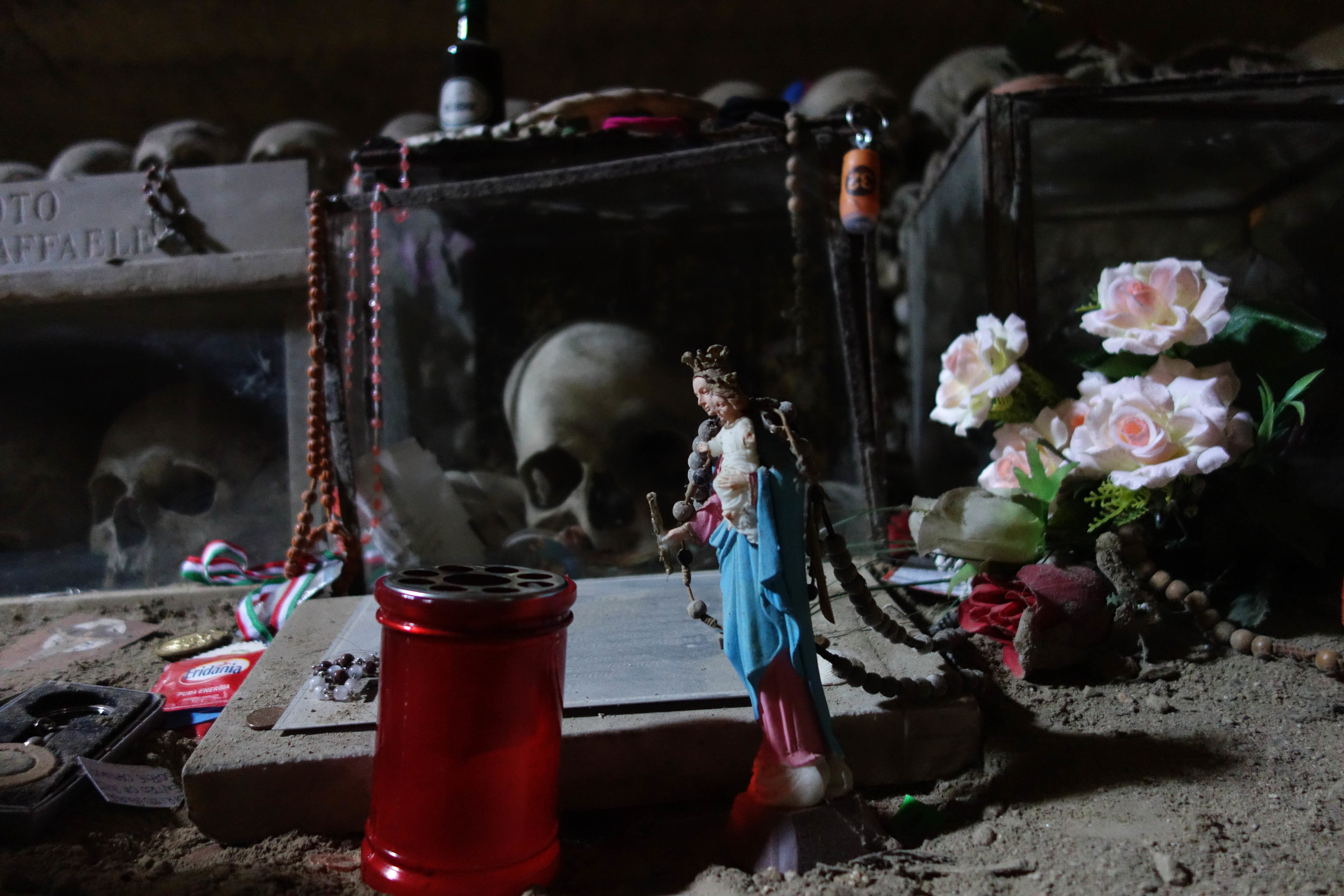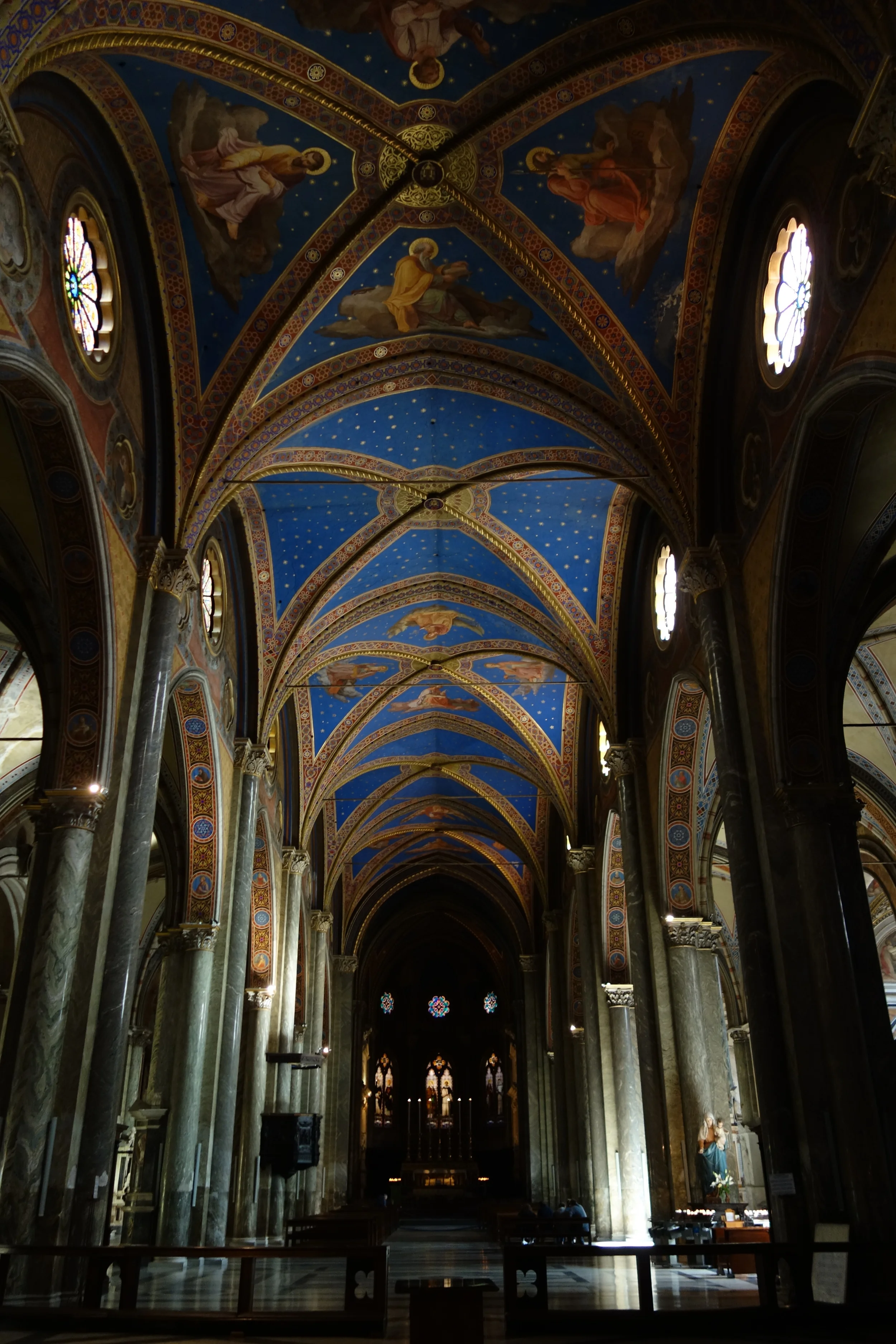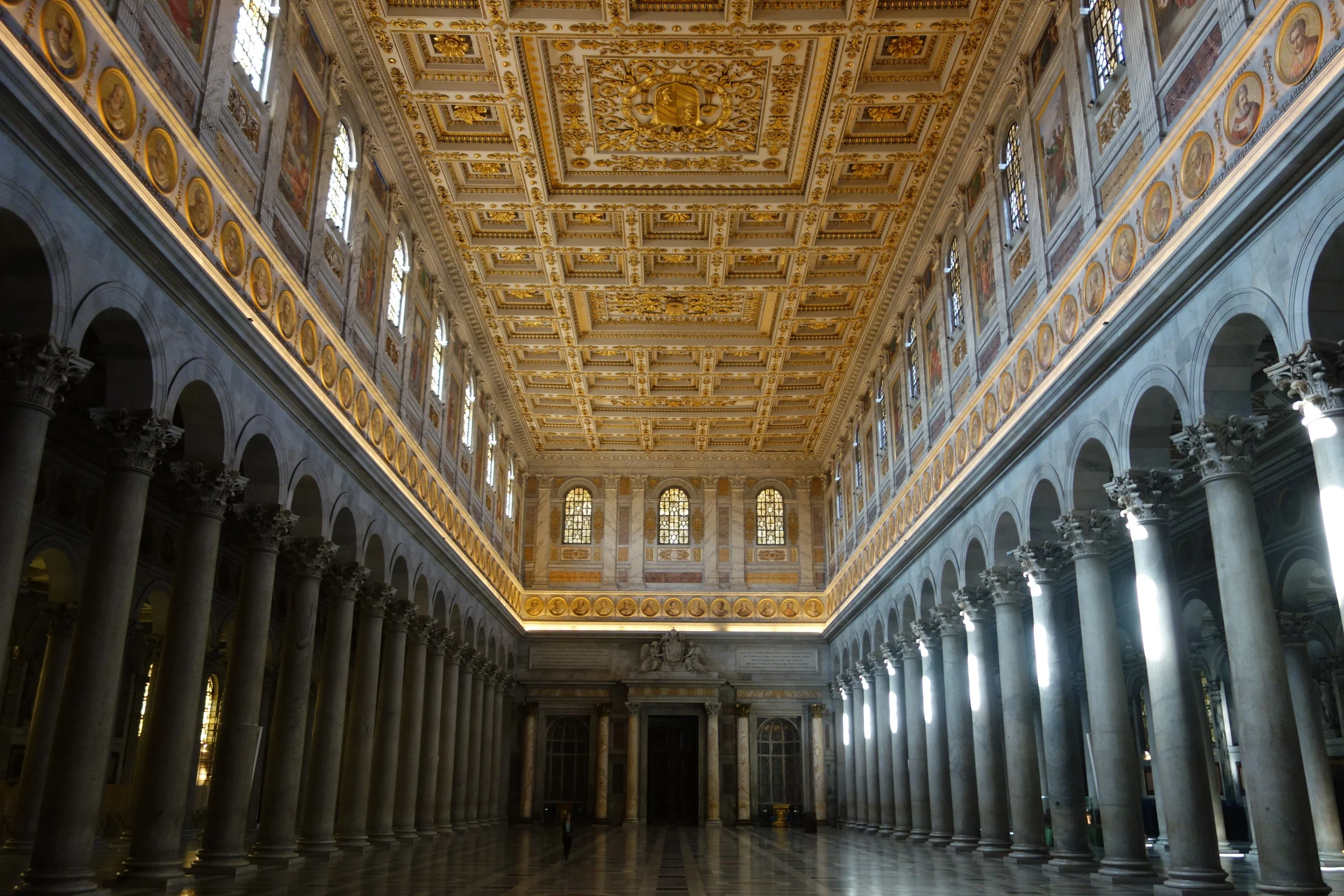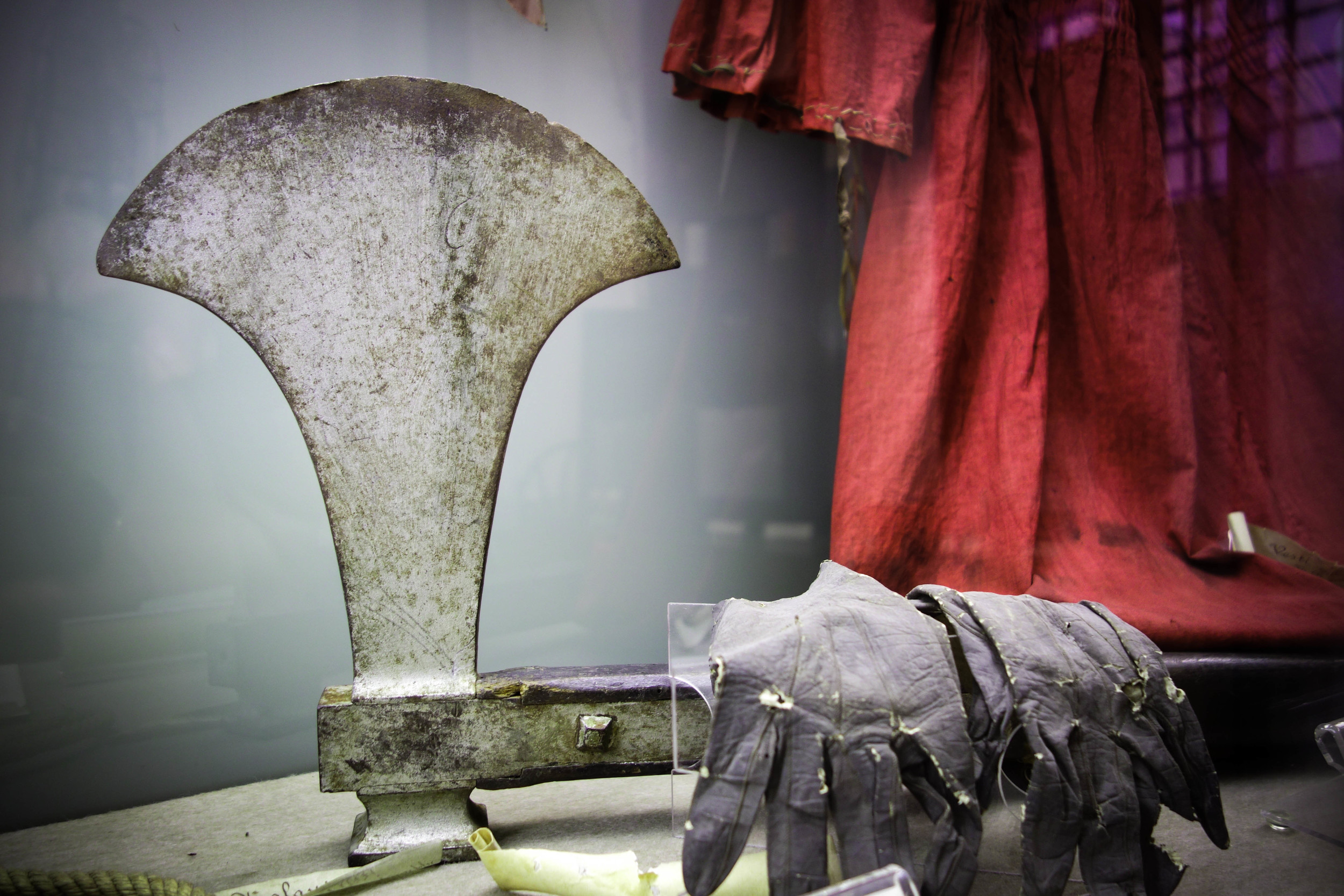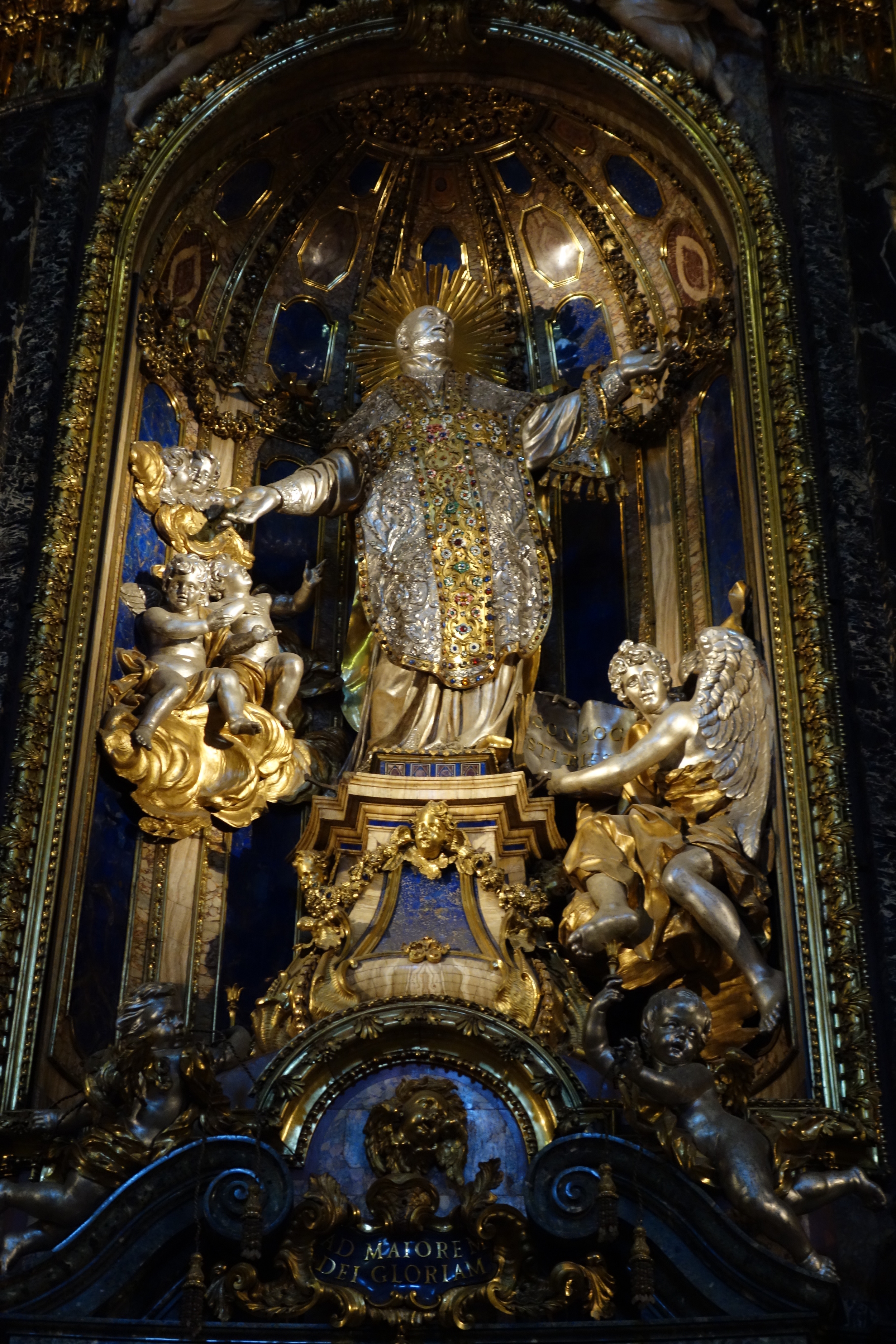Reach Out and Touch Faith
Originally published on Lapham's Quarterly Roundtable.
Traffic lights dot the streets of Naples like rhinestones. I’m not being romantic—I mean they’re shiny and worthless. Locals telegraph their unwillingness to stop on red with the internationally understood middle finger, which means tourists like me learn quickly that Neapolitan traffic isn’t ruled by lights or laws. It obeys the sea of motorbikes. Cars go when they go and stop to avoid vehicular manslaughter. Renting a car here wasn’t sensible, but it was the only way I could get to Bonito, where I had made an appointment to meet its most powerful and reclusive resident: a naked mummy named Zio Vincenzo Camuso, or, in English, Uncle Vincent.
Bonito is tiny. It’s not much more than twelve streets on top of a hill surrounded by Campania’s farmland. As soon as I turn off the dirt road onto the city’s cobblestones, a sign with a cross and arrow points me not in the direction of the parish church but toward Uncle Vincent’s shrine, a yellow stucco building that’s a little too big to be a mausoleum and a little too small to be an apartment. I borrow the key to the shrine from city hall and park across the street. I watch as two men in a garbage truck drive by: one makes the sign of the cross and the other tips his hat to the shrine’s iron door.
As soon as I’m inside, the reason for their reverence is clear. Uncle Vincent is known for granting miracles. Photos and gifts from grateful recipients are stuck to every wall and stacked in every corner. There are rosaries, electric candles, potted plants, and ribbons, and baby clothes and thank-you notes from women who asked for help in childbirth. There are hundreds of flat metal charms called ex votos left by people whose prayers to Uncle Vincent have been answered. Sometimes the charms represent the thing they asked for—a baby or a computer—but mostly they depict body parts that have been healed. On one wall a copper leg is pinned to a corkboard next to a picture of a smiling man with his leg in a cast. There are metal eyes, breasts, hands, guts, hearts (both the sacred and the anatomical variety), and even a paunchy belly. A photocopied page of local lore at the shrine describes how hands-on Uncle Vincent can be when he grants these medical miracles. Some people believe he operates on his devotees in their sleep, leaving them cured but with a telltale scar to prove that the work’s been done.
Ex votos, photograph, and notes at the shrine of Uncle Vincent. Photograph by Elizabeth Harper.
On the left side of the shrine is a marble niche containing the seated body of the man himself. The Plexiglas door between us has knee-high vents; I could kneel down and whisper my prayers to him if I wanted to. But I wonder if he could hear me—his ears are a little caved in. His skin is dusty brown and drapes over him like a limp paper bag, curling around whatever cartilage it finds. The bone on his chin is bare and the flesh on his cheeks sags so much it looks like he has a handlebar mustache. His ribcage peeks through his open sternum as if his skin were a shirt left casually unbuttoned. Combined with the flesh mustache, it gives him a 1970s look that I find kind of charming. He is conspicuously missing the tips of his toes. Thanks to the positioning of his hands in his lap, he is less conspicuously missing his penis, which was deemed immodest and amputated sometime before 1957, when its removal was mentioned in a letter from the archpriest of Bonito.
As an American, I find the sight of a corpse displayed like this a little shocking, but it isn’t so unusual. Catholic churches, particularly in Italy, often display the corpses of saints. In shrines like Uncle Vincent’s, I’ve seen skeletons in formalwear lying in Sleeping Beauty caskets, and gilded boxes containing holy hearts, tongues, heads, arms, toes, and almost any other body part imaginable. The reason is relic veneration, a type of prayer where people ask for a saint’s help in convincing God to answer their prayers. Because a mystical union is believed to exist between saints’ bodies on earth and their souls in heaven, the places where saints’ corpses (or at least parts of them) are kept become a kind of portal between heaven and earth. Plenty of churches are strewn with the holy dead.
According to the Catholic Church, saints (and their bodies) don’t actually have the power to grant miracles—only God can do that. But that isn’t reflected in the way relic veneration works in practice. Many Italian Catholics pray directly to the saints and rely on them to intervene based on their specialties. Some of the more common requests might sound familiar. If you’ve lost your keys, pray to Saint Anthony of Padua, patron saint of missing things. If you need to sell your house, pray to Saint Joseph the Worker and bury a statue of him in your yard. This is the tradition that also leads people to pray to Uncle Vincent.
Notes at the shrine of Uncle Vincent. Photograph by Elizabeth Harper.
Technically, the church rejects the idea of praying for direct intervention, but the clergy has a history of looking the other way to avoid alienating otherwise devout Catholics. In the gray area between folklore and orthodox Catholicism, these relationships with saints often become transactional: mortals promise prayers and offerings (such as ex votos) if the saints deliver what they need. But sometimes the prayers go unanswered. In America that’s when the faithful talk about “God’s plan,” but in southern Italy, they might just ask a different dead guy.
When a saint doesn’t respond at first, the petitioner may assume the saint is too busy. In that case, one option is to threaten the saint with replacement. (The citizens of Naples tried this in 1799 when they threw the bust of their formerly beloved patron, Saint Gennaro, into the sea after his dried blood miraculously liquefied in the presence of a French general and seemed to consent to the occupation of Naples. The citizens briefly replaced him with Saint Anthony, who proved ineffective against a volcanic eruption and was fired as well.) But if that doesn’t work, there’s another option that’s even more extraordinary. The petitioner may set her sights a little lower and direct her prayers to a soul in purgatory—a place where flawed souls on their way to heaven are purified in fire. The hope is that since the souls of these regular people are more plentiful and receive less attention than the saints, they will be happy to hear any prayer directed their way. They may respond even faster and be more likely to grant favors if the living also pray for a little refrisco for them—a temporary relief from the flames of purgatory that is supposed to feel like a cold drink on a hot day. It’s a perfectly logical solution: when the demand for Catholic souls in the afterlife is too high for heaven to accommodate, add to the supply by including souls in purgatory.
This is where Uncle Vincent is, spiritually speaking; people in Bonito generally believe his soul remains in purgatory. Yet the official doctrine of the Catholic Church says purgatory is only a temporary stop in the afterlife, one that souls usually try to hurry through. In orthodox Catholicism, people pray for the souls of people they know in purgatory in hopes of getting them into heaven faster; they never pray to them. In folk Catholicism, however, you don’t ask for favors and offer refrisco to the souls of people you know. Instead you pray to souls like Uncle Vincent, the purgatory lifer (or afterlifer).
In southern Italy, especially around Naples, there’s a persistent folk belief that if the names of the dead are forgotten, their souls can’t be prayed for and hurried through purgatory. These unlucky souls remain there forever, but it is believed they are particularly effective in answering prayers if contacted by the living—either through prayer or through the adoption and care of their anonymous remains. This is a helpful tenet in a region that has a lot of forgotten, nameless bodies heaped on top of one another after four hundred years of earthquakes, shellings, volcanic eruptions, floods, and plagues. Go into one of the caves around Mount Vesuvius and you’ll probably find a pile of potentially helpful new friends.
Vincenzo Camuso is one of these powerful but anonymous souls because Vincenzo Camuso probably isn’t Vincenzo Camuso at all. He was named long after he died, and there’s no record of where his name came from. No one is even sure when he died—it could have been the late 1600s or early 1700s based on a description of a confraternity robe his corpse used to wear. But he might have died as late as 1822, when a local court record mentions a Vincenzo Camuso who was charged with theft and general mayhem. Or maybe he was the Vincenzo Camuso from 1722 whose name appears in town records for making a payment on a vineyard. These theories assume that Vincenzo Camuso was his real name, but it could have been the name of the person who found his body or a name inscribed in a crypt that actually belonged to someone else.
What’s certain is that Vincenzo’s body is stuck in the seated position because Bonito’s Brotherhood of the Good Death was responsible for his burial. Members of this confraternity charitably cared for the town’s dead before undertaking was a secular profession. They were the ones who originally brought Vincenzo’s corpse to their crypt at the Oratory of Santa Maria Annunziata, where they placed him in a putridarium—a room where multiple corpses were left to rot on strainer seats until nothing but bone remained. The bones were supposed to be transferred to a final resting place after the decomposition process, but Uncle Vincent mummified instead—a curious but not uncommon occurrence, given the region’s arid climate—so he never made it that far.
Uncle Vincent, aka Vincenzo Camuso. Photographs by Elizabeth Harper.
The Brotherhood of the Good Death operated for hundreds of years in Bonito, which means the only clue their involvement offers is that Vincenzo must have died sometime before 1849—the latest date the putridarium was used in Bonito, before Napoleon’s public health codes took effect. The French were repulsed by the Italian tradition of leaving corpses to rot in church basements, leading Napoleon to issue the Edict of St. Cloud in 1804 and force churches to abandon their crypts. But the law wasn’t observed until 1849, when all bodies began to be sent to the cemetery just off the main road on the outskirts of town. The Bonitesi, like many other southern Italians, had been reluctant to give up the putridarium. It allowed for a longer relationship with the dead that mirrored Catholic ideas about the afterlife. The putridarium resembled purgatory: a nasty, liminal space for the purging of sin or flesh. The final resting place for the bones was a private niche or mass ossuary that resembled heaven: clean and permanent. But Uncle Vincent never rotted away and thus never rested in peace—an appropriate outcome for the remains of someone who wound up stuck in purgatory. After mummifying in the putridarium, he began a long posthumous career as human decoration.
In the twentieth century, long after Bonito’s putridarium was retired as a place for bodies to rot, the crypt at the Oratory of Santa Maria Annunziata kept a few mummies and bones around for ambience and to remind the congregation to pray for souls in purgatory. Such human remains had no special powers and were thought to be no different than the crypt’s terra-cotta sculptures of people in the flames of purgatory—just another piece of inspirational decor. During this period, Vincenzo Camuso sat wearing a confraternity robe in a wooden niche alongside a woman who had also mummified. They remained there until the earthquake of 1930, when the woman disintegrated and had to be buried. The quake denuded Uncle Vincent of his robe, but his body stayed seated in his niche.
It wasn’t until 1950 that Vincenzo became unusually popular. The congregation built a new marble-and-brick niche for him, located not in the crypt but upstairs, on the left side of the oratory. On the right they built a similar niche to house the relics of Saint Crescenzio, whose bones were encased in a wax effigy of the boy martyr, beheaded at the age of eleven. The pairing seemed to imply that Vincenzo, a mummified nobody, was equal to a martyred saint. Maybe that’s why rumors began to spread that Uncle Vincent could answer prayers more reliably than Saint Crescenzio. People who prayed in front of the saint’s relics began to report that Vincenzo’s mummy called to them, asking for oil to keep the lamps burning near his niche. By the following year, a rogue priest at the oratory was secretly selling postcards with Uncle Vincent’s picture.
The priest was taking a serious risk. Catholic dogma holds that souls cannot become trapped in purgatory, and the idea of purgatorial souls answering prayers is considered superstitious at best for a layperson and positively heretical for a priest. Nonetheless, a number of churches will be happy to sell you postcards of allegedly miracle-working bones still in their crypts. I bought a few at the gift shop for the church of Santa Maria del Purgatorio ad Arco in Naples, including one of a rhinestone-tiara-wearing skull named Lucia known for finding suitable husbands. These postcards ostensibly help pay for the churches’ preservation, but they also turn what used to be powerful relics into museum exhibits, things of the past that can now be seen only on a tour under a docent’s guidance. It’s hard to interact with the bones spiritually if they’re commodified for tourists. Though they seem to harken to a forbidden form of veneration, in fact they represent a crackdown on the southern Italian practice of worshipping forgotten souls in purgatory.
But in the 1950s devotees of Uncle Vincent treated his postcards like prayer cards and began thanking him for the favors they believed he was granting. At first, Vincenzo’s acolytes kept his oil lamps burning, but soon they had electric lighting installed in his niche. People left gold and silver jewelry, charms, candles, letters, money, and photographs. By May 1962 the local bishop warned that Vincenzo Camuso could be the center of an illicit cult. If the priests wouldn’t move him from the oratory, he would issue a bull and move him by force.
Ex votos at the shrine of Uncle Vincent. Photograph by Elizabeth Harper.
It never came to that. In August 1962, another earthquake hit Bonito. A number of sources claim that this destroyed the oratory where Uncle Vincent sat, but some people deny it, explaining that diocesan authorities ordered the destruction of the oratory despite minimal damage to the building. Given the bishop’s threat, it’s easy to guess why. Saint Crescenzio moved to the new parish church, but Uncle Vincent found another way to persevere. A group of Bonitesi who had immigrated to America paid for the reconstruction of a small part of his old oratory. This is the little shrine where Uncle Vincent sits today.
Despite all the friends and admirers he’s made over the years, Uncle Vincent has a well-known dark side that unnerves me a little when the two of us are alone. When he’s not healing people in the hospital, he seems to enjoy sending people there. Doubt him and he may beat you with a stick or a human bone or push you into a ravine, as he supposedly did to a mason who cursed him while working on the restoration of his shrine. Another supposed victim was the fascist mayor’s wife, who covered him with a sheet because she was ashamed of him. People say Uncle Vincent beat her to death in her sleep and then came for her young husband a year later. It’s a good story, but it’s easily disproved. The mayor in question would have to be Attilio Grieco. He died of a stroke at sixty-seven, and his wife didn’t die until twenty-three years afterward. Uncle Vincent seems like a particularly violent kind of saint, a revisionist capable of exorcising fascism and nonbelievers from the pages of Bonito’s history.
One might wonder if the Uncle Vincent phenomenon is simply a case of mass hysteria—an isolated town that has animated a corpse with little more than the power of collective imagination—but that wouldn’t explain his love of travel. A woman from Catanzaro, a town about five hours to the south, said she had never heard of Bonito until Uncle Vincent visited her in a dream in 1975. He introduced himself and asked her to pray for the salvation of mankind. Another local legend is that his spirit went to Venezuela in 1962, speaking in Bonitesi dialect through a medium at a séance. Uncle Vincent’s appearance at a séance seems appropriate: his democratic appeal, and that of other souls in purgatory, recalls the Spiritualist movement, which popularized the séance and was led by women who lacked access to power in traditional society and religion. In Uncle Vincent’s case, his power can be accessed by people who feel left out of the Catholic Church with its patriarchal and class-based power structure.
I pick up a few prayer cards printed with a midcentury photograph of Uncle Vincent and take the shrine’s key out of my pocket as I prepare to leave. Then I notice a second key on the ring. It is small, as if it belongs to a safe deposit box. The only other lock in the shrine opens the Plexiglas door that separates me and Vincenzo. Now I notice the photos and letters carefully arranged around his body and see the gold necklace that someone had placed in his hands, the thin chain wound around his fingers. I could open that last door, but to what exactly? A violent punishment? A divine favor? Or maybe access to a place where this world and the next seem a little closer. But I don’t need any special powers to get there. I just have to befriend the naked man on the other side. I don’t unlock Uncle Vincent’s door, but I feel a tiny stirring that asks me to keep his lights on as I leave, locking the door behind me.
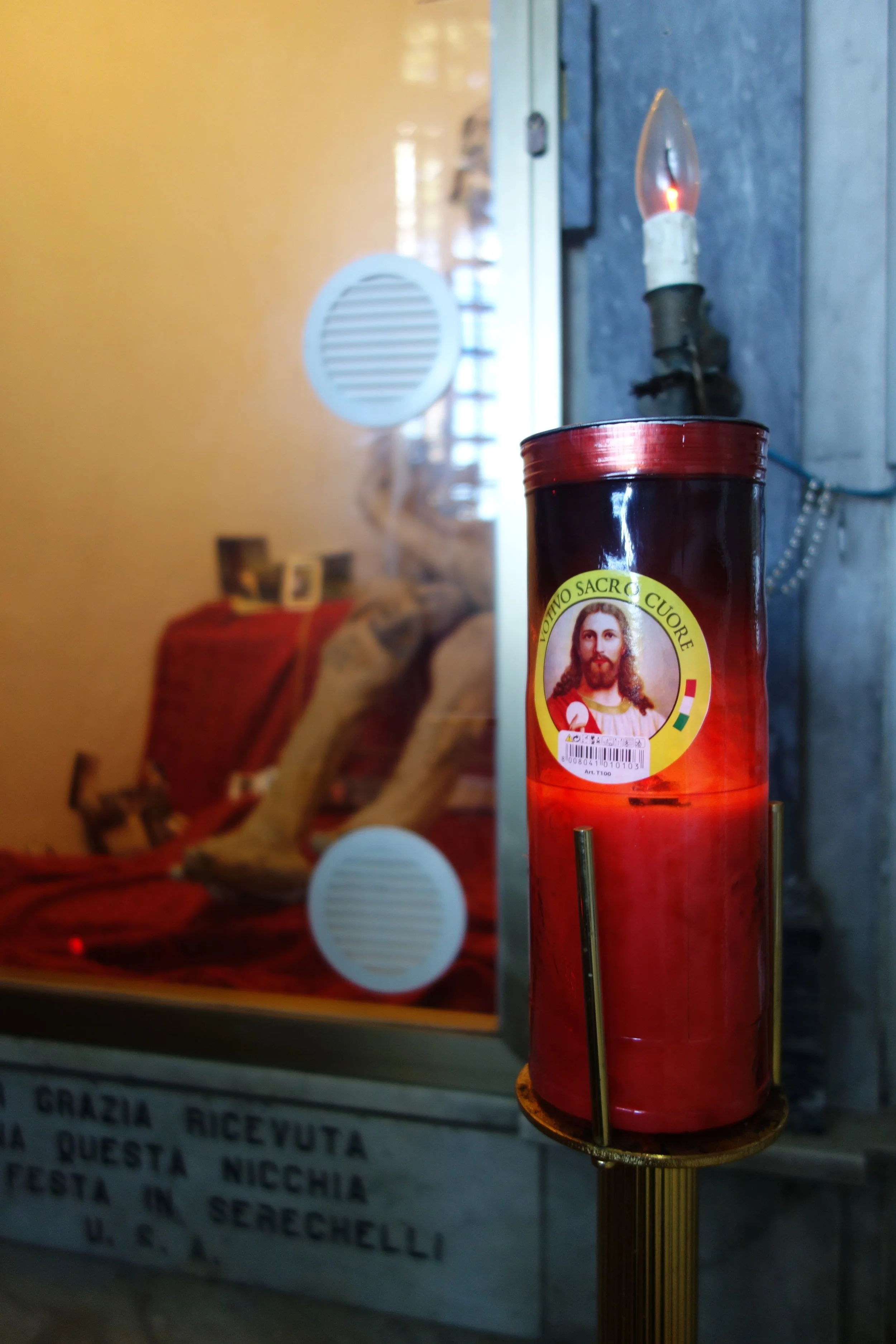

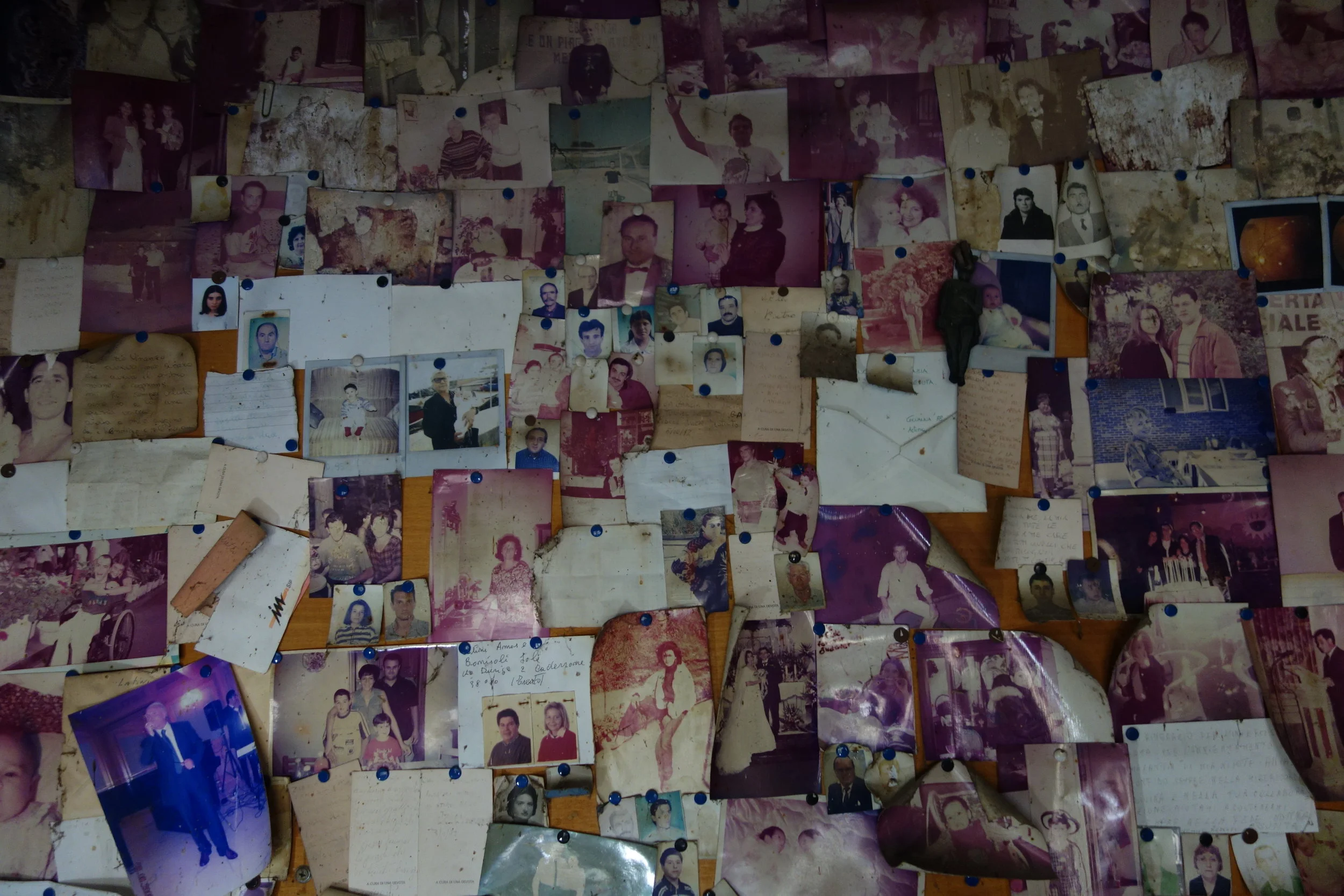
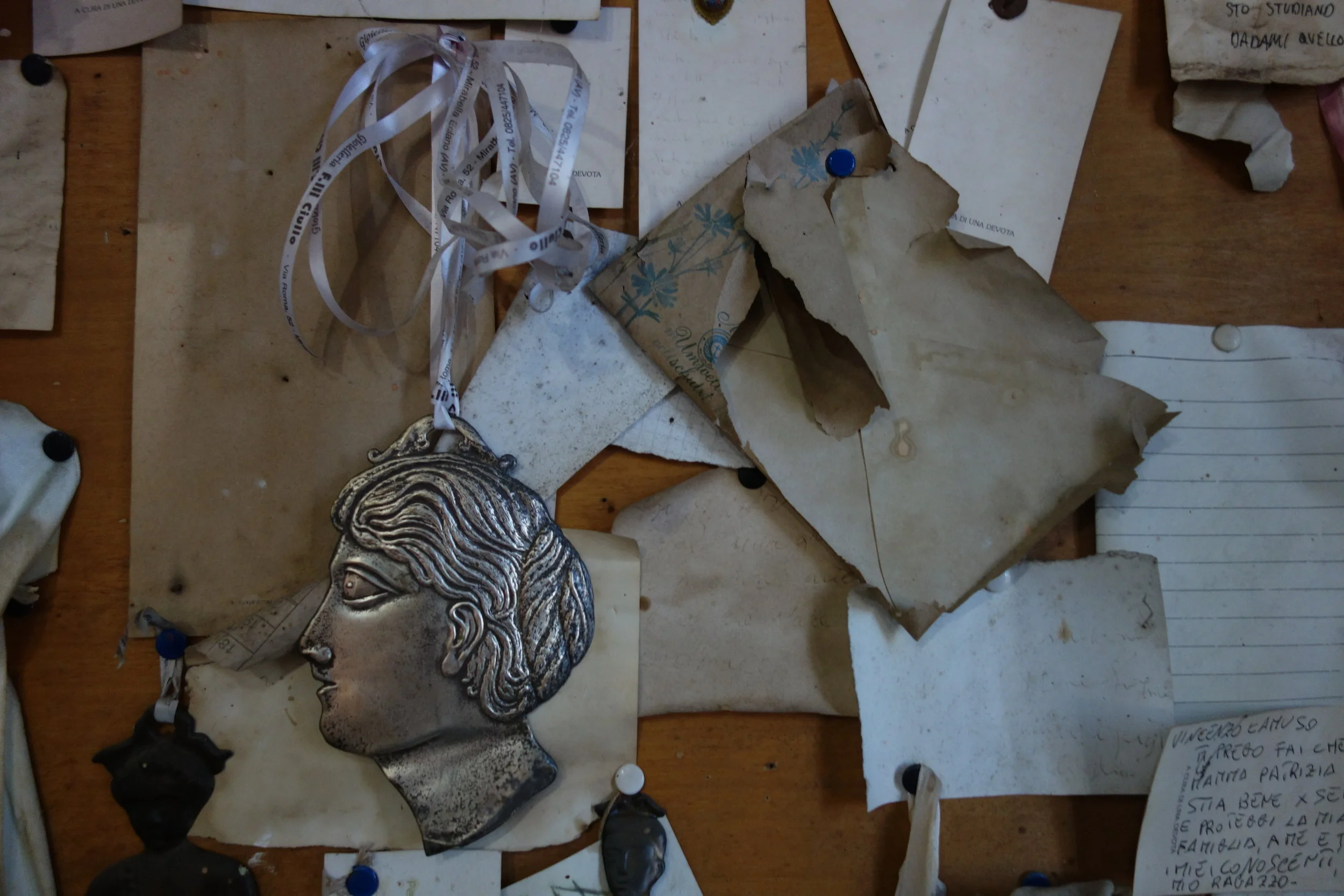
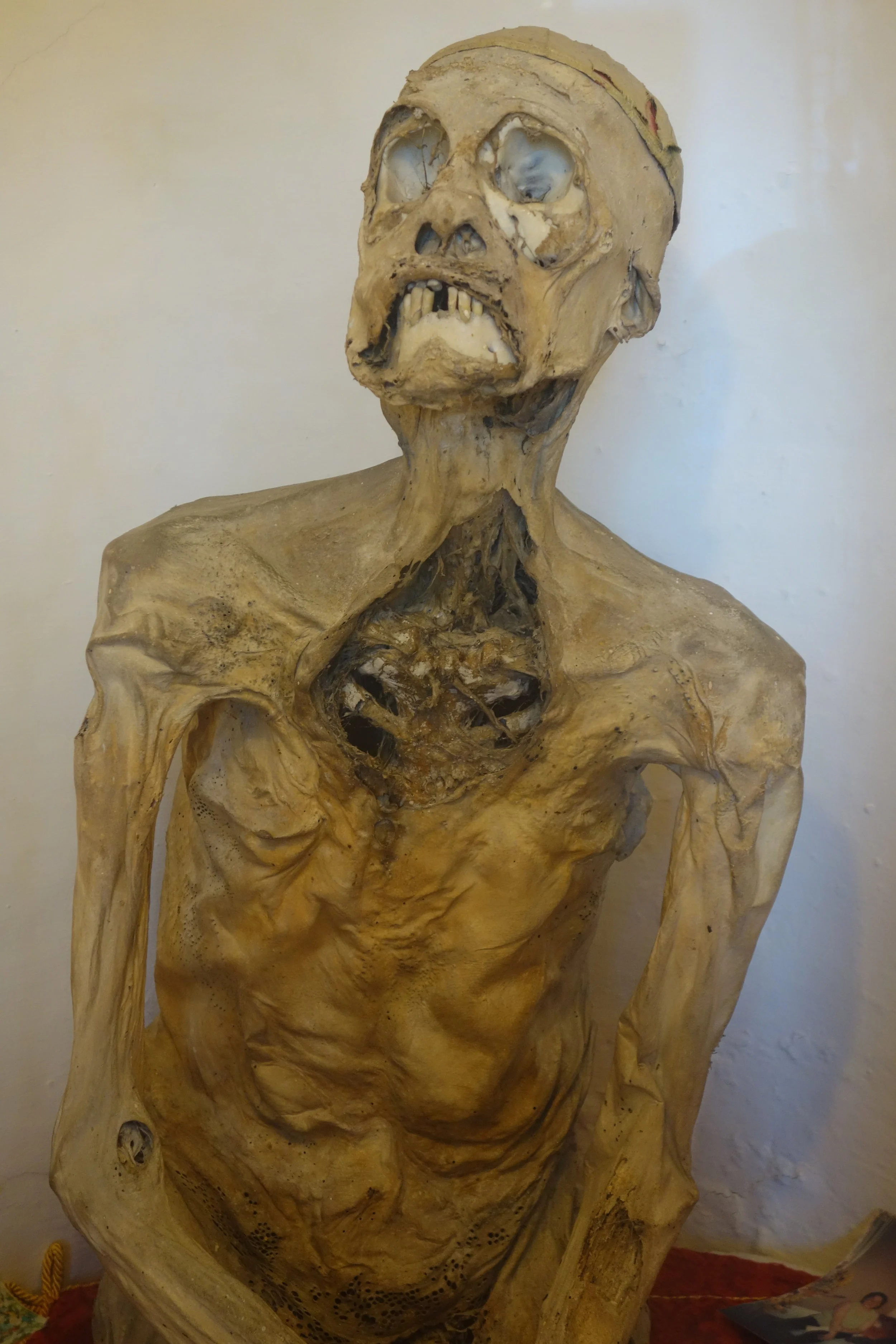
Rest In Beauty: an Interview with Swide Magazine
Originally published on Swide by Jonathan Bazzi.
An interview with creator of All the Saints You Should Know, a fascinating photographic project on the body-relics of Italian saints.
In Christianity, the body takes on a incredibly powerful value, the idea of ncarnation makes Christian culture particularly sensitive to the body as the site of representation of the sacred, of asceticism and spiritual transformation. The long tradition of saints and martyrs in particular frames this centrality of the body as a means of contact with the Divine. With martyrs, fasts, mystical ecstasy, and sacrifice of one's own life the Christian God marks the flesh and penetrates the physical dimension of the person by forming a set of signs and symbols that make Christianity one of the most visually and aesthetically powerful religions, even to the profane eye. The photographic work of Elizabeth Harper is situated in this evocative dimension, and consists of a photo blog that gathers together beautiful pictures of the seemingly uncorrupted bodies of several Italian saints, especially focusing on those stored in the churches of Rome. We chatted with her on the themes of her work, her artistic and literary influences and the meaning of the body in religion and art.
Let’s begin from the story of your project, the blog All the Saints You Should Know: when and how did you started? And what about your future, do you have any plans or dreams?
I began this project because I love art but going to art museums while I was traveling was unsatisfying. Too many collections felt like they could be moved from one white room into any other white room. That felt like the antithesis of travel so I started looking for places I could see art in situ—anywhere that mixed history and art. What I was really searching for was the old way of displaying art—in a kunstkammer or wunderkamer—someplace where art can be grouped with all the other types of wonder and beauty in the world without much thought about the boundaries between subjects or even accepted definitions of art or beauty. That type of collection is almost a type of theatre (maybe the most local and ephemeral art) because the collector’s point of view and personal story is on display in the collection and it’s unapologetically a kind of narrative about a very particular time and place. That is actually what I found in churches. There, art is juxtaposed with all of these other items: human bones, wax saints, icons, even taxidermy and scientific devices. Together, they’re all telling the fascinating story of the Church: the individual parish and the greater Catholic Church as a whole. But there often isn’t much information available and a lot of people either didn’t know these places exist or they’re confused or a little intimidated by coming into a church. I realized that since I had grown up Catholic and I had these interests, I had enough information to start teasing out the hidden stories of these objects and places. That’s really all I want to do—excavate stories and history from these collections and allow others to appreciate them through writing, lectures and photographs.
Who inspires you? Did you have any models, teachers or examples that helped you defining the direction of your work?
I’m continually inspired by the Romantic writers who came to Italy: Goethe, Chateaubriand, Stendhal, Byron and the Shelleys. I love reading their diaries and letters because they were foreigners here like me and I think they came to Italy to access the sublime. On one hand here you have the pinnacle of human achievement and beauty: the Renaissance masters, the Baroque architects. But there is also the persistent memento mori—the ruins of the Roman empire, seeing the old pinnacle of human achievement in decay. You see this in the very architecture of the churches too. The upstairs is triumphant—aesthetic perfection, and the downstairs is decay—the decay of bodies in the crypt, the decay of pagan temples demolished and built over, the disorder of history collapsed in on itself in the scavi. This kind of sublimity is hard to access in the US because we have the tendency to want only beauty and no horror.
Your parents are Italian: what's your relationship with Italy? Do you have any favourite places in our country?
My mother is Italian, her family is Sicilian. But my favorite place is Rome. It’s just so much of everything there. I think of Rome as a kind of memory theatre—a cabinet of miniatures that could possibly reveal all the knowledge in the world if someone were able seek it and put it together. I think about that often when I’m walking through the city. Sometimes I’ll step on a cobblestone or stone in a floor and feel it shift, it makes a hollow sound. I’m reminded that there’s always more that’s hiding underneath. So I dig deeper and try to see every little detail that leads to another story. I ask to have the doors unlocked… I try to put it all together and see what it can tell me about life today. My favorite place in Rome, that isn’t a church, is the Mario Praz house. If I could move in I would. I’ve drawn on so much of his work and his house embodies everything I love intellectually and aesthetically about Italy.
Your work is related with religion, church and saints. What kind of role does spirituality play in your life? Did you have any spiritual or mystical experience?
When I began writing about these things, I made a conscious decision not to address my spirituality in my writing. I prefer to keep it private, largely because I don’t want people to get hung up on if they agree with me about religion or not. I want the stories behind these objects to be enjoyable for everyone with any kind of interest in the Church— whether they're a nun or a secular academic. That being said, I’ll tell you that in my travels, I’ve often found myself deeply moved, sometimes to the point of lightheadedness or tears, but I’ll leave it open to interpretation whether that’s mystic ecstasy or Stendhal Syndrome.
The human body seems to be very important in your project: what's your vision of the body in art and visual culture? Did you study anatomy or drawing?
It is and part of that is inextricable from the Catholic Church. It’s fundamentally a corporeal religion but it’s paradoxical: the Word is made flesh but the flesh also harbors sin. I think that aspect is particularly accessible to women who still deal with the male gaze and are used to having judgments leveled at their bodies and how they present them. That’s one of the reasons that I’m particularly interested in female mystics from the Middle Ages. At first glance, they seem otherworldly but when I looked a little deeper I saw pieces of myself and seeds of my own insecurity and shame in these women. They’re at once so deeply human yet supernatural and their bodies are testament to that—from the scars of compulsive mortification of the flesh in their living bodies to the perfection of their incorrupt corpses in death. I find their struggles and solaces endlessly relatable. It’s funny you should mention drawing. I took four years of figure drawing classes in art school and really enjoyed it but I never connected it to this particular obsession of mine.
Do you have a favourite saint?
I love St. Catherine of Siena. She’s well known for her mysticism but her writing also reveals a smart and opinionated young woman with a sarcastic streak. She also battled with herself for absolute control and perfection of her body. Her life and relics along with the places they rest in Rome and Siena are perfect examples of the type of history and humanity I hope to uncover by looking around in churches.
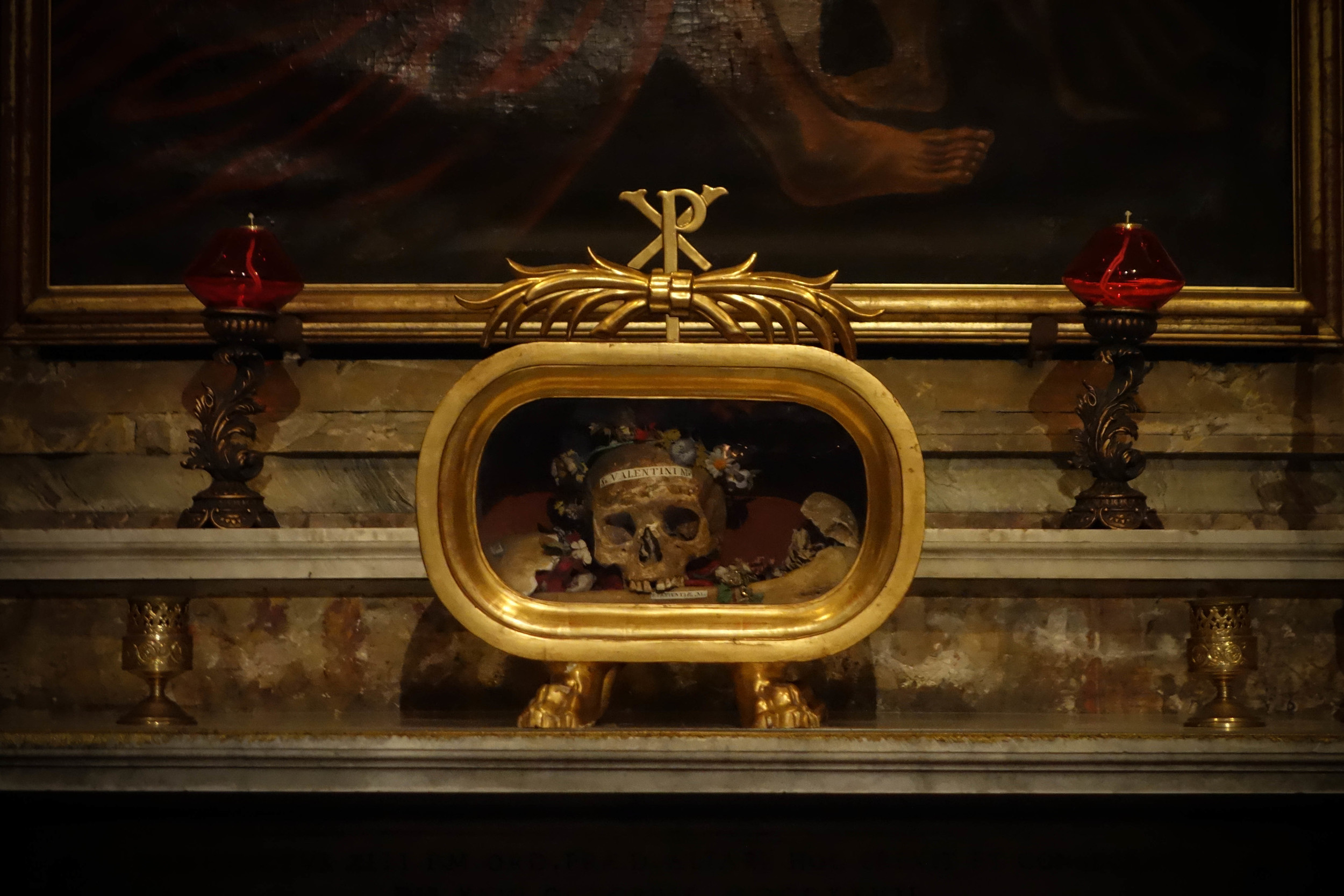
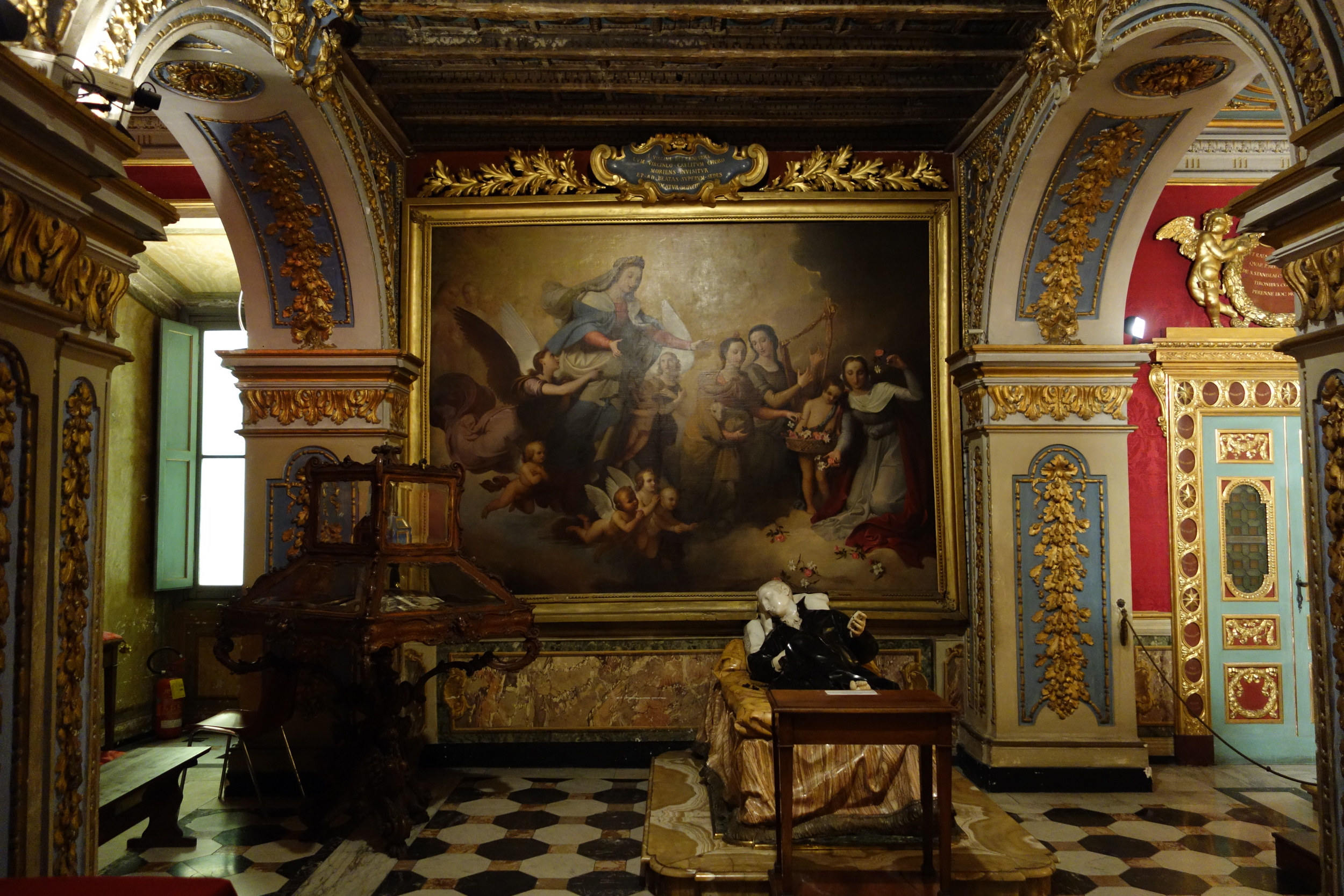
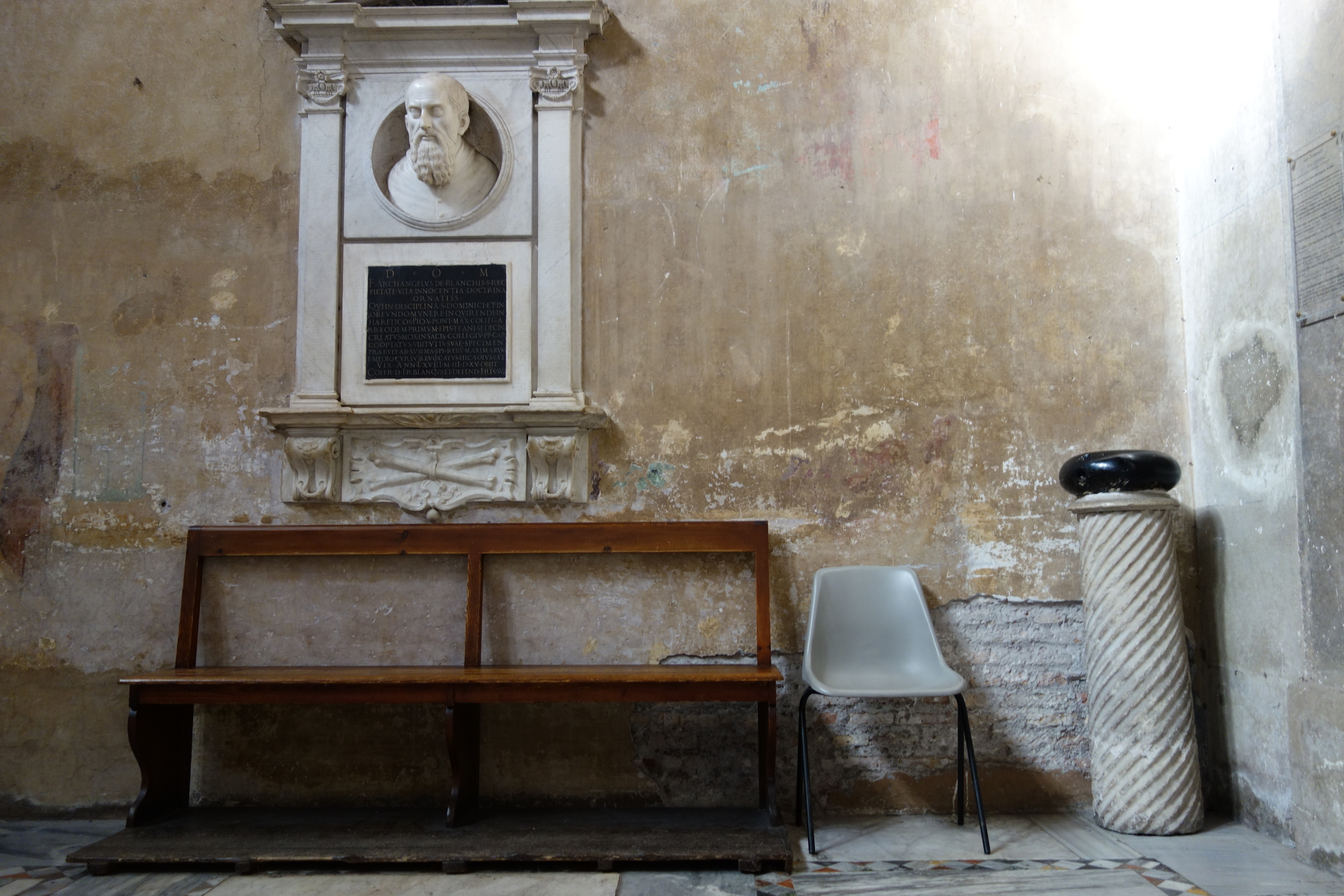

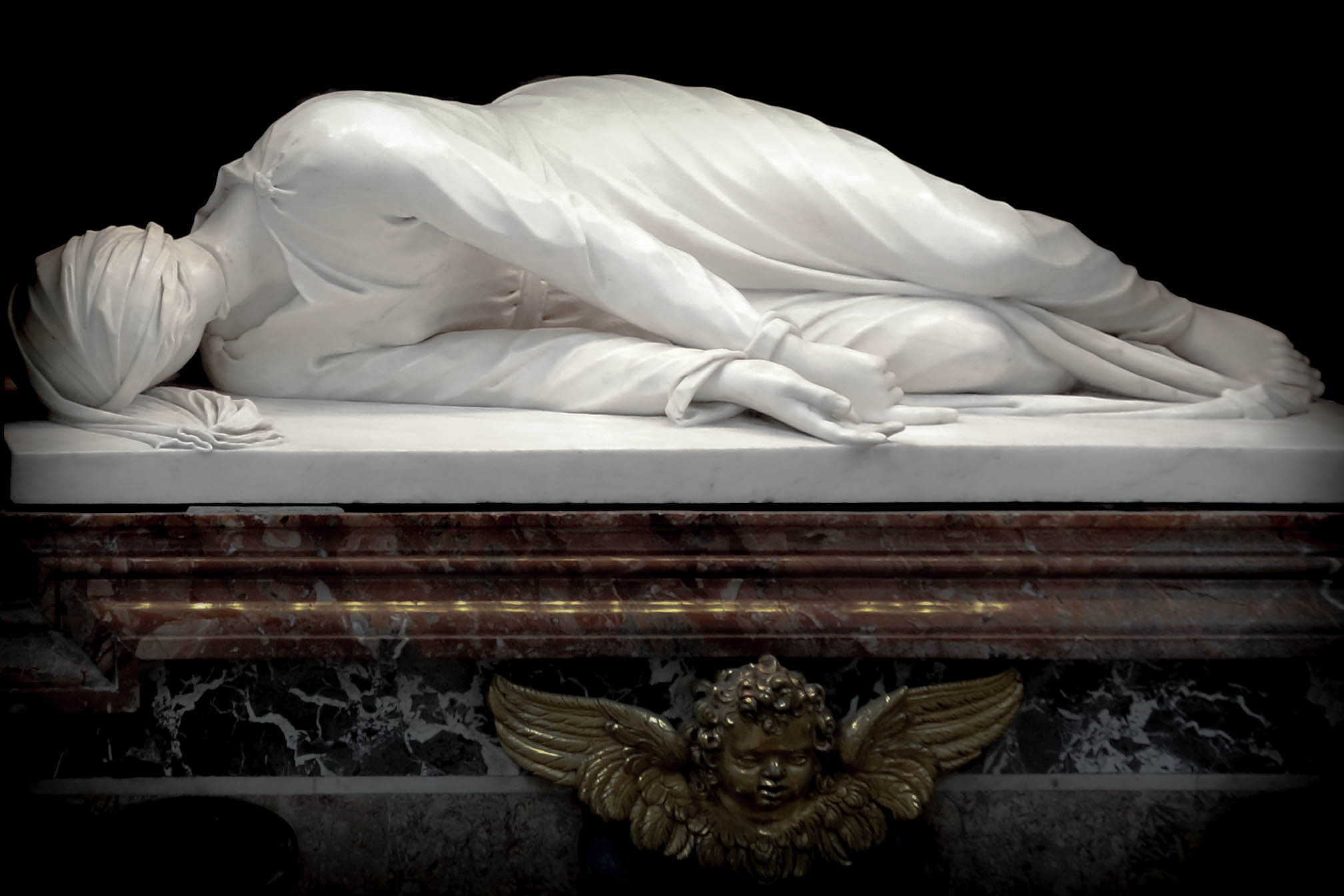
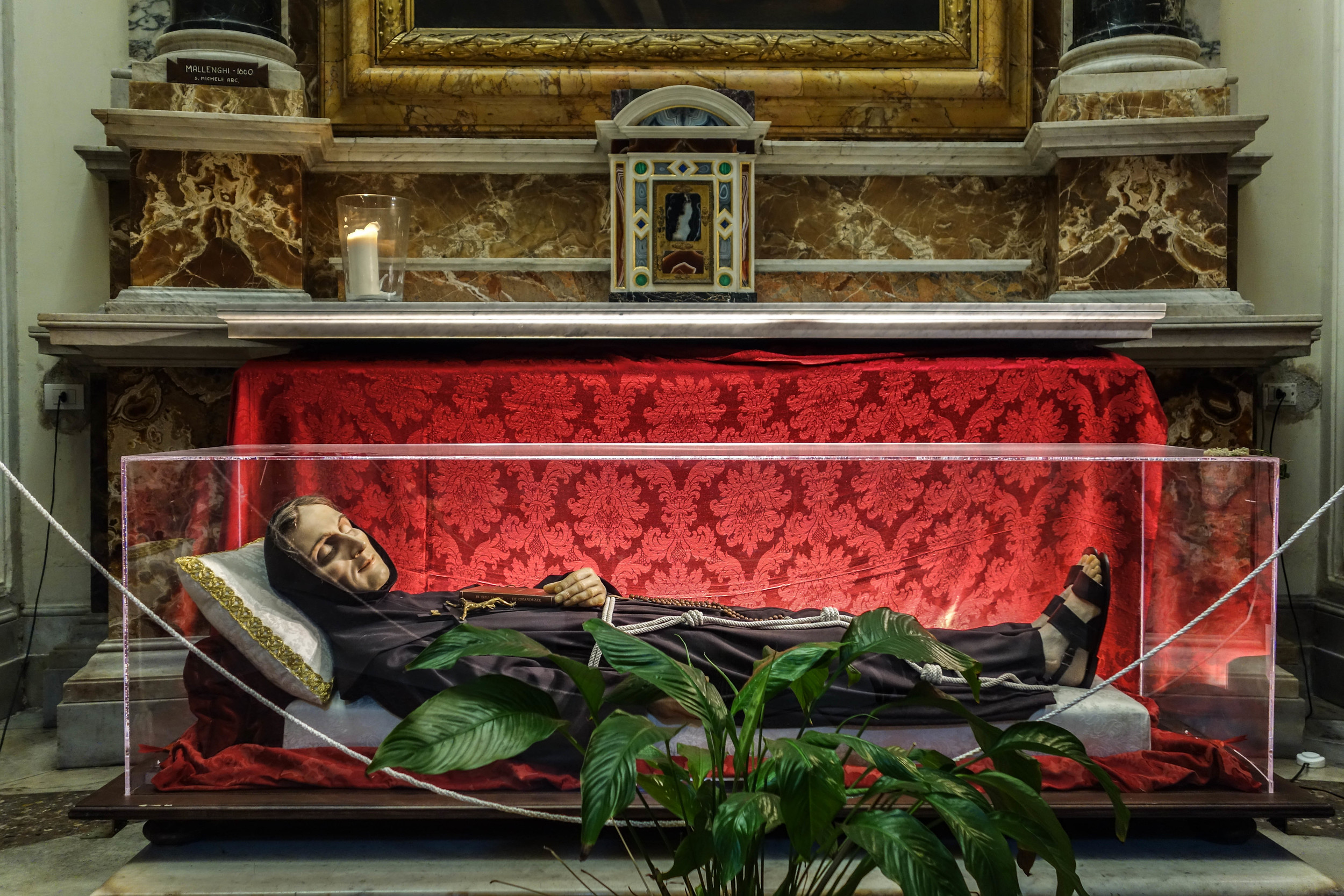
The Passion of Holy Week
Originally published on the LA Review of Books Blog.
As a child I used to condemn Jesus to death at the start of every Holy Week on Palm Sunday. Our priest would read from the gospel of John and he’d ask, lightly in character as Pontius Pilate, what we should do with the son of God. “Crucify him!” we’d say, with varying degrees of enthusiasm. That was what the script in our missalettes said, but I wished I could say something different. My religion teacher had taught me what happened to a crucified body — how the nails pierced the space between the wrist bones, how the body slumped forward from exhaustion, and how this probably pulled the arms from their sockets before asphyxiation. It upset me to see everyone at church, even the nuns, call for anyone’s death this way so at some point I decided to only mouth the words, failing to grasp the point of the spiritual exercise but sincerely trying to not kill Jesus again this year.
I think it was these early memories that led me to Zamora to see Spain’s oldest Holy Week celebration last year. It began two days before Palm Sunday and ended nine days later on Easter. Wikipedia advised me that unlike the celebrations in bigger cities, this one would be somber and contemplative. Here, participation went beyond a call and response at mass. About half of the residents of Zamora were members of one or more of the city’s 16 confraternities, some of which have over 1,000 members. For most of the year the confraternities function as loose social and charitable clubs but during Holy Week they mount 17 crucifixion-themed processions which recall their original purpose — a way for members to atone for their sins.
During the processions the confraternity members wore floor-length robes and capes. Some had a simple hoods but most included caperuzos, the iconic meter-high conical hats with fabric flaps that cover the wearer’s face. Let me get it out of the way: the confraternities looked a lot like the Klu Klux Klan. When they trudged through the city at night carrying torches and crosses, it didn’t look good to an American like myself. But the people of Zamora have been celebrating Holy Week the same way since 1279 and they aren’t going to change for a bunch of 19th-century racists. Originally, the caperuzos mimicked the hat used to shame criminals and symbolically shamed the wearer for their sins. The hoods protected their identity so no good deeds done as penance could be attributed to anyone.
The highlights of the Holy Week processions were the pasos — wooden parade floats carried on the shoulders of confraternity members with life-sized figures illustrating the Passion of Christ on top. Most were bloody: Jesus crowned with thorns, Jesus stripped and tortured, Jesus as a corpse with his body rendered in a light green. Everyone in Zamora found a spot with a good view of the pasos hours before the processions started. We amused ourselves by checking our phones or eating packets of sunflower seeds. The teenagers next to me texted and met up with their friends, planning for a night when curfews were suspended. At this point we were midway through the week so the festivities were nearly continuous with a midnight procession ending just as the five a.m. procession began.
I got a text from a friend who had been to Zamora while studying abroad. “How’s Holy Week?” she asked, “Is everyone still making out?”
“YES,” I replied.
Wikipedia didn’t alert me to this fact, but it was true. The processions that night would be a lot like the ones before. They were solemn and completely silent events except for a single drumbeat or a chanted funeral dirge. But as the night wore on, couples pulled each other closer as the temperature dropped. High school girls ditched their sweaters and compensated by getting closer to the boys, the more enterprising of whom had brought blankets, ostensibly for warmth but also good for shielding wayward hands from the eyes of the Virgin Mary. She floated by after midnight on her paso, cradling her dead son, escorted by hundreds of hooded men in black.
Anyone tempted to blame their less-than-reverential behavior on the fact that these kids were millennials or whatever the Spanish word is for “kids these days,” only had to look as far as the town square to see that a certain amount of fooling around wasn’t just tolerated but had somehow been a part of the experience here for a long time. Huge black and white photographs of Holy Weeks gone by were hung on the sides of the buildings, mostly highlighting how little had changed in Zamora except for fashion. In one of them, a girl straddled a boy’s lap. Their faces were buried in a deep kiss and they pulled each other closer by the waist and the neck. They seemed oblivious to the camera and even less aware of the life-sized Jesus directly behind them, dragging his cross to Golgotha.
This picture of eroticism in the face of an execution emphasized a paradox that I had noticed all week. Wherever there’s death, there’s decadence. It was threaded through every aspect Holy Week, though often in less salacious ways. For the whole week in Zamora, no one seemed interested in work except for the people selling food, drinks, candy, and cigarettes, which everyone — including the sellers — had bottomless appetites for. But the specter of death that marched by us tainted even these simple pleasures. Their consumption was anxious, more in line with the excesses of a last meal than the celebration of a feast. It was as if we collectively wondered, if even God can die a painful and humiliating death, then what might be in store for all of us? What might our fellow crowd-members say if it was our fate that was in their hands? Or more chillingly, I asked myself what I was capable of. Me, the one who said “crucify him.” We all knew that the apex of our own cruelty, and the cruelty of our fellow men, was our own death. So while the human sacrifice we demanded in church played out in the streets, we indulged like dead men walking in tapas and wine bars that stayed open until dawn. We reached out to each other for what seemed like it might be one last time.
The connection between decadence and death has long and sordid history. But I don’t think it’s been better examined or explained than by the French philosopher and sometimes dirty-book-writer, Georges Bataille. According to Bataille, a life that’s spent dedicated to productive activities — the kind of everyday work left undone during Holy Week — is a life that’s obsessed with its own legacy which can live beyond a human lifespan. This is a kind of immortality and a life that’s dedicated to immortality is actually obsessed with the avoidance of death. This is a life that’s denied. So according to George, to live is to practice dying, or to die just a little. There’s a reason the French called an orgasm la petit mort.
In Bataille’s mind, the kind of sex that allows you to die a little (which is not the kind intended to make babies to carry on your lineage) is an act of violence. It violates our borders. It’s a loss of control — a moment when people’s innermost places react without the consent of the brain, puppeted by another. It’s horrifying and embarrassing, but we do it because for a moment, we’re not alone. When we obliterate the boundaries of our body and the parts of ourselves we call our identity, we find the ability to connect to something greater than petty self-preservation. In the case of sex, we connect to another human being. But sex is only practice for the more violent obliteration to come. We lose control of our bodies again when we die and decompose. At that time, we’ll be stripped not just of our clothes but our flesh. It’s more horrifying and more humiliating, but by doing so, we’ll finally become one with the earth and with the history of the world, something much bigger than an infinite number of partners.
I’m sure I was thinking about death when I started talking to a confraternity member outside the church in the main square. He was still wearing his robe and carrying his red cone hat from his procession a few hours earlier. We talked until the midnight procession went by and then ducked into a bar around one a.m., though the procession would still wind through the city until sometime after three. The place was full of 20 and 30-somethings back in town for Holy Week and the scene reminded me of the bar near my high school on the night before Thanksgiving. Everyone was both a local and a tourist. Miniature reunions happened whenever someone walked through the door and no one was too eager to get back to their parent’s house.
The confraternity member and I got a drink and he told me about the subtleties of all the different processions while I took notes. According to him: the group with the black velvet robes were snobs. The ones with the hoods that look like sacks instead of cones were working class and a lot more fun (he was a socialist, so I took his characterizations with a grain of salt). All the guys who carried the pasos in his confraternity were year-round drinking buddies. There was no rehearsal for the parades. Sometimes people decided to march barefoot, not because they were particularly pious, but because it was actually easier than walking on cobblestones in dress shoes and it’s the kind of thing that would make your mother proud.
At some point after our first drink, I stopped taking notes. After our second drink we hated the same things, and were eviscerating Hemingway for being a jackass in Spain. After our third we were in full Hemingway mode: pressed against a medieval city wall and engaged in heavy gonzo cultural anthropology.
Eventually I rediscovered my bearings and my boundaries and we parted, going our separate ways for the night or at least whatever was left of it. I snuck past another couple on a park bench who seemed to have no intention of doing the same. I walked through Zamora as the black sky turned navy and passed a group of kids in a parking lot. They were blasting Ed Sheeran and still drinking red wine and Pepsi out of plastic Solo cups. They were dazed, oblivious to the impending day but in that moment I couldn’t muster judgment — I had obliterated myself in only a slightly different way and anyway I was pretty sure my skirt was on backwards.
I went back to my room and slept through the five a.m. procession, barely pulling myself together for the one at nine. He and I didn’t see each other again and processions wore on, each a little more like the next until cannons fired on Easter morning, shaking everyone, including me, out of their grasping, melancholy haze. Folk bands played in the streets and order was restored to our briefly apocalyptic world. Our transgressions were set right again: life became productive, we returned to polite self-sufficiency, and even the God we killed rose from the dead and forgave us all. Of course we had known this would happen. We do it every year because we need a little death in order to stay alive.

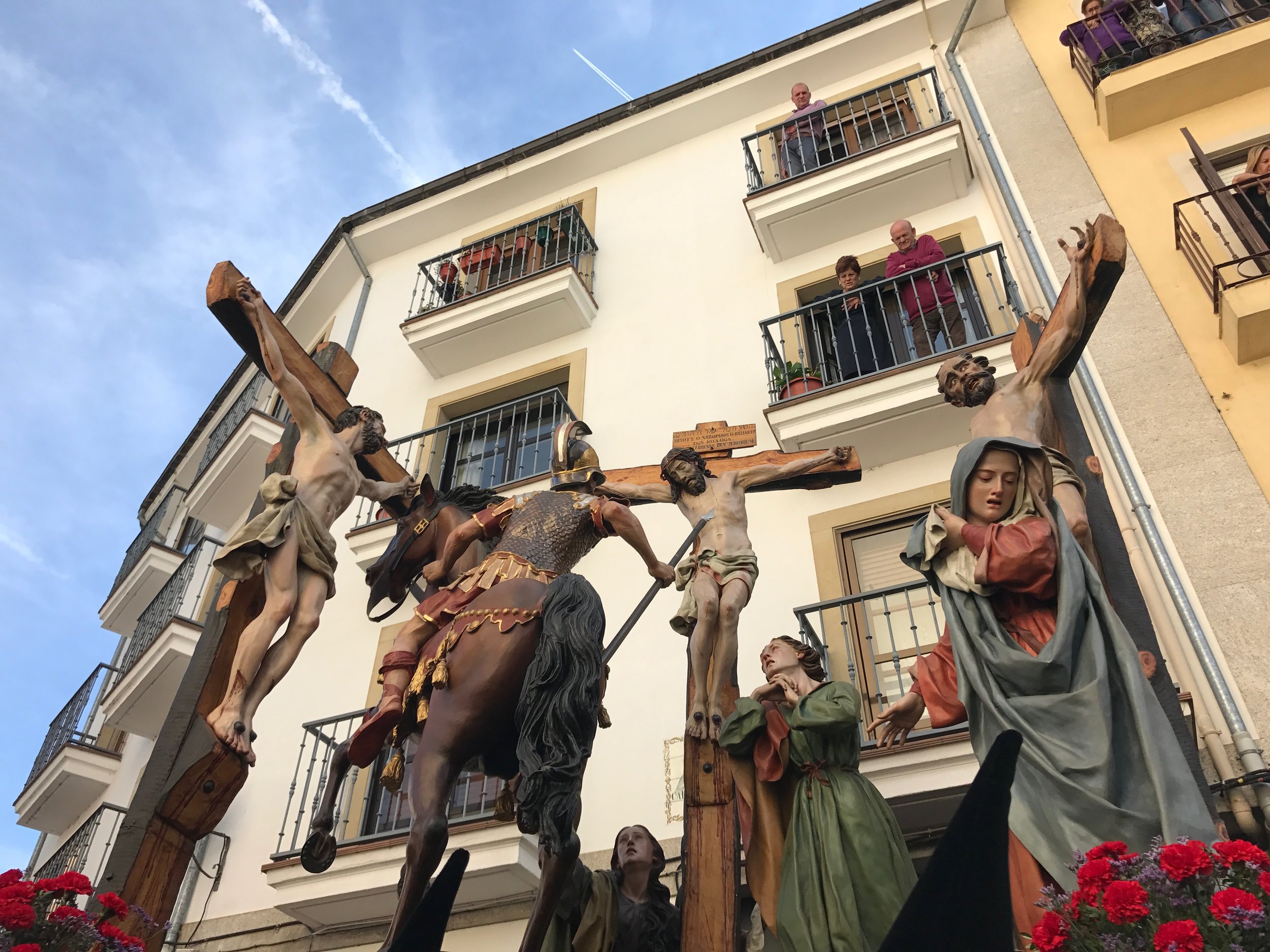

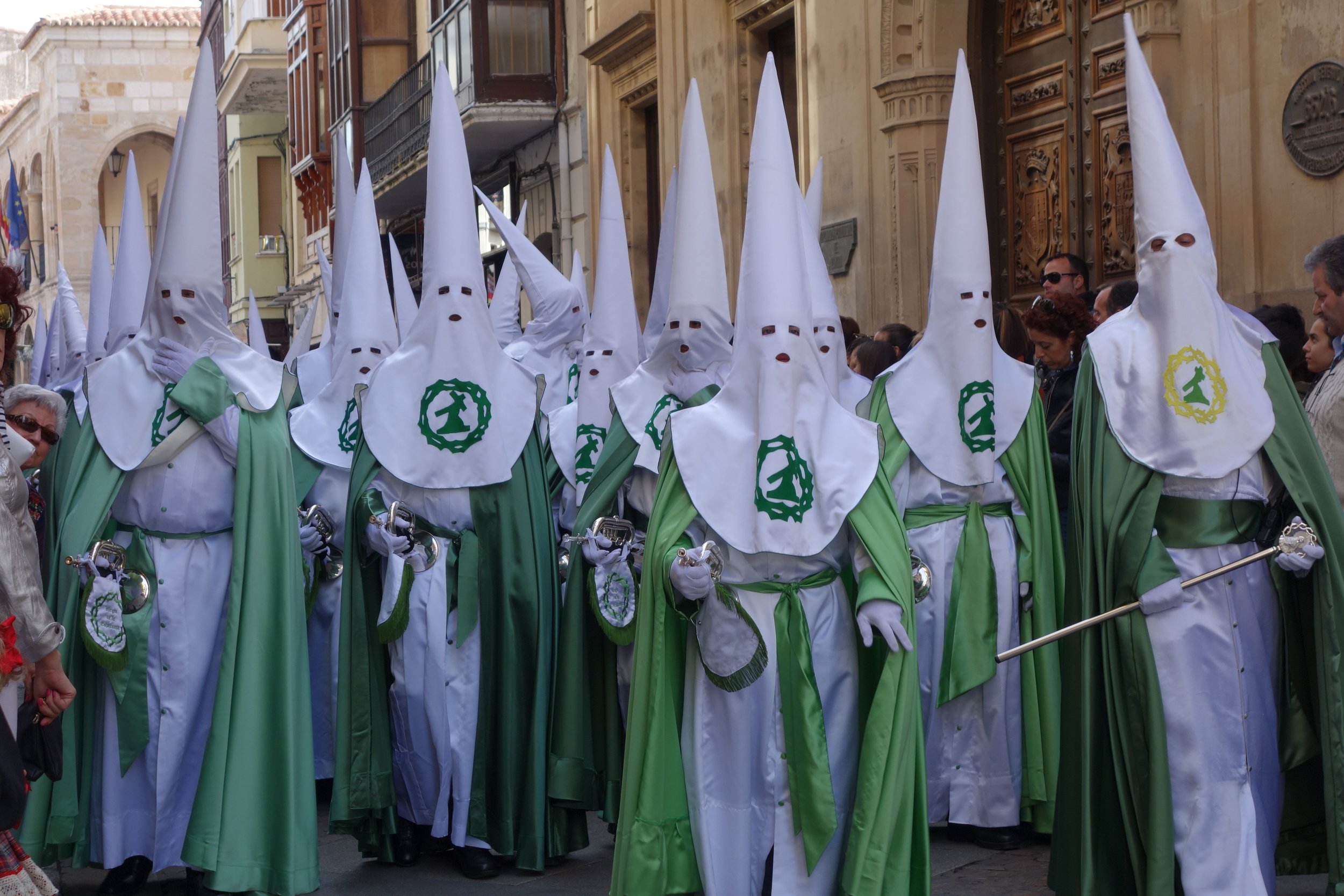

The Days of the Dead: A Dispatch from Rome
Originally published on the Morbid Anatomy Museum blog.
Halloween in Rome is a quiet night even when it falls on an unusually warm Saturday like it did this year. A handful of kids trick-or-treated at the shops around the Campo de’ Fiori dressed as some pastiche of a corpse, a vampire or a witch and the study abroad students drank in the same bars they always do, but this time with light-up devil horns or a cape. I took a midnight stroll to the Ponte Sant’Angelo to see if the ghosts of any criminals that were executed there from the 12th to 19th century felt like celebrating, but it seemed they had no use for an imported American holiday. I wasn’t really disappointed though because on November 1st, as Americans woke to stare Christmas in its gaping maw, Italy began a two-day Catholic holiday devoted to remembering the dead.
November first was All Saints’ Day, a day devoted to the holy dead—the saints and martyrs in heaven. This is a holy day of obligation, meaning practicing Catholics are obligated to attend mass, so a lot of shops and restaurants were closed. But one of my favorite bakeries was open so I stopped and bought some almond cookies made especially for the holiday called “beans of the dead”.
Beans in Italy have a long and curious history as a food that harbors symbols of both life and death, in the form of supposed dead souls trapped in the bean and in the way beans swell with life like pregnant women. Beans, beans, the paradoxical fruit… Writers Sarah Troop and Colin Dickey have both written fascinating pieces about them and you should absolutely read both of their pieces.Fortified by my bean-cookies and a double espresso (the Italian breakfast of champions) I set out on a walk through the city until I got to the Campo Verano cemetery, just outside of the Aurelian walls that surround the historic center of Rome. This is where Pope Francis was saying mass today. The cemetery was dressed for the occasion—relatives had spruced up graves with pots of mums and votive candles.
A growing crowd trickled in and I figured I would try to find a decent place to stand on the outskirts and maybe I could catch a glimpse of the pope. I was unsuccessful. Instead, I got caught in a group of gung-ho nuns who were going to see il Papa come hell or high water (though either scenario seemed unlikely). When Vatican security officers began letting a few people into the gated seating area, it became clear I had two options: go with the flow or die in a nun stampede.
I chose to live and wound up with a great seat for the papal mass. The sun set as incense wound around the tombs and I was thankful to survive… for another day anyway.
That night, I chatted with a friend who jokingly said that the only way a papal mass in a cemetery could be more “me” is if they dug up the graves and sat the corpses around me. I replied in all seriousness, “No, that’s tomorrow night.”
The day after All Saints’ Day is All Souls’ Day, a holiday devoted to all the other Catholic dead—the regular Joes and Giuseppes who might be in heaven or who could be working their way though the fires of Purgatory where souls are purged of sin before being admitted to heaven. This holiday is somewhat less important in the eyes of the Church, but what it lacks in official holy obligations, it makes up for in popular devotion.
Around 4pm, as the starlings began their ritual of ominously swarming overhead, I went to Holy Mary of Prayer and Death, an oratory on Via Giulia that you can’t miss thanks to the huge, laughing skulls and skeletons that decorate the façade year-round. Any other time, you’re likely to find the doors locked but today, a nun kept a side door open and welcomed people inside. Drop a few coins in her basket and she’ll be your own personal Charon who takes you to the land of the dead. She escorted me down a narrow hallway lined with tombstones to what remains of the oratory’s crypt and cemetery.
The previous day’s cemetery had the pomp and formality you would expect from a papal mass. The elegant, 19th century tombs were built when Napoleon issued his public health codes which mandated that burials take place outside the city walls, under sanitary, modern conditions. These laws were put into place to obliterate macabre little ad hoc crypts like this one. Here, vertebrae were made into rickety electric chandeliers. Skulls were mounted on the wall to form a cross, or stacked in cabinets or piled onto the altar. A stray ribcage slumped in a corner. I recognized him from a previous visit, when he used to have a skull and had been propped up on a rod like a human pogo stick. Time keeps on slippin’, I suppose.
I’ve done a bit of research on this oratory so I decided to offer a little context to a group of confused and slightly unsettled folks from Boston who came down. They had just been walking down the street and came in because the nice nun told them to. I explained that this confraternity used to walk out to the countryside to collect the bodies of dead migrant workers from the fields. They gave them a Catholic burial in the crypt here, but a Catholic burial doesn’t actually require you to stay buried. So the bodies were eventually dug up and used as decoration or better yet, as actors in the theatrical scenes the confraternity staged for All Souls’ Day in the 18th and 19th centuries. If you want my full tour, you can read this previous guest blog I wrote which includes old photos of what the crypt looked like in its heyday.
The nun on door-duty seemed to enjoy my little tour because she sent a few more people to talk to me and by this time I was leaning into my fantasy job as Italian crypt-docent. (Please let me know if you hear of an opening in this field.) I would’ve stayed but I looked at the time and realized I had to run. There was no way I was going to be late for my next visit.
I hoofed it over to St. John Calibyte on Tiber Island for a very special once-a-year treat. On the night of November 2nd, and only then, you can join a candle-lit procession for the dead and see the Sacconi Rossi crypt.
The Sacconi Rossi were a confraternity similar to the one at Holy Mary of Prayer and Death, but they worked inside the city limits, picking up the bodies of people who died on the streets and fishing poor souls out of the Tiber. They offered these bodies a similar type of temporary burial followed by an eternity as crypt decoration.
Sacconi Rossi is a nickname and it literally means “red sacks” because they wore bright red robes. Their official name is “Devotees of the Brotherhood of Jesus Crucified at Calvary and Holy Mary of Sorrows” so you can see why they needed a nickname. They don’t really exist as an organization anymore but every year for All Souls’ Day, people from the parish of Santa Maria dell’Orto don the red sacks and honor the unknown and forgotten dead. After a mass, the priest and the red-robed parishioners led a candlelit procession down to the banks of the Tiber. There, the priest threw a wreath of white flowers into the river to honor all the unknown people who died. Then the procession went back up to the piazza were the crypt was unlocked for its annual blessing and visit.
In this crypt, the bodies were so old that the smaller bones had all crumbled into dust. What remained was mostly toothless, jawless skulls stacked on tibae and femora. The only whole-ish skeleton was missing his feet and wore the red robe of the confraternity. He was splayed out on the ground between two pews, inviting everyone to take a seat and ponder him. As David Sedaris says in his essay, Memento Mori, “The skeleton has a much more limited vocabulary, and says only one thing: ‘You are going to die.”
A cloud of incense filled the crowded rooms of the Sacconi Rossi crypt and dozens more red votive candles burned as the priest sprinkled holy water on the bones. A few people joked under their breath that it was so hot that it was a shame that only the dead were getting sprinkled. But that’s the way it is. This is their day. Every other day is for the living.

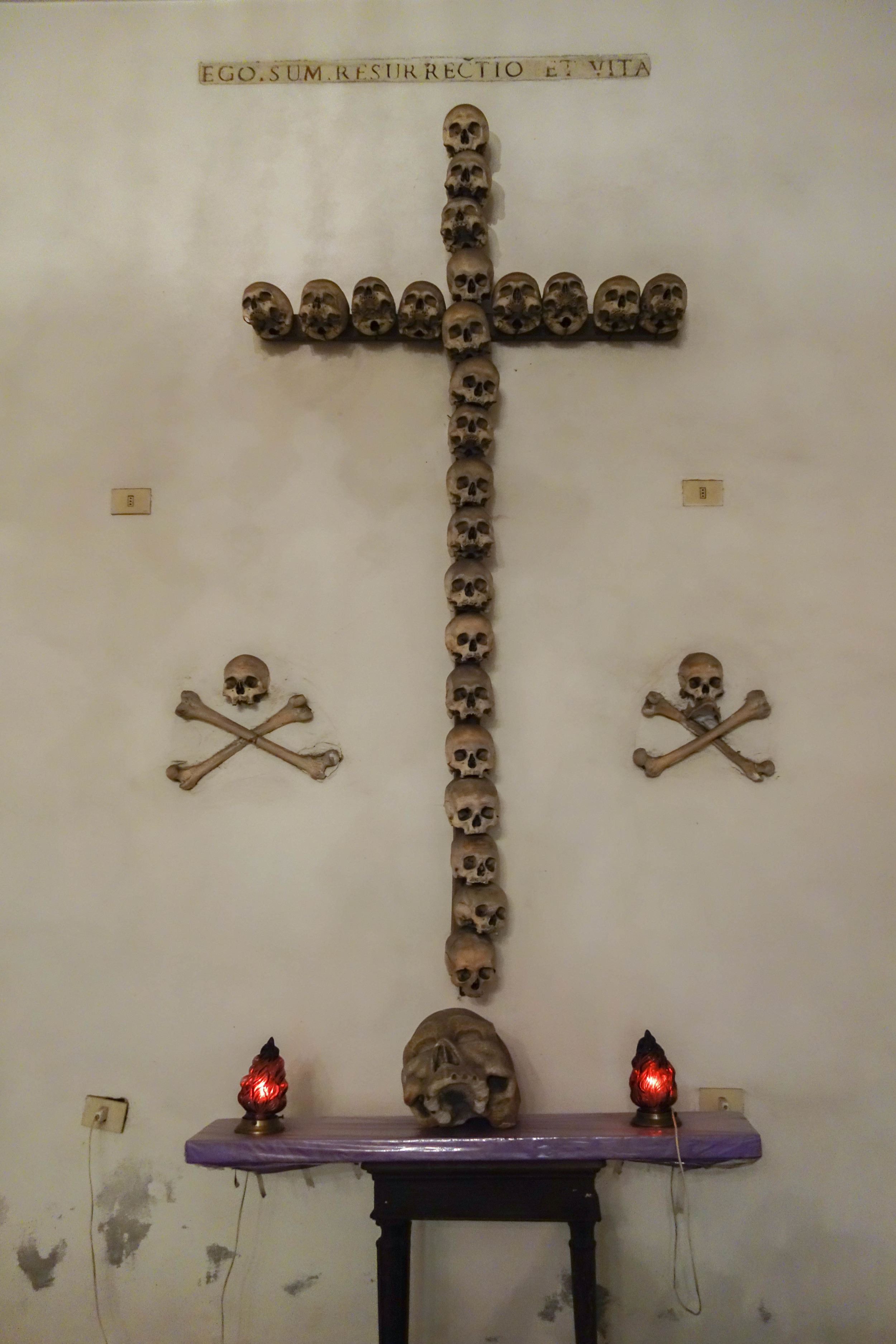
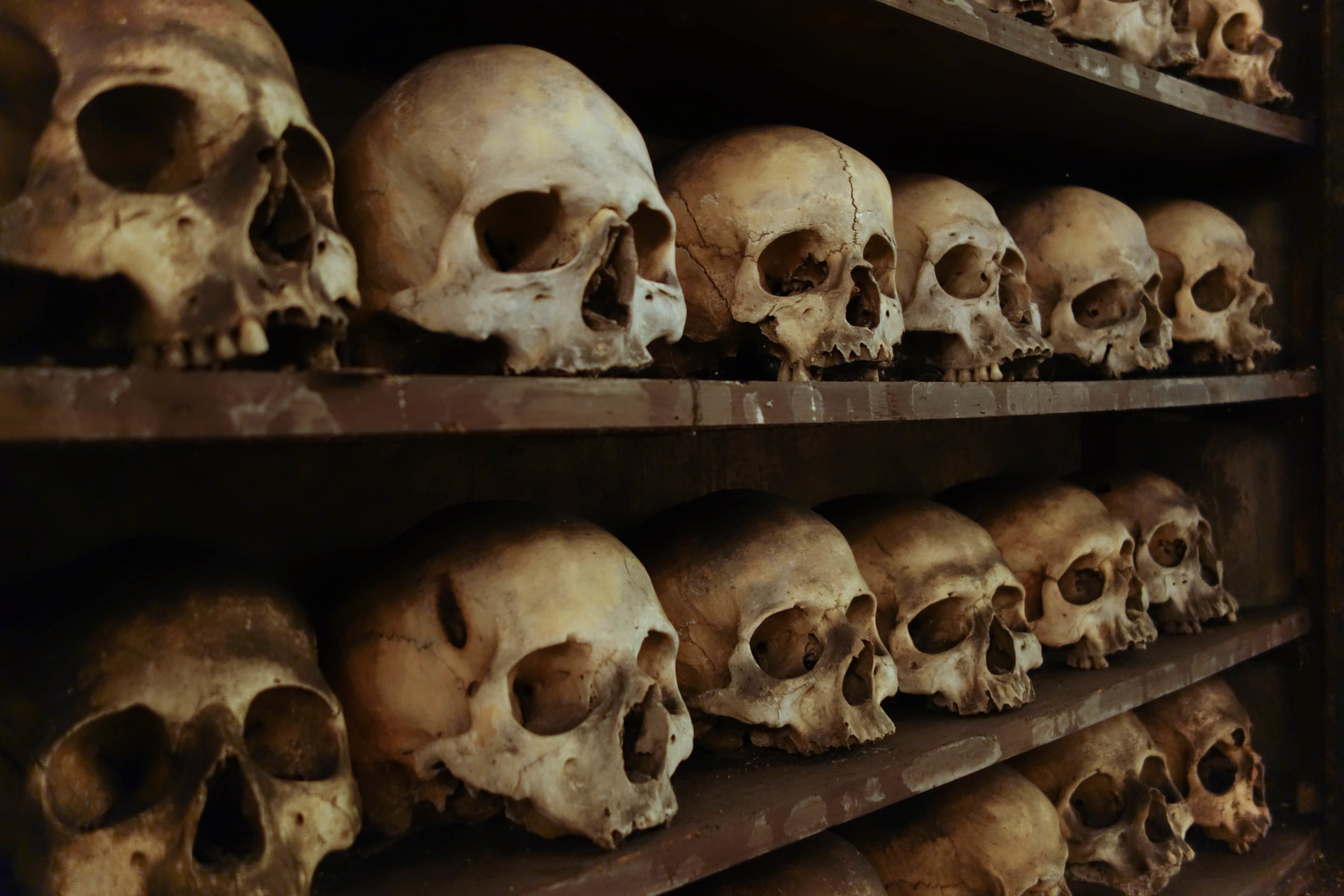
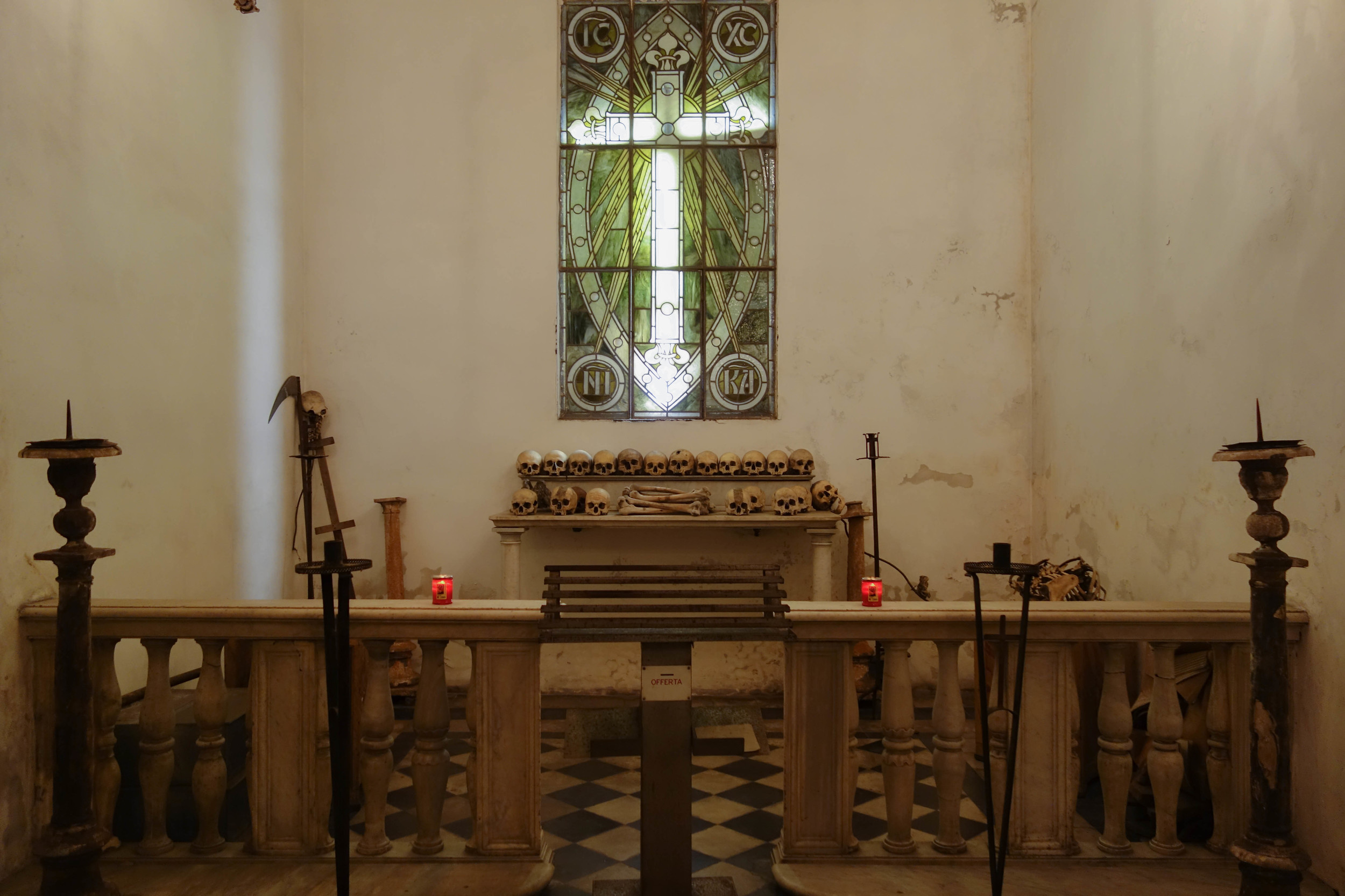
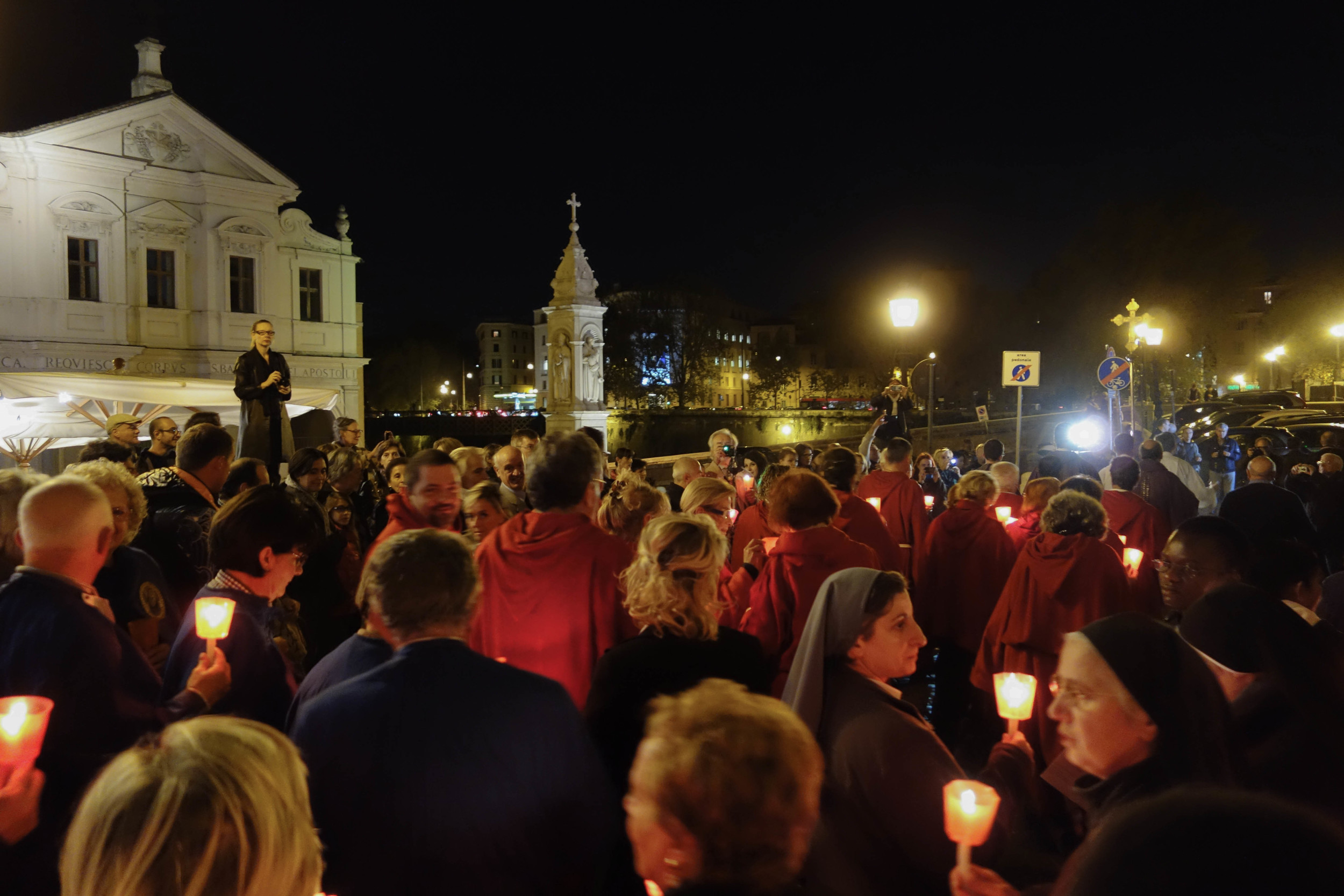
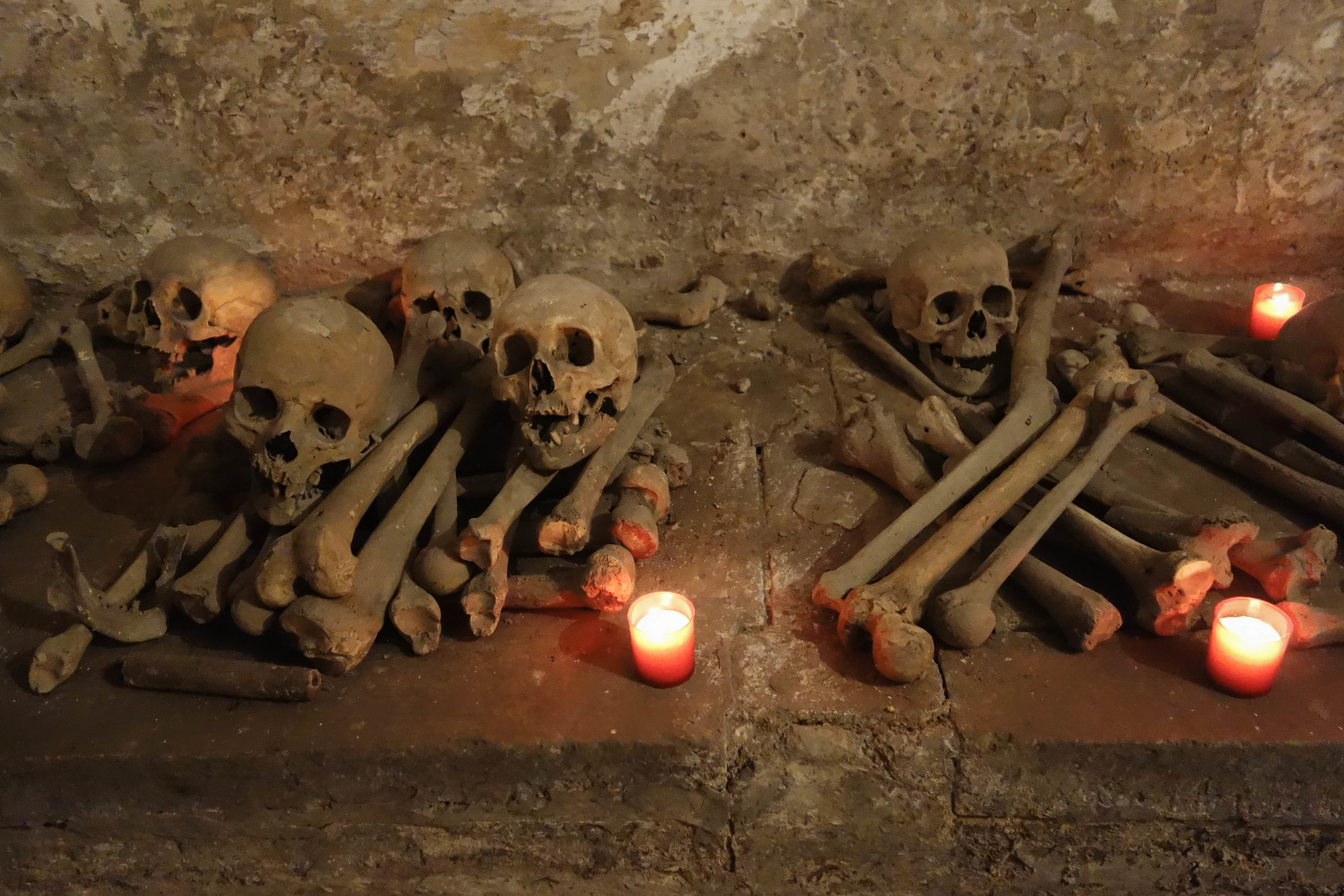


Our Adored Cadavers
Originally published on Hazlitt.
On an exterior wall of St. Sebastián’s church in Madrid, there’s a little tile sign dedicated to a poet. “In this church,” it reads, “Lope de Vega Carpio was buried in the year 1635.” The sign is decorated with a sketch of the church to which it’s affixed, showing the building in its pre-1930s state, before bombs leveled it during the Spanish Civil War. The shape of the building is still recognizable, but it’s drawn from the back and features a cemetery where an outdoor flower shop stands today. There is something funereal that clings to that flower shop. It’s in the black iron fence and the floral arrangements. It’s in the new black sign arching over the entrance that says, “Never stop dreaming.” A harmless cliché, but once you know the history of the place, it reads like a memo to the bodies once buried below. Never stop dreaming. Please, don’t let anyone disturb you from your eternal sleep.
María Ignacia Ibáñez was a body who should’ve stayed at rest. She was buried here, at St. Sebastián’s, in 1771, after dying of typhoid at the age of twenty-five. She was a famous actress in Madrid, but despite her success, she didn’t get a little sign like Lope de Vega; she isn’t even included in the church’s list of notable deaths next to other artists, architects, and writers. But this is unsurprising: the church would probably like to forget about her, her gravesite, and most of all, her boyfriend, José Cadalso. This is thanks to Cadalso’s prose poem, Noches Lúgubres (Lugubrious Nights), which he wrote after her death. It’s the story of a man just like himself who breaks into a cemetery just like St. Sebastián’s and attempts to dig up the corpse of a woman just like Mariá Ignacia.
Lugubrious Nights was a grisly piece of writing, but it was also an influential one; if Cadalso began work on it the same year as María Ignacia’s death, as some scholars speculate, then it was easily the first piece of Romantic literature in continental Europe, preceding even Goethe’s sturm und drang classic The Sorrows of Young Werther. Cadalso’s gloomy body snatcher could also be seen as the first Byronic hero, years before Lord Byron was a gleam in his father, Mad Jack’s, eye. But despite the fact that Lugubrious Nights was ahead of its time, it wasn’t quite as innovative as it seemed. A subtitle from some early editions hints at this: Imitating the Style of those that Dr. Young Wrote in English.
And in this case, style didn’t simply refer to form. Dr. Young’s poem featured a familiar plot line: a man, very much like the author, breaking into a cemetery.
Grief Changes a Man
The Reverend Dr. Edward Young was an English poet, but not only was he not a Romantic, he also wasn’t the type of fiend who would make a hobby out of pilfering bodies from cemeteries. It’s true that, as a student, he blacked out his windows and worked by candlelight radiating from a human skull, but he saw this proclivity as artistic Adderall, the work-habit of a bona fide poet that could help him catch up after slacking off at school. As an adult he outgrew his goth phase, settling in as a serious Protestant and even becoming a royal chaplain, his poetry evolving in the Neoclassical style. Etchings of him show a Hostess Donette of a man—a white powdered wig on a doughy face, sitting on a doily cravat. His body of work mostly featured poems with long, fawning dedications to patrons who always seemed to go broke just after hiring him. (An embarrassing habit—as Jonathan Swift quipped, “Young must torture his invention/To flatter knaves, or lose his pension.”)
Which is how Young likely would’ve been remembered, and quickly forgotten, had he not confessed:
With pious sacrilege, a grave I stole,
With impious piety, that grave I wrong’d
Short in my duty, coward in my grief,
More like her murderer than friend, I crept
He wrote those lines in The Complaint: or, Night-Thoughts on Life, Death, and Immortality (commonly called Night Thoughts), which he published in nine parts called “nights” from 1742 to 1745. This passage comes from the poem’s famous third night, wherein Young writes himself in as a man who breaks into a cemetery with the corpse of a young woman named Narcissa in tow. Alone and distraught, he buries the mysterious woman secretly in another man’s grave.
Night Thoughts is a classic example of Graveyard Poetry, a movement mostly remembered as a brief stop along the way to Romanticism when otherwise dull Neoclassicists took to the cemeteries. (It was a genre tailor-made for Edward Young. One hopes he kept his skull in storage for just such an occasion.) But while the gloomy backdrop was new, the poetry itself was rather conservative. Night Thoughts is a 10,000-line meditation on death, written in blank verse, draped in classical allusion and decorated with righteous Christian thoughts about resurrection. There’s little in the way of narrative, so the dozen-or-so lines in which Young describes sneaking into the cemetery are surprisingly cinematic—so much so that they inspired a popular painting by Pierre-Auguste Vafflard. In the painting, Young looks like a different man entirely; he’s gaunt but strong, pallid in the moonlight with fashionably tousled hair, not a powdered wig in sight. His arms clasp around a woman so stiff and pale she seems carved out of marble. In this painting, it’s easy to see why, from Night Thoughts on, Young was no longer considered second-rate, no longer a punch line: A dead woman lent him the gravitas he craved; she revamped his image and secured his place in literary history. No wonder, then, that José Cadalso wanted to imitate Young’s style nearly fifty years later.
For all Cadalso’s claims of imitation, there’s a glaring difference between his Lugubrious Nights and Young’s Night Thoughts, even if you overlook the difference between Young’s blank-verse meditation and Cadalso’s plot-driven prose: Cadalso’s fictional proxy, Tediato, doesn’t come to the cemetery to bury his unnamed lover—he comes ready to dig her up. And while Young keeps his “sacrilege pious,” Tediato’s post-exhumation plans start with taking the corpse to bed. At the end of Cadalso’s first night (borrowing Young’s structural device), Tediato takes a moment to address his lover’s body, which remains buried despite his efforts:
“Oh you, image now of what I shall be shortly; soon I shall return to your tomb, I will take you home with me, you will rest on a bed next to mine; my body will die next to yours, adored cadaver. Expiring I will set my domicile on fire, and you and I will turn into ashes in the midst of those of the house.”
People immediately found it suspicious that Cadalso, a man grieving the sudden death of his girlfriend, would write a poem that included such a bizarrely specific plan: dig up his lover, get the corpse into bed, commit suicide, then somehow self-cremate by setting the house on fire. He had to be thinking of María Ignacia when he wrote that passage. So when Cadalso referred to his poem’s “true part” in a letter to a friend, it seemed like he confessed to what many assumed to be true: That, fueled by grief, or more likely a heroic amount of booze, Cadalso broke into the cemetery at St. Sebastián’s and tried to exhume María Ignacia’s corpse.
Given these scandalous rumors surrounding Lugubrious Nights, it’s doubtful the Reverend Dr. Young would have been flattered to find his name on the cover of Cadalso’s poem. Still, he might have been sympathetic to the kind of grief Cadalso described.
In 1740, Young’s son-in-law, wife, and closest friend all died within a year. These misfortunes came on top of the death of his stepdaughter Elizabeth four years earlier; the eighteen-year-old newlywed died of consumption in Lyon on her way to Nice. Like Young, Elizabeth was Protestant, so the nearby Catholic cemeteries refused to bury her in their consecrated ground. Young was outraged:
“Denied the charity of dust to spread
O’er dust! a charity their dogs enjoy.”
This was his character’s justification for gatecrashing the cemetery in Night Thoughts, the implication being that the Catholic cemetery had rejected Narcissa’s Protestant body. To anyone who knew Young, there was no doubt the mysterious Narcissa was a pseudonym for Elizabeth.
But in Young’s retelling of Elizabeth’s burial, he changed another identifying detail: the city of Lyon became Montpelier. Here, his poetic license began to blur with the truth: Gossip spread about a Protestant poet forced to sneak his daughter’s body into a Catholic cemetery in France; sympathetic Protestants even made pilgrimages to Montpelier, attempting to locate and collect dirt from poor Narcissa’s grave.
This misreading of Night Thoughts highlights one last similarity between Edward Young and José Cadalso, something beyond poetry, grief, dead women, and rumors of busted cemetery locks—that is, despite all the lingering aspersions, neither story is true. Or rather, Elizabeth and María Iganacia’s deaths are real, but neither poet ever snuck into a cemetery.
Truth Told Slant
Elizabeth was, in fact, buried in Lyon, in the general hospital’s Protestant cemetery. Her tomb was there all along, even as misguided Englishmen searched Montpelier for her unmarked grave. While Young’s fans focused on the wrong city, the hospital converted the cemetery into a medicinal garden. Leaves grew over Elizabeth’s headstone, weather softened the Latin engraving, and the real Narcissa was forgotten. This matter wasn’t corrected until her grave was rediscovered by bibliophile and dilettante-historian Alfred de Terrebasse in 1832, much to the relief of the long-maligned French Catholics.
Elizabeth’s burial was modest, but it certainly wasn’t surreptitious, since it was in a graveyard set aside for Protestants. Edward Young, however, had a real, if less macho, reason for remembering Elizabeth’s burial as particularly harrowing: He was charged an unconscionable 729 livres for her funeral and grave, an amount that would still be out of line one hundred years later. (For comparison’s sake, his first play, Busiris, was considered a success, and earned 84 livres.) Though he bristled at the cost, this petty complaint disappeared in Night Thoughts: In the poetic version of Elizabeth’s burial, rather than paint himself as an ineffectual, grieving stepfather stuck with the bill, he makes himself an 18th-century Walter White, a man who took matters into his own hands and did wrong only in order to do right.
As for María Ignacia Ibáñez, there are still those who believe the church of St. Sebastián got rid of its cemetery as a response to Cadalso’s impromptu exhumation. You can hear that rumor repeated as fact if you listen to tour groups pass the church today. But the truth is that most parish cemeteries halted burials in the 19th century due to Napoleon’s public health codes. Corpses—not only in Madrid but in cities across Europe—were banished to sprawling modern cemeteries on the outskirts of town. Later, as cities grew, many of the small, decommissioned churchyard cemeteries relocated their remaining bodies so the land could be repurposed. Somewhere in this shuffling of graves, María Ignacia vanished.
One of the last published mentions of St. Sebastián’s cemetery comes from Curzio Malaparte’s account of a night in 1934. He wrote that a group of drunk men walked past the soon-to-be-demolished cemetery to gawk at the corpses lying aboveground in open coffins, waiting to be moved to a mass grave in one of the newer suburban cemeteries. According to Malaparte, an author in this group dedicated a poem to the corpse of a young woman he saw that night. It wasn’t María Ignacia, but in theory, she should have been there, dug up for good this time, though it seems too much to ask to find her there, the muse for yet another poet. It was as if Cadalso had already consumed her, bones and all, leaving nothing for this last ghoulish party to pick through.
Elizabeth and María Ignacia’s epilogues are worth documenting if for no other reason than literary critics in the past have been too credulous with both writers—too eager to mistake the emotional truth of poetry for the facts of history. But the fictional autobiographies in Night Thoughts and Lugubrious Nights are still worthy of consideration. Even if they can’t give us the facts and just the facts, they can tell us how Young and Cadalso’s minds worked, what they valued and how they imagined themselves to be.
Young’s logic for burying Elizabeth is immediately understandable. The stand-in he wrote for himself is devout, serious, and smart enough to conceal his emotions behind opaque references to the ancient Greeks. His goal, to bury the dead, even has a classical echo. He is Antigone, bravely risking his own honor to properly bury his stepdaughter.
And then there’s Cadalso with his Romantic ideas about digging up his lover and dragging her body away so he can die by her side. What would possess a man of the Enlightenment to write himself as so utterly unhinged? More to the point, what would make so many other writers follow suit? The fate of María Ignacia’s corpse became a hallmark of Romantic literature: the dead woman is never simply a person to be mourned and forgotten (like Elizabeth). Rather, she is fully objectified and consumed. Her body becomes a source of constant craving, an impossible possession, a grieving man’s objet petit a. Look around and you’ll see her in Annabel Lee, the first Mrs. de Winter, and Laura Palmer. There was something bigger at work in the Romantic movement as a whole as it spread through continental Europe to England and back again—something that would have influenced Cadalso in Spain, but not Young in England.
A hypothesis: that influence is Rome. It’s in the name of the movement, as it is in the phrase Romance language. But perhaps the most accurate way to describe it is Romish, a pejorative Protestant term for all things Catholic. Later Romantics became fascinated with Rome and its ghastlier Catholic rituals. Chateaubriand and Stendhal wrote of barefoot confraternity members carrying corpses through the streets by candlelight. A letter from Lord Byron described masked Catholic priests with black crucifixes who presided over a public execution (which he watched through his opera glasses). Nathanial Hawthorne shuddered at the mummified Capuchin friars on Via Veneto, and Goethe marveled at a mass for the dead on All Soul’s Day. But before these writers traveled abroad to experience this culture shock, Cadalso tapped into it in his native Catholic Madrid. There, he could hardly avoid the influence of Rome—especially when those Romish rituals involved digging someone up.
Tour Bus to the River Styx
Cadalso’s Catholic impulses are more easily understood if you leave the cemetery at St. Sebastián’s and take a bus just outside Madrid’s city limits to El Escorial, the royal monastery devoted to death. There, you’ll find two rooms that clarify his motive: the putridero and the relicario.
There are thousands of people in the relicario, but it’s difficult to see them that way. They aren’t really people anymore—they’re objects: 144 heads, 306 arms and legs. All told, more than 7,000 holy relics, the parts and pieces of Catholic saints collected by King Philip II, are stored here.
Philip II pursued saints’ relics with the same zeal as the original relic collector—the Empress Helena. She scrounged the Holy Land in the 4th century in search of dubious pieces of the passion, sending crosses, thorns, and nails back home to her imperial palace in Rome. But Philip II wasn’t one for archaeological digs. Instead, he frantically asked every parish in Spain if their relics were displayed prominently enough, if the displays were opulent enough, and if enough people were coming to see them—if not, he offered them a new home in his jealously guarded collection at El Escorial. He kissed the relics, prayed with them, and laid them all over his ailing body—a saint’s arm on his arm, a kneecap on his kneecap. It was said that on his deathbed, the only thing that would snap him back to consciousness was to casually mention someone else touching his beloved relics.
In Lugubrious Nights, Tediato refers to his lover’s corpse as a “sad relic.” Like the precious bones in the relicario, she’s no longer a person to him, but a missing piece of his collection, a sacred object to be rescued from the isolation of the grave. In this context, there is no higher honor than to be hoarded and venerated; to be objectified, to lose your humanity, is to become something more than human, not less. In Cadalso’s world, it’s an honor befitting a saint—or royalty.
The secular version of El Escorial’s relicario is the putridero. It’s a secret room behind the royal crypt. Only monks and royal corpses are allowed inside. When a king or queen who has birthed a king dies, this is the room where the first of two burials takes place.
Traditionally, many Catholics in Italy are buried twice: once when they cease to live and again when their bodies cease decaying. This tradition was exported to Spain (via the Spanish-ruled Kingdom of Naples) in the form of El Escorial’s putridero, but here, as is often the case with imports, it has a certain cachet that’s absent in its home country. In Italy, the bodies of monks or nuns are often left to rot on strainer-seats or covered with a few inches of dirt in public crypts, but in Spain the royal bodies are hidden away in wooden caskets. During this period, the first death, the body is dead but lacks the stillness death brings. It purges fluid. It sheds flesh. It’s unpleasant. At the same time, the body’s soul is thought to be in purgatory, an equally unpleasant and liminal place. Purgatory is where souls are purified in a metaphysical lake of fire before being admitted into heaven.
The Church isn’t clear about whether all heaven-bound souls go to purgatory, or if they do, for how long. No one can seem to translate time spent in the afterlife into the units of time used in our world. This is why it falls to the organic timeline of decay, a period of experienced instead of measured time—kairos instead of chronos, as the ancient Greeks would say. As long as the body is purging flesh, the soul is thought to be purging sin. When only a clean, white skeleton is left, the soul is considered at peace in heaven. That’s when the monks at the royal monastery move the remains into one of the identical marble caskets in the pantheon: a secular kind of reliquary.
Disturbing a grave in this context is a privilege, so somewhere in Cadalso’s Catholic subconscious, he may have imagined digging up María Ignacia as a way to honor her like a queen or saint. Drawing on the ritual of double-burial even explains his character Tediato’s needlessly difficult plan to commit suicide and somehow burn down his house afterwards. To mirror the Catholic ritual, the deaths must happen in that order. The body dies first; finality and peace only come with the second death, after the purgatorial fire.
These ideas were repellant to Protestant reformers, of course, and contrary to the burial customs Edward Young practiced. Young never considered the physical realities of Narcissa’s corpse, even as he described her burial; he had no use for corporeal Catholic rituals. Instead, he consoled himself with thoughts of the Day of Judgment yet to come. To linger on the thought of her body would be excessively morbid and distasteful to him.
A Cold and Drowsy Humor
Cadalso’s references to double-burial and relic veneration set his Romish Romantic poetry apart from Young’s Protestant Graveyard poetry. But Cadalso wasn’t the first Spanish writer to exploit Catholicism’s porous boundary between the living and dead, especially when the corpse in question belonged to a beautiful young woman.
As the sign on St. Sebastián’s advertises, there was a much more famous tomb in the cemetery where María Ignacia was laid to rest: the playwright and poet Lope de Vega was buried there in 1635. (Though his tomb is now inside the church—avoiding a move to a mass grave is one perk of being famous.) He was interested in dead women, too, though no one ever accused him of consorting with one.
In de Vega’s play La Difunta Pleiteada (The Deceased was Petitioned), a Sicilian girl’s father arranges her marriage to a man other than her lover, which causes the girl to succumb to an antiquated lady-in-love-psychosis and die. But before her tomb is sealed up, her lover sneaks into the church where she’s laid out and steals a cold embrace. Instantly she’s resurrected, though this leads to a protracted lawsuit between the two men who want to marry her.
Though both The Deceased was Petitioned and Lugubrious Nights deal in dead women, the former is rather quaint compared to the latter. In de Vega’s version, the girl’s resurrection seems to have a halo sketched around it, a hopeful shine that only a true believer would include. De Vega was, in fact, a devout Catholic. He believed in the supernatural powers of the Church and often re-told miraculous stories that were passed down to him through ballads and folklore. For this reason, de Vega is often compared to his contemporary, Shakespeare, since both writers used plots from existing sources. But de Vega’s writings are also indebted to hagiography. Like the writers who recorded the lives of the saints, he was more interested in truthfully documenting the wonder of the world than the reality of it. These priorities were understood during his time, but today they strike most readers as false. Modern audiences have yet to untangle themselves from the insistence on psychological realism and the concept of authenticity the Romantics demanded—which is exactly what Cadalso offered in addition to his fascination with Catholic rituals.
There is a pervasive, if morbid honesty in Lugubrious Nights, particularly in Cadalso’s willingness to record his own dark thoughts and his affinity for observing nature—even to the point of imagining maggots in the body of his lover. In the poem, Tediato exclaims:
“Into these worms, oh! Into these your flesh has been turned! From your once beautiful eyes these sickening creatures have been engendered! Your hair, which in the height of my passion I called a thousand times not only more blond but more precious than gold, has produced this rot. Your white hands, your loving lips have turned into matter and decay!”
But perhaps Cadalso’s honesty is most apparent, and most sympathetic, in the way he paints Tediato as someone drawn to the traditions of the Church long after his faith in God has been irrevocably shaken by rationalism.
This rationalism was noted by none other than the Spanish Inquisition in Córdoba, who banned Lugubrious Nights in 1819. They objected to Tediato’s planned suicide and the fact that he never fears hell; Tediato’s omission of the Catholic afterlife becomes particularly obvious when he rejects the idea of a secular afterlife altogether. When his gravedigger-accomplice retreats, fearing ghosts in the cemetery, Tediato suddenly sounds like a modern skeptic:
“What’s frightening you is your very own shadow together with mine. They are produced by the position of our bodies with respect to that lamp.”
In other words, death is not just real to him, but final. Tediato (and therefore Cadalso) stared into the void without a supernatural glimmer of hope.
As Mario Praz wrote in his book The Romantic Agony, a Romantic is interested in the natural monstrosities and aberrations of our world. And like a true Romantic, Cadalso was only interested in the observable—the natural and psychological aspects of death instead of the supernatural. A good Catholic in his day would fear an eternity in hell for that, but perhaps Cadalso was punished in another way. Unlike more devout writers like Lope de Vega or even Edward Young, Cadalso’s agnostic grief continues to ring true in the modern world—so much that people have mistaken it for literal truth for over two centuries now.
A Gentleman’s Stiff
The subtle nihilism of Lugubrious Nights feels modern, but there’s one detail that would certainly change if the story were told today: Cadalso is never clear if Tediato succeeds in digging up his lover’s body. On the first night he runs out of time, on the second he’s waylaid by the police. The third ends enigmatically when he meets his gravedigger-accomplice one last time and says:
“You will contribute more to my happiness with that pick, that mattock… vile instruments in the minds of others… venerable in mine… Let’s go friend, let’s go.”
That’s the end, ellipses and all. There’s no climax. No one witnesses the consummation of Tediato’s nightmarish plan nor his anguished failure.
The fact is, Cadalso can’t give us what we’re looking for. His outlook was bleak enough to imply that Tediato’s happiness could only be found with the gravedigger’s tools—a pick and a mattock—but he can’t quite bring himself to elaborate. Like later Romantics, he concerns himself with longing but not satisfaction. Satisfaction in this case would require the reader to want to see the last grim scene between Tediato and his lover’s corpse. And that desire could be called sadistic. Those whose tastes lean in that direction only need to look as far as the most obvious source—the Marquis de Sade, who couldn’t resist rewriting de Vega and Young and Cadalso’s tale one more time in Juliette. But unlike Romantic Cadalso, he could do so with the promise of satisfaction, no matter how perverse. And so the dead woman shifts again: from pious saint to romantic obsession to object of decadence.
The Marquis borrowed his setting from Lope de Vega: an Italian church where a shrouded young woman awaits burial. From Edward Young he borrowed the character of the bereaved father. Then, in his own inimitable style, he combined that character with José Cadalso’s distraught lover. This man, Cordelli, bribes the gravedigger for some time alone in the church before his daughter’s vault is sealed.
Once he’s alone, Cordelli incestuously embraces the girl, though she doesn’t revive like she would in one of Lope de Vega’s plays. (Sadism and decadence, being vagaries of Romanticism, require a certain degree of naturalism.) The permanence of the girl’s death is for the best anyhow: The scene devolves into a long and bloody orgy, the details of which can be found around page 1,046. There is no passage to reasonably quote.
The novelist Joris-Karl Huysmans once said that sadism is the bastard of Catholicism—a direct descendent, but an embarrassing byproduct of its ecstasies. Cadalso may have preferred to end his poem before creating such an abomination, but Catholicism kept influencing writers long after him, eventually ushering in the likes of de Sade and the Decadents who were happy to pick up where he left off. Like Cadalso, they were inspired by the martyrs and their objectified bodies in crystal caskets—they just also had a predilection for the tortures that put them there in the first place.
There’s no turning back in this evolving story of the beautiful dead girl. The literary tradition that bubbles up from beneath that funereal flower shop at St. Sebastián’s continues today. Like Tediato, modern audiences still find happiness in picks and mattocks, and have access to de Sade’s racks and knives as well. We put them into constant use in the latest gritty cable crime-drama, providing the latest dead girl with her arched back, rolled eyes, clenched fists, and unwilling willingness. It’s a work-around. It provides a one-sided kind of sex—a necessity, because Catholicism’s persistent influence ensures we still love virgin-martyrs the very best. Like de Vega, Cadalso, Young, and de Sade, we’re still hauling out their bodies, filling up our reliquaries, and making new adored cadavers.

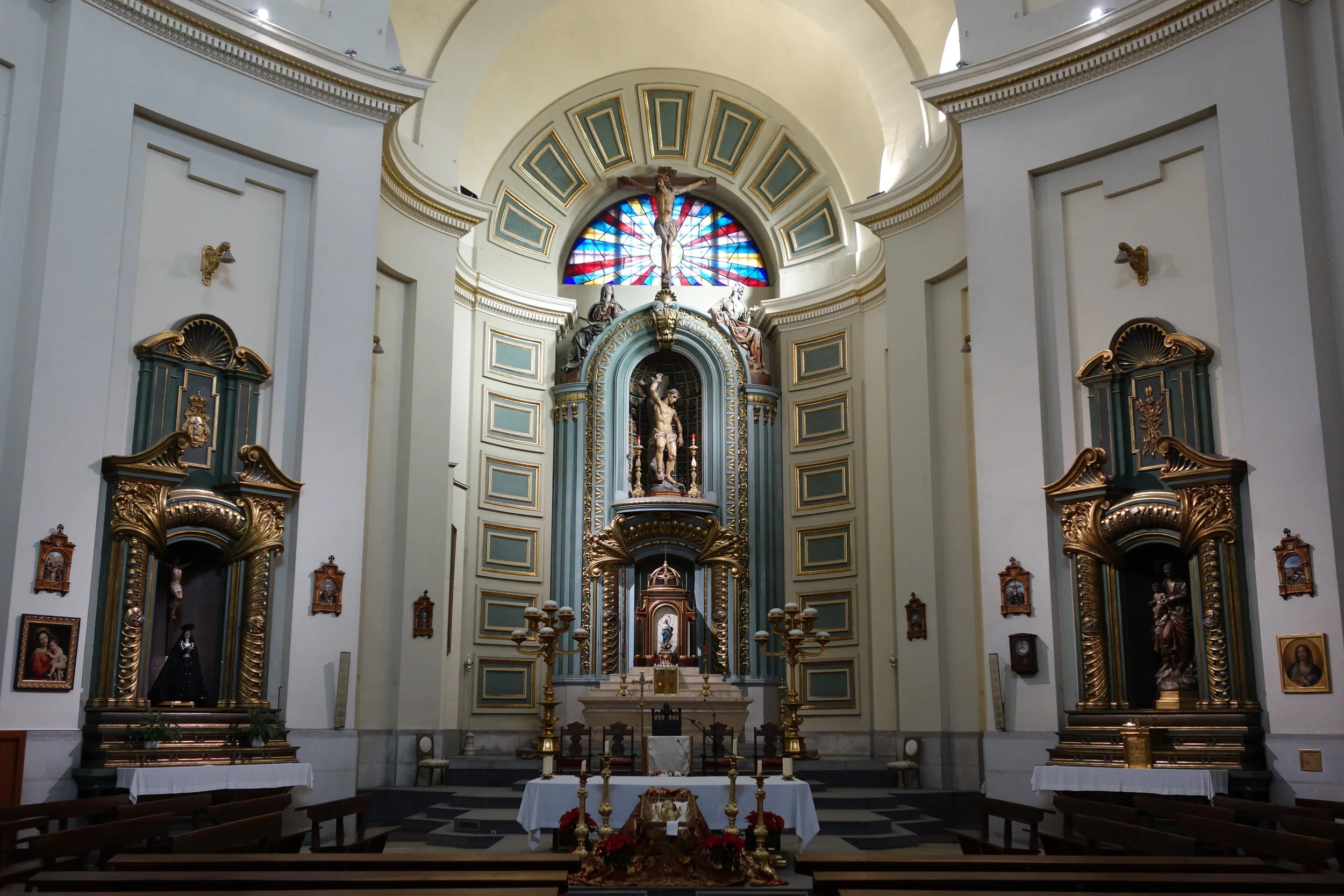

The Sculptural Skeletons of Rome: As Seen in Slate
Originally published on Slate.
The dead are everywhere in the churches of Rome. Their tombs line the walls and dominate whole side chapels. Visit enough of them and you’ll come to expect the loose wiggle and hollow thunk of the marble slabs shifting beneath your feet that signal you’ve walked over a grave. If you imagine what’s just beyond every surface, the churches become mega-necropoli, Tokyos made of tombs instead of hotel rooms.
Unlike the relics of the saints, the entombed bodies of clergy and parishioners are largely hidden from the public, but the Baroque skulls and life-sized marble skeletons won’t let you forget they’re there. They speak to you. But as David Sedaris noted in When You Are Engulfed in Flames, the skeleton has a “limited vocabulary, and says only one thing: ‘You are going to die.”
Rome’s skeletons prefer to deliver the bad news in Latin, an appropriately dead language, but even so you can’t mistake the message or the fact they’re addressing you directly. An engraved skeleton on the façade ofSanta Maria dell’Orazione e Mort unfurls a banner that reads, “Hodie mihi. Cras tibi.” “Today me. Tomorrow you,” it shrugs.
Though their message is grim, the skeletons are surprisingly lively. At San Francesco d’Assisi a Ripa Grande, they climb out from behind the artwork. At Gesù e Maria, one appears frozen in the middle of a solo danse macabre, flailing so wildly it seems to be coming apart. Even in the more staid examples, it isn’t unusual for the skull’s empty sockets to convey more emotion than busts of the living. It’s this kinetic quality that’s so arresting; life seems to bursts supernaturally from these dark corners devoted to death.
The juxtaposition is intentional. Bernini popularized the use of these unusually active skeletons, and in doing so masterfully expressed a tenant of his Catholic faith. The feathered wings signal these aren’t your average corpses. They’re complex allegories for the inescapable passage of time, and the belief that death and decomposition of the body are the first stages in the transition to everlasting life (or damnation, as the case may be). Though the skeleton may only say, “You are going to die," for some that implies, “You haven’t lived yet.”
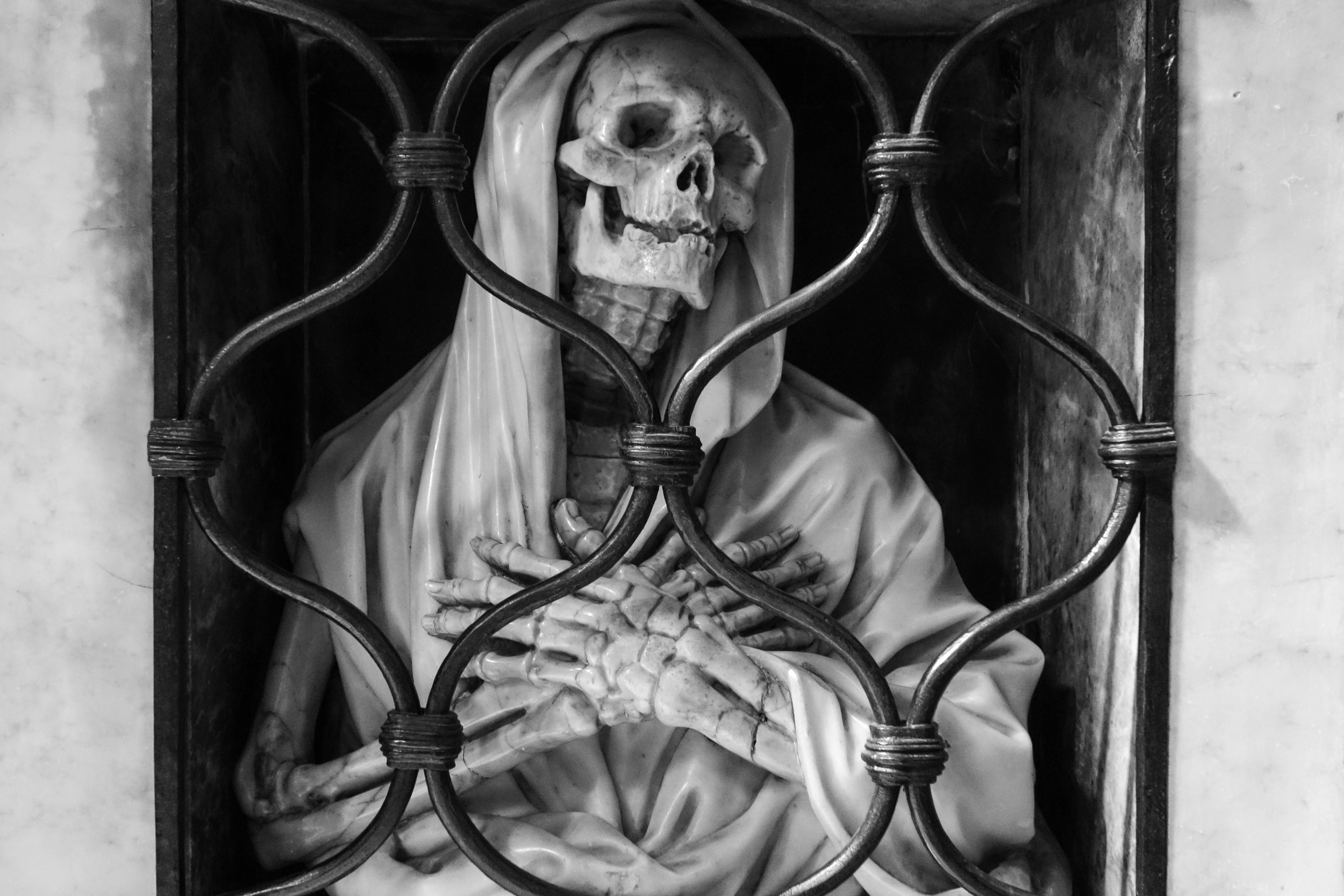

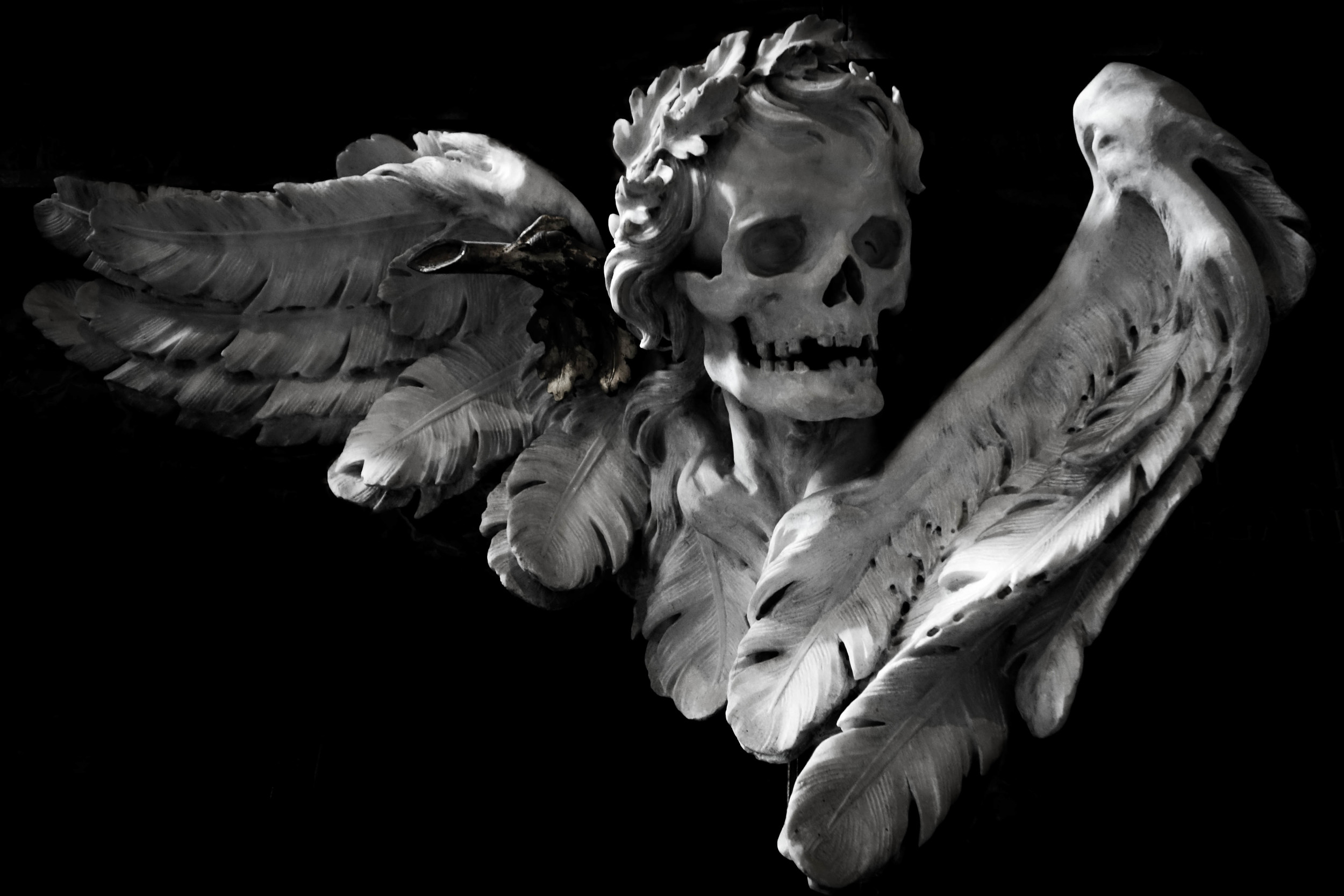
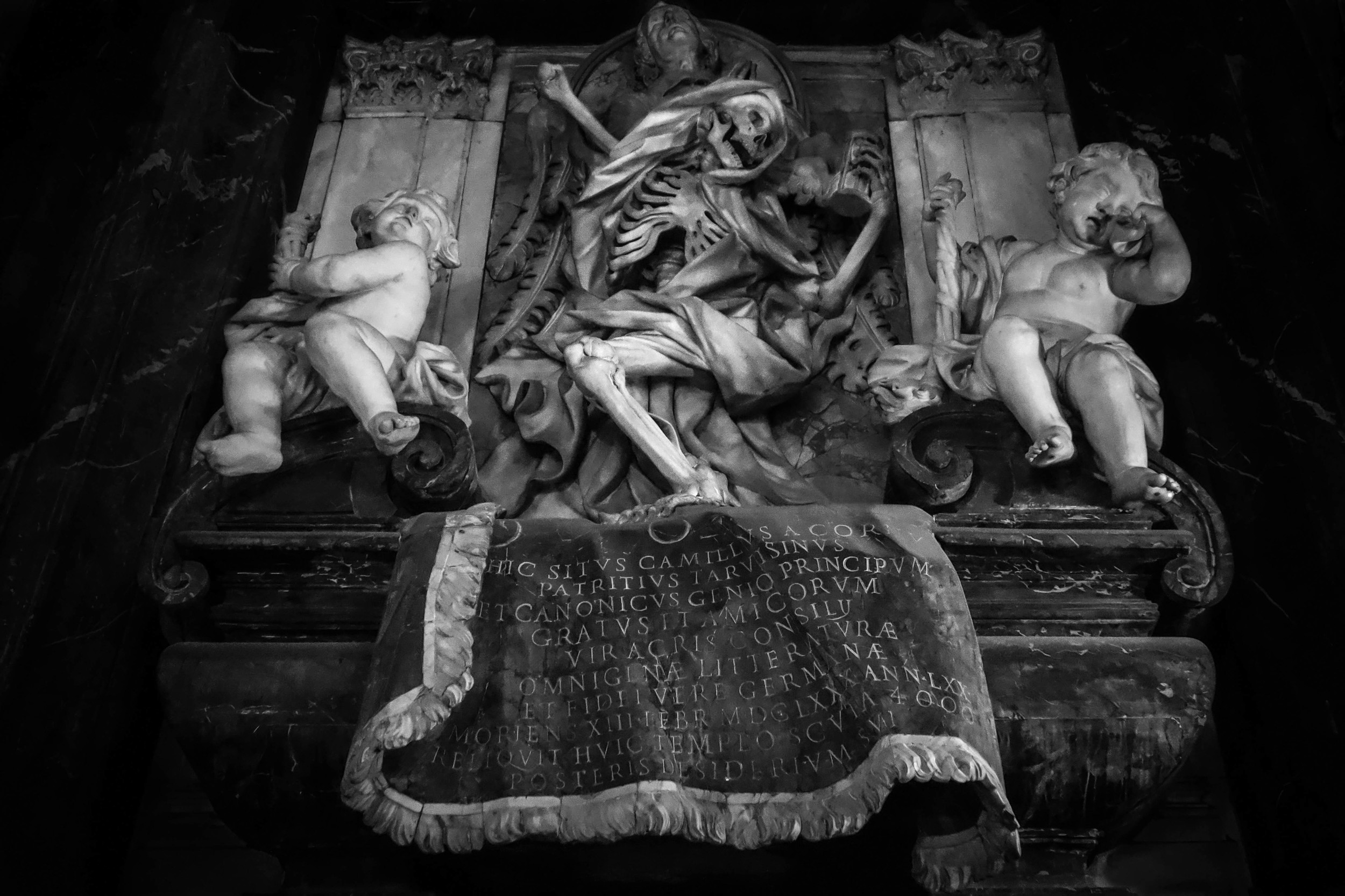
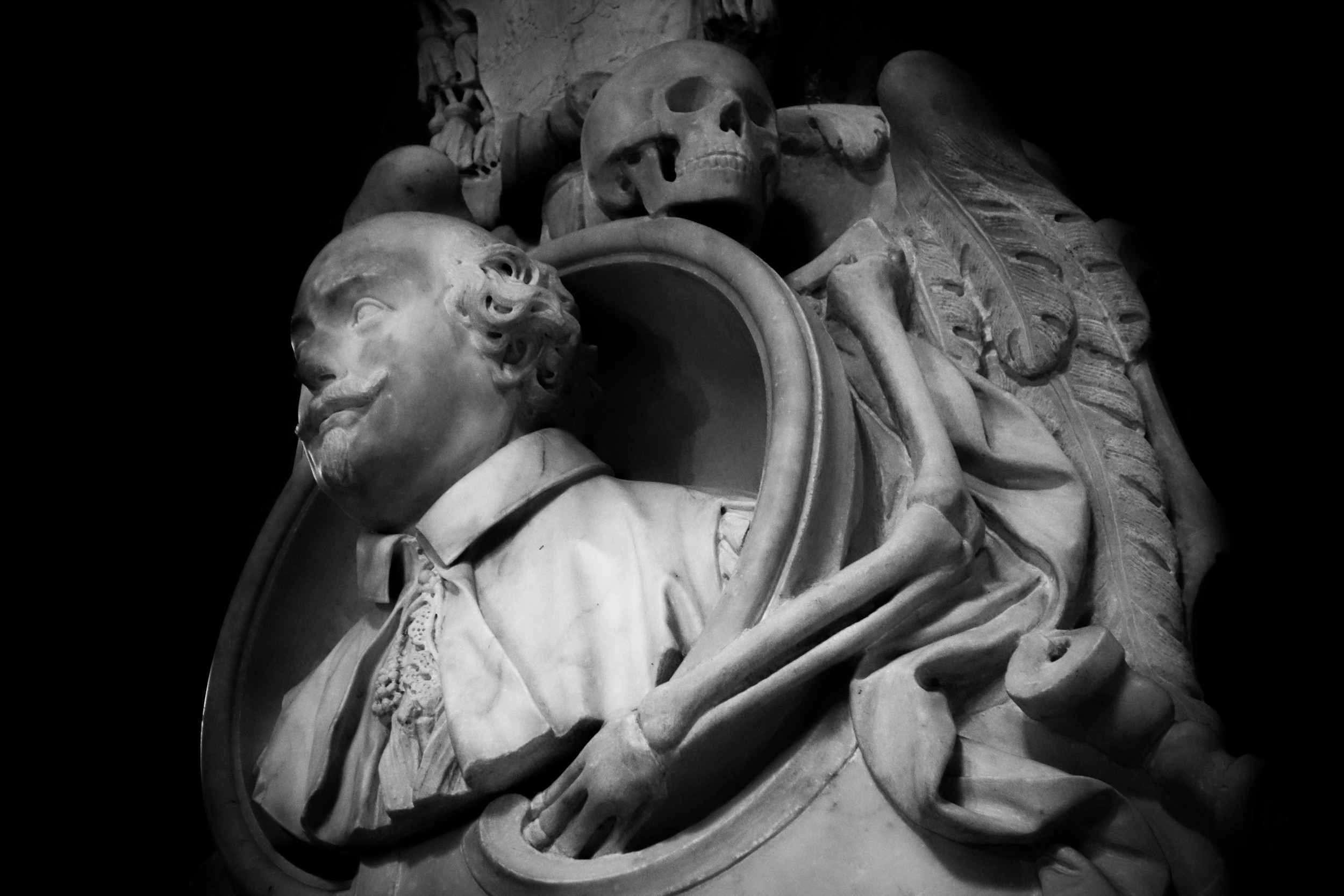
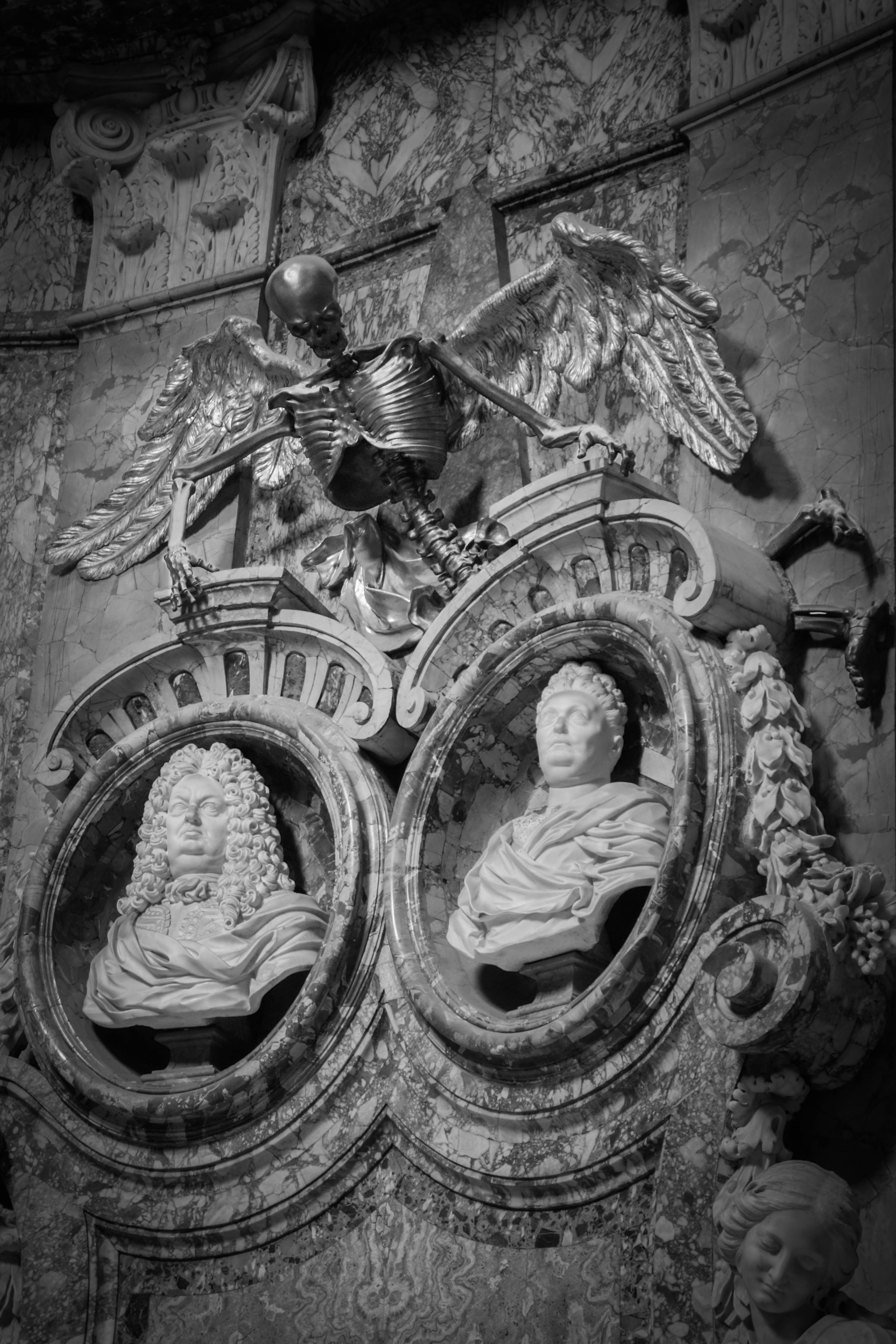
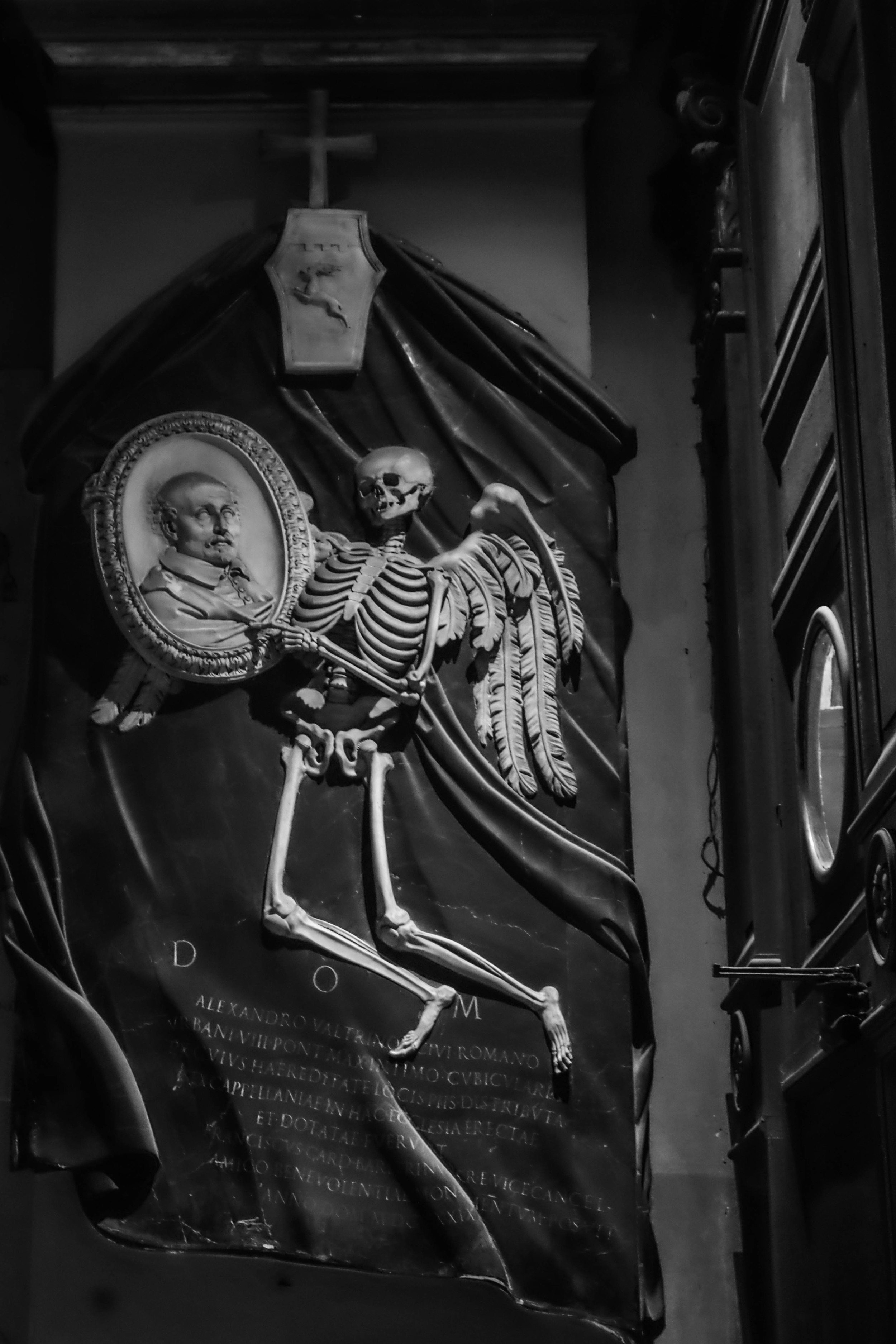
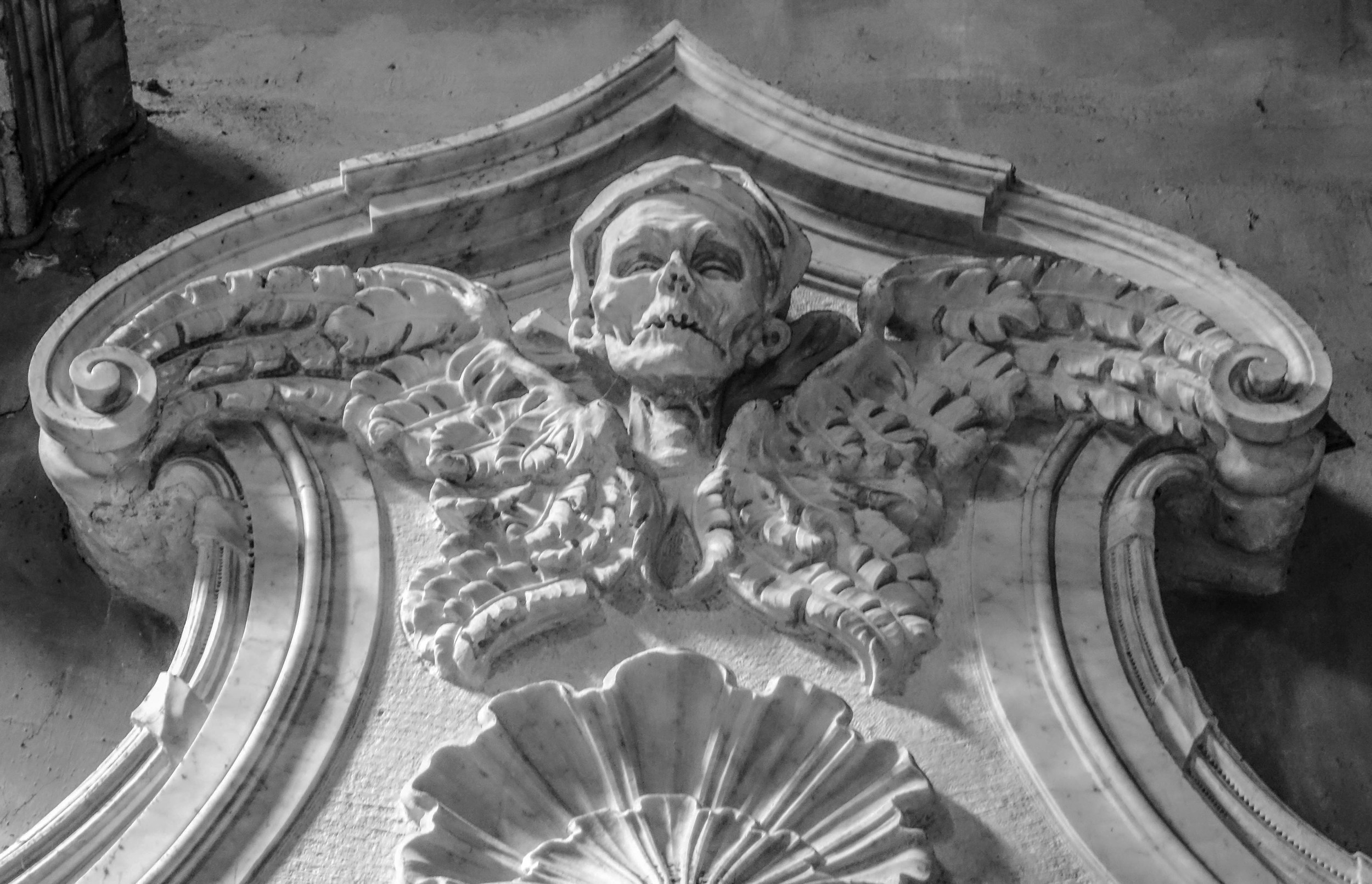

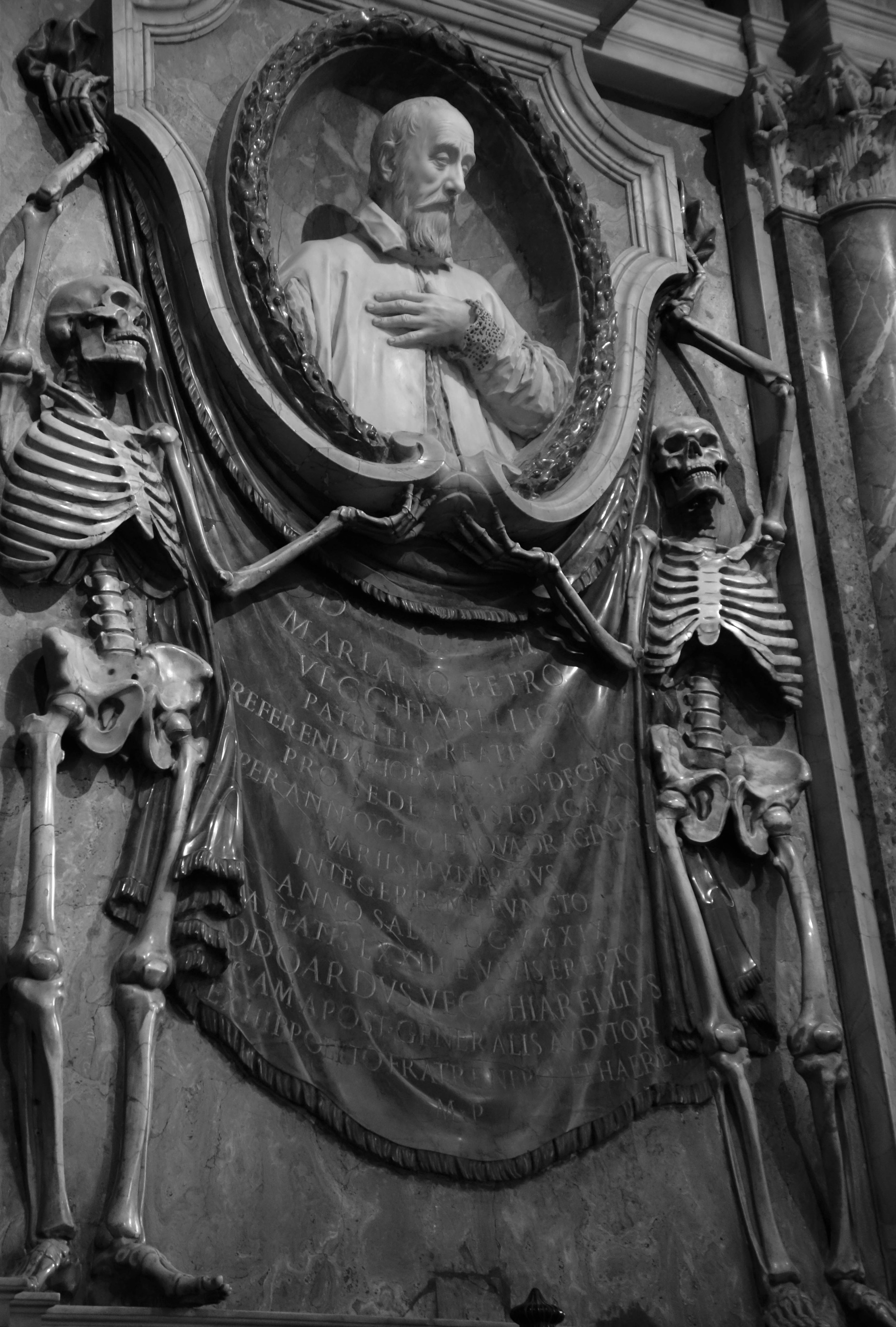
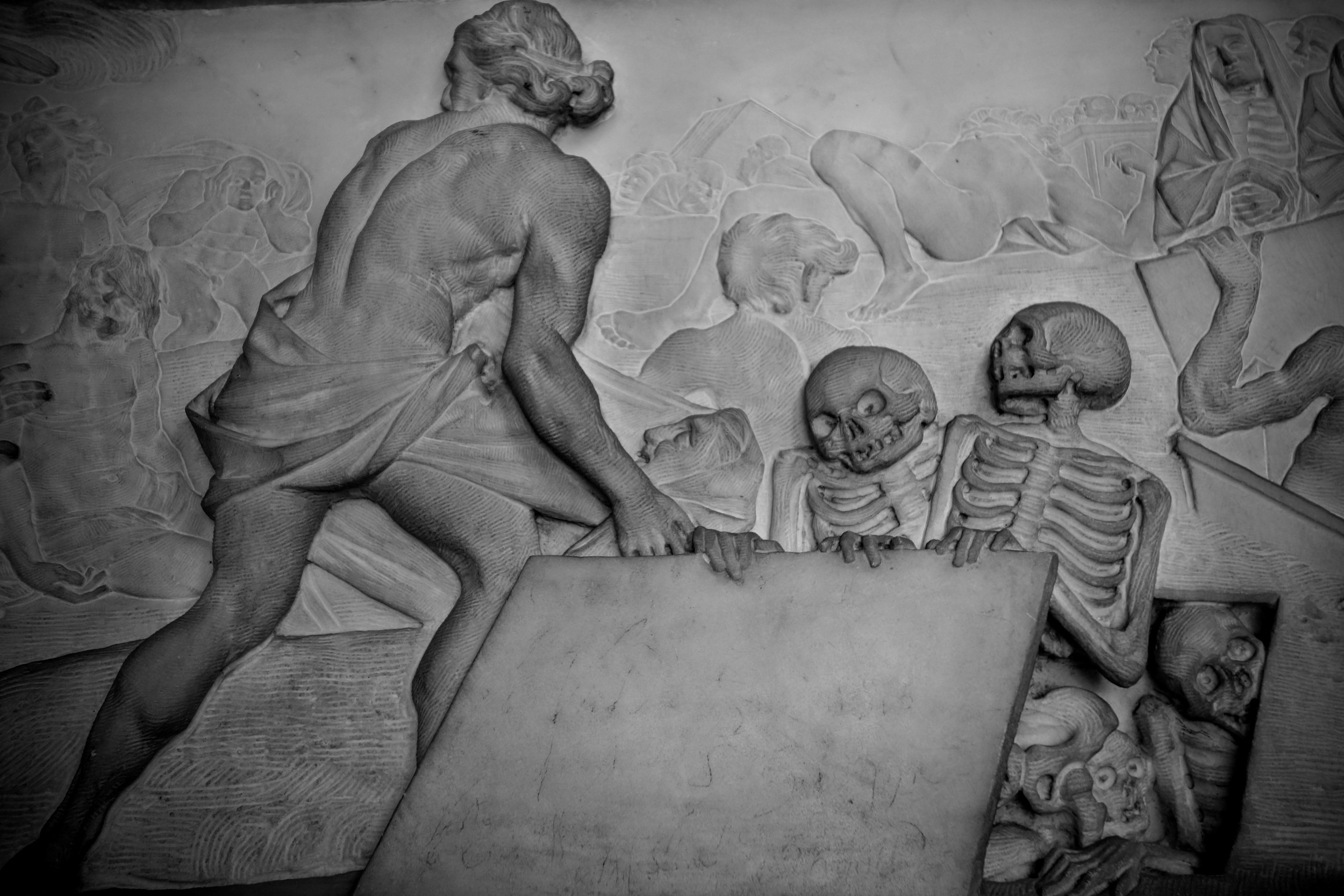
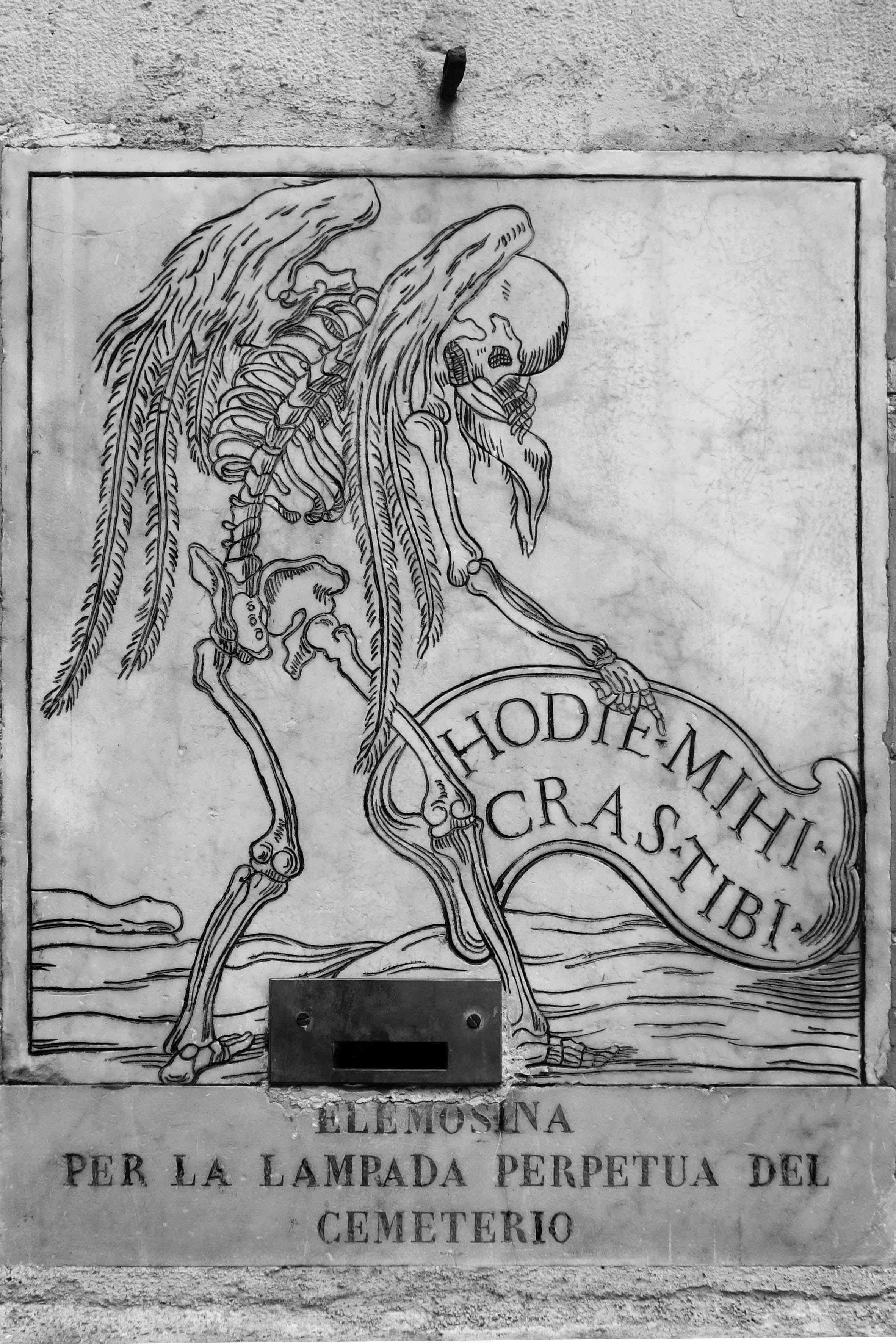
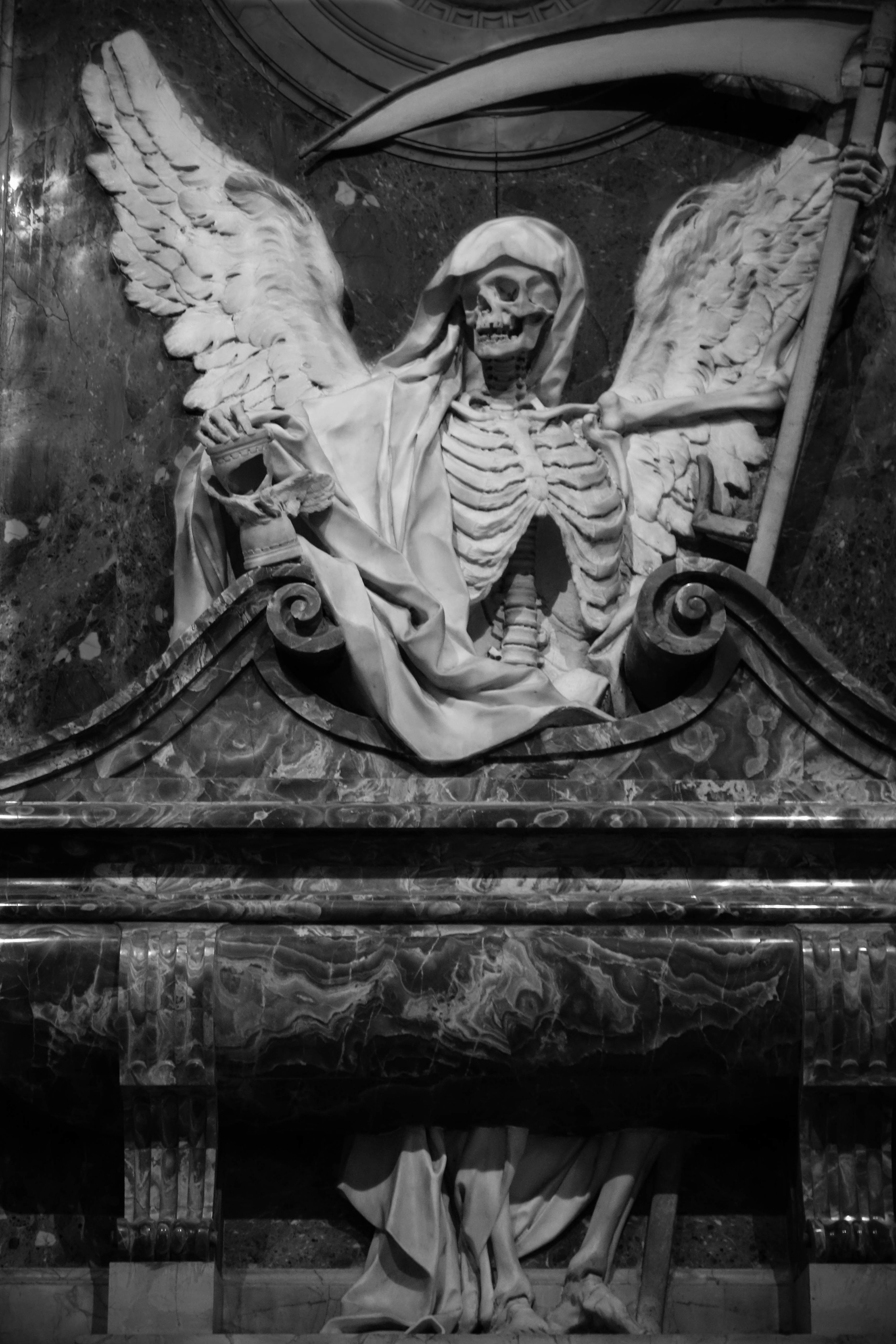
The Neapolitan Cult of the Dead: A Profile for Virginia Commonwealth University
This profile was published as an entry in Virginia Commonwealth University's World Religions and Spirituality Project.
CULT OF THE DEAD TIMELINE
1274: Purgatory was formally accepted as Catholic doctrine and defined by the Church as “the place of purification through which souls pass on their way to paradise” at the second Council of Lyons.
1438-1443: The Council of Florence added that “the suffrages of the faithful still living were efficacious in bringing [souls in purgatory] relief from such punishment…”
1563: An additional decree concerning purgatory was passed at the Council of Trent, delineating Church-sanctioned ideas about purgatory from “those things that tend to a certain kind of curiosity or superstition, or that savor of filthy lucre”.
1476: Pope Sixtus IV confirmed that indulgences might be earned by the living for souls in purgatory, thus shortening individual souls' time there.
1616: A group of Neapolitan noblemen founded the Congrega di Purgatorio ad Arco, a group dedicated to burying the poor and praying for their souls in purgatory.
1620s: St. Robert Bellarmine taught that souls in purgatory could help the living because they are closer to God than people on Earth; however souls in purgatory cannot hear specific prayer requests.
1638: The church of Santa Maria delle Anime del Purgatorio ad Arco was completed and consecrated. Below the church was a hypogeum which is used by the Congrega di Purgatorio ad Arco for burying the city's poor.
1656-1658: The Black Death, or Bubonic plague (Yersinia pestis), devastated Naples, killing roughly half of the city's inhabitants. Of the estimated 150,000 dead, many were hastily buried in pits or existing tufa caves without markers.
1780s: Neapolitan priest, St. Alphonsus Maria de' Liguori of Naples, built on St. Robert Bellarmine's teaching on purgatory. Liguori taught that God makes the prayers of the living known to souls in purgatory, which made it possible for the dead to help the living with specific matters on Earth.
1837: Victims of a cholera epidemic in Naples were buried in the mass graves around the city, including the Fontanelle cemetery.
1872: Father Gaetano Barbati sorted and catalogued the bones in the Fontanelle Cemetery with volunteers from the city, who prayed for the dead while they completed the work.
1940-1944: A number of the tufa caves used as burial grounds served as bomb shelters during World War II, giving new reason for the living to pray to the souls in purgatory, who were represented by the bones buried there.
1969: Archbishop of Naples, Corrado Ursi decreed that “expressions of cult addressed to human remains” were“ arbitrary, superstitious, and therefore inadmissible.”
1969: The Fontanelle cemetery was closed, and the Cult of the Dead was suppressed.
1980: The Irpinia earthquake struck Naples, closing the church of Santa Maria delle Anime del Purgatorio ad Arco, effectively suppressing remaining activities of the Cult of the Dead.
1980s (Late): I Care Fontanelle was formed to give tours and counteract “degradation” to the Fontanelle cemetery, both the structure of the cave itself and the lingering activities of the Cult of the Dead.
1992: The church of Santa Maria delle Anime del Purgatorio ad Arco was reopened after restoration work was completed.
2000-2004: More restoration work at Fontanelle Cemetery took place.
2006: The Fontenelle Cemetery was reopened on a limited basis.
2010: The Fontenelle Cemetery was reopened full time.
FOUNDER/GROUP HISTORY
To its adherents, the Neapolitan Cult of the Dead exists as a part of the Catholic faith. In fact, adherents often do not identify their religious beliefs as anything other than Catholic or use the designation “Cult of the Dead.” However to the Catholic Church, the cult is heretical and exists outside of the faith. The core beliefs of the cult can best be understood as a mixture of Catholic doctrine concerning purgatory and pre-existing folk-religion within the former Kingdom of Naples (now Southern Italy). In this regional folk-religion, the living attempt to build personal relationships with the souls of the dead. They view these relationships as a practical way to obtain miracles and improve everyday life.
To understand how the Cult of the Dead departs from Catholic interactions with the souls of the dead, one must first understand the concept and origin of purgatory.
As Jaques Le Goff outlined in his seminal book, The Birth of Purgatory, in the twelfth and thirteenth centuries, the concept of the afterlife became increasingly specific due to a number of cultural shifts. One particularly important shift was the evolution of the concept of justice; punishments for crimes began to be tailored to individual circumstances. This concept eventually extended into the afterlife and a person's fate after death reflected the magnitude of his or her sins. This was accomplished through the conception of a third place, other than heaven and hell. It was a temporary place for punishment and atonement thought to be adjacent to hell. All souls marred by sin were believed to go there for a time that corresponded to the number and severity of an individual's sins before being admitted into heaven. The place was called “purgatory” and the concept was formally accepted as doctrine in 1274 at the second Council of Lyons.
By the fifteenth century, Catholic doctrine allowed the living to earn indulgences for the suffering souls in purgatory as they had previously earned indulgences for themselves. (An indulgence is a remission or reduction of temporal punishment for sin, earned through spiritual exercises and acts of charity.) This effectively extended the power of the pope (who granted these indulgences) from the earthly realm into the afterlife for the first time. For this reason, the concept of indulgences for the dead was quickly embraced by elite clergy members eager to expand papal power. However the laity embraced this new form of charity for the dead for entirely different reasons.
Throughout the Kingdom of Naples, popular Catholicism already operated in an unorthodox way, through a tit-for-tat system of prayers said in exchange for divine favors granted. This folk Catholicism appeared orthodox to the clergy but was heterodox in practice. It was an individualistic, results-based style of worship that coexisted with belief in folk-magic and witchcraft, especially among the lower classes. Specific icons of the Madonna, as well as the relics of saints appeared to be venerated by the laity in the orthodox way (by praying with the icon or relic, not to it) but these prayers were, in practice, said to the icon or saint. In turn these images and objects were expected to use their supernatural powers to aid the venerator. When prayers were answered, the person who made the request would bring a token of gratitude, called an ex voto, to the shrine where the request was made [Image at right]. In orthodox Catholicism, ex votos are offered freely in thanksgiving; however, in Neapolitan folk Catholicism, these gifts establish a unique, reciprocal relationship between the individual and the tangible sacred object (the icon or relic). From this moment of reciprocity on, the relationship was expected to be mutually beneficial and could be reversed at any time should the sacred object fail to perform or the venerator fail to express appropriate gratitude.
When the Catholic Church eventually permitted prayers to be said on behalf of souls in purgatory, these reciprocal relationships, formerly limited to saints and the Virgin Mary, expanded to include the dead even though the Church remained adamant that souls in purgatory had no supernatural powers. This dissenting belief, that the souls of ordinary dead people had the power to help the living, formed the basis of the Cult of the Dead in the Kingdom of Naples. Prominent Catholic theologians and clergy such as St. Robert Bellarmine and St. Alphonsus Maria de' Liguori attempted to expand the orthodox relationship with souls in purgatory to include addressing prayers directly to them. The hope was to include the heretical Neapolitans instead of ostracizing the faithful in a region that had historically been a stronghold for the papacy. However these measures failed to fully bring the Neapolitan concept of purgatory into orthodoxy since the logic of purgatory with its approved system of indulgences neatly meshed with the existing logic of folk Catholicism.
The impact of the Cult of the Dead on Catholicism in Italy has waxed and waned but its presence has often been most noticeable during times of strife: specifically among women affected by disease, natural disaster, or war who lack access to power and resources within the Catholic Church. Though the Cult of the Dead is present throughout the former Kingdom of Naples which encompasses much of Southern Italy today, it took a strong hold in the city of Naples due to its unique history of large-scale disasters. This is primarily where the presence of the cult can still be felt today.
DOCTRINES/BELIEFS
While praying for souls in purgatory exists within the Catholic Church, there are two main differences that separate the beliefs of the Cult of the Dead from those of the Church. The first is the reciprocal relationship between the dead and the living. Catholic doctrine does not allow the souls in purgatory the power to bestow favors on the living, nor does it believe they ought to be venerated as one would venerate saints or the Virgin Mary. For orthodox Catholics, the relationship between the living and souls in purgatory is strictly one-sided and charitable: prayers said by the living are intended to shorten the dead's time in purgatory without the expectation of reward. In contrast, members of the Cult of the Dead expect the souls in purgatory to hear their prayers and affect change quickly in their lives. This added benefit explains the unique preoccupation with purgatory in Naples, from the unusually high number of confraternities devoted to caring and praying for the dead, such as the Arciconfraternita dei Bianchi and the Congrega di Purgatorio ad Arco, to the Neapolitan practice of building shrines to souls in purgatory in niches on the street, [Image at right] often complete with terra cotta figurines of people standing in flames and photos of deceased family members.
The second difference is in the distinction that the Cult of the Dead makes between the known and unknown dead. In the Catholic Church, prayers said for souls in purgatory can be specific for a person or for the souls in purgatory in general. Either is considered a charitable way to shorten time in purgatory for the intended. However the Cult of the Dead divides souls into two categories: the known dead and the unknown dead. These two groups are venerated differently and are believed to have two very different fates.
The known souls are addressed in prayer by name. Prayers said to them are thought to shorten their time in purgatory, but when it comes to the reciprocal relationship, these souls are thought to be less powerful and less likely to grant miracles to their living benefactor.
The unknown souls are more important to the Cult of the Dead, and here the cult departs dramatically from Catholic doctrine. The cult believes that souls whose names remain unknown, typically people who died in plagues, wars, or natural disasters, are doomed to an eternity in purgatory. These souls are represented by the anonymous bones in Naples' numerous mass graves and burial caves which have been entombed without markers. Within the Cult of the Dead, these souls are collectively venerated and are thought to be extremely powerful when it comes to bestowing miracles on the living. For this reason, the dead are often commemorated collectively, through the stacking and cataloguing of their bones (as in the case of the Fontanelle Cemetery), building churches above the places they were buried (as in the cases of Santa Maria del Pianto and Santa Croce e Purgatorio al Mercato which replaced the original plague column memorial), or in the preservation of anonymous bodies within the church (as are on display at the Chiesa del Santissimo Crocifisso detta la Sciabica).
Within the cult, the relationship between living and anonymous dead must still remain reciprocal. But without the possibility of releasing a soul from purgatory, the living pray for refrisco for the unknown souls. Refrisco is thought to be a temporary relief from the fires of purgatory, like a cool drink on a hot day. This concept was illustrated in the image of the Madonna of Graces, a popular image of the Virgin Mary expelling breast milk into purgatory. Though some examples still exist, this image was successfully diminished by the Church during the Counter-Reformation due to its sensuality and association with popular but heretical views on purgatory.
RITUALS/PRACTICES
As in its beliefs, in its practices, the Cult of the Dead shares some overlap with Catholicism. These co-practices include having masses said for the dead and earning indulgences for the souls in purgatory through prayers and penance (although the concept of earning refrisco for unknown souls is strictly part of the folk view of purgatory that the Cult of the Dead embraces, rather than official Catholic doctrine).
The primary ritual associated with the Cult of the Dead that does not exist in within the Catholic Church is the adoption and veneration of anonymous human remains. This can take several forms. In the broadest sense, an entire town may adopt a mass grave site such as a prisoner's cemetery, plague pit or potter's field and erect a monument where people can come to pray to the souls and leave ex votos. In other instances, specific anonymous remains are adopted by a community and elevated to folk-saint status, as in the case of a mummy nicknamed “Uncle Vincent” in the town of Bonito.
However, this practice of adoption and veneration is most closely associated with the city of Naples and its burial caves and hypogea. This is where members of the Cult of the Dead come to adopt skulls called “pezzentelle,” which means “poor little ones” in Neapolitan dialect. Though considered heretical by the Church, this practice of petitioning a found skull can be understood as a logical outgrowth of the Catholic practice of veneration of saints' relics.
Indeed, the more famous skulls in Naples such as “Lucia the Virgin Bride” (who rests in the hypogeum at Santa Maria del Purgatorio ad Arco), “Donna Concetta,” and the “The Captain” (both at the Fontanelle Cemetery) are treated like the relics of saints, in that they are considered community property and cannot be adopted by an individual. They receive prayers and thanks from many people and collect ex votos, for prayers answered, just as saints do at the shrines where their relics rest.
While these famous skulls attract the attention of devotees and tourists alike, private skull veneration is more typical within the Cult of the Dead in Naples. While not unheard of in orthodox Catholicism, private relic veneration has been frequently discouraged, fearing it would lead to idolatry or fetishism, and nearly always occurred in the context of a wealthy individual keeping the relic of a saint at home. In contrast, private relic veneration within the Cult of the Dead still happens in public, usually at an ossuary like the Fontanelle cemetery or one of the small hypogea that are still scattered around Naples, such as the one at Santa Maria delle Anime al Purgatorio ad Arco.
The process begins with the adoption. In some cases the skull is chosen by the faithful who dedicates prayers to it, lights candles,or may place a coin on it. In other cases, the person is adopted by a particular skull who comes to the living in a dream to ask for veneration. Communications between the living and the dead typically occur through dreams and the unnamed soul will often reveal its name to the living in this way.
In successful adoptions, the skull and its corresponding soul in purgatory enter into a reciprocal relationship with the living venerator. The living provides prayers and refrisco for the soul in purgatory, and the soul responds by seeing that the person's prayers are answered. Adopted skulls are often said to cure infertility or other health problems, provide winning lottery numbers, or solve domestic problems. When the living receive answers to their prayers, they reward the skull with ex votos such as rosaries, flowers, or little shelters typically made of marble, glass, Plexiglas, or wood. These are meant not only protect the skull, but also to send the message to other favor-seekers that this skull is not available for adoption. Skulls that do not answer prayers can be stripped of their gifts and sometimes re-abandoned in favor of a skull with a more generous soul. (Though this vengeful behavior isn't limited to the Cult of the Dead in Naples, the bust of the city's most famous patron saint, San Gennaro, was thrown into the sea in 1799 for traitorously granting the wishes of an occupying French general.)
Neapolitan followers of the Cult of the Dead are often thought to come with gifts for their skulls on Mondays, particularly at the Fontanelle cemetery. While this may have been true in the past when the cult was more active, contemporary evidence of the Cult of the Dead appears to show up sporadically.
LEADERSHIP/ORGANIZATION
While there are Church officials who have certainly advanced the orthodox concept of purgatory particularly in Naples, such as St. Alphonsus Maria de' Liguori (who first theorized that God could make the specific prayer requests of the living known to the dead) and Fr. Gaetano Barbati, there is no leadership or organization specifically for the Cult of the Dead. The traditions are passed down and often turned to during times of particular strife and hardship.
Though high-ranking members of the Catholic Church have engaged with and addressed the Neapolitan Cult of the Dead, the cult itself has never had a formal structure, head, or even representative. It is simply a group of laity who often view the existing institutional structure of the Church as their own, although their practices pertaining to the cult remain at odds.
ISSUES/CHALLENGES
Today the Cult of the Dead is only slightly active and particularly within Naples, evidence of it is often downplayed or blamed ontourists by locals with more orthodox views. While several of the mass grave sites and confraternity burial grounds have been closed to the public entirely, sites such as the catacombs of San Gennaro and church of Santa Maria delle Anime del Purgatorio ad Arco are now primarily cultural institutions controlled by the Council of Naples. Visitors must pay an entrance fee and are restricted to guided tours to discourage participation in the cult. While this has virtually eliminated unwanted ex votos and bone theft from the catacombs and hypogea, one can still find persistent traces of the cult in the form of ex votos, letters and candles left near these sites, or in the case of Santa Maria delle Anime del Purgatorio ad Arco, near the grated window to the hypogeum on the street.
The main focus of cult activities today centers around the Fontanelle cemetery where there is no entry fee and tour guides are not currently mandatory. The community group, I Care Fontanelle, formed in the 1980s in an attempt to eliminate the theft and relocation of bones, as well as to discourage people from erecting new shrines and leaving devotional items that could damage the site. Over the years, the group has also addressed ongoing structural issues with the tufa cave (most recently a cave-in that closed the cemetery for several months in 2011 and water leaks that persist today). While I Care Fontanelle's leadership has successfully addressed these pressing issues, the ongoing lack of funds has left the lighting and video surveillance systems in disrepair. Without these safeguards, the Cult of the Dead still operates. Its adherents leave rosaries, prayer cards, candles, lottery tickets, coins, and even plastic dolls and religious figurines for specific skulls; and new housings for skulls still occasionally show up.
REFERENCES
Ariès, Philippe. 1981. The Hour of Our Death: The Classic History of Western Attitudes Toward Death Over the Last One Thousand Years. New York: Knopf.
Carroll, Michael P. 1996. Veiled Threats: The Logic of Popular Catholicism in Italy. Baltimore: Johns Hopkins University Press.
Cenzi, Ivan, and Carlo Vannini. 2015. Il Cimitero Delle Fontanelle Di Napoli: De Profundis. Translated by Sally McCorry. Modena: Logos Edizioni.
Ehlert, Rebecca Lisabeth. 2007. "S. Maria Del Pianto: Loss, Remembrance and Legacy in Seventeenth Century Naples." Thesis. Queen's University, Kingston, Ontario, Canada. Accessed from //Users/elizabethharper/Downloads/Ehlert_Rebecca_L_2000710_MA%20(1).pdf.
Goff, Jacques Le. 1984. The Birth of Purgatory. Chicago: University of Chicago Press.
Koudounaris, Paul. 2011. THE EMPIRE OF DEATH: A Cultural History of Ossuaries and Charnel Houses. New York: Thames & Hudson.
Leeden, Michael A. 2009. "Death in Naples." First Things, August. Accessed fromhttp://www.firstthings.com/article/2009/08/death-in-naples on 26 March 2016.
Maria, Lombardi Satriani Luigi, and Mariano Meligrana. 1982. Il Ponte Di San Giacomo. Milano: Rizzoli.
Stratton, Margaret. 2010. The Living and the Dead: The Neapolitan Cult of the Skull. Chicago: Center for American Places at Columbia College Chicago.
"Discovering the Mysteries of Naples." 2001. City of Naples, May 17. Edited by Giuseppe Contino. City of Naples. Accessed fromhttp://www.comune.napoli.it/flex/cm/pages/ServeBLOB.php/L/EN/IDPagina/5645 2001 on 26 Mar. 2016.
"I Care-fontanelle." 2015. I Care Fontanelle. N.p., n.d. Accessed from http://www.icare-fontanelle.it on 26 March 2016.
"Purgatorio Ad Arco." N.d. Purgatorio Ad Arco. Santa Maria Delle Anime Del Purgatorio Ad Arco. Accessed from http://www.purgatorioadarco.it/ on 26 March 2016.
IMAGES
Image #1: A fresco of souls in purgatory inside the Catacombe di Dan Gaudioso Naples, Italy.
Image #2: An offering of a plant and a note outside the Church of Santa Maria delle Anime del Purgatorio ad Arco. Naples, Italy.
Image #3: A typical street shrine made to souls in purgatory. Naples, Italy.
Image #4: An alley dedicated to the "fig tree of purgatory." Naples, Italy.
Image #5: The anonymous mummy, nicknamed "Uncle Vincent" or "Vincenzo Camuso." He is said to be a "soul in purgatory" and was adopted by the town of Bonito, Italy.
Image #6: One of the famous, un-adoptable skulls at the Fontanelle Cemetery, donna Concetta. Naples, Italy.
Image #7: Coins placed on skulls to initiate possible adoption, along with a lottery ticket. Naples, Italy.
Image #8: A humble cardboard shelter for an adopted skull with ex votos at the Fontanelle Cemetery. Naples, Italy.
Image #9: The grated window to the hypogeum at the Church of Santa Maria delle Anime del Purgatorio ad Arco. Naples, Italy.
Image #10: A selection of recent ex votos left at the entrance of the Fontanelle Cemetery. Naples, Italy.
Image #11: One of the famous, un-adoptable skulls at the Fontanelle Cemetery, known as "the Captian". Naples, Italy.
Image #12: A modern ex voto left at the Fontanelle Cemetery. Naples, Italy.
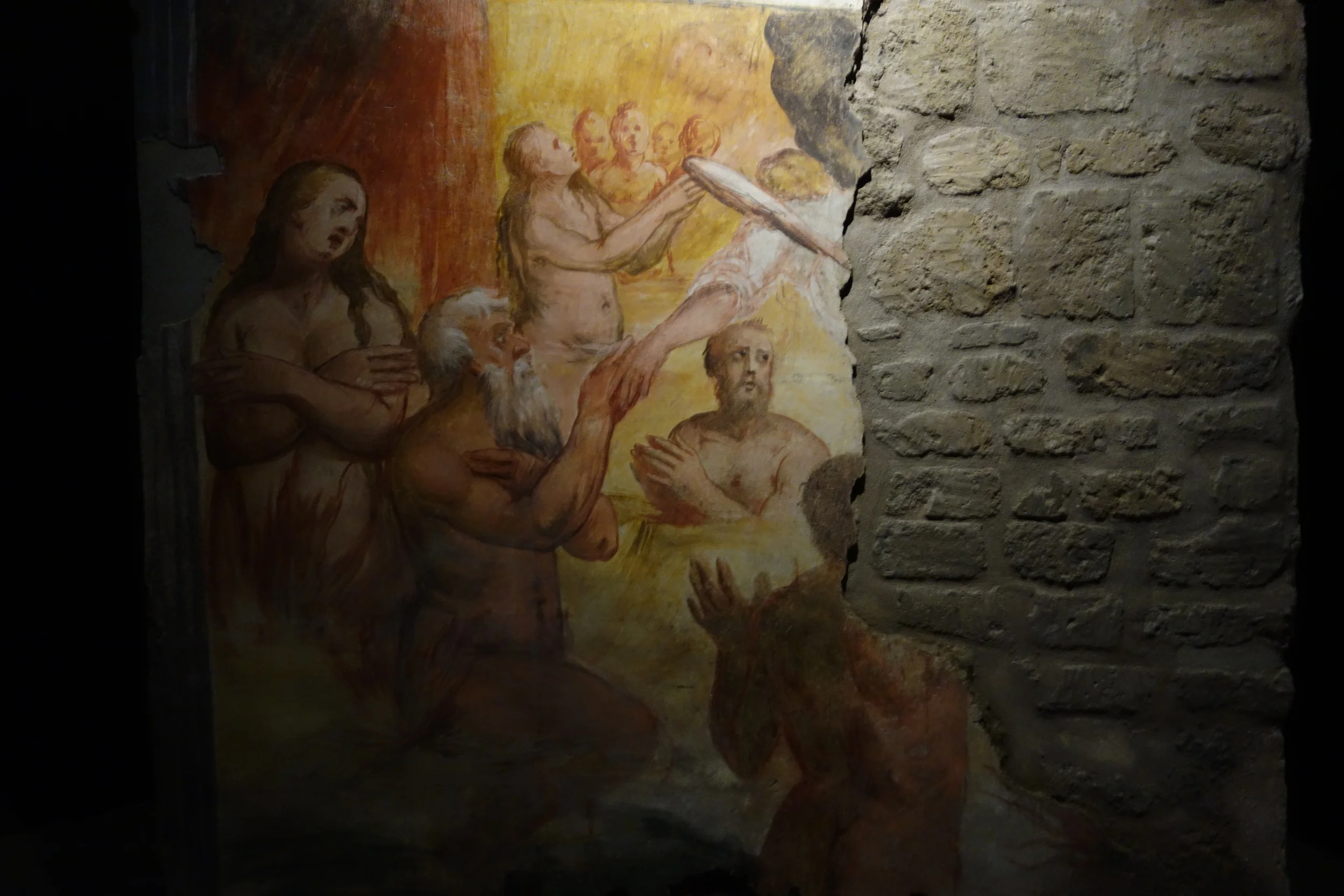
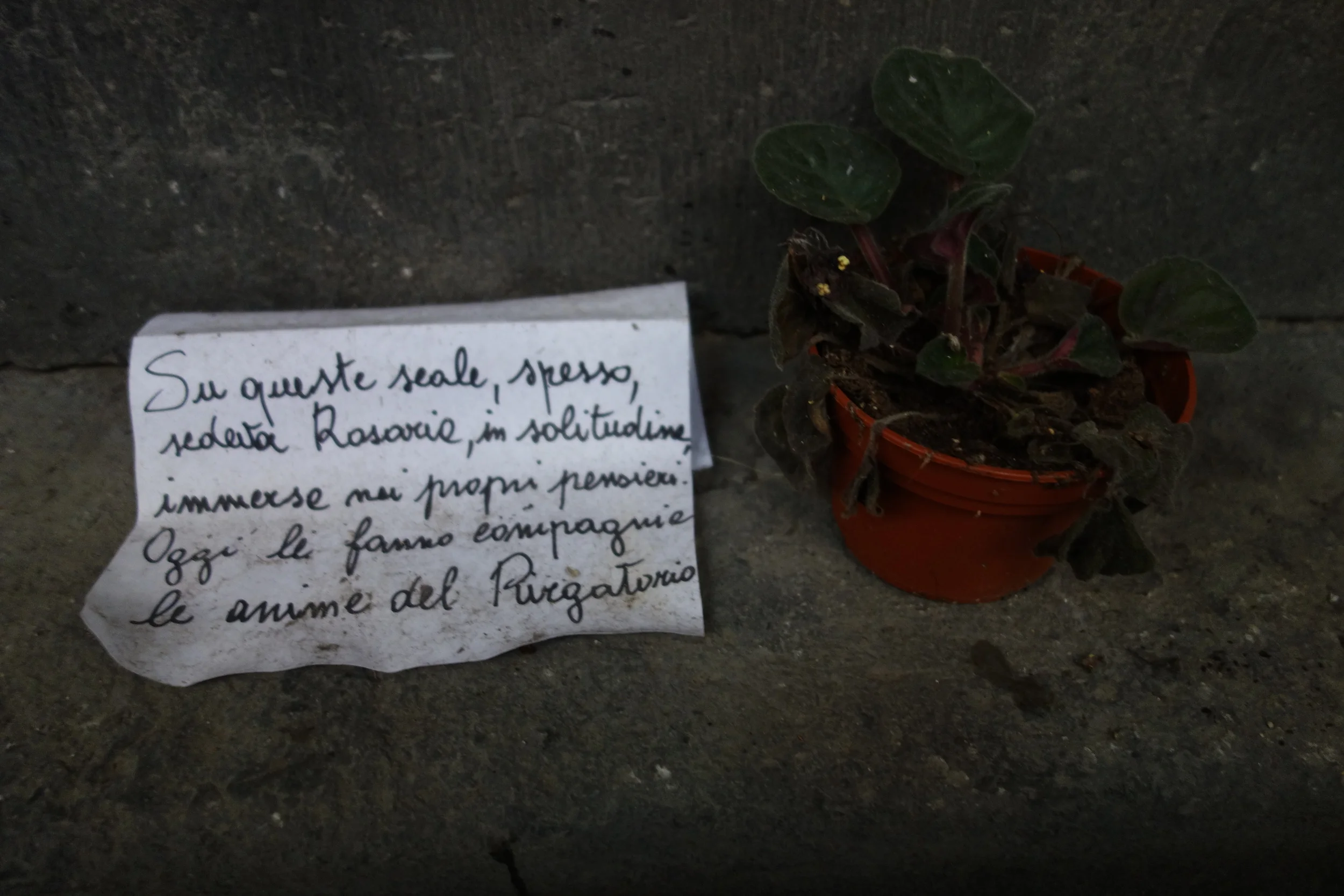

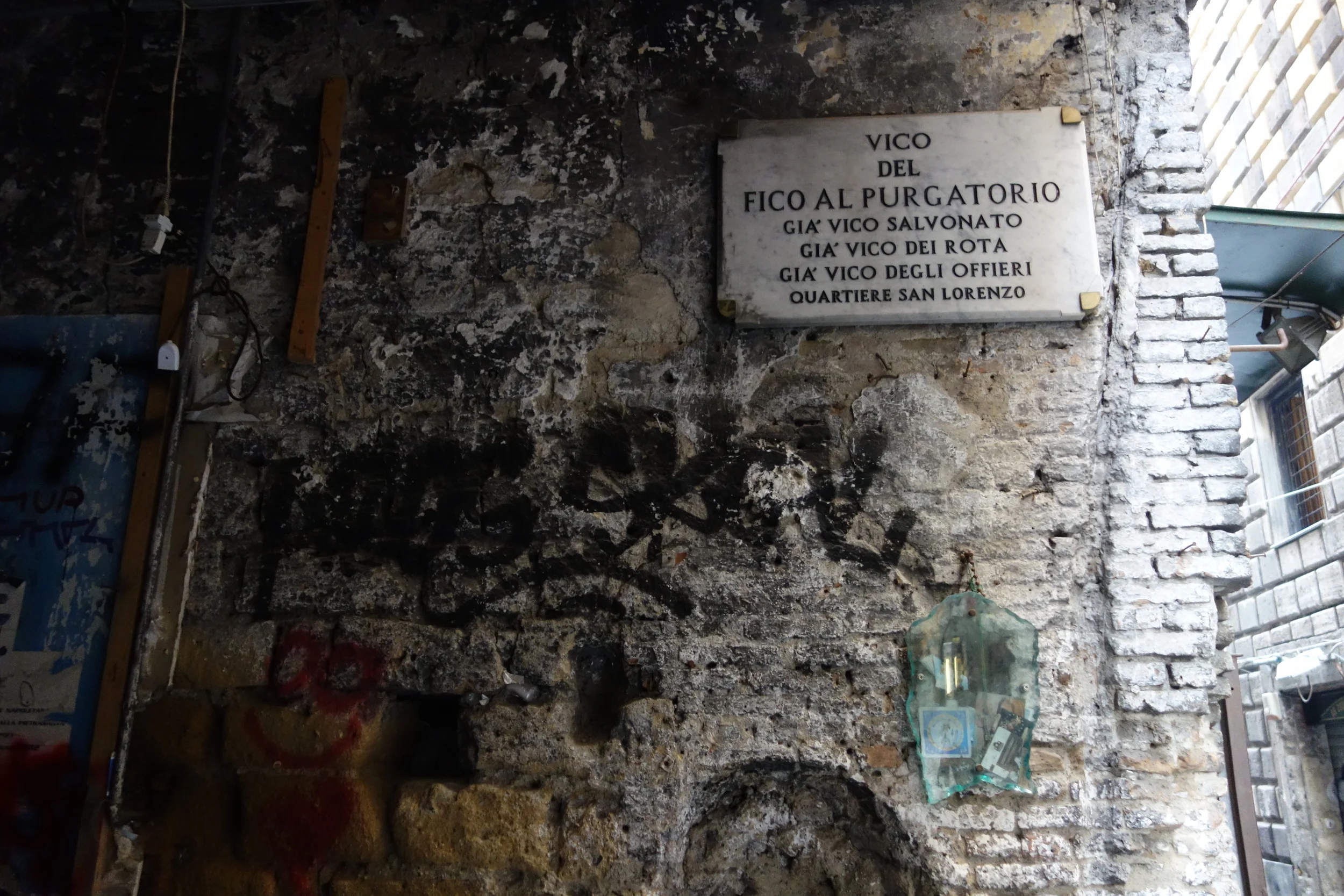
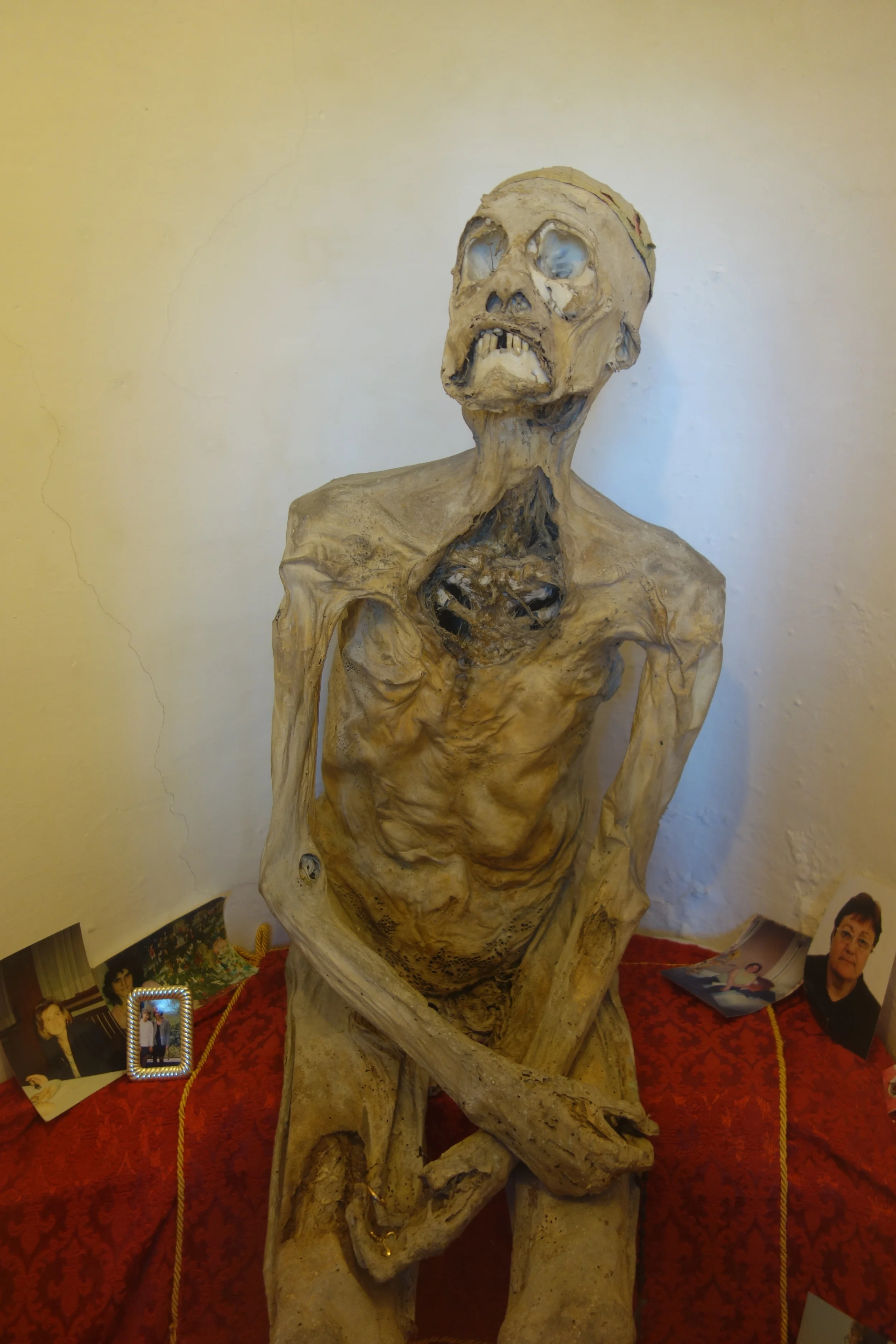
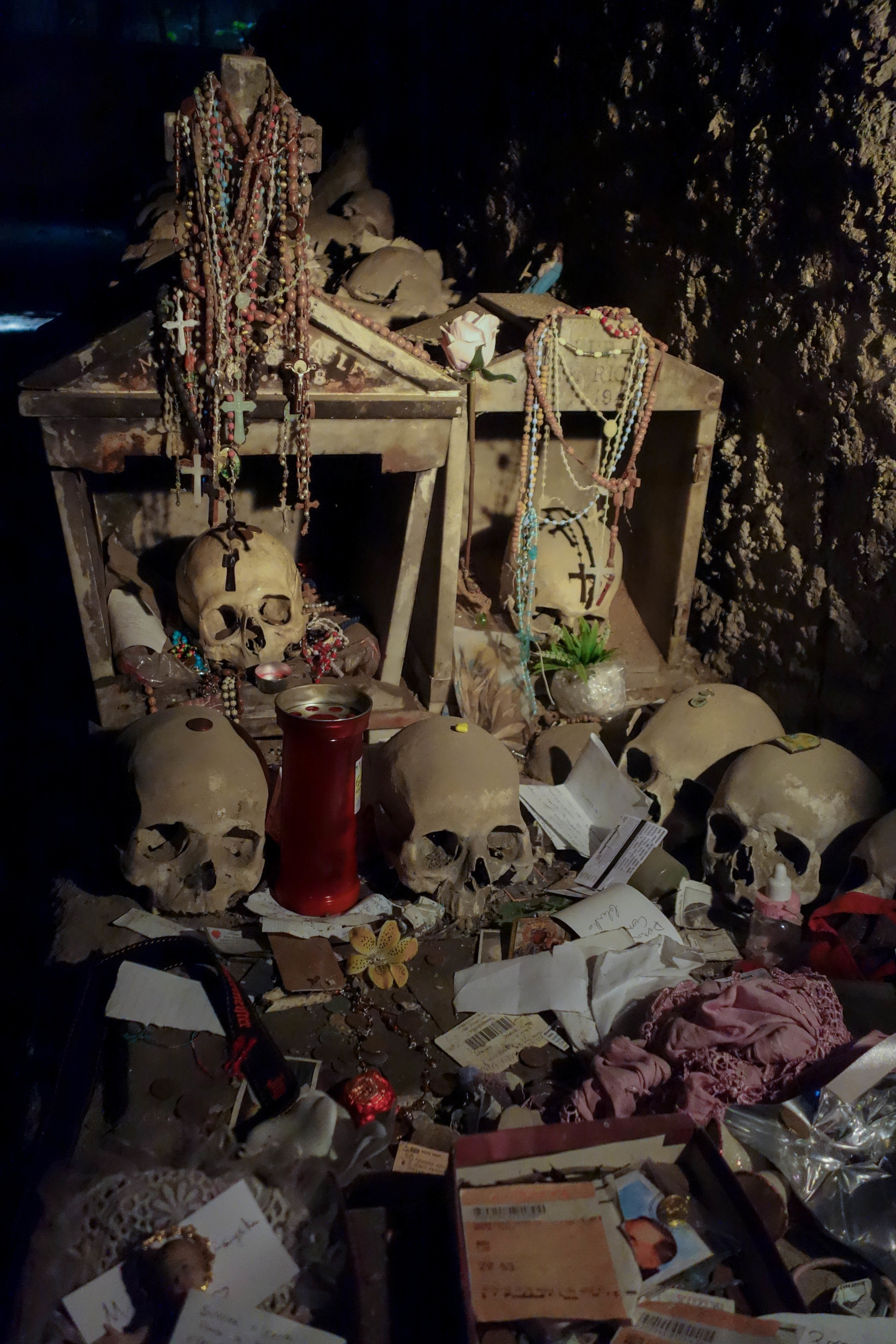
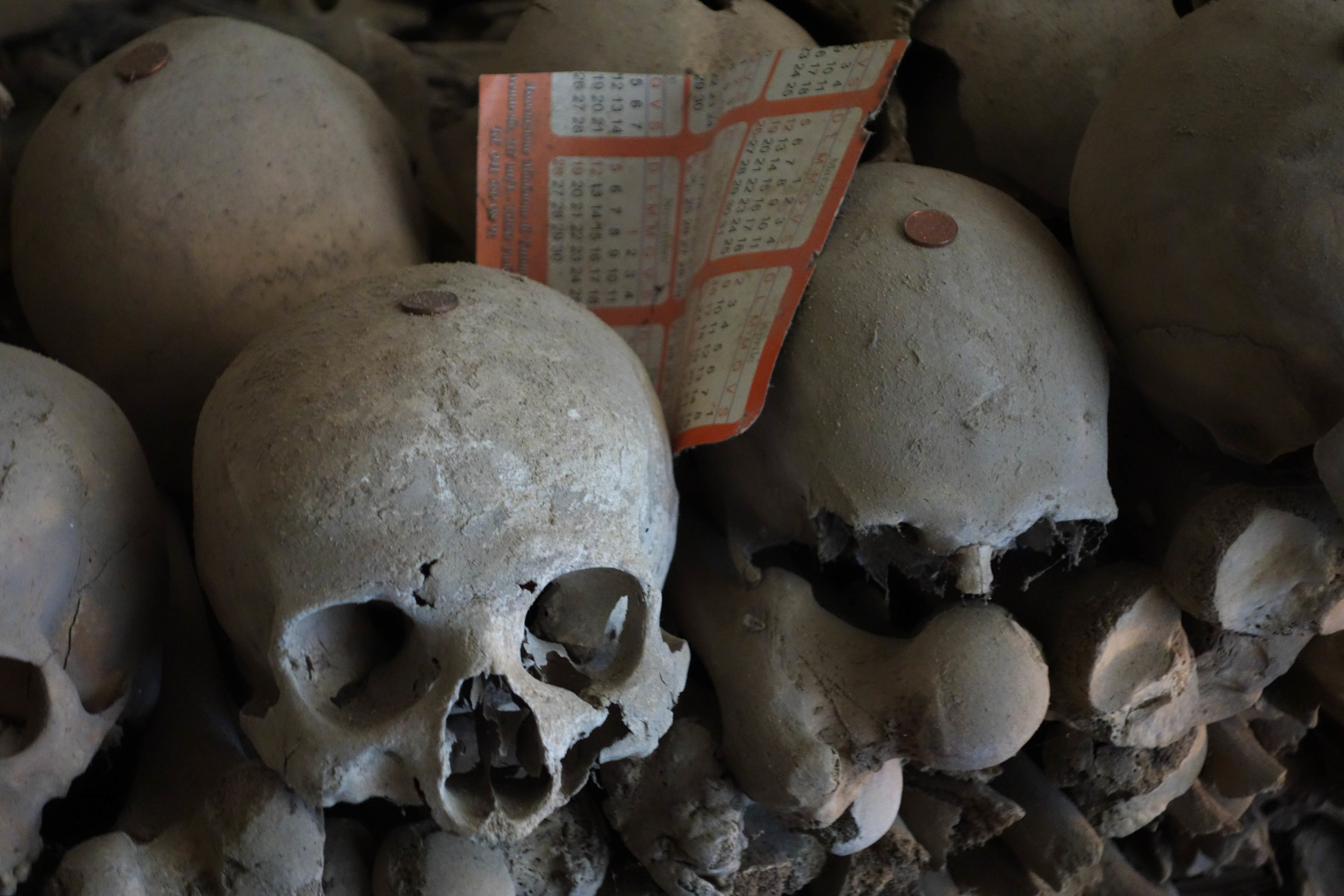

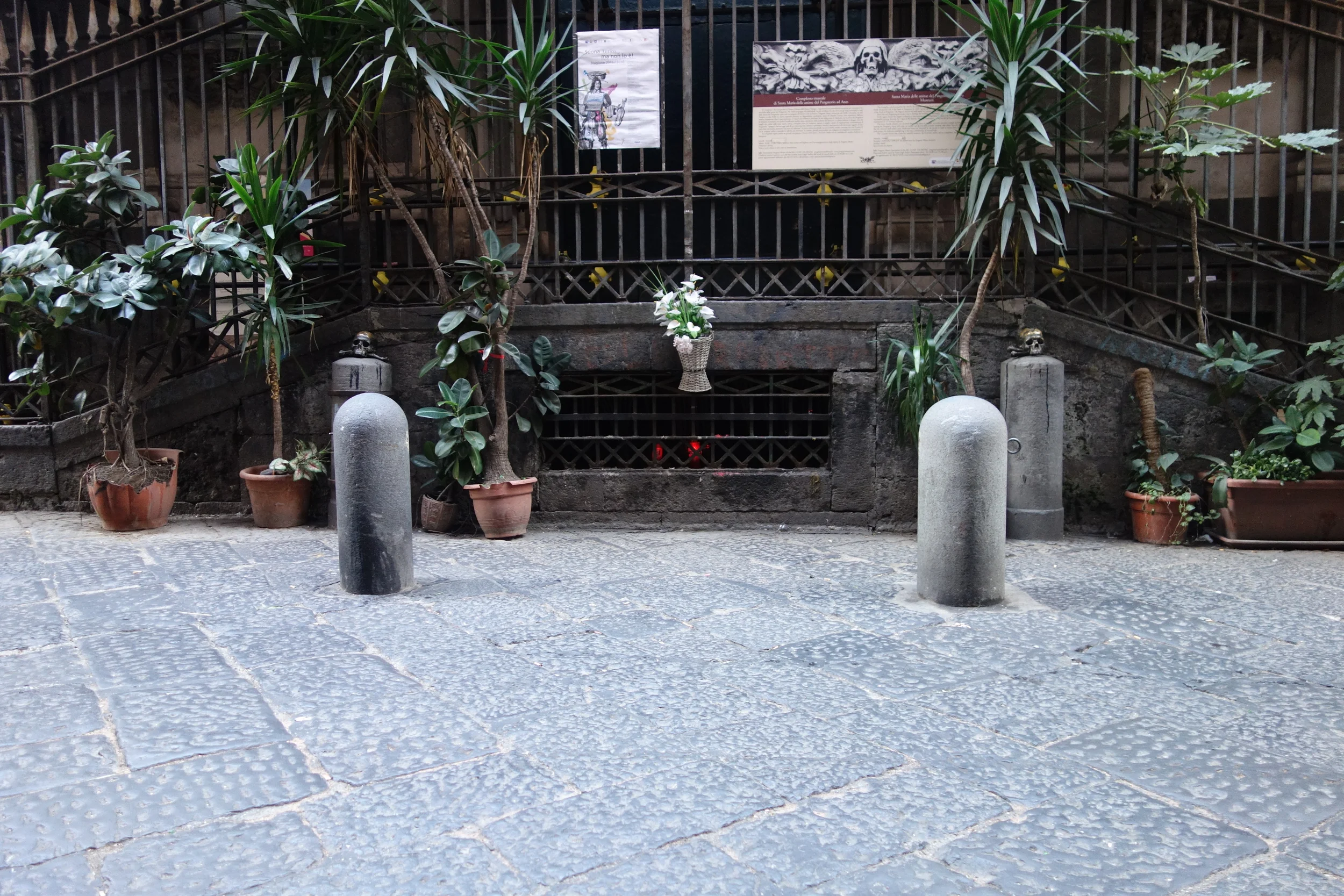
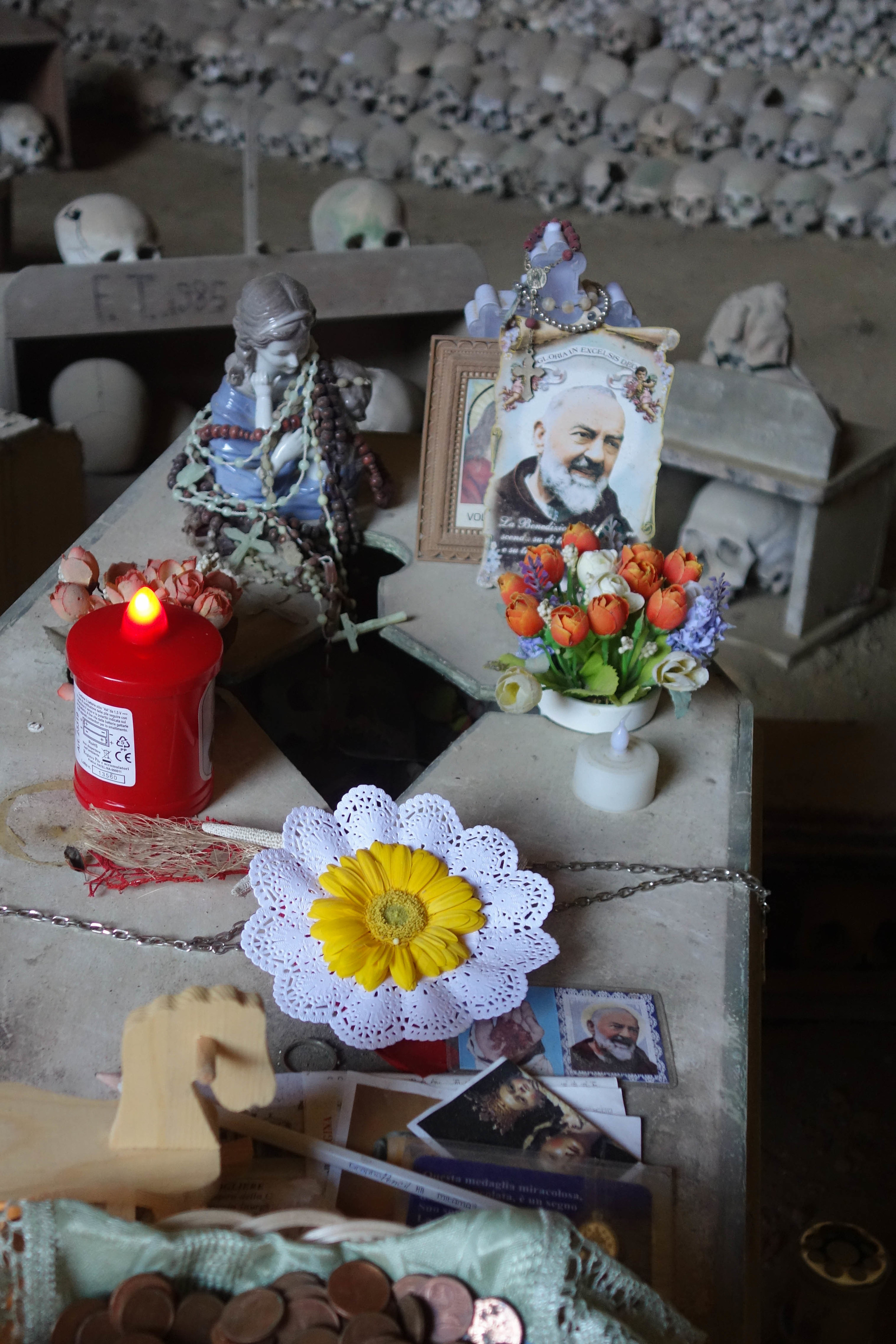

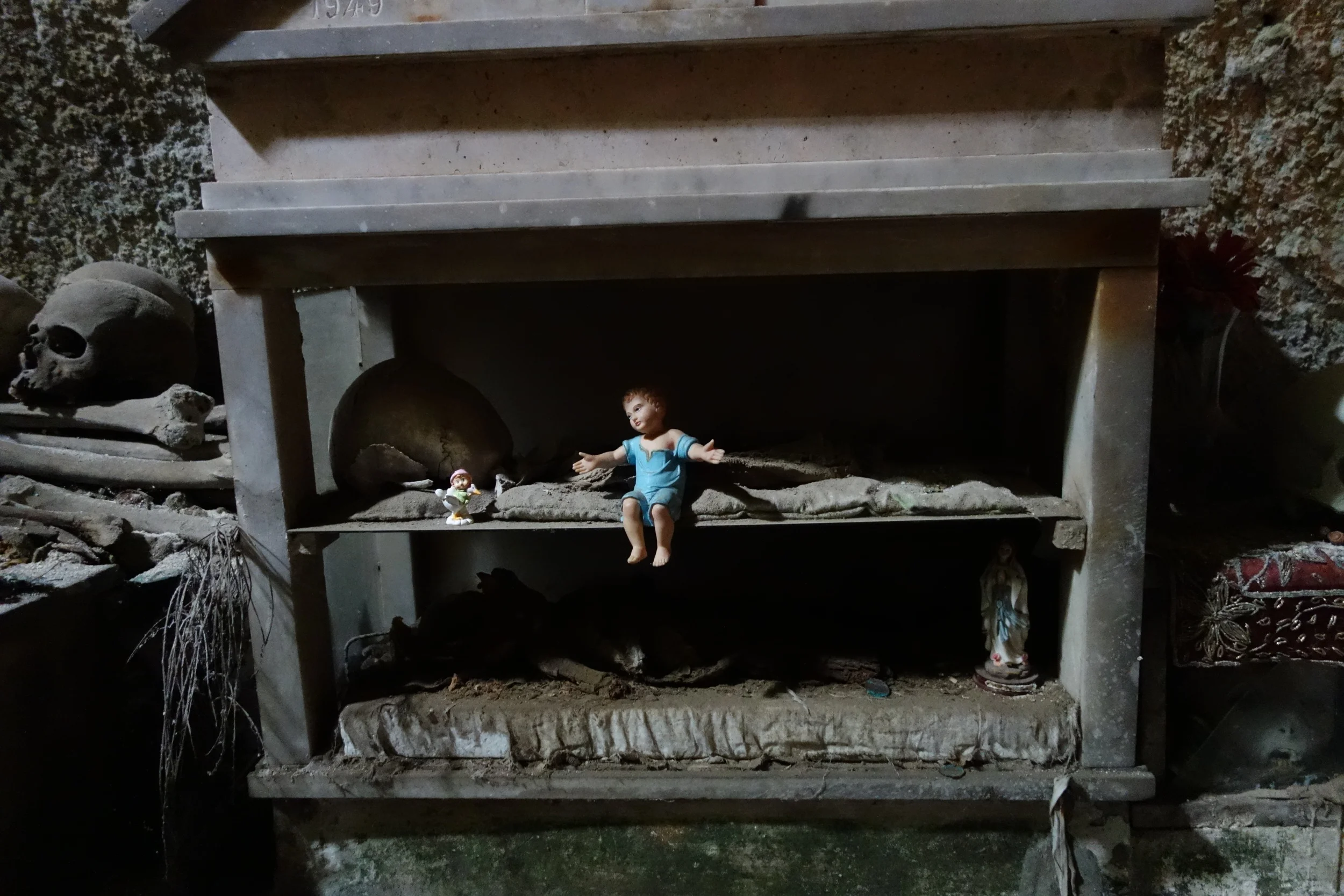
Crocodile Prayers
Originally published on Killing the Buddha.
I visited the church of San Ginés on safari like a fool. No one safaris in Madrid, and it’s frowned upon to safari inside a Catholic church. I went there to hunt a crocodile. Specifically, a taxidermied one rumored to be on display.
I milled around the church single-mindedly. The coffin of a saintly ten-year-old was not a crocodile. A life-sized weeping Madonna was not a crocodile. Pilgrims circled around a miracle-working statue of St. Jude. No matter; not a crocodile. When I exhausted every alcove, I decided to interact with the caretaker, armed with some Spanish I picked up from Sesame Street.
“Dónde está el… el…”
I held my hands flat in front of me—palms together but slightly cupped, and made two silent claps with my wrists touching.
The caretaker pointed to the chapel of Our Lady, a void of a room interrupted only by the light reflecting off an icon of the Virgin. A sign prohibited tourists in several languages. I considered thanking him and bailing, but that would confirm I was a godless crocodile hunter and curiosity would gnaw at me later. I couldn’t take his word, or rather his gesture, for it. I had to know.
If you’ve ever been a Good Catholic Girl, there are certain things you cannot bring yourself to do; violating the chapel of Our Lady in the name of hunting crocodiles was one of them. I compromised. Or that’s how I justified the worst Hail Mary I’ve ever said. I said it as my eyes scanned the room looking for a crocodile that wasn’t there. I pictured God receiving that prayer like a fax from an unknown number. He would tell an angel to file it under “crocodile,” and they would laugh because that was His euphemism for the trashcan.
On my way out, I saw a sign for a guided tour of the church’s art collection the next morning. Surely this would include their famous piece of taxidermy and this time I would avoid the international hand sign for crocodile. Back at my hotel I learned the stunningly obvious word cocodrilo.
Thanks to this new vocabulary, I understood the docent clearly when he said there was no cocodrilo (as we say in Madrid). The “chapel lizard” of San Ginés was an urban legend. The caretaker was having a little fun with another clueless tourist. There might have been a crocodile at one point, but people seem to think a former priest threw it away. It was rumored he was tired of people stopping in for Godzilla, but not so much for God.
In my defense, I hadn’t pulled the idea of a church crocodile from an urban legend. In Medina de Rioseco, Spain, the flayed hide of a crocodile is draped over a cornice. Taxidermy crocodiles climb the walls in St. Bertand-de-Comminges, France and Viso del Marqués, Spain. A fifteen-footer sits in a church just outside of Verona. Crocodiles are chained to the ceilings in Seville and Grazie.
Some, like the one in Seville, were exotic souvenirs, displayed in churches to allow the congregation a glimpse at one of God’s more impressive creations. Others are more symbolic. They’re like saints holding props meant to jog your memory about their lives (or more frequently, their gruesome deaths). They’re simple but memorable visual aides designed to edify illiterate masses, whether those masses are medieval peasants or modern women from Los Angeles trying to communicate via hand-puppet.
In these Catholic pictograms, crocodiles are dragons and dragons are evil incarnate. The poet Edward Young even pointed out that their breath looked like smoke when it hit cool water, making them ideal stand-ins for the biblical fire-breather Leviathan, a reptile whose “teeth are terrible round about.”
Anyone can kill an animal, but it takes more than bravery and weaponry to vanquish evil. For that, you need God. So we hear stories about dragon-slaying saints like George, Margaret of Antioch, and Theodore of Amasea who tops a column with a crocodilesque dragon in St. Mark’s Square. The flayed, stuffed, chained, and otherwise subjugated crocs sprinkled around Europe are the church’s metaphorical evil-hunting trophies.
The stories of these supernatural crocodile-slaying saints are meant to illustrate God’s power—but try explaining that to a crocodile. Especially the ones who had their lives cut short by Catholic missionaries abroad living out their Saint George fantasies. They undoubtedly would’ve preferred to die of old age in their swamps but now their carcasses are strung up in church. They never asked to be anyone’s symbol of anything, and yet, here they are. Or, in the case of San Ginés, here they aren’t.
***
The day after my failed safari in Madrid, I took a train to Ávila to see, among other things, a church rumored to have its own crocodile. But on a Sunday in early January the little medieval city was hung over from New Year’s and seemed surprised to have a visitor. The bus that drove tourists outside the city walls was canceled. So I walked.
I walked through the city, outside the medieval walls, past the place where the modern apartment buildings stopped, past where the pavement turned to dirt. I walked past where the grazing sheep were allowed to roam until I got to the church.
I imagined the crocodile, if it existed, would be in the church’s famous collection of ex voto, a tradition that sounds fairly pedestrian on paper. If you pray for something and God helps you, you get Him a nice thank-you gift. Most ex voto are humble metal charms that depict the thing you prayed for. Body parts like eyes, legs, and breasts are common, but in Mexico City I even saw a desktop computer.
If God helps you in extraordinary ways and you have the means, you can let your imagination run wild when deciding on an ex voto. In Rome I saw a life-sized leg made of flesh-colored wax. There are mosaics made of seashells in Barcelona and miniature jeweled crowns made for statues of Mary in Prague.
In the handful of churches that still keep extensive ex voto collections, it’s easy to see how the 16th century curiosity cabinet grew out of the church. While the holy bone relics of the saints might have become pieces of Egyptian mummies or medical specimens, other pieces just seemed to linger on in their new secular context. In the very first image of one of these wunderkammers, you’ll find a stuffed crocodile.
In Ávila’s ex voto room there were baby clothes, sports trophies, and an entire rack of wedding dresses. It looked like a Goodwill. Concealing my disappointment, I gave up on my safari and went in the church. But there, in the back, I found one more ex voto too large for that strange little room—a real stuffed crocodile.
A plaque and a painting on the left side of the altar filled in the details. While traveling in newly discovered America, a Spanish man was nearly killed by the crocodile but thanks to an intervention by the Virgin Mary, he was able to slay the beast. In thanksgiving he stuffed it and turned it into an ex voto. Though taxidermy was still in its infancy (which may explain why the crocodile’s back legs appear to be on sideways) a crocodile was a relatively easy animal to preserve, because its hide is so tough. The oldest extant piece of taxidermy is a crocodile, claimed by a church in Lombardy.
Satisfied, I set out to make my way back into the city before sunset. Outside, the cathedral of Ávila was a tiny spike on the horizon. It was a successful safari after all. I discovered the crocodile. To be fair, he was exactly where he had been for hundreds of years, but a safari is always about discovering what’s already there.
I started out towards the city, feet tired, church shoes caked in mud. I had a nagging thought about the church in Madrid. What if my prayer didn’t go unheard after all? Maybe God looked at yet another crocodile prayer coming in from San Ginés and said to His angel, “You know what, let’s give this one a crocodile. But go ahead and cancel Ávila’s bus service.”
I contemplated sending a crocodile to Our Lady at San Ginés in gratitude.
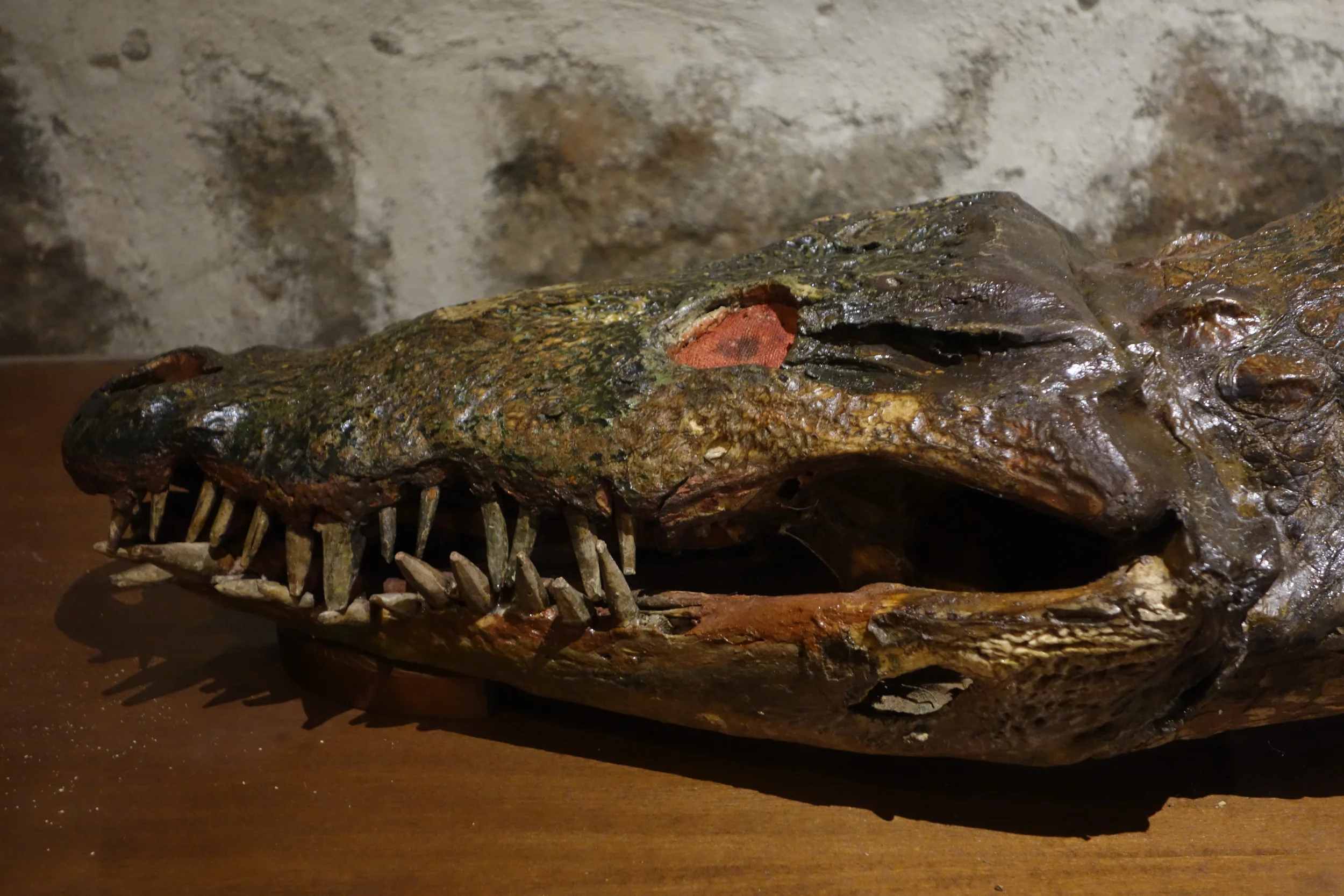
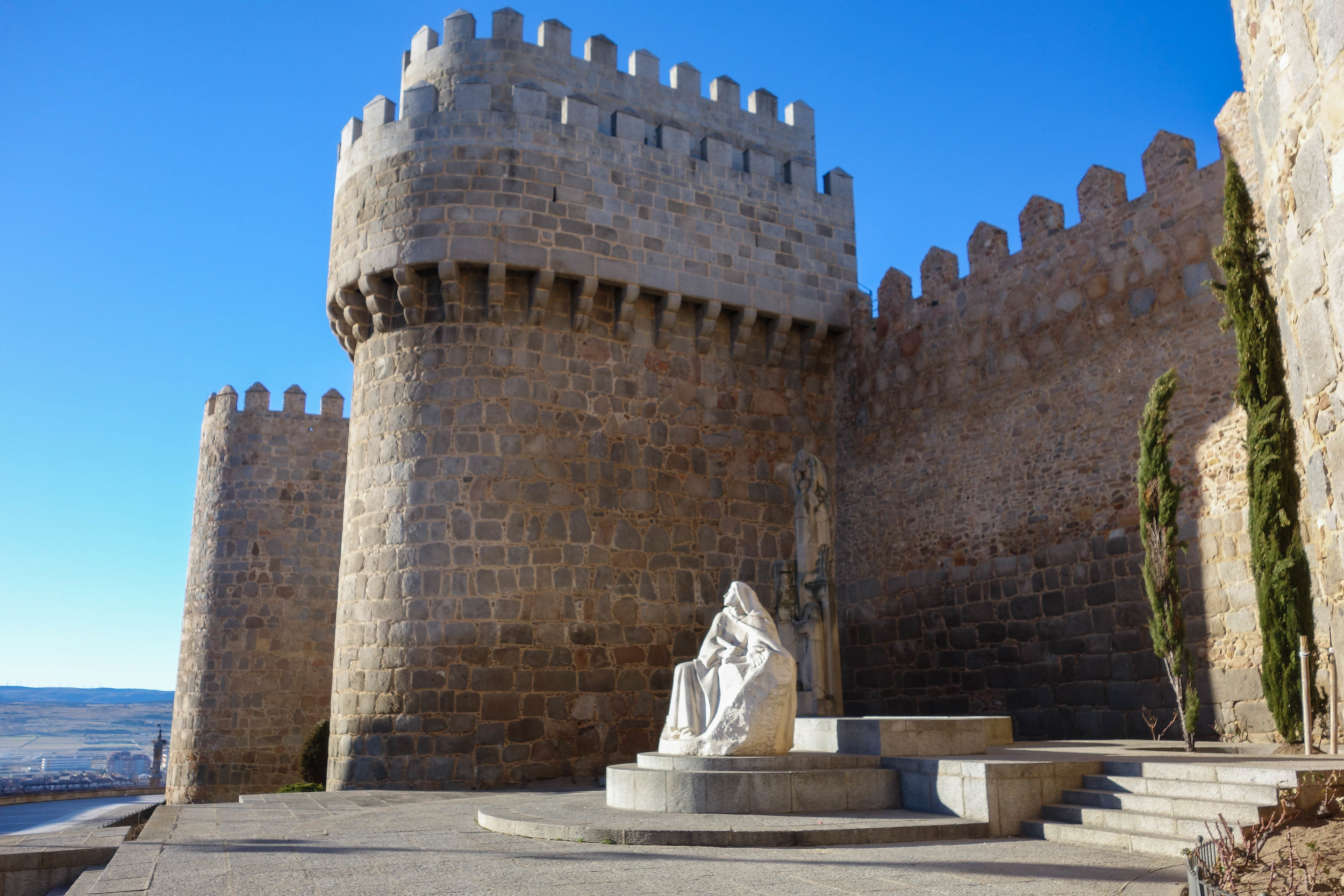


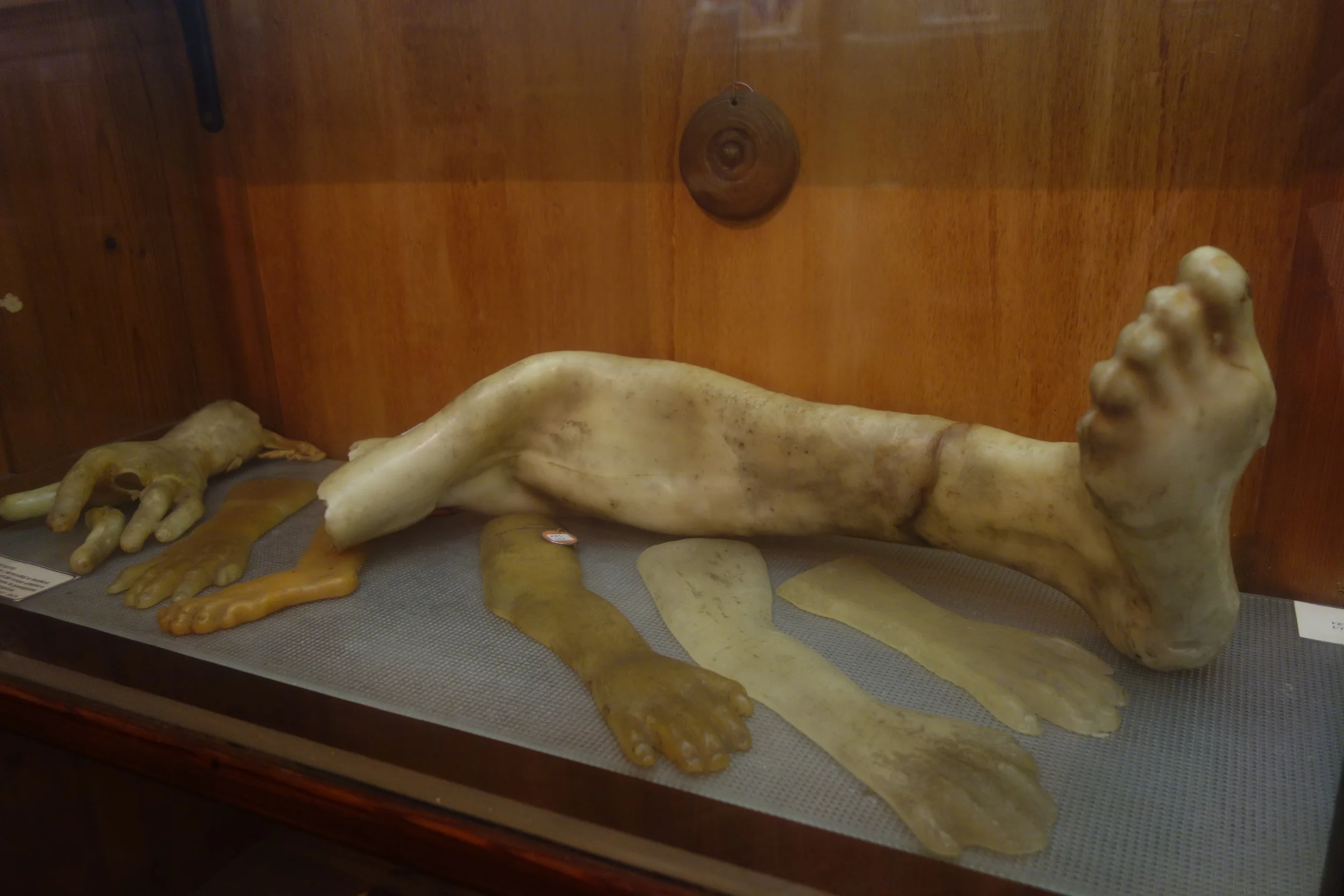

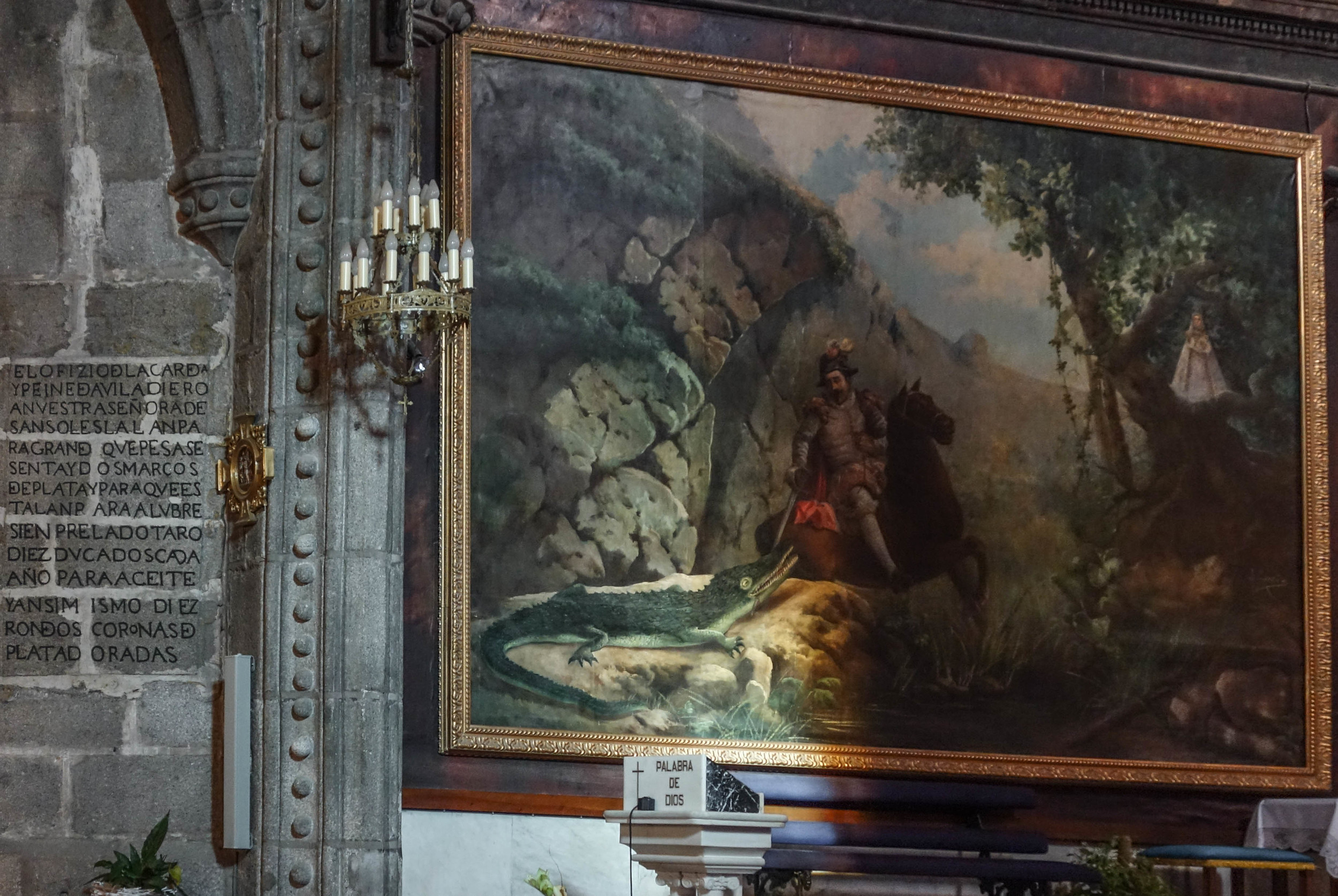
If you’re not bleeding on this year’s Met Gala red carpet, you’re not doing it right.
Originally published in The Fader.
In celebration of this year’s Met Gala theme, legendary fashion moments courtesy of actual saints.
Tonight is the Metropolitan Museum of Art’s annual Met Gala, and this year’s glitzy theme is Heavenly Bodies: Fashion and the Catholic Imagination. As seen in our flashback to the event's 2008 red carpet,it’s likely that many of the guests will arrive looking great, but showing a lack of Catholic imagination. Those who do arrive in celebration of this year’s holy theme might take a cue from Vatican City, draping themselves in ermine or wearing a massive fancy hat like rich people have for at least a thousand years.
But anyone who really wants to get noticed should borrow a look from the saints. Since the early days of Christianity, saints have designed clothes and accessories meant to torture their bodies, a practice called mortification of the flesh. For them, the human body, with all its functions, needs, and cravings, was inherently sinful. Thus, causing it pain or humiliation was considered holy.
If any A-listers are still looking for something to wear, or if any of our readers have got an itch to learn more about some of the earliest fashions to emerge from the Catholic Imagination, we've put together a saintly style-guide. Wear something off this list and you might stay in God’s good graces.
A Crown of Spikes
What is it: This accessory was worn by a lot of saints as an homage to the crown of thorns Jesus wore during his crucifixion, and it doubled as a way to punish themselves as penance for their sins. There’s plenty of room for personalization. Various saints have used nails, pins, thorns and stinging nettles and crowns (and bracelets and belts).
Who wore it best: St. Rose of Lima. As a girl her mother gave her a crown of flowers to wear so she affixed it to her head by pushing a pin into her scalp so deep it had to be surgically removed. She considered this adequate punishment for indulging her mother’s vanity.
Who should wear it this year: This is perfect for a party-ready woman who
doesn’t want her flower crown to budge on the dance floor, like Beyoncé.
A Hairshirt or Cilice
What it is: A hairshirt is an undershirt made of coarse animal hair or sack cloth that’s meant to itch and irritate your skin all day (until it sometimes becomes matted with blood). It’s also sometimes called a cilice. But a cilice also refers to a piece of chainmail that’s tied or buckled around the upper thigh. This metal garter belt has sharp prongs designed to dig into your leg with every move.
Who wore it best: St. Peter Damian, who found the cilice a little too easy so he added tight iron bands that barely allowed him to move. He kept this practice a secret until the smell of his infections was impossible to ignore.
Who should wear it this year: A hairshirt only works if being extra and looking uncomfortable is basically your brand. I’d recommend it for Sarah Jessica Parker. A thigh cilice calls for a serious gown-slit and a certain comfort with blood as an accessory, so it could be a real return to form for Angelina Jolie.
The Stigmata
What is it: Sometimes the wounds Jesus received when he was crucified mysteriously appear on a person if they’re particularly holy. This might include nail holes in their wrists, hands or feet, maybe a gash on their side, or blood oozing down their forehead or back as if they’ve been wearing a crown of thorns or scourged.
Who wore it best: Padre Pio. Of course some people, even other priests, think this flying, mind-reading, stigmatic saint from the 1960s might have faked his wounds with carbolic acid. But don’t act like you haven’t passed off some "Gucci” from Canal Street.
Who should wear it this year: The real stigmata is so rare only Rihanna has a shot at getting it.
Alpargatas
What is it: Rough hemp sandals worn year-round by the Discalced Carmelite order. They used to always be handmade by the nuns and some of them still are.
Who wore it best: St. Teresa of Ávila. When she reformed the Carmelite order, her first idea was to make the nuns to go barefoot, but then she decided that might be dangerously sensual.
Who should wear it this year: Kanye West, who’s probably ready to sell us $800 YEEZY rope sandals anyway, although it might be worth it if he considers the Carmelite vow of silence.
Body hair
What it is: It’s just a lot of body hair. But sometimes God gives people hair when they literally have nothing to wear. When the virgin-martyr St. Agnes was stripped of her clothes before being executed, she miraculously grew long hair to preserve her modesty.
Who wore it best: The best hair-couture goes to Mary Magdalene. Legend says she spent the end of her life living a penitent life alone in a cave. When her clothes eventually disintegrated, her blond hair not only grew long enough to cover her, but also grew like thick fur all over her body.
Who should wear it this year: He who shall not be named (and shall not be invited back) should keep growing out that Propecia-fueled blond patch he wraps around his head… and then go live a penitent life alone in a cave.
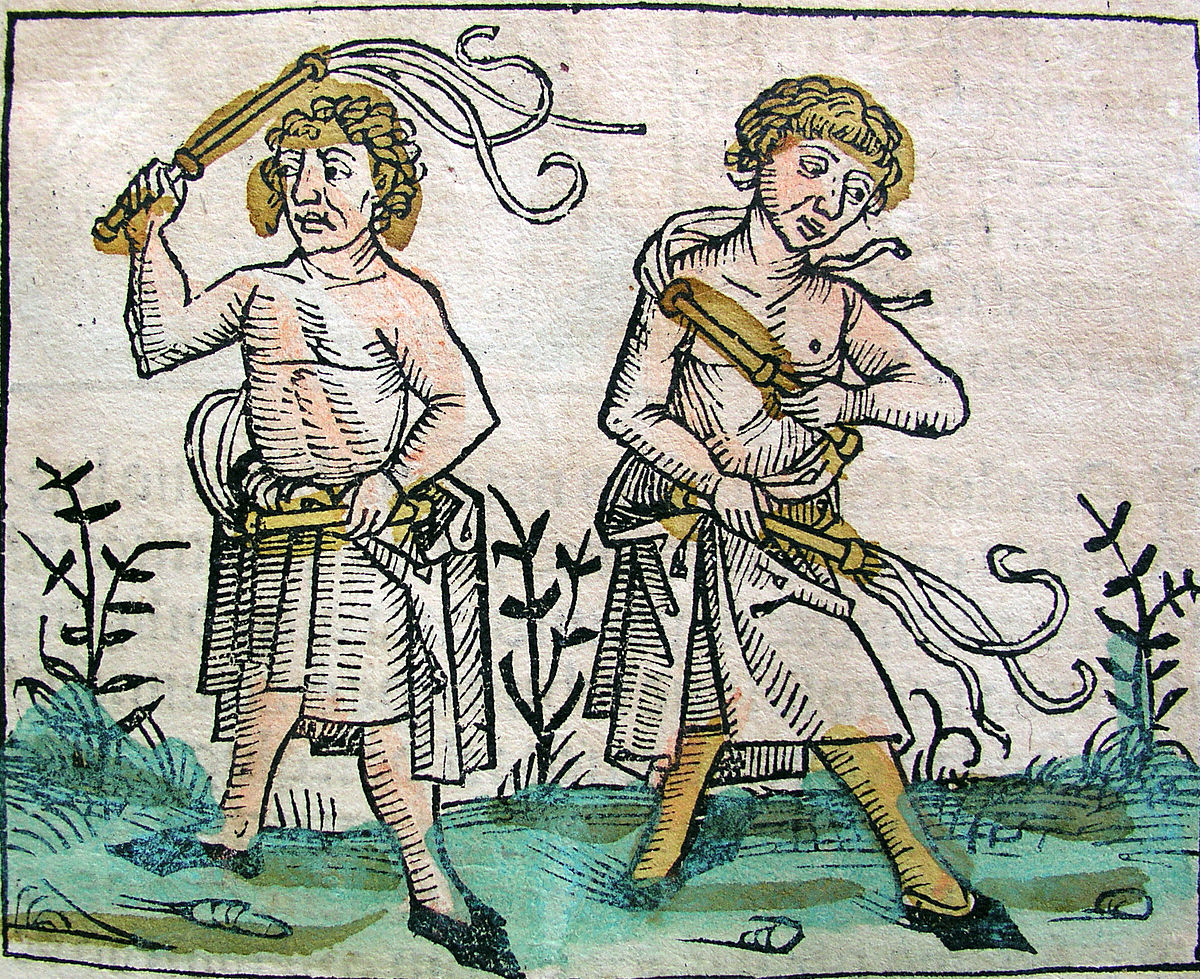
The Mummies of Mexico City
Originally published on Atlas Obsura.
Being in Mexico City for Holy Week has its advantages. If you’re interested in Catholic rites and rituals you’ll find plenty to do during the solemn holy days leading up to Easter. Some parishes sponsor reenactments of the crucifixion performed with varying degrees of historical accuracy and gore. Others hold funeral processions featuring life-sized effigies of Jesus in glass caskets. In a handful of places you can still find people who burn Judas in the form of papier-mâché devils.
But if you’re interested in traditional tourism or just looking for something to do in between services, you’ll find you’re mostly out of luck. The historic churches are in full mourning. Their best artwork and altarpieces are obscured by purple drapes to emphasize the sadness of these holidays. Many of the city’s excellent museums are closed. The locals are going to church, getting out of town or just enjoying some time off. I was the odd tourist out — wandering around the city on a day when everyone else had somewhere to be.
That’s how I wound up alone with twelve mummies. Looking for something to do in between Holy Week solemnities, I went to one of the only museums open during the later, more sacred days of Holy Week — the Museo de El Carmen. The museum, which primarily features Colonial era religious art, is housed in the old monastery school of San Ángel. Although it seems strange that a religious museum would be open on the holiest days of the year, the reasons for that are as much a testament to its colonial past as its Spanish-style architecture and cobblestone streets.
The monastery school and attached chapel were founded back when San Ángel was a rural town, separate from the massive sprawl of Mexico City. It was designed by Spanish Carmelite friar, Fray Andrés de San Miguel, and built between 1615 and 1628. Like many religious orders, the Carmelites raised money by selling space in their crypt under the school with the understanding that after a few years, the bones would be collected and stored in an ossuary so the space could be resold.
In 1857, the monastery school secularized under the Reform Laws designed to chip away at the Catholic Church’s hegemony in Mexico. This ultimately led to the school being abandoned by 1861. At that time, the crypt was simply sealed up with its current set of dead parishioners inside.
The crypt was forgotten about until 1917. That year, members of the Liberation Army of the South, a Revolutionary force dedicated to land redistribution for peasants and indigenous people, raided the monastery school. When they lifted the heavy cover off the crypt, they were surprised to find a cache of naturally mummified bodies instead of monastic wealth. The land in San Ángel was known for being ensconced in volcanic rock and the unique profile of this soil allowed many of the bodies to dehydrate quickly and discouraged the bacterial and fungal growth that would normally aid decomposition.
The soldiers left the mummies intact, but left the crypt uncovered. Within the next few years, the bodies were discovered yet again, this time by citizens of San Ángel secretly exploring the decrepit school. Word gradually got out and the mummies became well known around town. According to church lore, a Carmelite friar tried to convince the people of San Ángel to rebury the mummies but the town refused on the grounds that they had already adopted them as citizens. In 1929, the mummies were placed in their velvet-lined wood and glass caskets that are still in use today.
Though the chapel at El Carmen is still consecrated and owned by the Catholic Church, the monastery school and its crypt are still secular and have been run by the Instituto Nacional de Antropología e Historia since 1939, hence its unusual opening during Holy Week.
In 2012, the crypt was fully restored and opened to the public along side an exhibition featuring 30 large-format photographs of the mummies and a Day of the Dead altar that encouraged people, as cited in the Agencia EFE News Wire, to “contemplate these eminent people in detail: their expressions, the conditions of their skin, and the clothing with which they were dressed for death."
For those not scared off by their skeletal features, a closer look at the mummies allows a glimpse into their lives. In contrast to the more famous (and numerous) mummies of Guanajuato who were unceremoniously dug up for failing to pay a grave tax, these are clearly the bodies of well-to-do parishioners. They wear cravats, vests and jackets. One woman even wears a jaunty hat with a bow. Though dehydration has twisted their faces into grimaces, their bodies don’t show signs of trauma brought on by poverty and dangerous living conditions like those in Guanajuato do.
The inscription above the door to the crypt is from Job 5:26, appropriate for these comparatively serene mummies. “Thou shalt come to thy grave in a full age, like as a shock of corn cometh in in his season.”
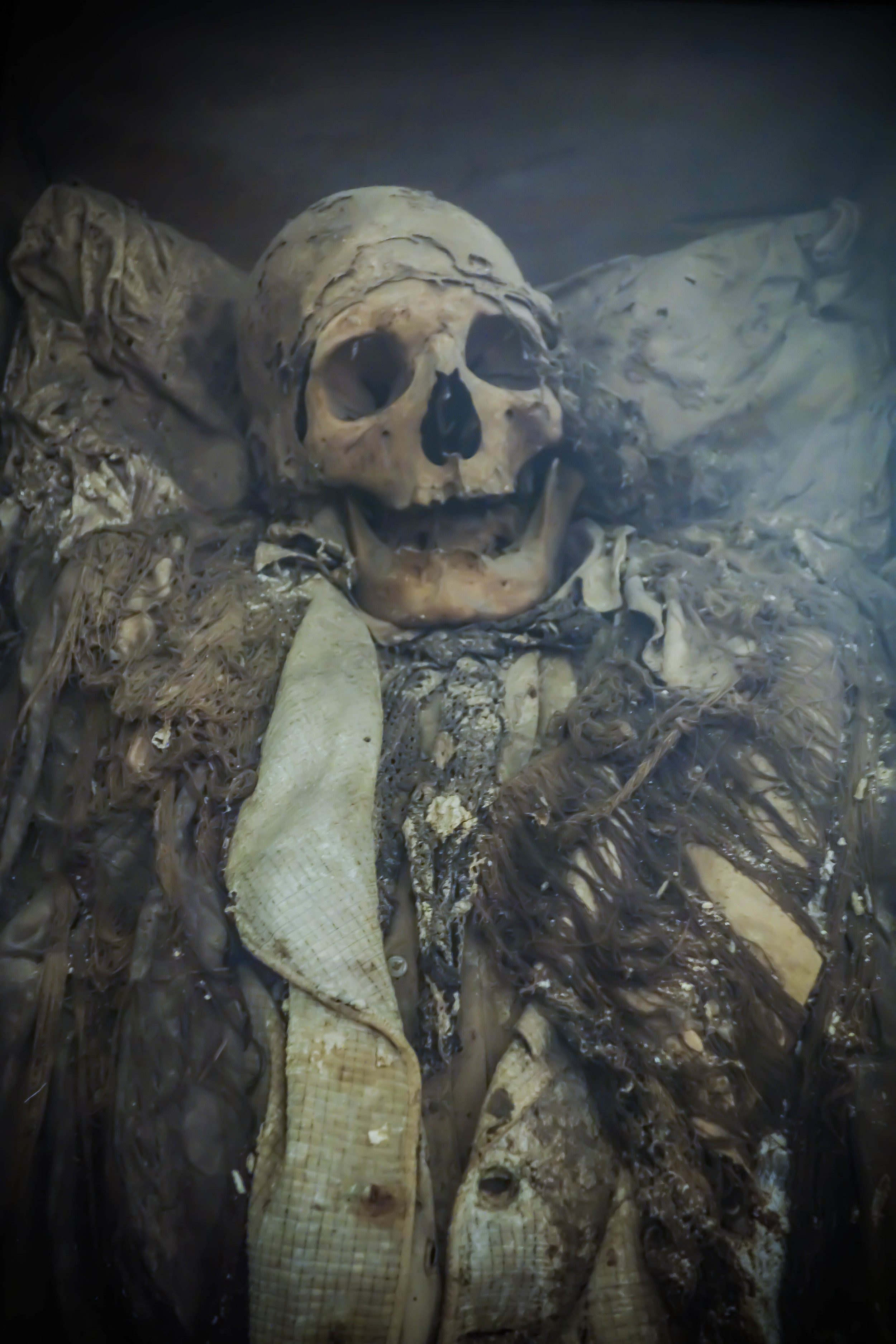
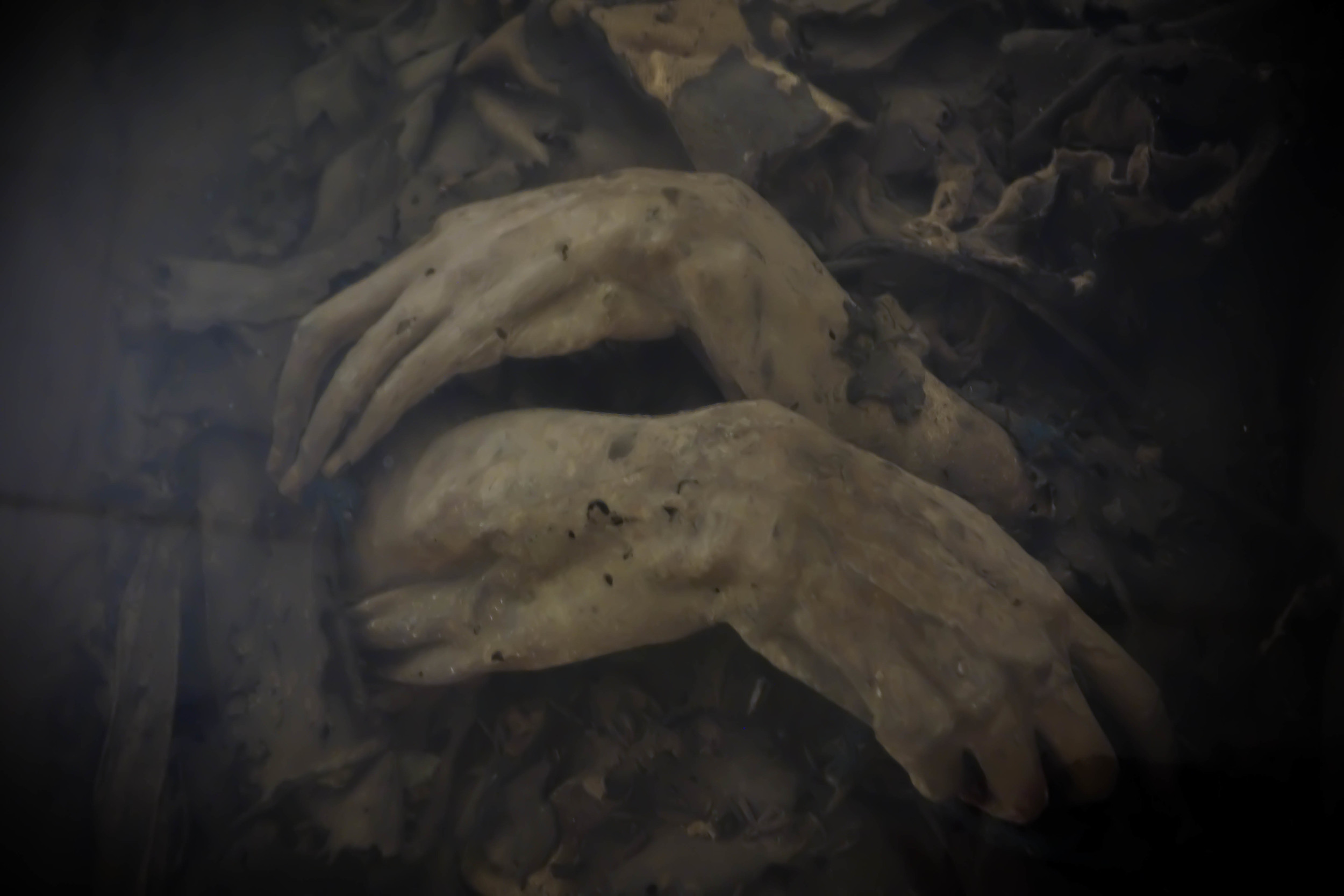
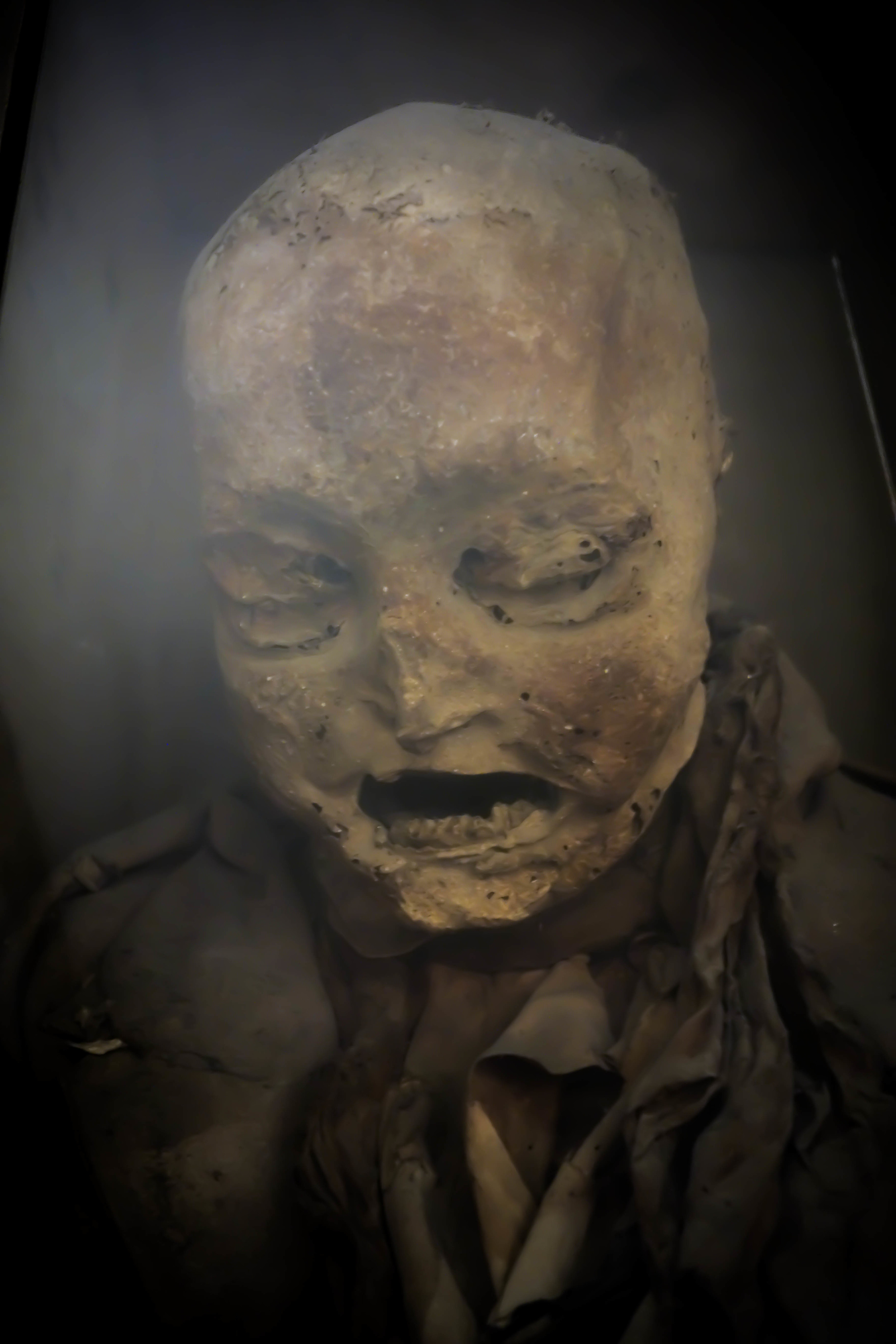

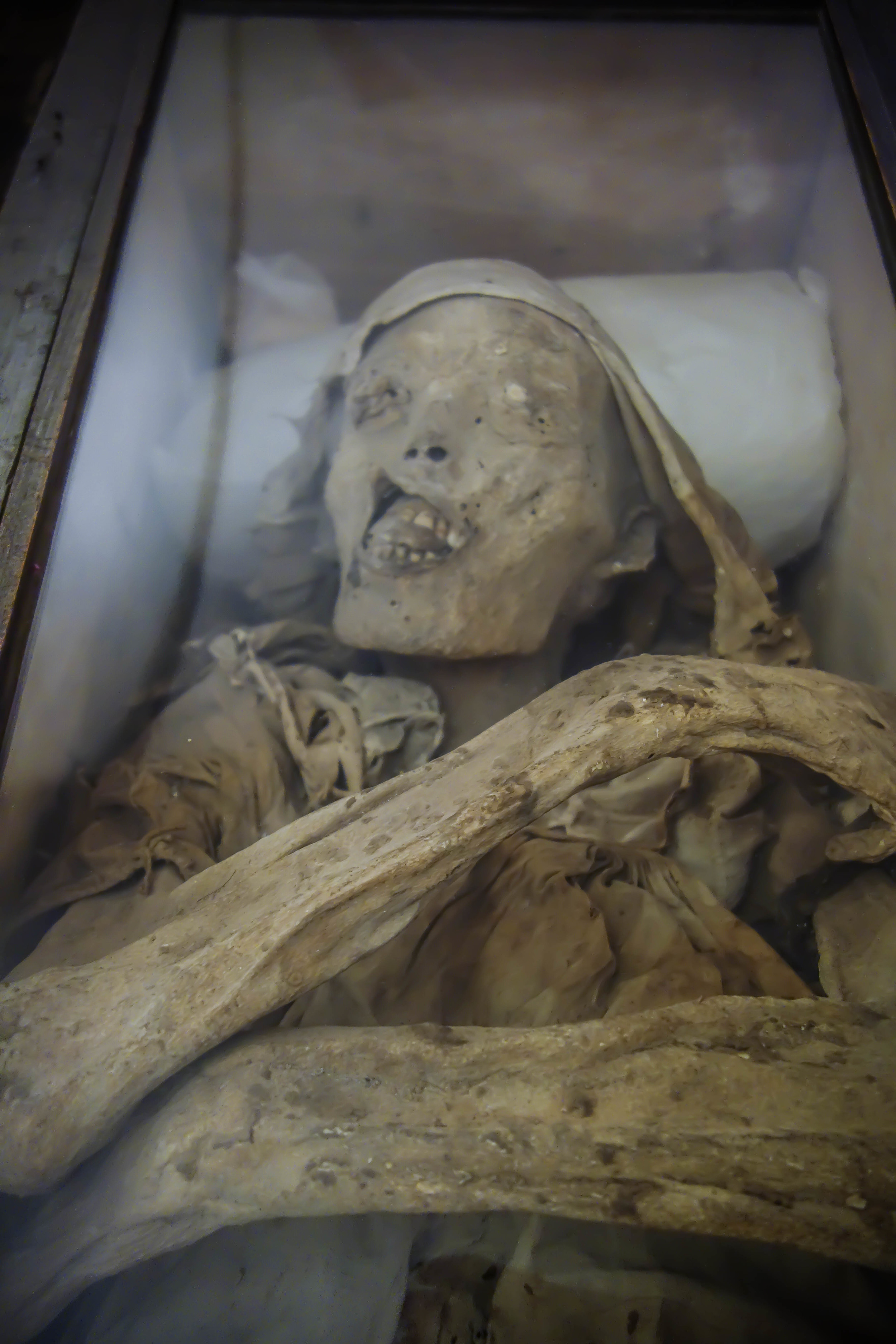
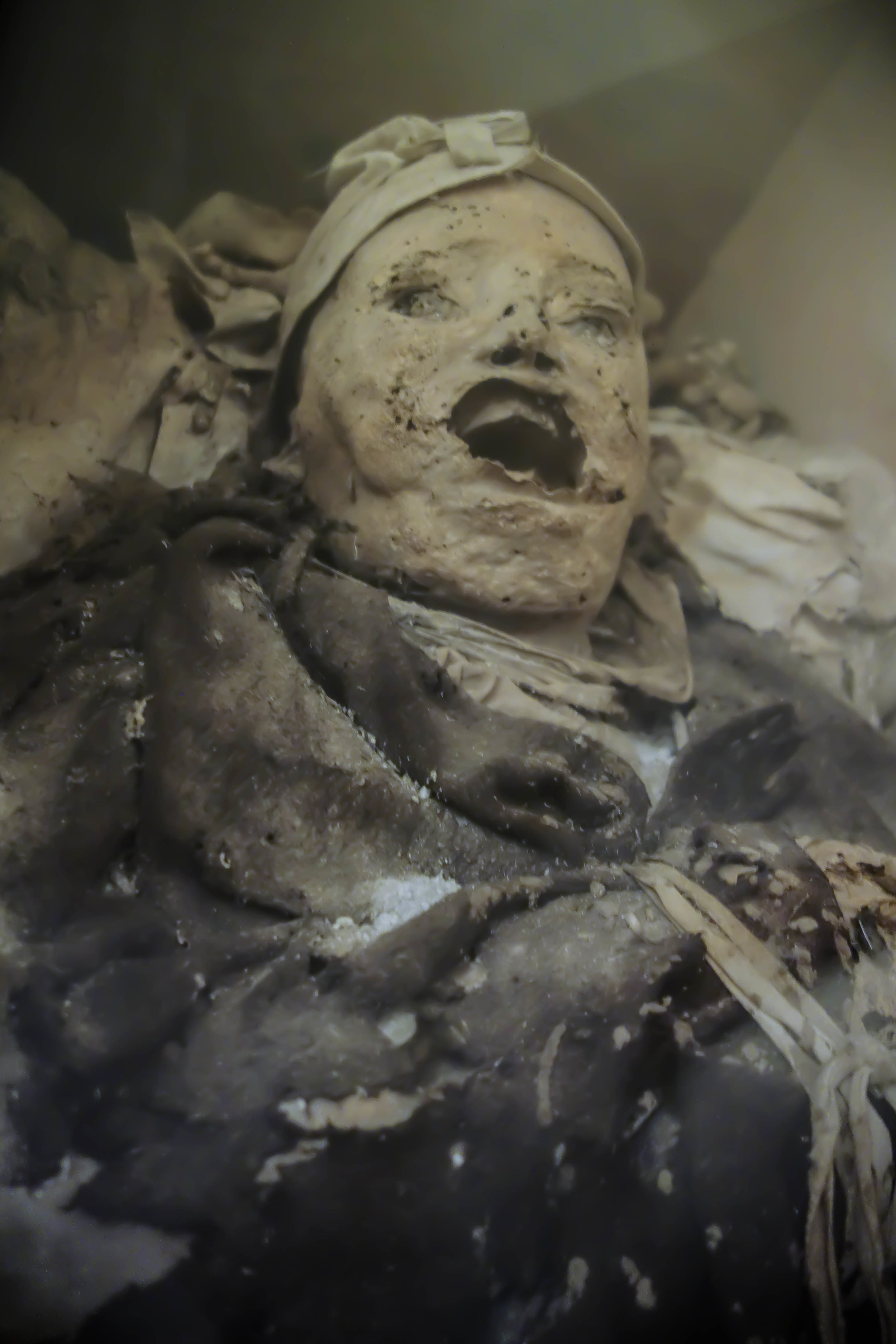
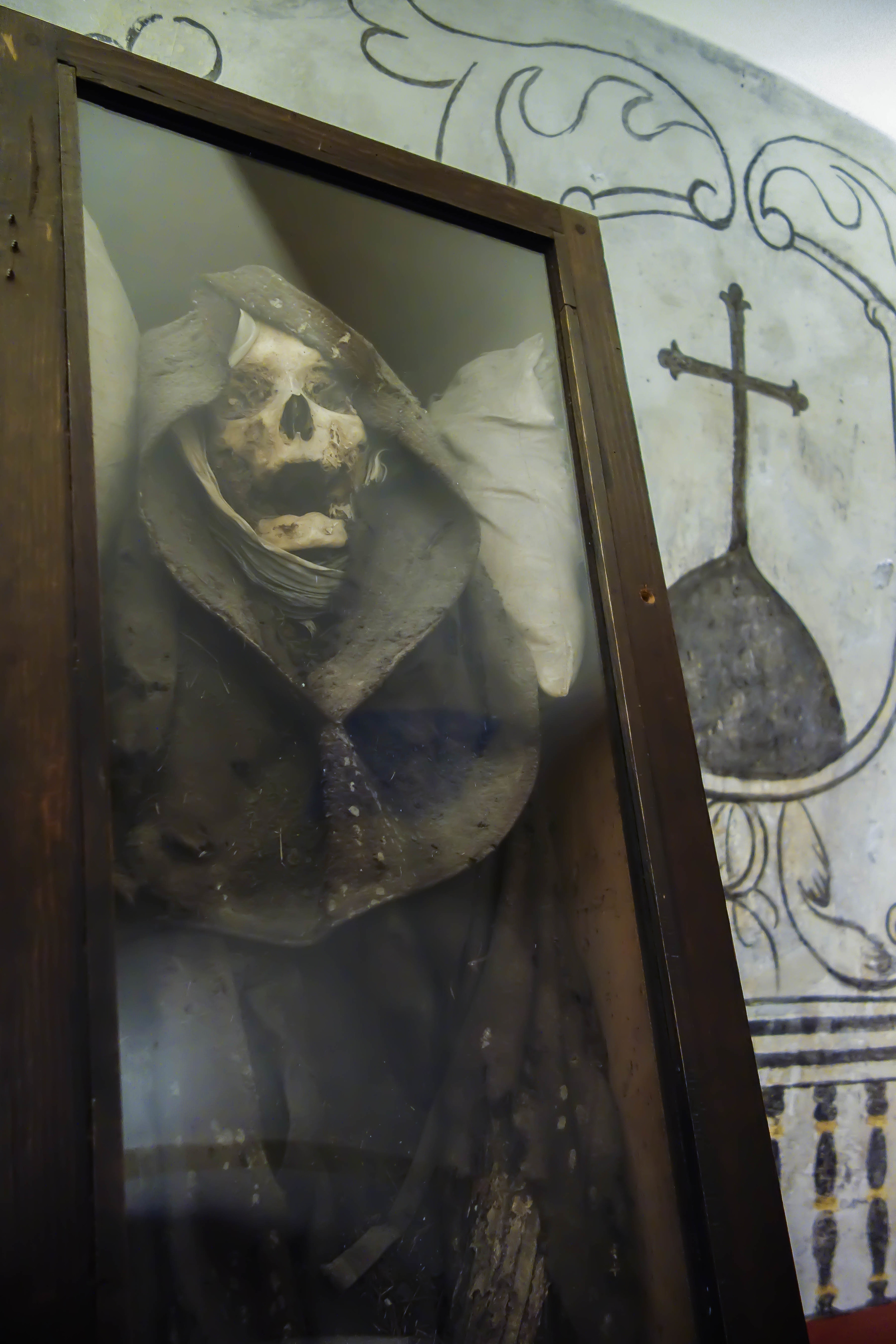
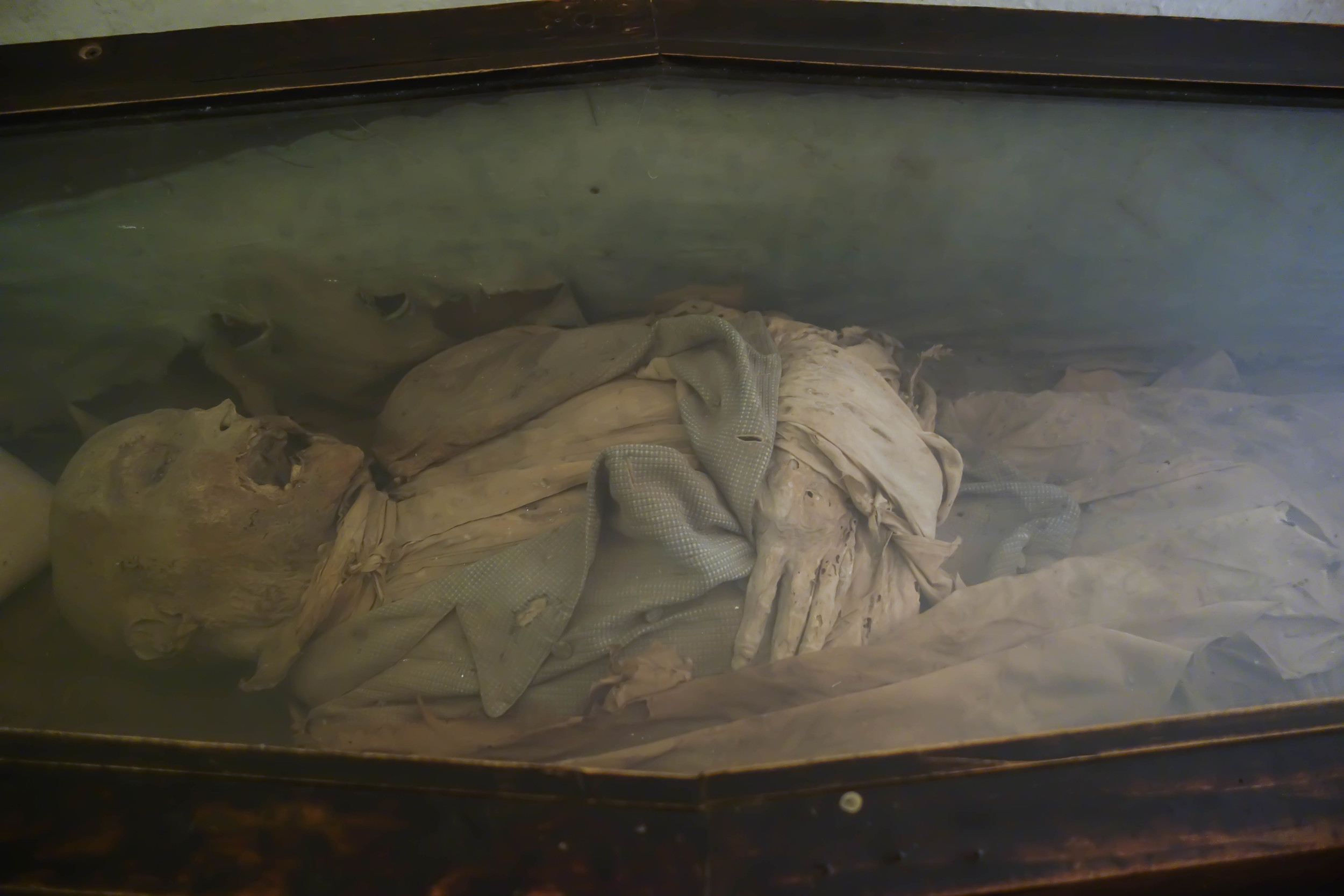
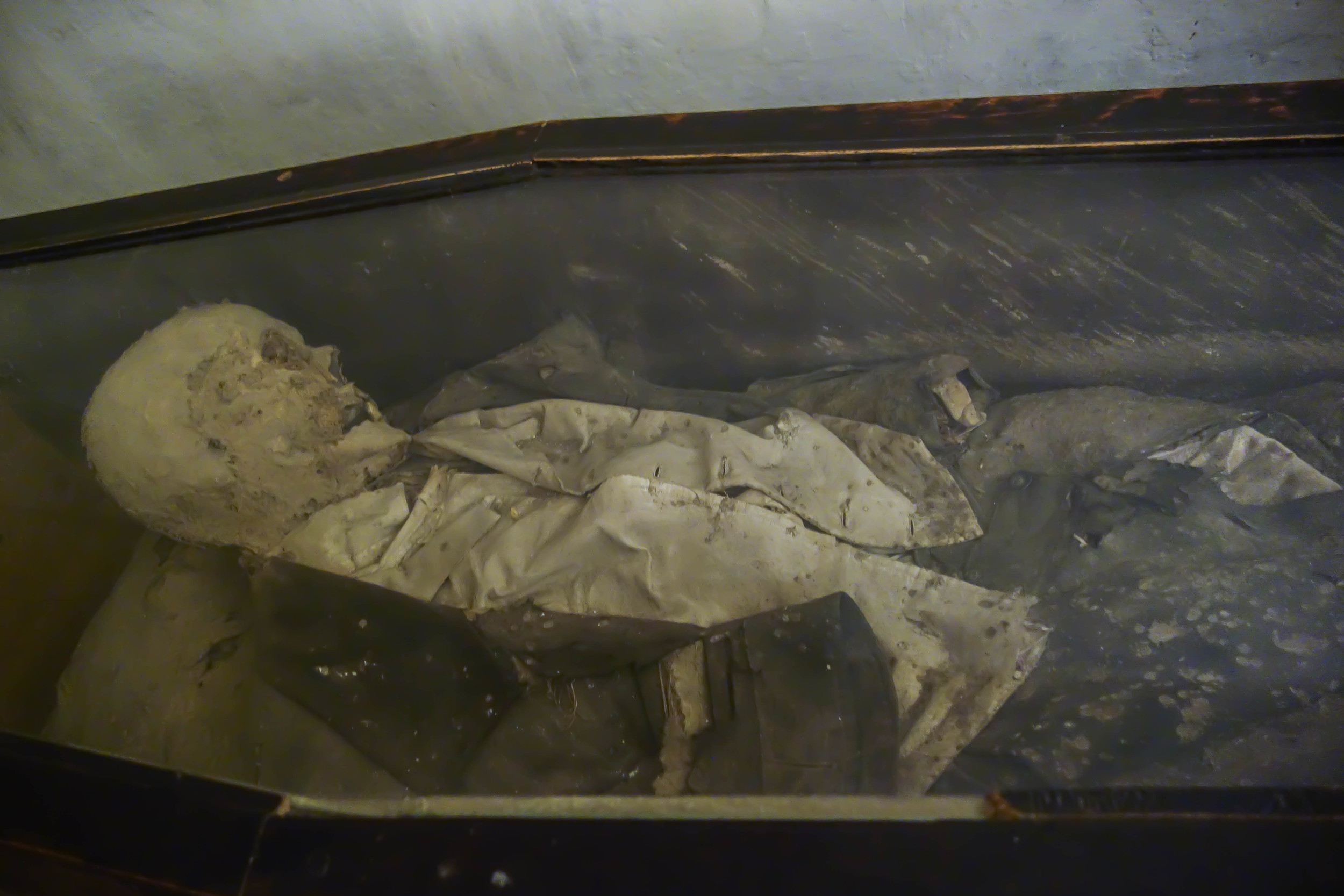
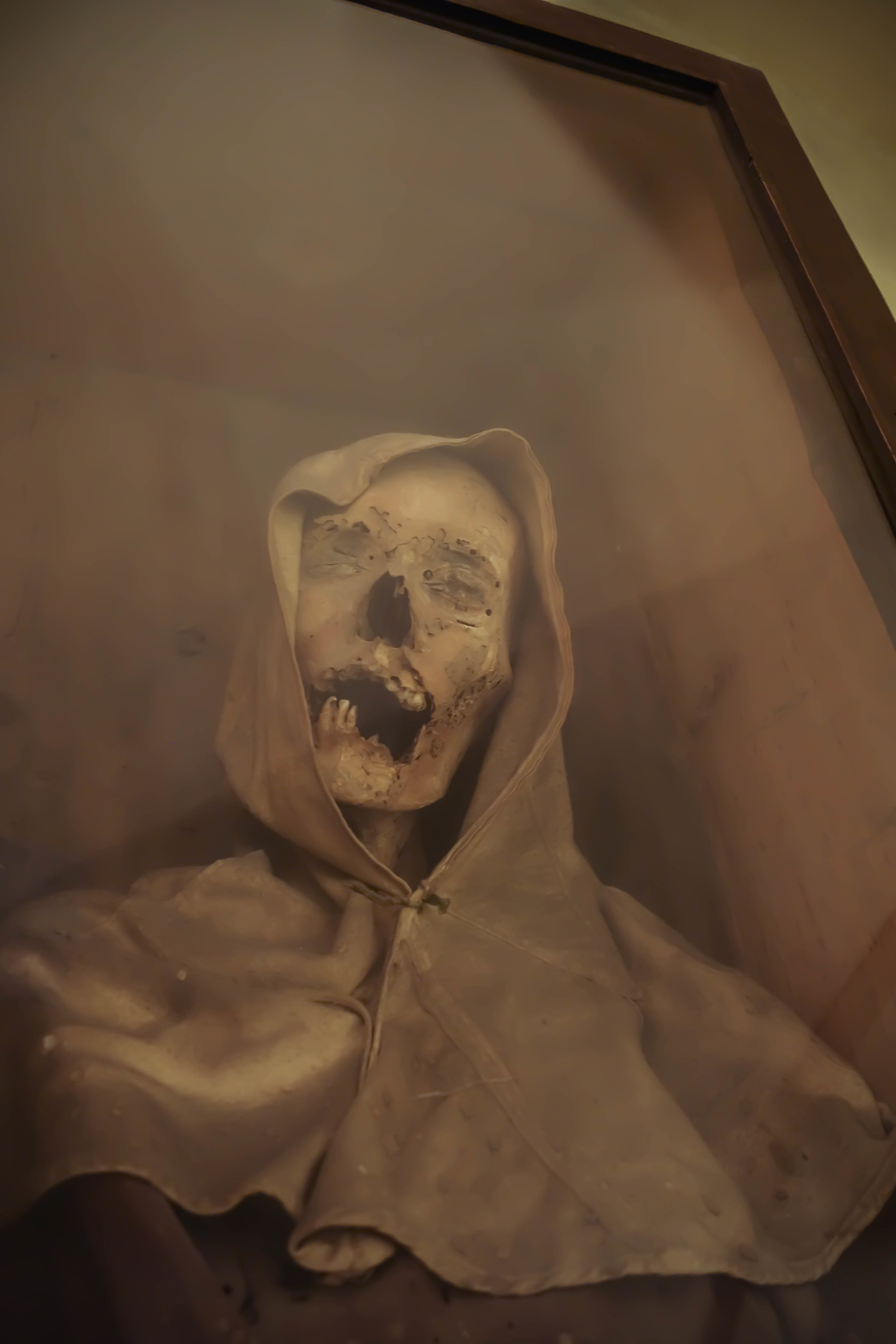
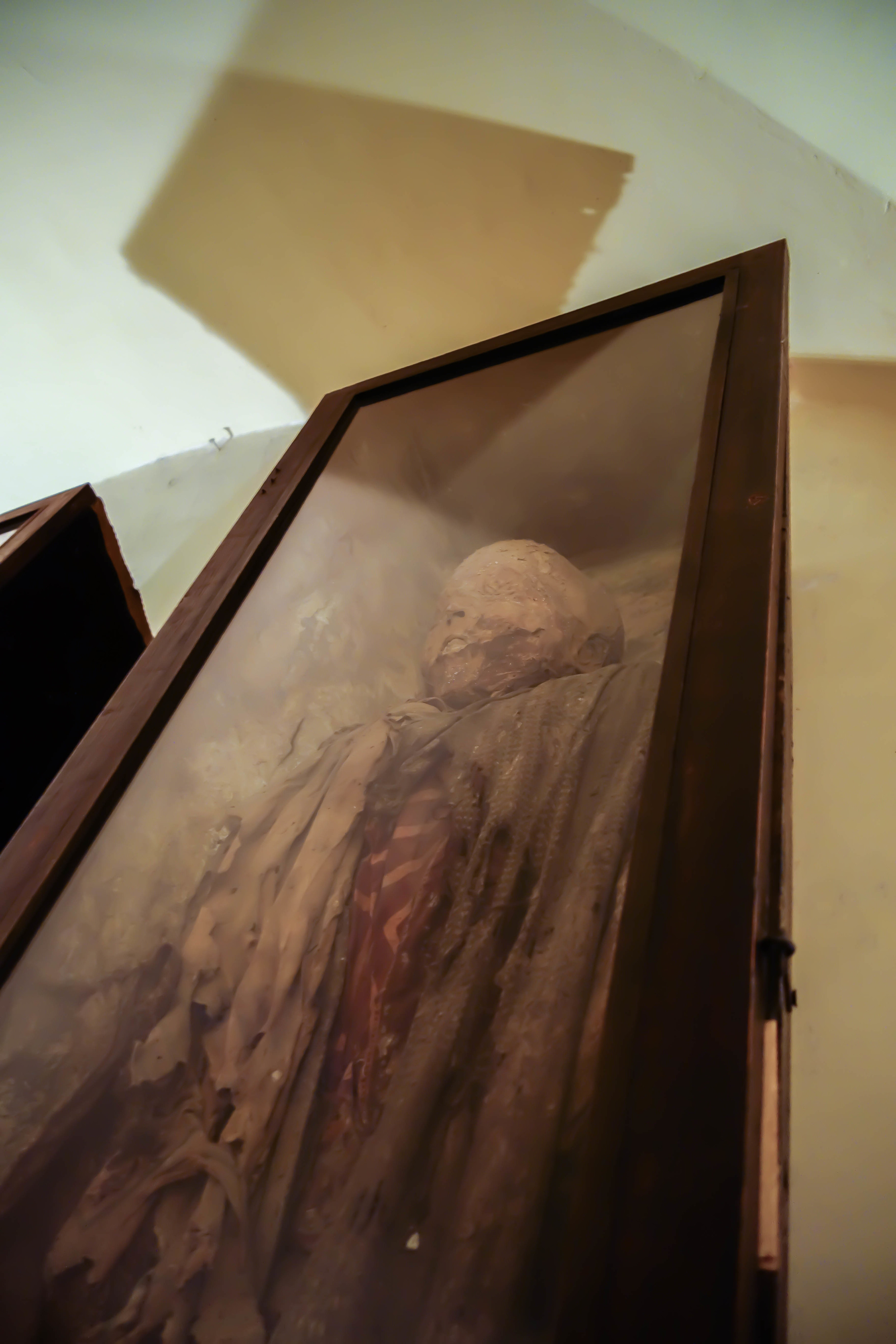
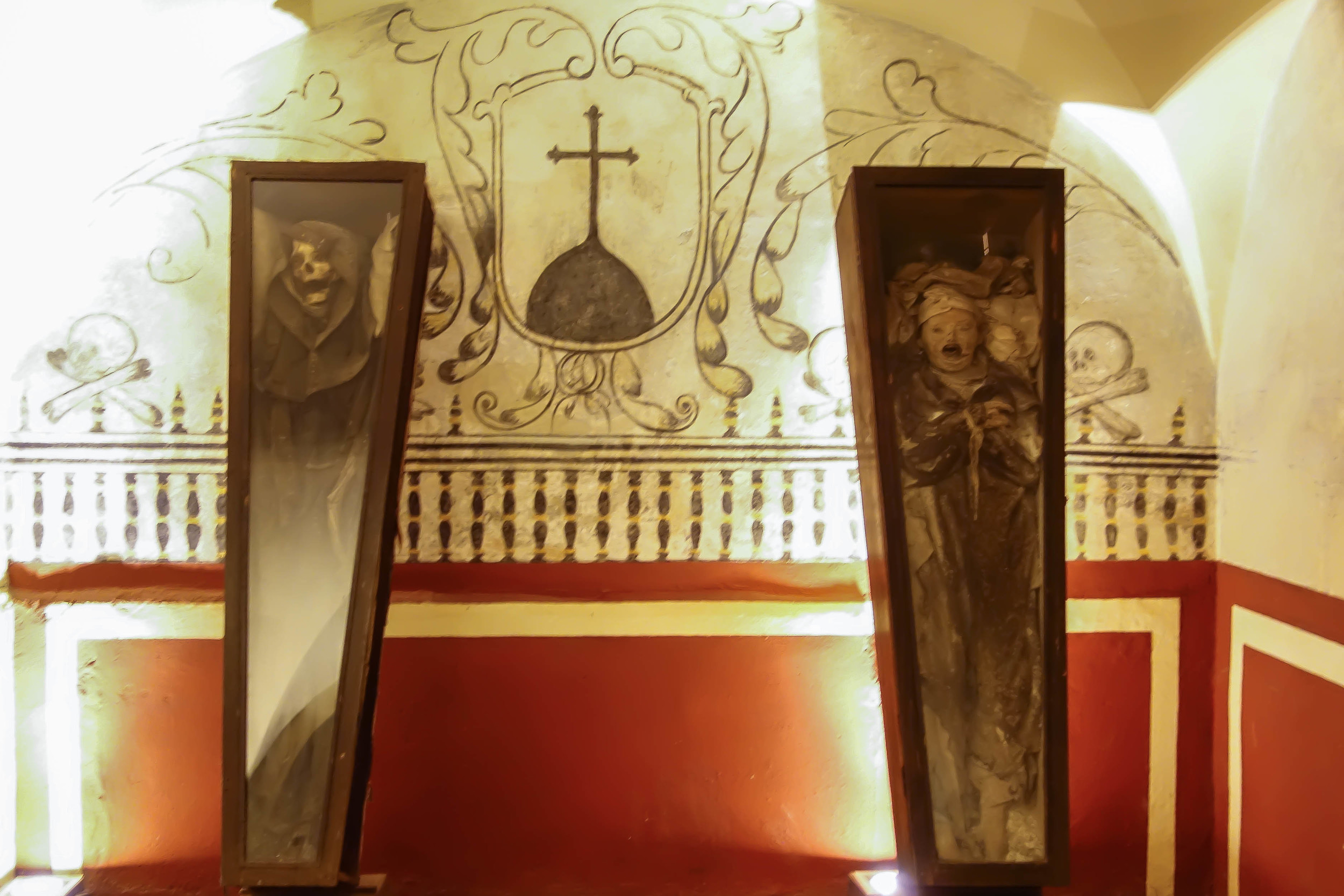
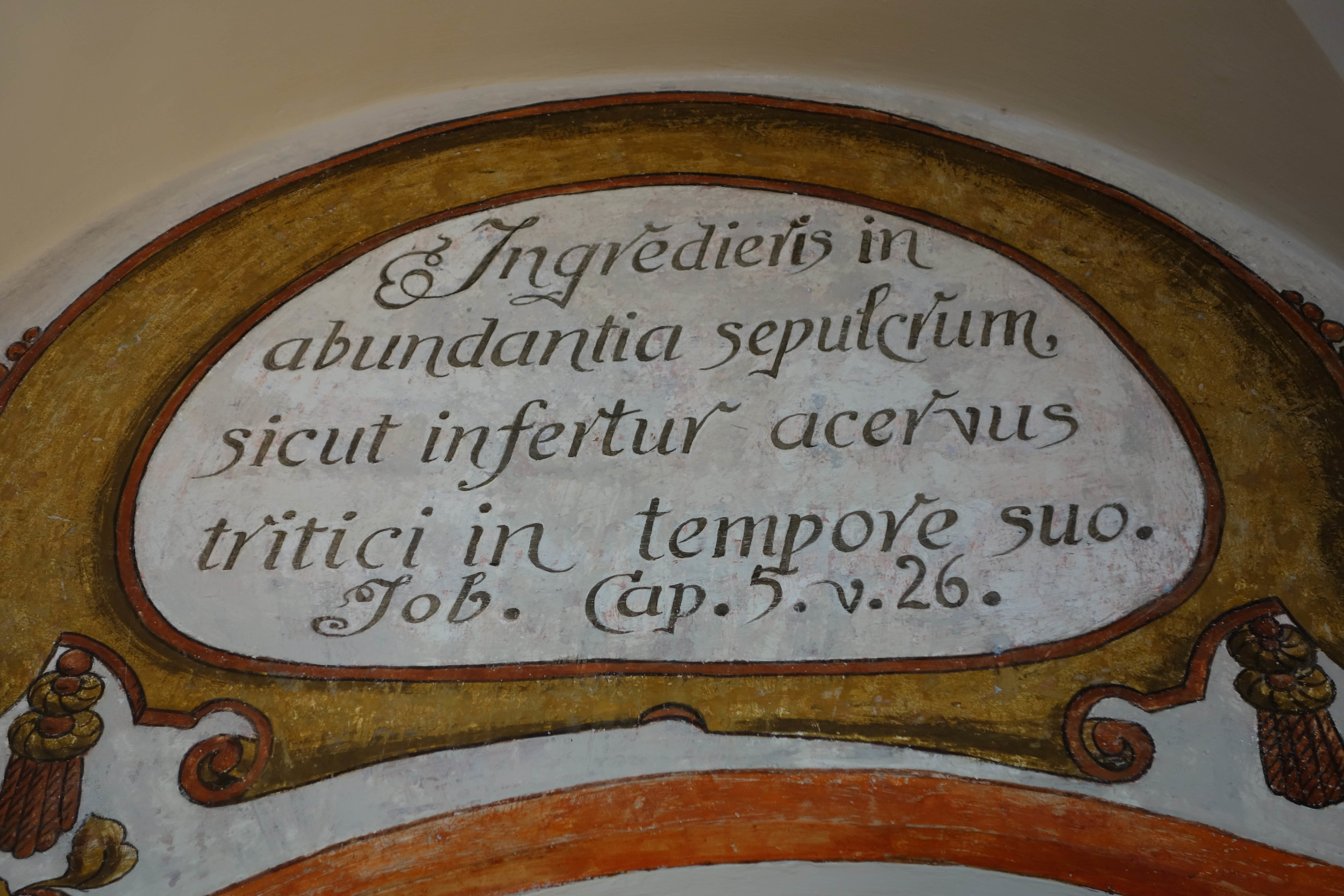
Video: How to Tell if Your Saint is Incorrupt
An Interview with Vice Italia: The Saints of Rome Who Almost Seem Alive
Originally published on Vice: Italia in Italian by Mattia Salvia. Translation by Elizabeth Harper.
Elizabeth Harper is a photographer who works as a theatrical lighting designer in Los Angeles- which she mentioned is a strange town if you're interested in old things. There, the oldest things are often from the 1920s. And along with that, Elizabeth is obsessed with the macabre, religion, and the meeting point between the two.
Some time ago, she was in Rome where she photographed the obscure Catholic relics in the city for the Morbid Anatomy Museum in New York. Among these, she devoted special attention to the incorrupt bodies of Catholic saints preserved in glass caskets in some of the main churches of the city. Obviously, as soon as I saw her picture I instantly fell in love and I decided to contact her. I let her tell me the story behind these images, which after all, are just pictures of dead celebrities.
Besides having delicious sense of irony and a very special sensitivity, Elizabeth is a person of remarkable culture. We talked about religion and death as though we were two Romantics in nineteenth-century Italy making the Grand Tour .
VICE: What inspired you to start working on this project?
Elizabeth Harper: It all began on my blog, All the Saints You Should Know. I wanted to share my obsession with the more unusual aspects of Catholicism in a non-academic way that would be interesting for believers as well as non-believers. Many of these things are not well known for various reasons: some are at the fringes of the Catholic faith and are considered almost folklore; others are embarrassing to the Church because they remind us of the dark ages. Also, many priests prefer to focus on their pastoral duties rather than the history and art that their churches contain.
How did you end up photographing churches and relics of Rome?
I love Rome. I approach the city with the same spirit as the Romantic writers who visited her in the nineteenth-century: Lord Byron, Chauteaubriand, Goethe, et al. I have the same tendency to be inspired by the Gothic, the macabre and the sublime. Although I'm not a writer in the sense that they were writers, I think I feel the same.
All these photos are part of a book I'm working for the Morbid Anatomy Museum in New York. The book aims to explore Rome through its churches and the relics they contain. It will be a kind of guide to all these hidden wonders of Rome.
Where did your interest in Christianity, its saints and relics?
I come from a family of Italian immigrants, so I grew up in close contact with the Catholic Church. And as a child I was a rather morbid. Once at school, during religion class, I heard a story about Jesus and a leper. So I was both frightened and fascinated by leprosy. At the time there was no Internet, so I went to the library and asked for a book about leprosy but they must have misunderstood (or maybe they were shocked) because instead of a book on leprosy I was given one on leopards. After that I began to read the stories of Christian martyrs, and I was fascinated in particular by St. Cecilia.
I still remember the first time I saw a relic of a saint. You don't often see one in the United States. It was quite large- I think it was a piece of the liver of a saint. The priest at our church was standing in the lobby and held the golden reliquary so everyone could see it. I was about nine years old and that was my first contact with the sublime. I saw the guts of that saint and I thought about my own liver. For the first time in my life I thought about what would happen to me after I died.
What is your relationship with death?
Of course we can't know what happens when we die. But if you think of death as an idea rather than as an event, you'll find that it's a very profound influence our lives- it is the only thing we can be certain. I think it's difficult in the modern world, to realize that we are limited. But this is why death is important, because it's the limit we must face. It seems trite to say, but the awareness of my mortality makes me happy to be alive and happy to work on this project. It's my small contribution- to leave the world a bit more orderly and a bit more interesting than I found it.
That said, I'd be lying if I didn't admit that at this point in my life, death seems very remote. The women in my family tend to live to be well over 90 years and have long, satisfactory lives. Maybe that's why I still fear what was once called "a bad death" -a sudden or violent death. On a plane I'm afraid of the slightest turbulence. Maybe that makes me a little hypocritical.
What is it that fascinates you the uncorrupted bodies of saints?
I love to photograph them because they're uncanny. I love their stillness, their monumental symmetry, the intimacy and the vulnerability of their faces that look almost asleep. I especially like those stored in glass coffins, straight out of a fairy tale. It's as if they're stubborn, as if they don't care about the modern society, because after all this, they're still there. Seeing them gives me a special feeling, because you whether you believe in their holiness or not, you're forced to admit that even when you're dust, they will still be there, intact.
Did you learn anything working on this project?
I have learned many things. To give just one example, I never understood the American obsession with zombies until I found myself in a putridarium.
A putridarium is a type of crypt inside a church where bodies were left to rot in special niches. Once there were only bones left, they were buried. In Italy, the putridarium was linked to the concept of purgatory- so while the body got rid of its flesh, the soul in purgatory got rid of its sins. When all that remained was a skeleton, the dead man was considered at peace and in heaven.
I realized that when we think of a decomposing body trapped in a liminal stage between life and death (this is the concept of a zombie) it's yet another representation of the concept of purgatory. Being a zombie is to be trapped between, and it's something that frightens us. It is why zombies are scarier than the skeletons, and why on Halloween little children dress up as skeletons but not zombies. We are all afraid of finding ourselves, after death, stuck in a place of passage. And we always find new ways of expressing this fear.
But perhaps the most important thing that I learned was something that the Italian poet, Ugo Foscolo, said a long time ago, and with words far better than I could find:
A egregie cose il forte animo accendono
l'urne de' forti, o Pindemonte; e bella
e santa fanno al peregrin la terra
ch le riccetta.
(The urns of strong men stimulate strong minds
To deeds of great distinction; and these urns
Make sacred for the traveller that earth
Which holds them.)

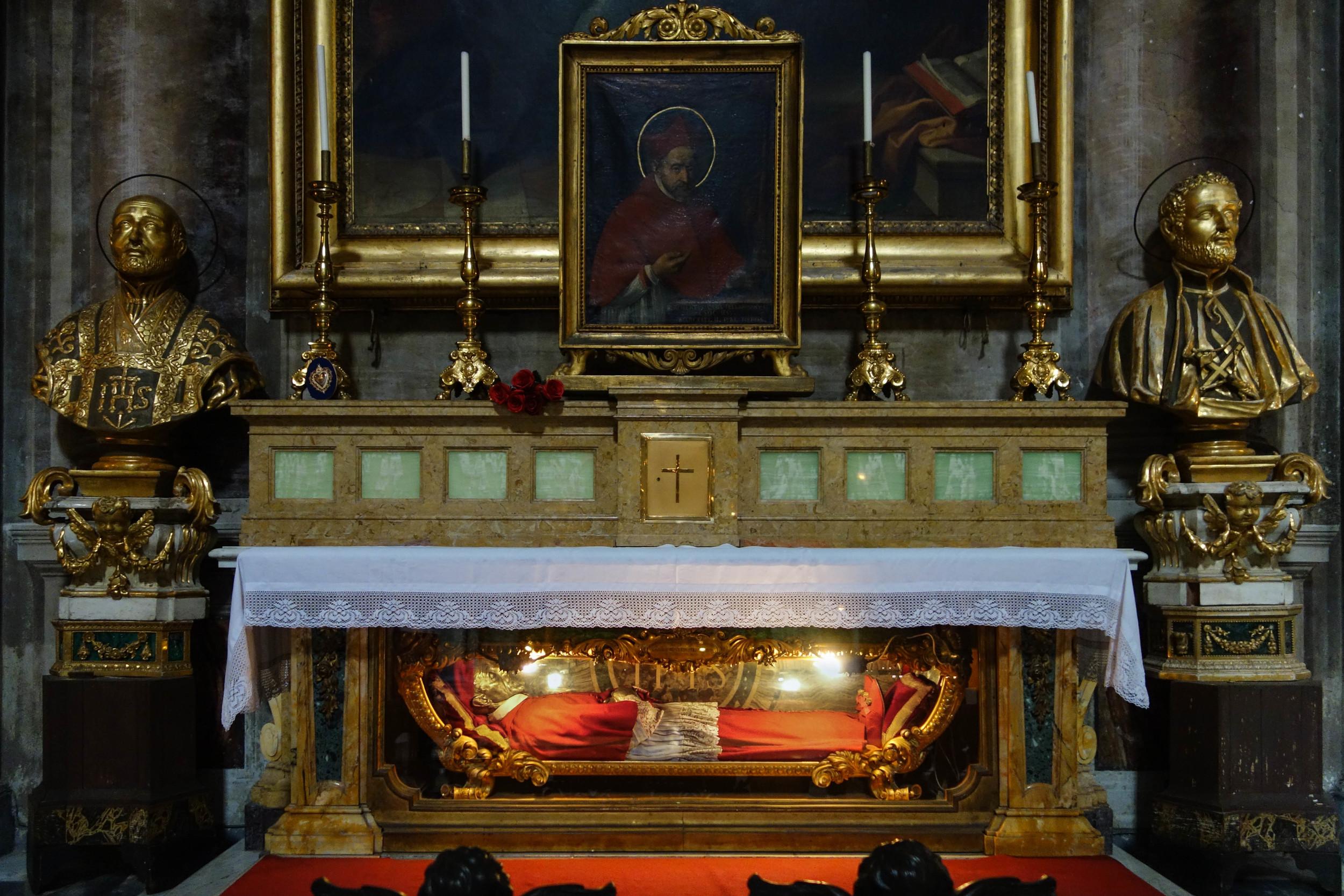
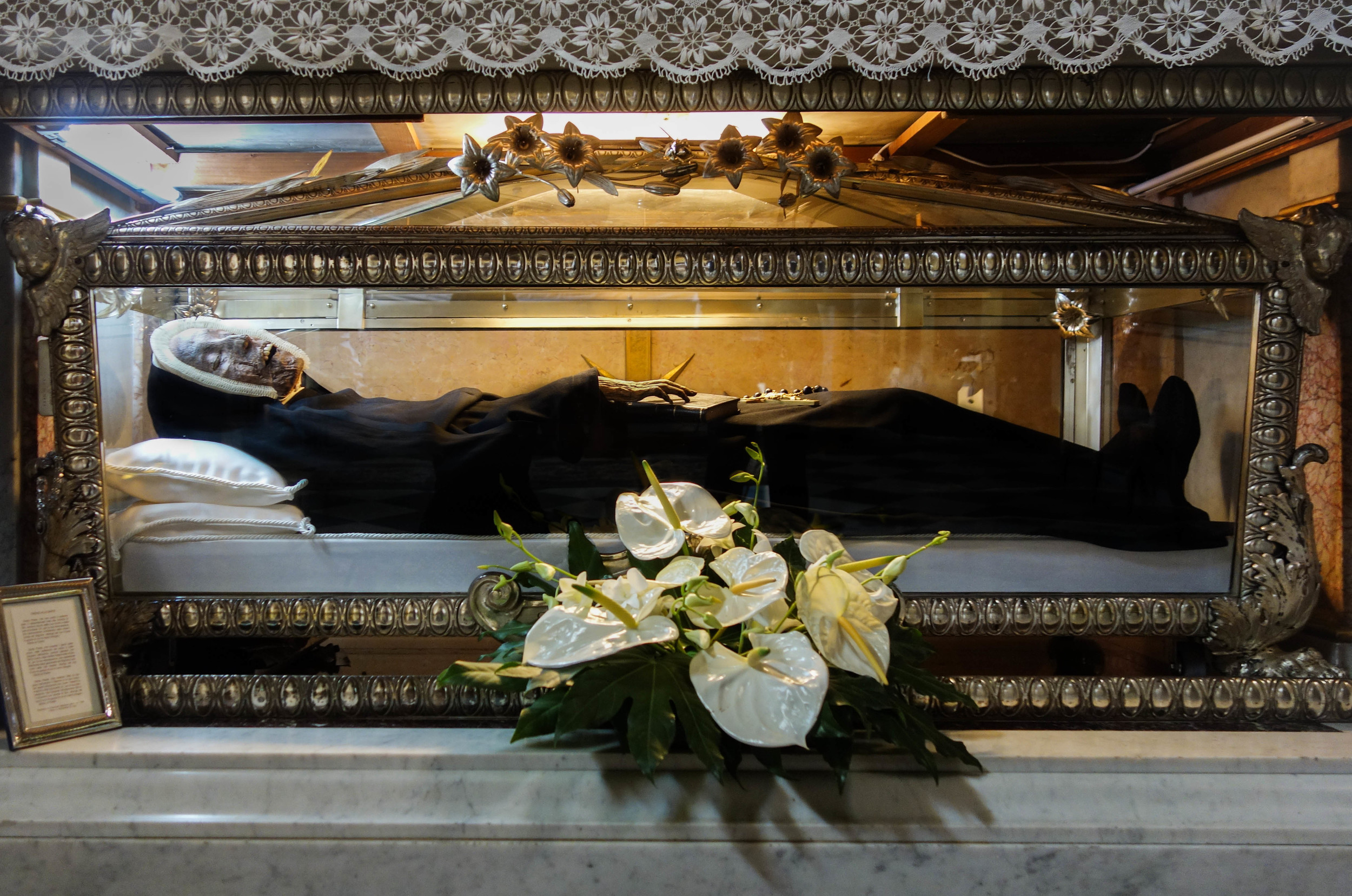
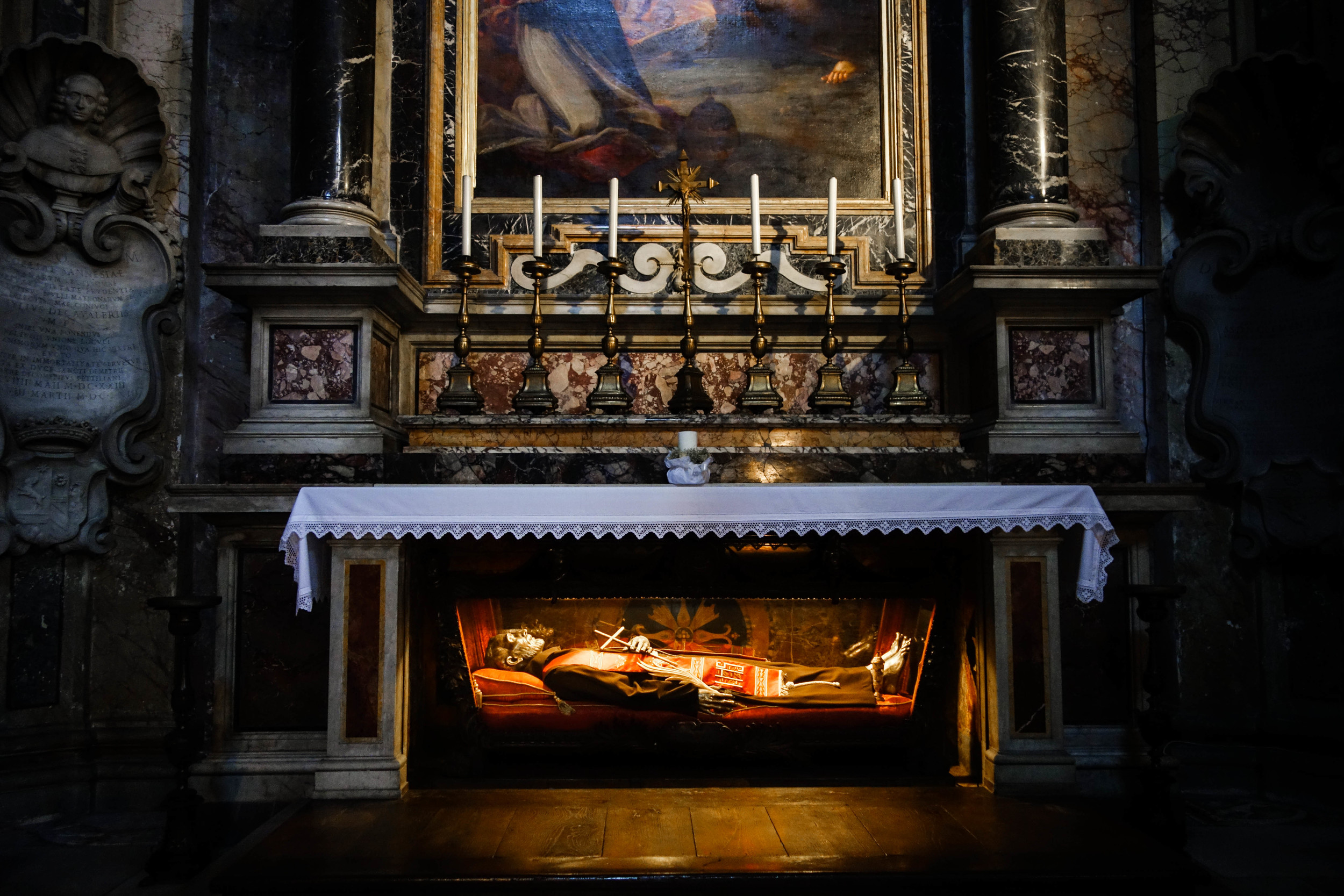
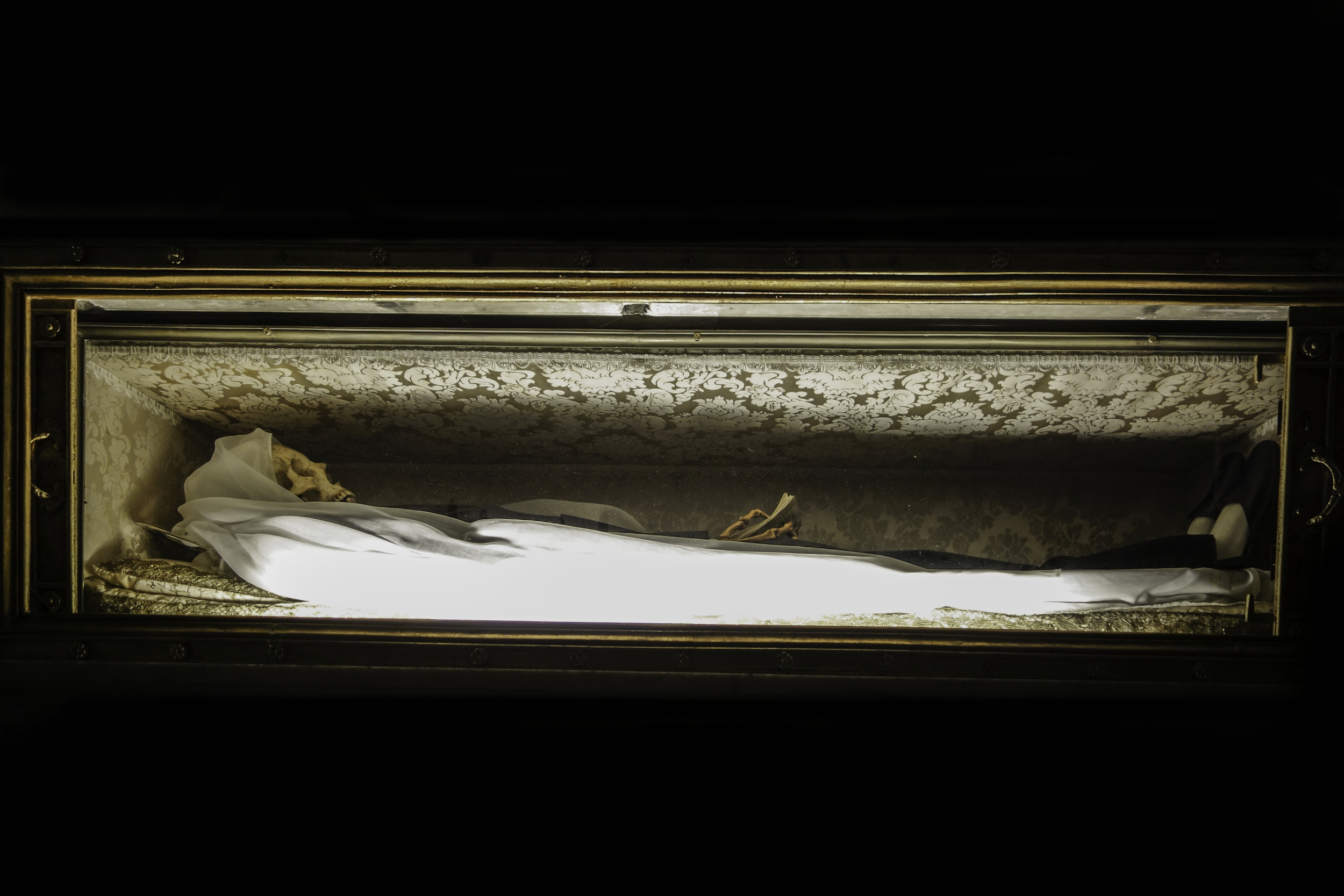


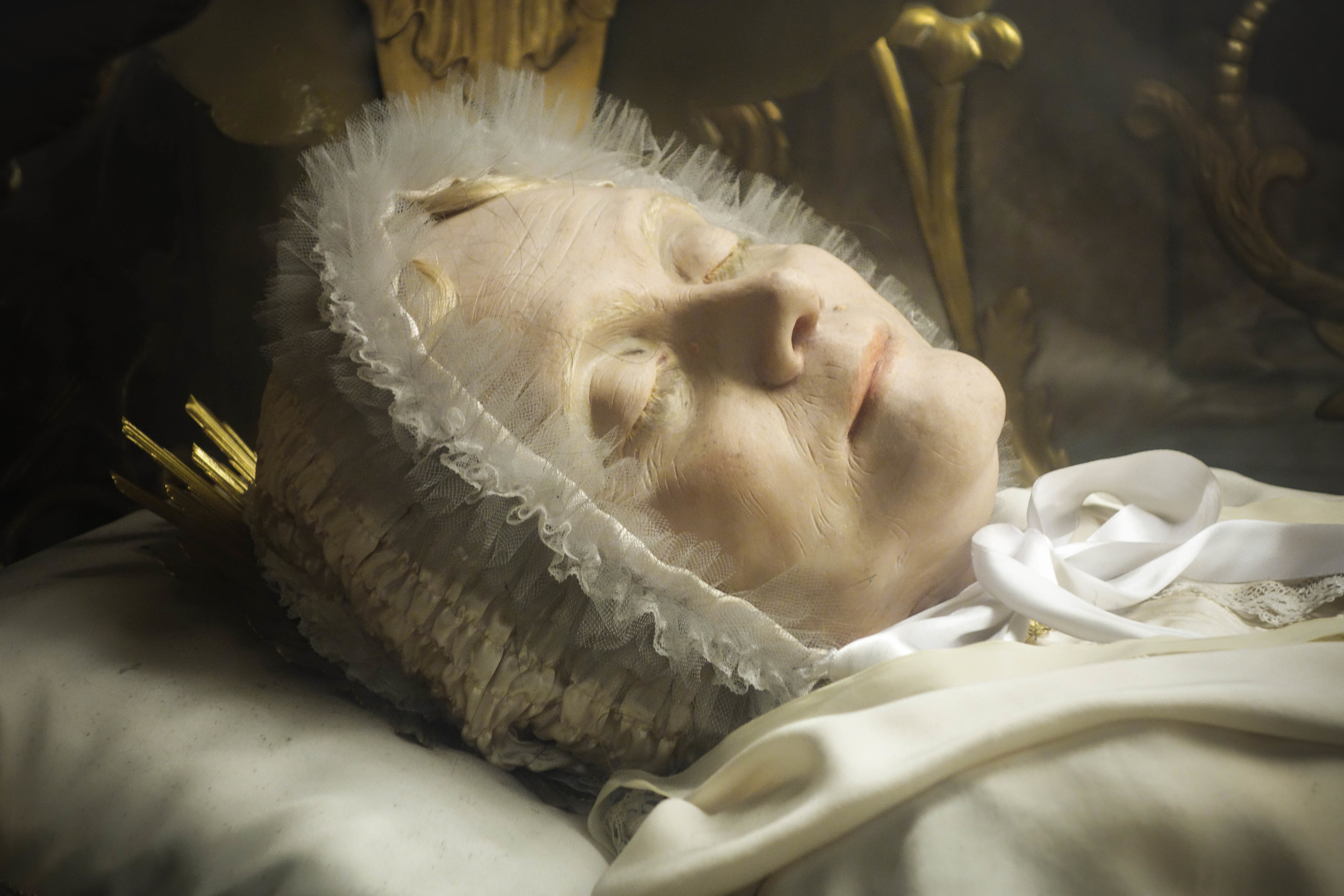
Corpse Theatre
Originally published on the Morbid Anatomy Museum blog.
There’s a building that’s hard to overlook on via Giulia in Rome. It’s the one with laughing skulls over the door.
On a marble plaque at eye level, a winged skeleton holds a spent hourglass over a fresh cadaver. The plaque reads “Alms to the poor dead, which they get in the countryside.”
“They” is La Confraternita dell'Orazione e Morte, or the Confraternity of Prayer and Death. They were a group of Catholic laymen who buried Rome’s indigent dead and this building was their oratory.
Burying the dead is a particularly important Catholic ritual because burial is linked to the concept of purgatory. Purgatory is a place where heaven-bound souls undergo a final purification before entering heaven, but in Catholic imagery it can easily be mistaken for hell. Fire surrounds writhing nude bodies. This fire is supposed to cleanse the souls just like the grave eventually cleanses bones of rotting flesh. Appropriate, since sin and flesh are often inextricable, like in St. Paul’s letter to the Galatians where he calls everything from drunkenness to sorcery a “sin of the flesh”. After purgatory, when sin and flesh are gone for good, the clean, white bones are considered at peace and safely in heaven, which is why skeletons like the one on the façade are often shown with wings. But conversely, no burial means no peace. Though it’s not entirely orthodox, folk traditions imply that the dead can find themselves stuck in a netherworld between this world and the afterlife if they’re not given a Catholic burial.
Migrant workers in the farms outside of Rome were particularly susceptible to this fate. Malaria could kill them in the midst of their work and without family or friends to tend to them, weather and animals could ravage their corpse. The brothers in the Confraternity of Prayer and Death made the trip out to the countryside by foot and gathered these bodies year-round. It could take them four days to carry the dead back to Rome on their stretcher. They did this from 1552 to 1896. Their handwritten ledgers indicate that they picked up at least 8,600 bodies during those 344 years. If they passed a parish churchyard they would bury the workers there, but if not, they would carry them back to their oratory on via Giulia.
Today, the nuns who use the oratory open it for just a few hours every week while they pray for souls in purgatory. If you happen to find the church open, a donation to the sisters yields access to the crypt where you can see the lifetimes of work done by the brothers before them. Down there, you’re likely to be alone. The erratic hours mean that unlike Rome’s famous Capuchin crypt, there’s no line of nervously giggling tourists. It’s just you, the bone chandeliers, the engraved skulls, an altar full of legs and arms, and somewhat ominously, a scythe.
The overall effect is a bit ramshackle because we’re only seeing salvaged pieces of the original crypt. When the Tiber embankments were added in the late 19th century, the majority of the crypt and the order’s cemetery were destroyed. Including, unfortunately, the crypt’s theatre.
The scythe is actually nothing more than a theatrical prop, but somehow that’s even more unnerving than the real thing.
These black and white photos from the church's archives show how it once looked.
In 1763 the confraternity built a stage in their crypt. They started using the corpses they collected in tableaux staged for the public called sacred representations. If you’ve ever seen one of those Christmas manger scenes where a real Baby Jesus is depicted more or less in a petting zoo, you’ve seen a sacred representation. The only difference was the confraternity was using dead people, not farm animals.
They staged a sacred representation every year for the week following All Souls Day. It started simply with “The Burial of Jacob”. A few flat paintings were used as scenery and a corpse played Jacob’s corpse. Specific death scenes were always popular, The death of Judith, Jezebel, and St. Paul were all staged along with a few more universal tableaux, like “the allegory that we all must die”.
Every year the productions became more elaborate. By 1790 they had life-sized wax figures playing the roles of the living, dressed in costumes designed for the occasion. In 1802 when they staged “The Mountain of Purgatory” they built a mountain surrounded by candelabra. The figure of Justice was perched up high holding scales and a sword. Beneath him you could see souls in the flames of purgatory. One lucky soul was shown being lifted by a cherub and taken up to heaven. When staged with actual dead people, it’s hard to make a scene like this any more literal. The sacred representations were seen as a useful teaching tool that transcended language and literacy barriers.
Other churches in Rome like Santa Maria in Trastevere and the now deconsecrated cemetery chapel of the Lateran put on similar, though less elaborate tableaux. But another place that rivaled the Baroque stagecraft of Santa Maria dell'Orazione e Morte was the hospital just across the Tiber—Santo Spirito.
If you visit Santo Spirito today, you won’t find a trace of the sacred representations, but there are eyewitness accounts and engravings of the shows that were performed in their graveyard starting in 1813. The confraternity there cared for the dead from the hospital and like the brothers at Santa Maria dell'Orazione e Morte, they had access to a large number of unknown or unclaimed bodies. In the days before the medicalization of death, dying at home was considered preferable and a hospital death was often a last resort for people who were poor and alone.
After sunset, theses brothers would come collect the dead from the hospital and carry them out to the cemetery. There, they would open one of the hospital’s 24 mass graves and lower in the naked body with chains. The bodies would stay there, unless they were cast in a sacred representation. A particularly noteworthy performance in 1831 depicted the final judgment. The mass graves were opened and the freshest corpses were costumed and propped up beneath a wax angel blowing the last trumpet. Fortunately, Antoine Jean-Baptiste Thomas left us with an engraving of this particular dramatization.
Starting in the early 19th century, Rome’s confraternities started to get some pushback from the pope on their use of bone and corpses. The final nail in the proverbial coffin of corpse theatre was hammered in when Rome joined unified Italy in 1870. A strict ban on burying people in convents, crypts or hospitals was enforced for the sake of public health. One of the last sacred representations was done at Santa Maria dell'Orazione e Morte in 1880. The brothers there preformed the “Vision of Ezekiel” in secret knowing their cemetery and their performances were about to become a thing of the past. In the end, their customs were as ephemeral as human flesh.
More on this topic can be found at the recent post Sacred Italian Waxworks or The Last Judgement with Real Corpses, 18th and 19th Century Italy by clicking here.

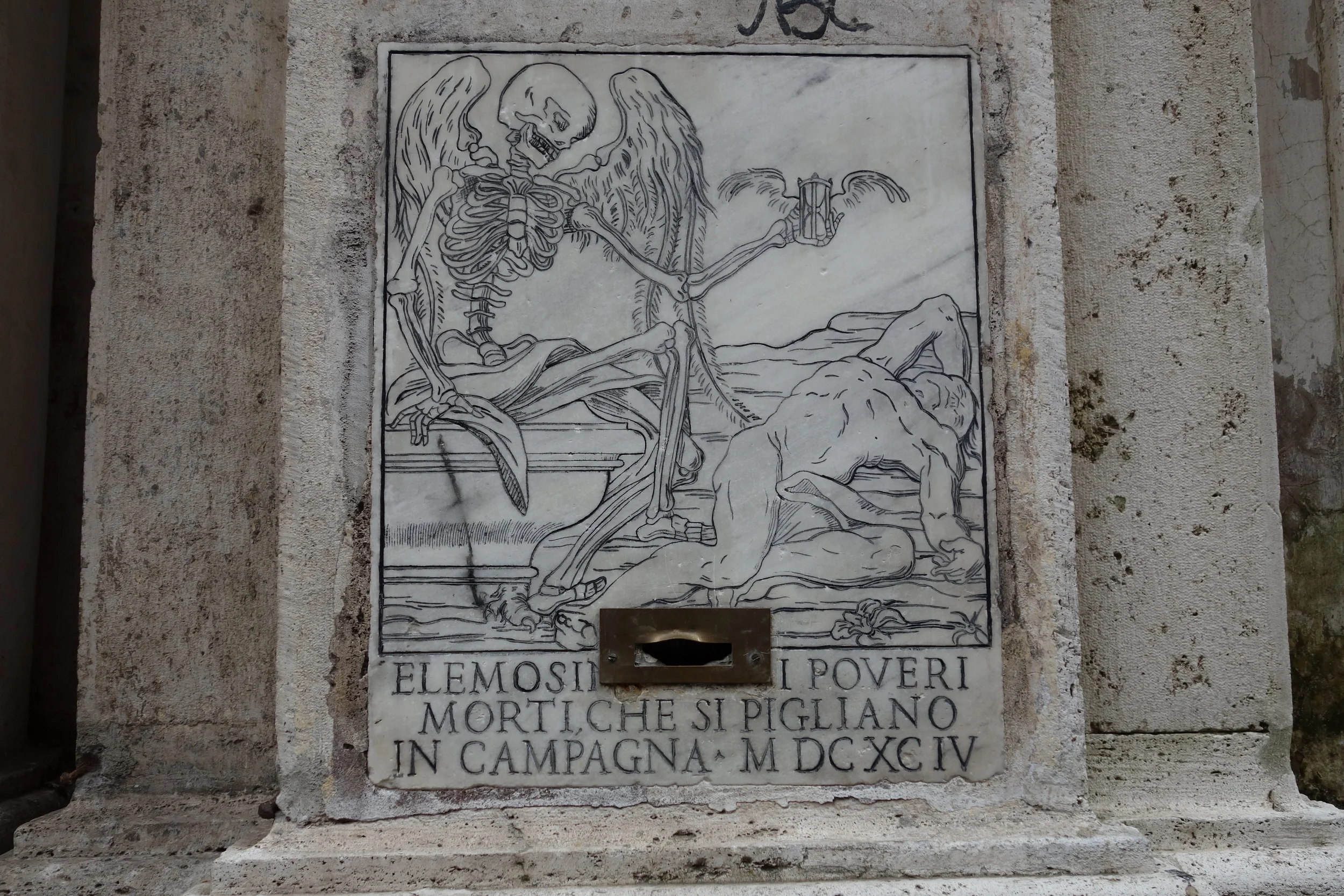

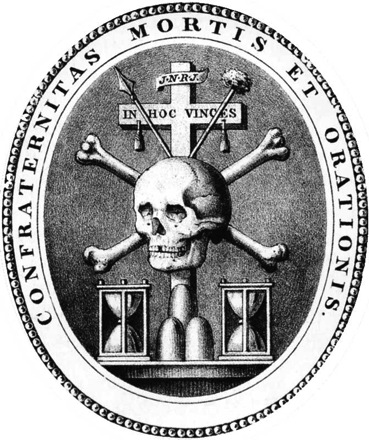

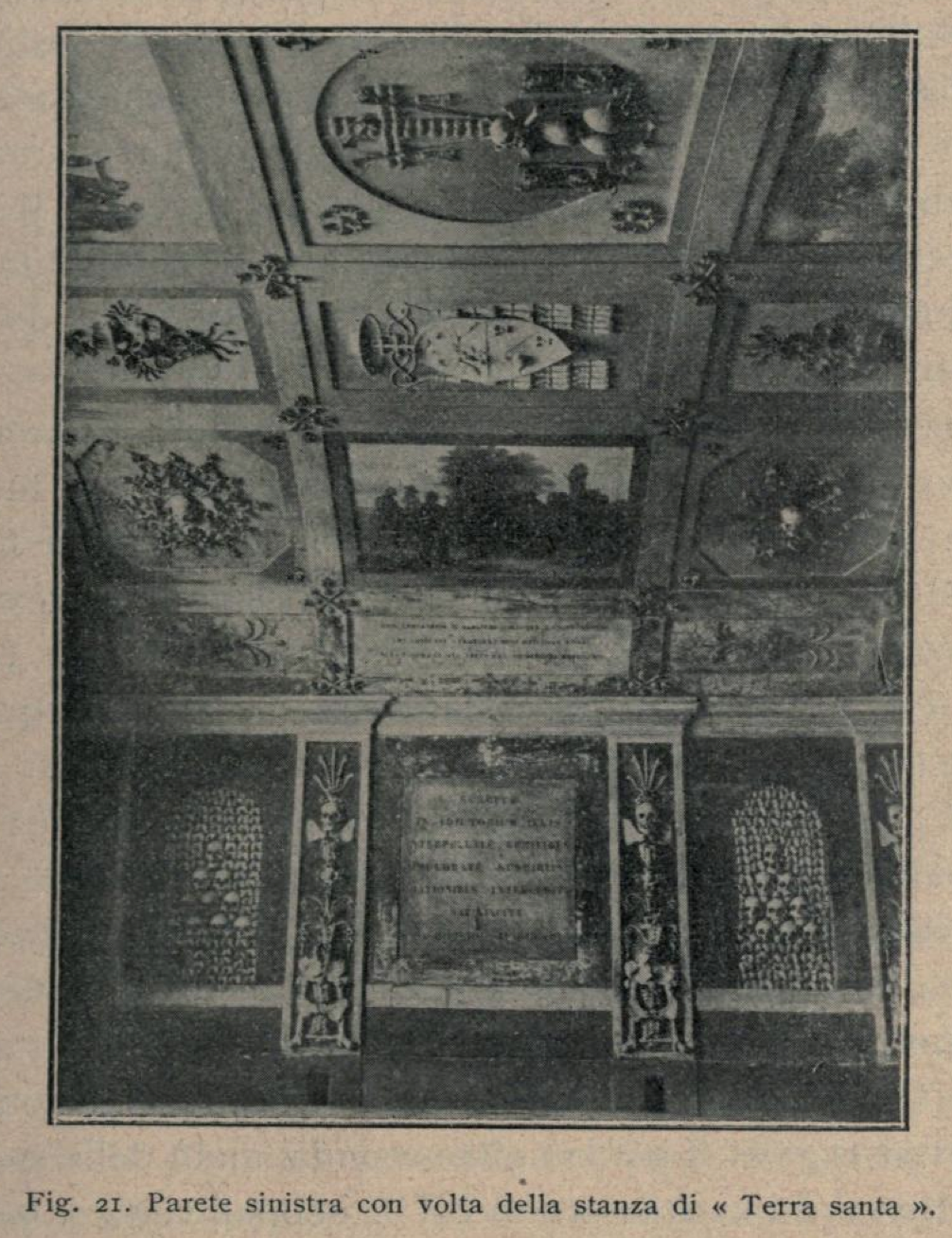
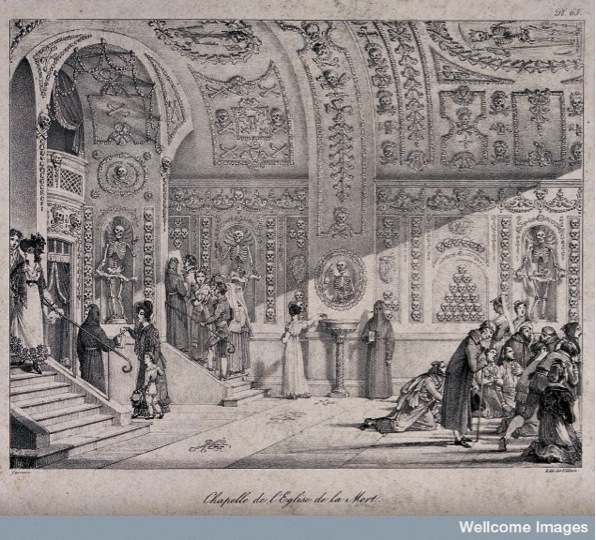

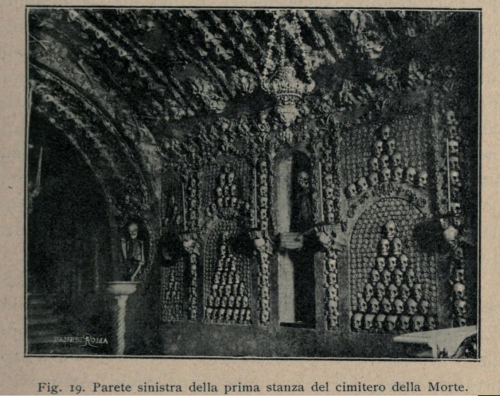


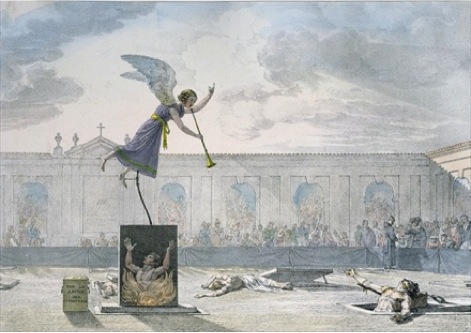
Appetite for Destruction
Originally published in Please Hold Magazine.
I’ve spent a lot of time thinking about becoming a saint. I can picture myself on a prayer card, rolling my eyes (toward heaven) and wearing yards of black fabric. That’s a look I’ve been practicing since I was a teenager. Sainthood is a long shot for an agnostic, but I think I could do it. I just should’ve been born in 14th century Italy.
My agnosticism wouldn’t matter then. Middle Ages Elizabeth believes in God the way modern Elizabeth believes in psychology. That’s to say, she just trusts the experts. In 1300-whatever, the experts say the divine is real… at least as real as hysteria in 1890 or the DSM-V today. From this perspective, becoming a true believer is easy. People are the same; it’s only the diagnostic codes that change.
I realized this was true when I saw the 14th century version of myself at Santa Maria sopra Minerva in Rome. That’s where Saint Catherine of Siena’s body, or the majority of it, rests in a shrine under the altar. Pilgrims and gawkers wait in line just to see her white marble effigy up close.
Maybe there’s some truth in the dogma that says Catherine’s spirit is particularly strong at her shrine. Or maybe it’s a convenient device to help me explain how I befriended a woman who’d been dead since 1380. But from the time I saw her, I pictured us like girls at summer camp, sharing deviant secrets under the ultramarine fresco of the night sky.
From the start we were two bizarre little kids, though you could also say we had rich inner lives. Catherine once told her confessor that when she was young, she built a cell in her mind, an inner convent from which she could never escape. There, she lived in self-imposed monasticism, claiming she was guided directly by God’s voice. To everyone else who couldn’t see her invisible convent, she was just a little sanctimonious, and the voice in her head sounded a lot like her own.
As a toddler, I also experimented with direct communications from God. I would beg His forgiveness for all my little sins, then reply out the side of my mouth, “That’s okay, Elizabeth.” It was the world’s worst ventriloquist act but it didn’t last very long. I didn’t stop making the voice but as I matured it became like Catherine’s, made and heard only by me. That’s when my forgiving God reverted to His Old Testament ways.
In grade school, I started writing secret lists of rules to follow. I began building a cell in my mind, the lone novice in my invisible convent. The convent’s bylaws were the strictest I could imagine and amended constantly to entrap myself. I was certain there was something bad about me, but since adults wouldn’t acknowledge it, the only way to uncover it was by making a list of impossible expectations and diligently noting when and why I failed. There’s no winning at a game like Invisible Convent; it was like another childhood pastime, the quiet game. You start playing knowing you’ll have to talk again, but true athletes of the sport know it’s really about sustaining perfection. When Catherine, saint that she was, started playing the quiet game, she didn’t talk for three years, shattering my most impressive records.
Even for a good Catholic girl, Imaginary Convent is a deeply weird game, only made weirder by the fact that you can’t tell people you’re playing it. To invite others in would ruin the game. It would become Actual Convent, a game neither Catherine nor I wanted to play. Actual Convent requires at least one other person and means they could start making the rules. I imagine this is why Catherine never joined an actual convent. Instead, she joined a religious order for widows, despite being young and unmarried. Conveniently for Catherine, these women were uncloistered, leaving Catherine to the cell in her mind, answering directly to her own God.
By middle school, Invisible Convent became more complex and the rules, which could only be applied to and enforced by me, became more severe. Somehow, Catherine and I settled on many of the same obsessions with a few variations given our six-century age gap.
I will stop eating sugar. – Me
I will stop drinking wine. – Catherine
I will not eat anything but ice cubes today. – Me
I will not eat anything but bitter herbs today. – Catherine
I will vomit with this toothbrush. – Me
I will vomit with this fennel branch. – Catherine
I will only chew then spit this out. (Jinx!)
It was also around this time that we both became serious accountants, accidental masters of Italian double-entry bookkeeping, the kind invented by Catherine’s medieval contemporaries. I began what became a years-long record of my daily mistakes and faults in the back of my day planner. In one column, I wrote demerits, in another, punishments, and in the last, I marked the punishment paid in full.
Meanwhile, Catherine’s prayers began sounding more like calls from God’s debt collector. She outlined her “established terms,” the things she would offer up to God, and then went on to explain what she expected from Him in return.
Catherine’s “established terms” and my punishments were eerily similar. Catherine hid a pointed stick in her bed, so even while her family thought she was resting, she could smite herself by burrowing into her skin. By the time I was in college, the space between my mattress and box spring concealed a surgeons’ table of neatly arranged scissors, x-acto blades, straightened paperclips and box cutters.
When I learned that Catherine once felt compelled to drink rancid pus from a sick nun’s tumor, I wasn’t repulsed. I laughed because I once ate an entire container of spoiled yogurt for the same reason. In our minds, the putrid ooze was a gift, a divine test that became an ironic punishment for our inevitable failure. She tested and punished her revulsion; I tested and punished my craving for food in the first place. We strove to be emotionless, desireless, bodiless, perfect beings. In other words, what we really wanted to be were gods.
Eventually outsiders tried to visit our invisible convents. Therapists and doctors thought they could swoop in and play confessor or inquisitor, pulling rank on what looked to them like teenage girls. What nobody knew is that Catherine and I were both empty and full. We purged ourselves of food only to unhinge our jaws and swallow the system whole. We were girls on the outside. But inside we were mother superior, the pope and God all in one. Outsiders’ authority didn’t count in the world inside our guts. We said why and when and how much punishment, administrated and took it. I’ve never been a clergyman, but Catherine and I, we were the clergy, man.
When confession and cognitive behavioral therapy failed to stop our self-destructive tendencies, physical remedies were sought. Catherine’s mother took her to a hot spring for a therapeutic bath, but Catherine quickly figured out how to use the water to quietly scald herself until her skin peeled off. For me it was benzos and beta-blockers, Trazodone, Paxil, Prozac, Lexapro, Luvox, Effexor, Zoloft and Wellbutrin. That’s not even close to a complete list of drugs. Lest you think Saint Catherine would’ve flourished if she’d only had access to my treatment options, know this: none of them worked. Every new diagnosis and treatment plan began optimistically— a fresh bandage on an old sore. But while well-meaning doctors and I tended to each wound in milligrams and fifty-minute sessions, the plague festered inside of me.
Today we call Catherine’s diagnosis anorexia mirabilis but you won’t find it in the DSM. It’s a term used by historians and priests instead of doctors and therapists. But strip “miraculous anorexia” of its supernatural implications and you’re left with a diagnosis that names the silent voice that was the center of my world. Catherine called it God, but I instantly recognized Him as the voice I had always made out the side of my mouth.
Anorexia mirabilis has one more distinction, owing to the fact that the Latin is more ecclesiastical than medical—it’s honest about the context and result of the symptoms. Mirabilis doesn’t just translate to miraculous. It also means wonderful and extraordinary. While the Hippocratic oath stops doctors from harming patients, the Church is free to idealize and reward self-destruction.
Those rewards were very real, despite what doctors with furrowed brows and therapists with flat mouths and sad eyes told me. It turned out people, particularly men, love a girl who’s wildly ambitious and frequently uncaring. I didn’t flinch at pain. I felt invigorated by hunger. I exploited being “not like other girls” sensing it was safer to control my exploitation just like it was safer to be the one holding the blades I punished myself with. As a result I was deemed serious and hardworking, a perfectionist with high expectations. But Catherine, always better than me, was so “not like other girls” she was permitted to council the pope. She wrote him sarcastic letters and goaded him into moving the papacy from Avignon back to Rome. She addressed His Holiness as “dearest daddy.”
Saint Jerome, an early Catholic teacher, once called an ascetic woman he admired, “forgetful of her sex, unmindful of her frailty.” In other words, “not like other girls.” Through punishment, he believed women could transcend that bone-deep feminine weakness, the secret rot I was always testing for and trying to eliminate. But Saint Jerome didn’t know the whole truth about women like me. How could he? The truth is I never “forgot” any part of myself. If something wasn’t there, it was because I gouged it out. Men like Saint Jerome will love you for that and it’s always so obvious when you’re loved for what you’re not.
Back at Santa Maria sopra Minerva, Catherine and I parted ways as I filed past her shrine. I left my ideas about 14th century sainthood at the altar and came back to the 21st century for good. There are two ways to venerate a saint--admiranda and imitanda. The saints you admire aren’t necessarily the saints you’re encouraged to imitate. I could’ve kept going after I learned Saint Catherine had walked this road before me. I could’ve taken up imitanda just to see how far I could go. Saint? CEO? Who knows. But I stopped, first with the food rules, then with the lists and ledgers and reluctantly with the punishments. I quietly slipped into admiranda.
This detached view from afar is easier to accept if you know how this hagiography ends. Catherine’s death, like everything else in her life, went according to her own design. At thirty-three, she quit drinking water. The Catholic Church was headed for a political schism far beyond her control and “beyond her control” was an unwelcome, foreign feeling. Defeat seemed imminent, and death began to make a certain sort of sense. If you think people love you for what you’ve destroyed in yourself, it’s easy to justify finishing the job. Besides, there are no living saints anyway.
Catherine died parched and bedridden, but she may as well have detonated herself. The impact of her life scattered her body as devotees rushed to claim holy relics, the venerated pieces of the body she so carefully destroyed. Her head and finger wound up behind glass in Siena, her trunk in the marble sarcophagus in Rome. The world around her was permanently altered. This female suicide victim not only became a saint, but patroness of Europe and Doctor of the Church.
Catherine once told God, “Here is my body... may it be an anvil for Thy beatings.” I think I was in on her subtext. “Thy” was her and she was God all along. Goethe wrote, “You must either conquer and rule or serve and lose, suffer or triumph, be the anvil or the hammer”. You’ll pardon me for saying so, but Goethe, having never been a teenaged girl, was way out of his depth. One way to rule is by being both. Who says women can’t have it all.
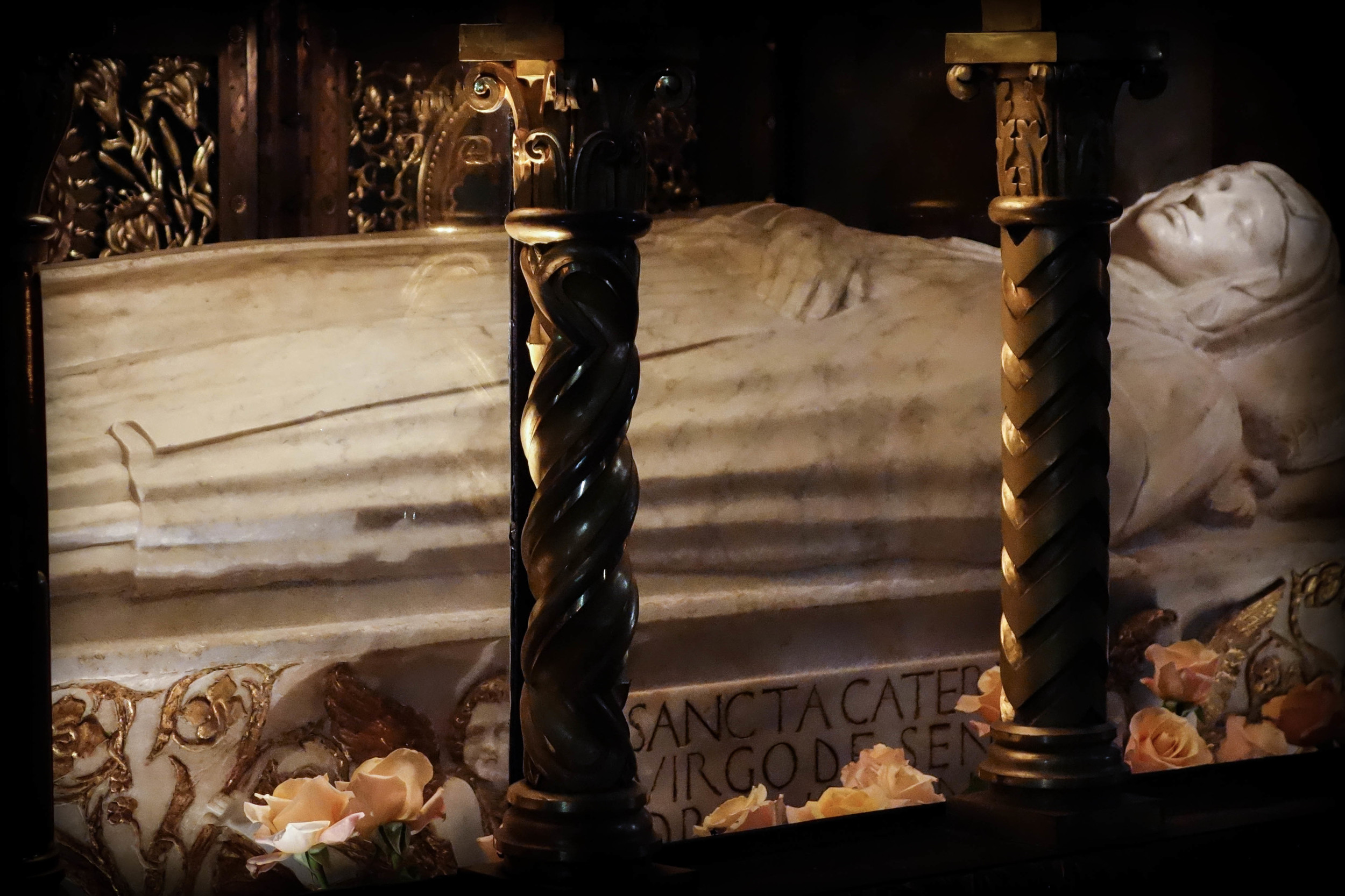

"Despite His Extraordinary Fatness"
I take a lot of random photos of plaques even though I usually don’t know what they say. Then between the time the churches close and dinner, I sit down with a glass of wine and edit photos, review my notes and translate these little scraps of text that someone took the time to carve into marble. Usually, this is a tedious and fruitless task. You learn meaningless trivia like which rich guy financed a particular restoration. But every now and then, a plaque pays out. And this one, friends. This is a jackpot.
This plaque is on the backside of Santa Maria del Pi. It reads:
On April 6, 1806 the news came that the miracles of Servant of God Father Jose Oriol, had been approved [by the Vatican, fulfilling the conditions for sainthood], for which reason the exterior of the church was illuminated.
[While adding lights] this little bridge collapsed and the director, Jose Mistres, fell down without harming himself despite his extraordinary fatness. This is as noted in the file of the religious community and commemorated by this headstone.
Please, please, please. No matter what sort of miracle I’m involved in (should I be so fortunate), do not commemorate my weight at the time.
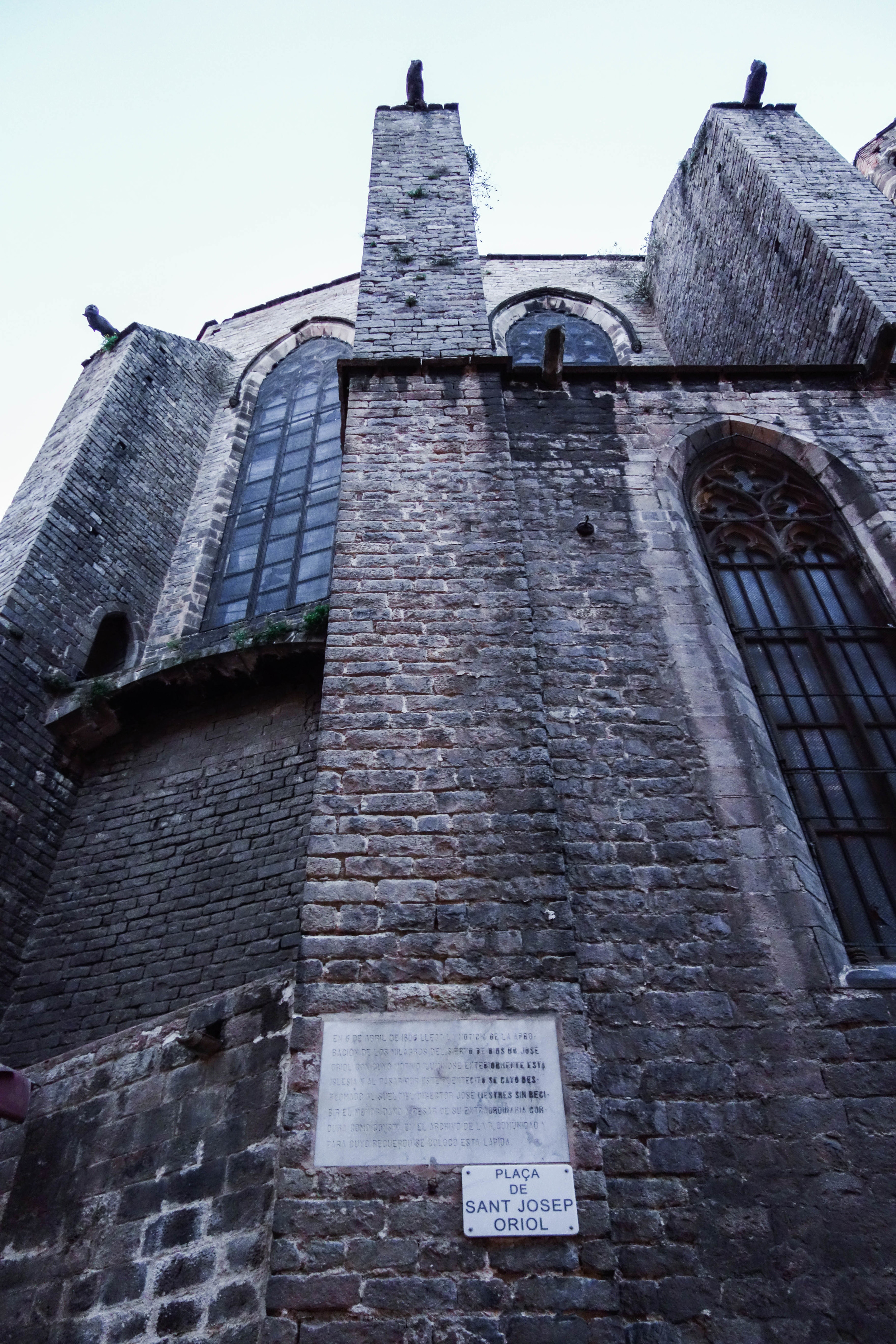
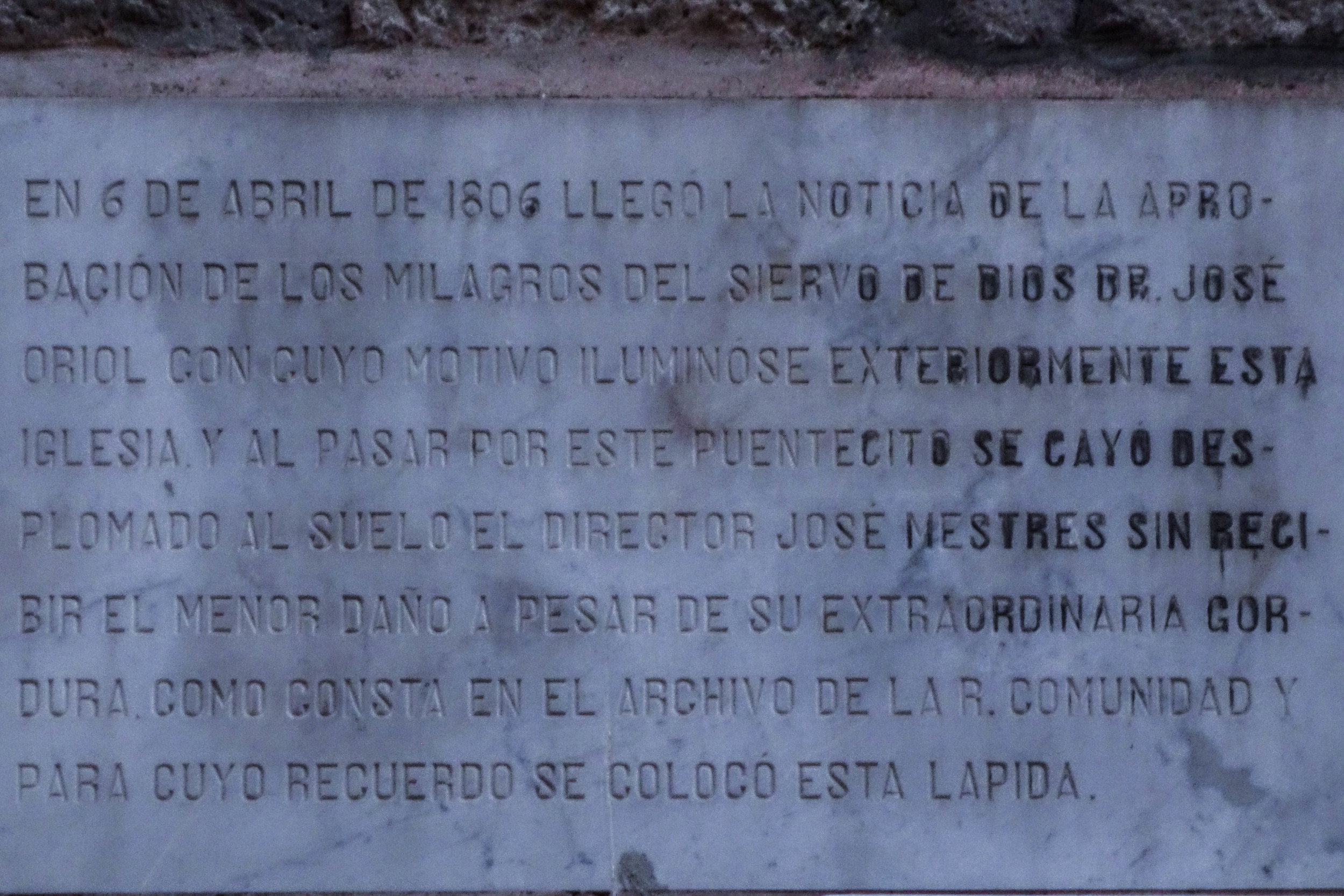
Quote of the Moment

"There are more tombs than dead in this city. I imagine that the deceased, when they feel too warm in their marble resting places, glide into another than has remained empty, as a sick man is moved from one bed to another. One would believe he hears the skeletons pass, during the night, from coffin to coffin."
— François-René de Chateaubriand
Letter to Madame Récamier from Rome, 1829
“Eat Well, Poop a Lot, and Don’t be Afraid of Death” – Traditional Catalan Saying
On the night of the feast of the Immaculate Conception, happy little logs appear in Catalan fireplaces. Look how adorable this guy on the left is. His name is Tió de Nadal or more recently, Caga Tió. Nothing nice is going to happen to him.
It starts innocently enough. The little log is cold, so he gets a traditional Catalan Barretina hat and a blanket. He’s hungry, so every night his family feeds him turrón, a nut and nougat confection. Sounds great, but this little Christmas visitor is more foie gras goose than guest. You see, he can’t poop and that’s all he really wants to do… Caga Tió means Poop Log.
By Christmas morning, he’s in a bad way. But he still can’t go. So kids beat him with sticks, which if you’re a log, is the equivalent of being beaten with the amputated limbs of your kin. Still not medieval enough? Good, because there’s a beating song.
Log of Christmas, shit nougats and pee white wine.
Don’t shit herrings, they are too salty.
Shit nougats.
They are much better.
It sounds better in Catalan.
Eventually the kids have to quit beating the log and leave the room so the adults can pray (VERY SNEAKY, GROWN-UPS). While the kids are gone, the log takes the dump of his life in the form of little presents and candy. He might even repeat the process a few times. When there’s no more candy, he drops an onion, garlic, or the dreaded herring. Then if you have a fireplace you can burn the poor Poop Log alive. Just imagine that sweet little face engulfed in flames.
But maybe you want a poop-based Catalan Christmas tradition that doesn't involve torturing a log. No problem.
Enter the Caganer. He’s a figure from the manger scene in Catalonia and occasionally Southern Italy as well. He's popping a squat with his pants around his ankles and swirly brown pile behind him. But before you get too upset about a guy pooping in front of Baby Jesus, you should know that Catalan (and Italian) crèches are elaborate. The manger scene isn’t just the stable with Mary, Joseph, and a few stray animals. It’s all of Bethlehem; a veritable cast of thousands and the Caganer is usually far away from the holy action in the manger.
In Barcelona, aka Caganer-central, the city omitted the pooper from the official crèche in 2005. Apparently the Caganer was setting a bad example by flouting a law against public defecation. Seeing as how Barcelona is where a lot of tourists go to get turnt up, I can see their point. But it didn’t go over well with locals. After loud complaints, the Caganer was restored in 2006.
I wish I could tell you what all of this poop has to do with Christmas. But… you’re shit out of luck. (Sorry.) The usual guess is that winter is a time of fertilization before planting in the spring, so much like reaping crops (and lives) is tied to fall, poop and enriching the earth is tied to winter.
May you all get nougat and nuts and not herring and onions.

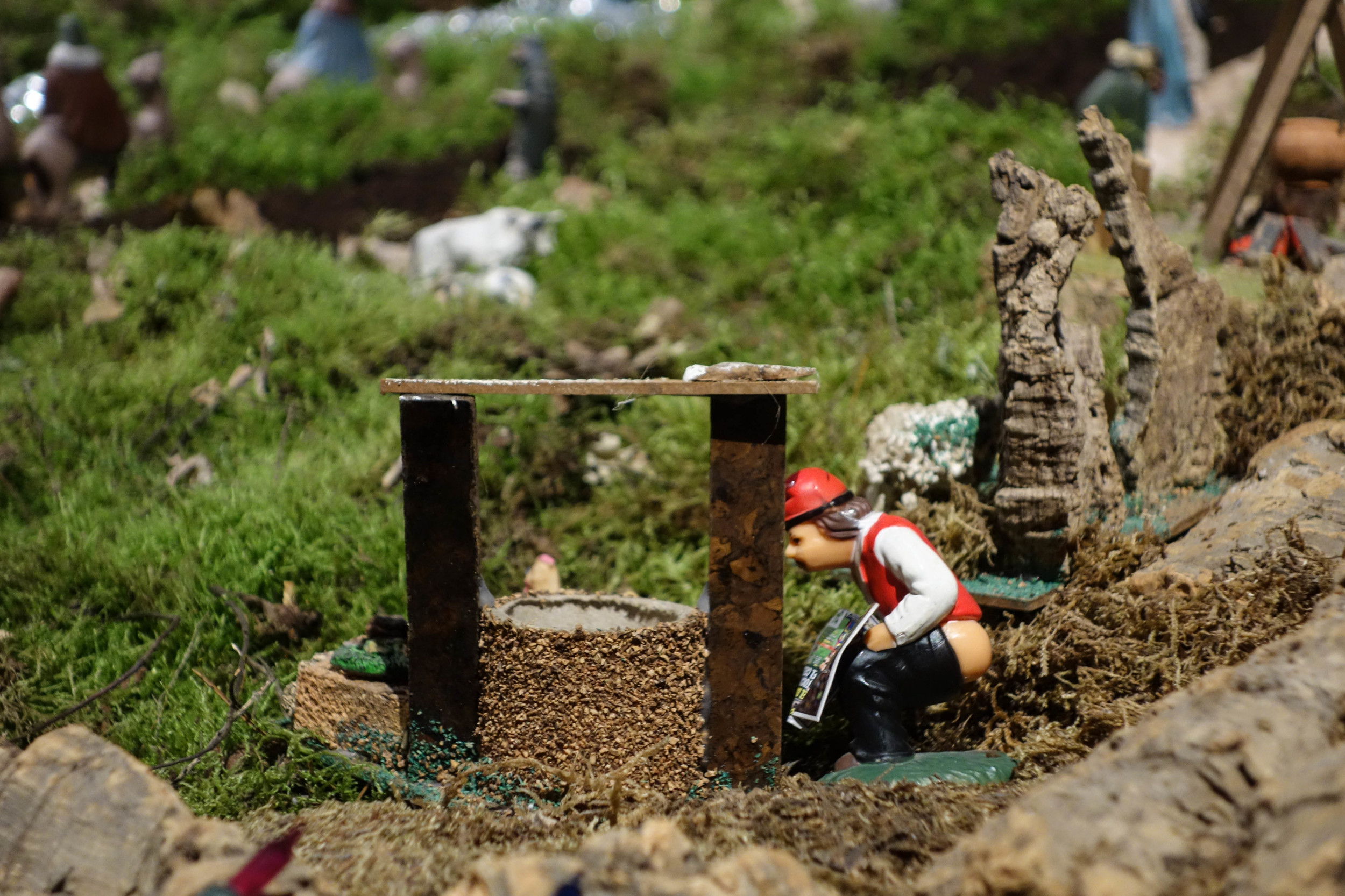

Photographing the Real Bodies of Incorrupt Saints: As Seen in Slate
Originally published on Slate.
The Italian nun grimaced at my camera, reviewing the photo that she had just snapped of me. We had to take another, she explained. The shriveled corpse to my left was beautiful. My face had room for improvement.
So it goes in the world of the incorrupt, a group of saints whose bodies supposedly won’t decompose. This particular corpse belonged to St. Paula Frassinetti, displayed at the Convent of St. Dorotea in Rome. In the popular imagination, the incorrupt are like sleeping beauties, but Paula, who’s been dead for 133 years, is shriveled and brown inside her crystal casket. This paradox is what makes the incorrupt fascinating.
Most people think incorruptibility is permanent, but another incorrupt saint, Francesca Romana, disabuses that notion. She’s little more than a skeleton dressed in a nun’s habit. Francesca was deemed incorrupt a few months after her death in 1440. When her tomb was reopened two centuries later, she was nothing but bone. According to Heather Pringle, who investigated research conducted by a team of pathologists from the University of Pisa, opening a tomb can disrupt the microclimates that lead to spontaneous preservation, so even the body of a saint can decompose after it’s discovered.
This is surprisingly unproblematic for believers. The church doesn’t count incorruptibility as an official Vatican-approved miracle anymore. It’s more like a favorable, if fading, sign from God.
Incorruptibility also isn’t binary, something you either are or aren’t. It can affect just one body part, lending extra significance to a heart, tongue, or hand. There are shades and degrees within the ranks of the incorrupt that make their numbers impossible to tally. The best account comes from Joan Carroll Cruz, a housewife who took it upon herself to research and count every incorrupt saint. Though secular researchers find her too credulous, her book published in 1977, The Incorruptibles, remains one of the most complete lists available.
Adding to the confusion around incorrupt saints are the ones who seem perfect but in fact are too good to be true. St. Victoria, a fragmented skeleton, was hauled out of the Roman catacombs at the mere suggestion she might be a martyr. In her lifetime, she would not recognize her name, story, even post-postmortem outfit changes: Those were pieced together or invented entirely by the church.
On the opposite bank of the Tiber, the incorrupt body of Blessed Anna Maria Taigi rests in the church of San Crisogono. From afar she looks ideally incorrupt, but visitors who get close can see that the wrinkles in her face are formed in wax. A few dozen black hairs reach out from her blonde curls, signaling something more macabre underneath. She, too, is a skeleton.
It’s tempting to see these lapses in realism and historical provenance and find satisfaction in that detective work. But the preservation of the incorrupt is often meant to be noticed. The sacristan, an officer in charge of overseeing Anna Maria’s sacred relics (what he sweetly called her “little old lady things”) explained that the wax on her isn’t designed to trick people. It’s to preserve an honest impression of her the moment she was discovered in her grave.
Of course there are other, more abstract ways to preserve a body’s likeness, ones less likely to lead to accusations of trickery. St. Paula was given a bath in carbolic acid to help preserve her. Rome has several incorrupt men encased in silver, including Pope St. Pius V and St. Vincent Pallotti, as well as two women in white marble: St. Catherine of Sienna and St. Cecelia. As with Anna Maria Taigi, with scant information provided by the shrines, it’s difficult to know where the incorrupt end and where the effigies begin.
Yet the mystery is part of how the incorrupt draw us in with their uncanny sleeping faces, as if the twins Hypnos and Thanatos were playing tricks by switching places. They are somehow both a memento mori and the opposite of the anonymous grinning skull. We will all die, but maybe, if we’re very good, we can linger in this world.




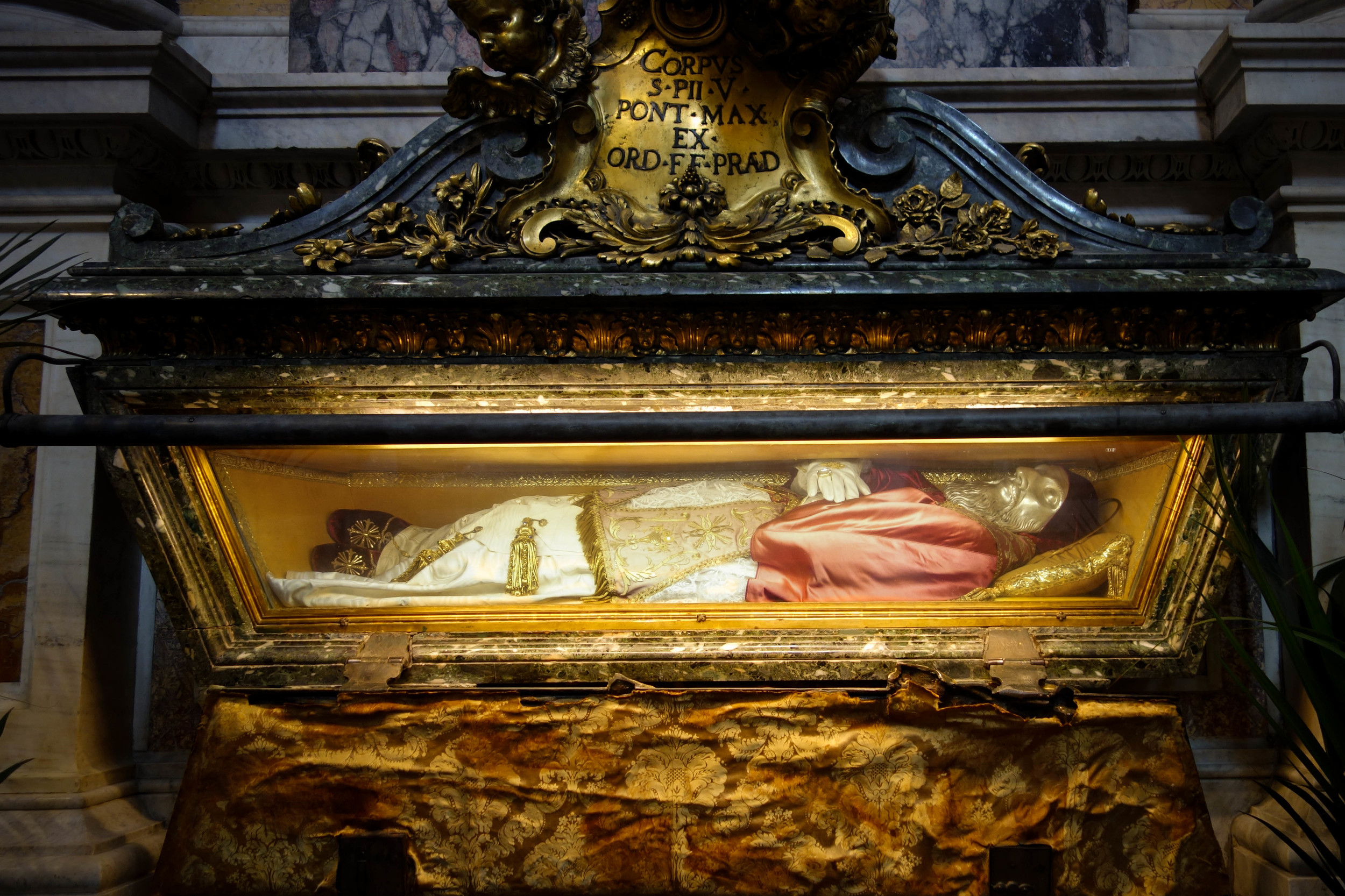




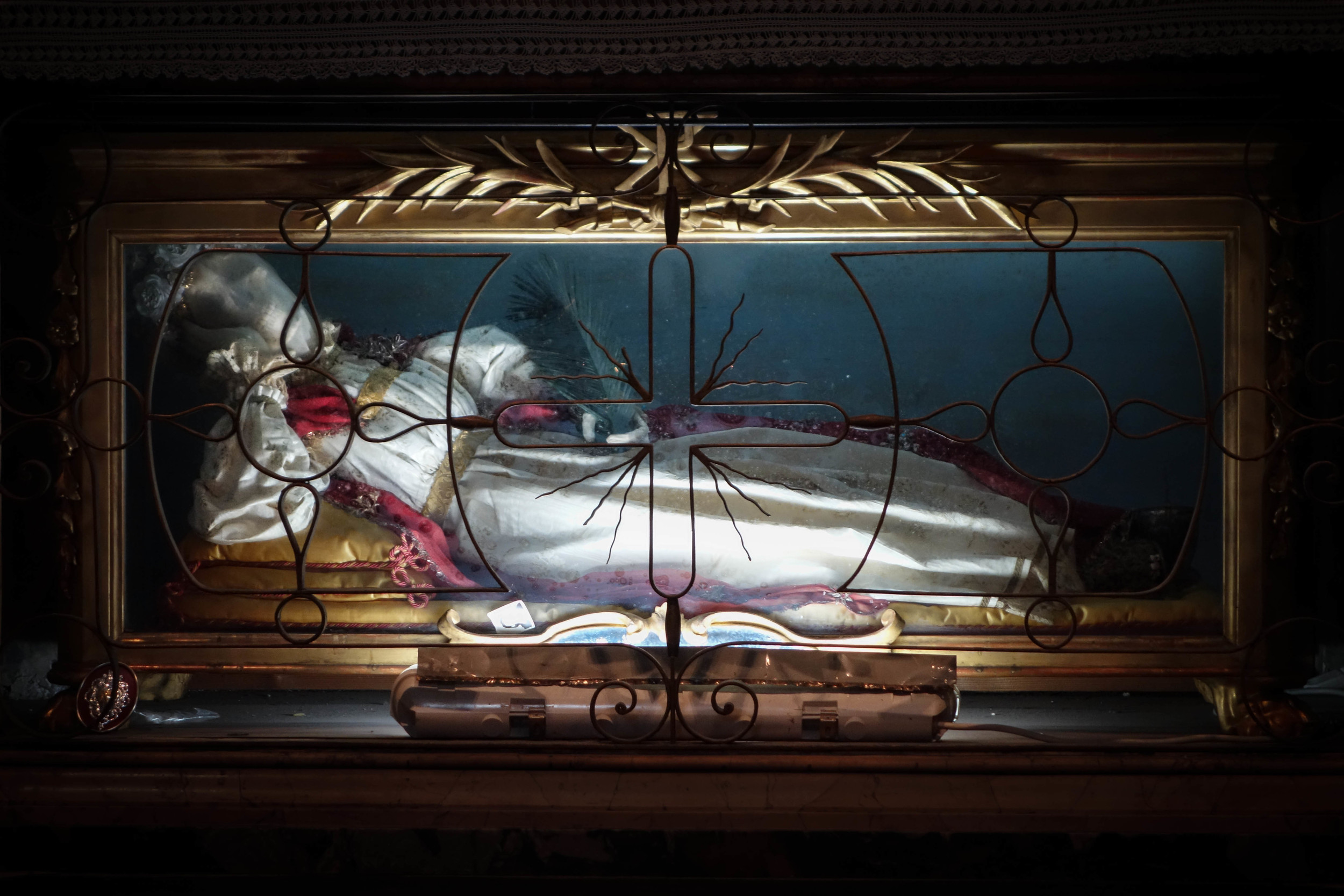

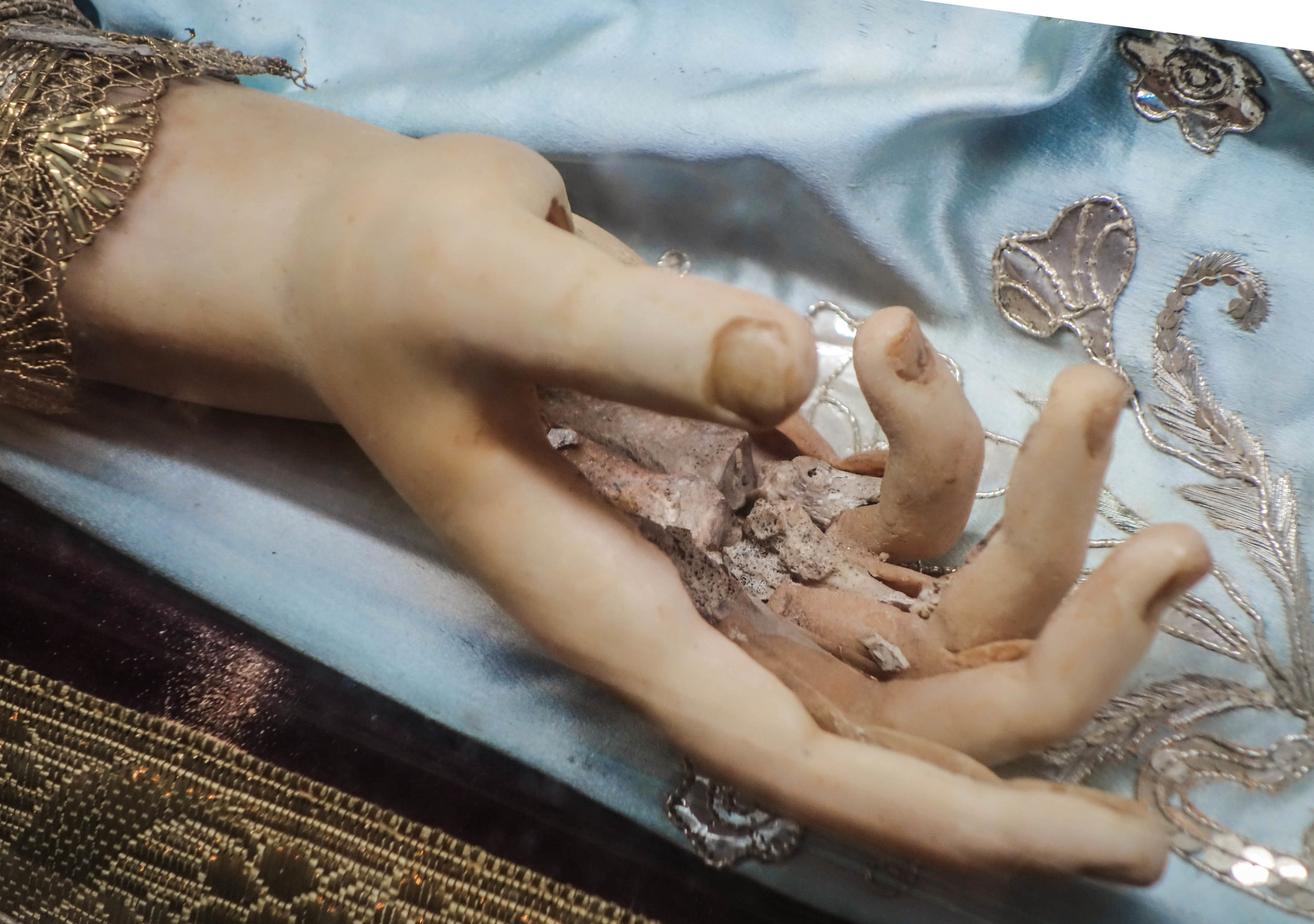
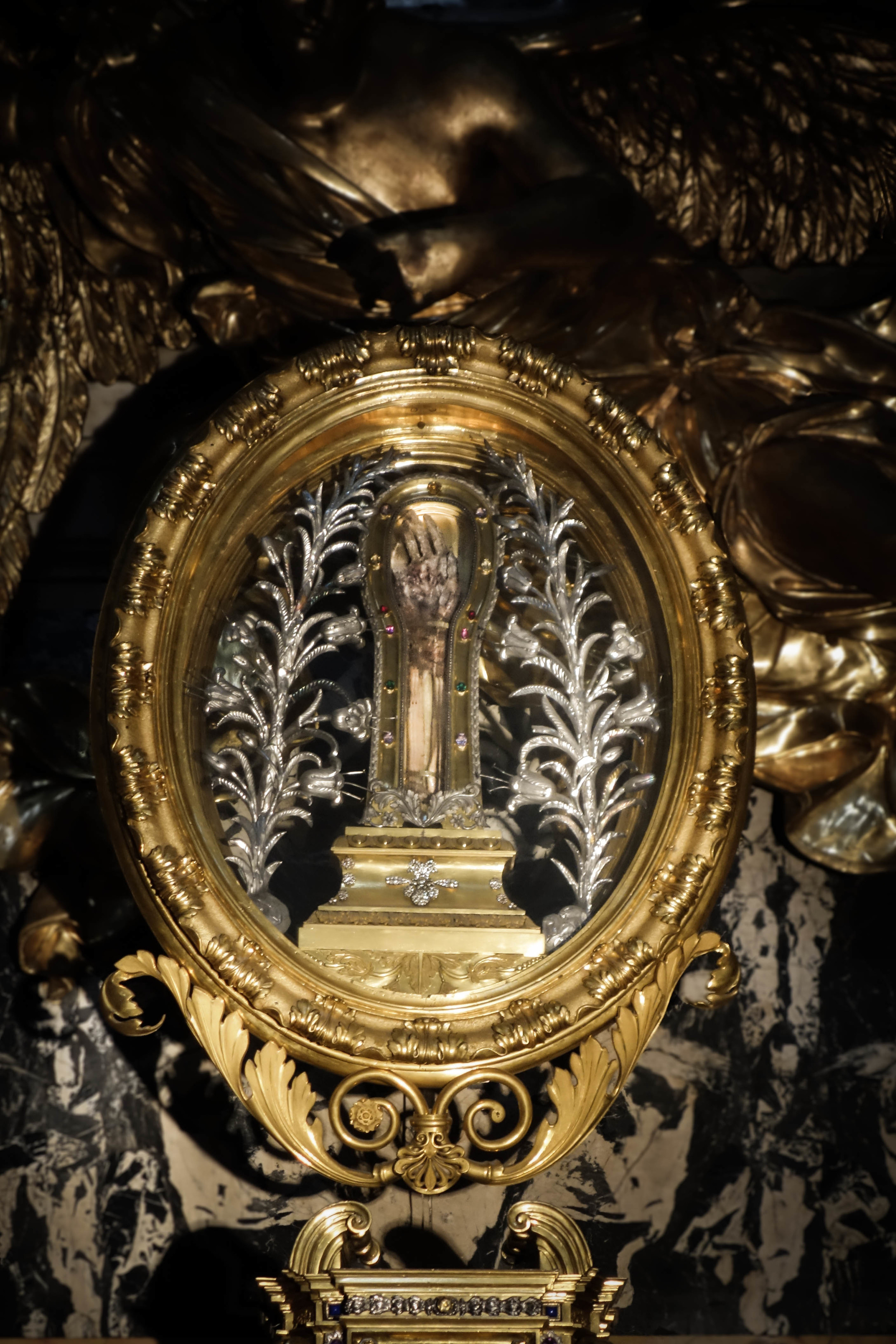
Consider the Putridarium
Originally published on The Order of the Good Death.
Sant’Andrea delle Frate is one of those jaw-dropping 17th century basilicas in Rome. It has angels by Bernini, a campanile by Borromini, and a room full of corpse toilets in the crypt.
Yep, we’re going there (again) with toilets and death. Because like Caitlin said, the unpleasant functions of the body are really good at reminding us of our own mortality. So isn’t the perfect memento mori really just a crypt full of toilets?
Now of course there aren’t actually modern flush toilets down there. It’s more like a room full of carved chairs with holes in the middle. Like a very public outhouse (for corpses). This type of crypt is called a putridarium and you can find them all over Catholic churches in Italy- as far north as Milan and all the way down to Sicily. They’re part of the old tradition of “double death” or “double burial” where the moment of death isn’t the end of the road. It’s just one stop on a journey that the corpse, and maybe more importantly, those who survive them are on.
Now I realize that Italian Catholicism can seem a little death-obsessed. Obviously the post-Vatican II Kumbaya guitar mass never really caught on there. So death is everywhere. Everywhere. Whether it’s carved in marble, set into the floor, or painted on the frescos, your eyeballs are pretty much guaranteed to stare into the empty sockets of a skull in any given church you walk into.
So of course these guys would look at death and burial and think, “Yeah, let’s do that. But twice.” And for a lot of people with a cursory curiosity in these kinds of symbols, the story ends there. Italians love death. Death is the end. Boom. Done. But Catholics also believe that saved souls go to purgatory, then heaven. Then after that they wait for final judgment and the renewal of the world. So for Catholics, death (and death imagery) represents the beginning of a whole new spiritual life. Physical death is just one stop on the line.
This idea of death being a really long process with different phases is acted out in the rituals that start in the putridarium. The fresh corpse is brought down and seated on one of the chairs with a hole in the center. There’s a strainer over the hole that ensures all the bones are saved as various goos and fluid drip out of the body and into the vat below.
This is, frankly, kind of a downer from the corpses’ point of view. No one wants to think about loosing their goo in front of everyone. But if you’re Catholic, purgatory is the spiritual corollary to the putridarium, and isn’t exactly a walk in the park either. Catholics believe that even if you die with all your sins forgiven, you’re still imperfect and imperfect beings are a no-go in heaven. So you have to burn those impurities away. Purgatory is all about purifying fire and punishment. Basically the only thing keeping it from being good old-fashioned hell is the fact that it’s temporary.
But hey, so is the putridarium! After a year or two the corpse turns into a pile of bones. After that the surviving family members or sometimes a clergy member can go down there and clean the bones so they’re white and pure(heavy on the symbolism, guys). Then bones can be arranged in an ossuary. The ossuary is their final resting place. It represents the soul out of purgatory at peace and the survivors are released from their duty to mourn. In fact, the ossuary is frequently a public part of the church or at least visible through a grate so it can serve as a reminder of souls in heaven. So yes, an ossuary is totally a stack of human bones and it’s totally not morbid.
But I hear you. You don’t believe in souls or heaven or purgatory or any of this invisible-sky-wizard business. I get it and I’ve read your letters, internet citizens. But I still like the putridarium! And I still think the putridarium is worthy of our consideration in a secular context.
Because here’s the thing. Even if that corpse is done-zo and there’s nothing after death, the survivors continue to care for the corpse and in doing so, care for themselves after a major loss. Within these Catholic death rituals, the bodies in the putridarium are tended to and dressed in new clothes as they rot. Sometimes public masses are said down in the crypt. And praying for the dead in purgatory is an important spiritual obligation for the living. But even if you take the religious aspect out of it, this adds up to taking a year or more to acclimate to the death of a loved one and in some cases actually watching their body change from someone you knew to an anonymous skeleton. Now confronting death slowly but in a real, visible way might remind you of the promise of eternal reward and inspire you to be a better person. Or it could remind you of the impermanence of life and inspire you to go paint a masterpiece or pet a dog. Either way, confronting death can be all about life. You don’t have to believe in anything to appreciate that.
Now one tiny caveat before I launch my Kickstarter campaign to build a putridarium in Los Angeles. Putridaria started falling out of use in the later part of the 17thcentury until their extinction in the early 20th century. Mostly because people believed they were unsanitary and that corpses emitted deadly effluvia or miasma. But if you’re caught up on your Ask a Mortician videos, you know that’s basically a bunch of bad science. But you know what’s not? The smell- the oh-so appropriately named cadaverine and putrescine that corpses emit as they decompose. And the bugs. Those are real too. So maaaybe you don’t want to have mass in your un-air conditioned basilica on a 100-degree scorcher in July above a dozen or so rotting friends. I get it. It’s an imperfect system. But consider the putridarium.
Sources
Fornaciari, Antonio. “Processi di Tanatometamorfosi: Pratiche di Scolatura dei Corpi e Mummificazione Nel Regno delle Due Sicilie”. Paleopatologia.it Universitá degli Studi di Pisa, 10/04/2010. Web. 05/05/2014



Sinless Sweets: Where and When to Eat the Ten Best Saintly Desserts
Originally published on Atlas Obscura.
“Sinless” desserts... Does anyone actually enjoy those bizarre chemical confections that promise no gluten, no fat, no sugar, and absolutely no enjoyment whatsoever? Get behind me, Splenda. Let me introduce you to my top ten favorite guilt-free desserts.
Sure these regional delicacies are loaded with sugar, but they were all created to celebrate Catholic saints, so what could be more sinless? For the most authentic experience, eat them on the corresponding saint’s day in their hometowns — after all, there’s a reason these celebrations are called “feasts.”
10. Raspados
Where to eat it: Izapalapa DF, Mexico
When to eat it: Semana Santa (Holy Week)
Holy Week is a somber stretch of holidays culminating in Black Saturday — a day so dark that even churches stay locked up. It’s the most austere period of the liturgical year so it might seem like an odd time to think about dessert. But in Mexico, every custom leading up to Easter is symbolic.
Raspados, sweetened shaved ice, represent the sweet tears of the Virgin Mary and are particularly nice after sitting in an un-air conditioned cathedral for a few hours in the spring. Though some vendors use snow cone-like syrups, be sure to try the uniquely Mexican flavors like tamarind, mango-chili, or sweetened condensed milk with cinnamon. You can find cart vendors all over the DF, but check out the ones in Izapalapa, a borough know for its elaborate Passion play that lasts all week and includes a cast of thousands.
9. Kremówka papieska
Where to eat it: Wadowice, Poland
When to eat it: October 22
In 1999, Pope John Paul II went back to his childhood home of Wadowice and casually reminisced about a particular type of cake he used to like as boy. It was a humble little dessert — layers of shortcrust pastry, custard, and puff pastry, assembled in a sheet pan and sold by the slice. It was primarily a way for bakers to recoup costs on leftover components of fancier desserts that would have otherwise been thrown out.
Overnight, this unremarkable trifle transformed into Papal Cream Cake. Now thanks to his immense popularity and canonization, you can even buy a slice in Rome.
8. Saint-Honoré
Where to eat it: Paris, France
When to eat it: May 16
If your tastes are a little fancier than Pope St. John Paul II’s, head to Paris for a Saint-Honoré cake — a pastry so complex, it’s no wonder the pros named it after their patron saint.
It’s puff pastry, topped with a meringue-based pastry cream, topped with cream puffs, topped with caramelized sugar, topped with fresh whipped cream. The finished product is only slightly less miraculous than the legendary baker’s peel that sprouted roots and became a fruit tree when Honoré was appointed Bishop of Amiens.
7. Bigne di San Giuseppe
Where to eat it: Rome, Italy
When to eat it: March 19
Like many stepparents, St. Joseph doesn’t get the respect he deserves year round, but at least his feast day is a big deal in Italy where it’s essentially the equivalent of Father’s Day in the United States. No San Giuseppe feast would be complete with out the bigne, or zeppoli — sugar-covered fritters filled with custard or cannoli filling and topped with chocolate or candied cherries.
Though most people think of Joseph as a carpenter, he’s nicknamed “frittellaro” in Rome. According to local legend, he sold fried pancakes after the flight to Egypt to support Jesus and Mary, hence their inclusion in his feast day.
6. Yemas de Santa Teresa
Where to eat it: Ávila, Spain
When to eat it: October 15
When Spanish winemakers needed to clarify wine, they sometimes added egg whites, which allowed tannins and other unwanted particles bind together for easy removal. But what do you do with all those leftover egg yolks?
Fortunately for us, the winemakers in Ávila decided to donate them to the local Carmelite convent. There, the nuns whipped up a confection dedicated to their most famous resident — St. Teresa of Ávila. Just looking twice at these little yellow candies might raise your blood pressure. They’re essentially just egg yolks and sugar with a bit of spice and water, but their slightly crunchy sugar shell and creamy interior makes them incredibly addictive — so much so that they’re available year-round at souvenir shops.
5. Lussekatter
Where to eat it: Stockholm, Sweden
When to eat it: December 13
According to some versions of her legend, St. Lucy was so set against marrying her pagan suitor, when he admired her eyes she gouged them out and gave them to him. “Now leave me to God,” she quipped. He had her martyred by the Emperor Diocletian instead.
To this day, Lucy is usually depicted offering up her eyes on a plate and her feast celebrations in Sweden still honor this story. The eldest daughter in each family dons a white robe and serves her family saffron buns in the shape of eyes with raisins or currents for pupils. She wears a crown of candles to ward off the winter darkness, a symbol of Lucy’s spiritual light despite her blindness.
4. Cattern cakes
Where to eat it: Nottinghamshire, England
When to eat it: November 25
St. Catherine of Alexandria was famously sentenced to death on the wheel, an execution method designed to bludgeon the victim to death over a course of hours or days. She’s almost always shown next to this terrifying device. A martyr’s execution method is usually what makes them identifiable in imagery originally used to teach illiterate parishioners. But sometimes when medieval guilds would pick patron saints, they would base their choices on dubious readings of these images.
For example, St. Bartholemew, holding the knife that flayed him alive, was picked to be patron of the cheese mongers since it looked like he had a cheese knife in his hand. Thus, Catherine’s wheel became associated with spinsters and lace-makers. Yet the reason the lace-makers of Nottinghamshire make cakes on St. Catherine’s day has as much to do with a second Catherine as it does with the martyr. When a sluggish market threatened to put lace-makers out of a job, Catherine of Aragon was said to have burnt her lace dresses to create a demand for work. The scone-like cakes with spices, currants, and caraway seeds are dedicated to her as well as their patron saint with the wheel.
3. Minnuzze di Sant'Agata and Olivette di Sant’Agata
Where to eat it: Catania, Italy
When to eat it: February 5
If all this talk of St. Catherine’s wheel and St. Lucy’s gouged-out eyes seems a bit too much to take while you’re eating, go ahead and skip this entry. For those of you left, try two Sicilian treats commemorating St. Agatha.
Agatha was a virgin-martyr who had her breasts ripped off by her torturers. And yes, those “minnuzze” are absolutely cakes in the shape of her amputated breasts with a cherry on top representing the nipple. The cake underneath is a tooth-achingly sweet combination of vanilla sponge cake, a dome of sweetened ricotta, and a glaze of pistachio goo all topped with hardened sugar frosting.
For a less graphic take on her legend, pick up the green and black olives of St. Agatha. The green ones are sugar-encrusted marzipan, the black are chocolate-covered marzipan. These commemorate the miraculous olive tree that sprouted where Agatha stopped to tie her shoe on her way to be martyred.
2. Hildegardplätzchen
Where to eat it: Bingen am Rhein, Germany
When to eat it: September 17
Lurking at the bottom of every news website in between "shocking celebrity photos" and "unbelievable insurance savings" is that suspicious ad for "incredible diet cookies" that promise the ability to snack yourself slim. If you've ever been tempted to click on that ad, then I have a saintly dessert for you.
The recipe for Hildegardplätzchen, or "cookies of joy," was written by St. Hildegard herself around 1100. This mystical Doctor of the Church was a bit of a medieval Dr. Oz. She wrote plays and music but also wrote extensively on medicine based on her experience working in the herb garden and treating her fellow nuns. She said of her spice cookies made with cloves and nutmeg: "Eat them often and they will calm every bitterness of heart and mind — and your hearing and senses will open. Your mind will be joyous, and your senses purified, and harmful humours will diminish".
1. Huesos de Santos
Where to eat it: Madrid, Spain
When to eat it: November 1
These are my personal favorite. If you read the description of the “Yolks of St. Teresa” and thought, “Yeah that sounds good... but make them richer, sweeter, and a little terrifying,” these Spanish candies are for you.
Huesos de Santos, or “bones of the saints,” are sheets of white marzipan rolled around an egg-yolk filling. They’re meant to resemble bones with gooey marrow inside. You can find them around All Saints’ Day as a reminder of the relics or the venerated bones of the saints often found in Catholic churches. They’re the perfect accompaniment to a day spent taking in the elaborate floral displays at the local cemeteries in Madrid.
Photo credits: 1. AnelGTR/Wikimedia, 2. Piotrus/Wikimedia, 3. Chatsam/Wikimedia, 4. Salvatore Capalbi/Wikimedia, 5. Tamorlan/Wikimedia, 6. Jonas Bergsten, 7. Sue Scott/The Quince Tree, 8. Elizabeth Harper, 9. Slastic/Wikimedia, 10. Tamorlan/Wikimedia.










The Catacomb Saint of Manhattan: As Seen in Hyperallergic
Originally published on Hyperallergic by Allison Meier.
Click here to see the original article with Allison's beautiful photographs.
Catholic churches in Europe host as many bones as a graveyard, with bits of saints and intact incorrupt bodies encased in glass and displayed on ornate altars. With European populations immigrating to the United States in the 19th century, many of these traditions traveled across the Atlantic. At one church in the East Village of Manhattan — Church of the Most Holy Redeemer, on East 3rd Street between Avenues A and B — there is a little-known shrine where over 150 saint relics are contained, as well as a life-size wax body holding the first complete saint skeleton to be sent to an American church.
“Relics are a unique way that the Catholic Church relates to the dead,” Elizabeth Harper of All the Saints You Should Know said on a relics tour in late October for Atlas Obscura at the Church of the Most Holy Redeemer, ahead of that weekend’s All Saints’ Day. Through All the Saints You Should Know, an online site chronicling her research into folk saints and popular Catholicism, Harper has explored everything from incorrupt saints, to skeletal Baroque tombs in Rome, to taxidermy crocodiles in Spanish churches. She’s currently researching purgatory dioramas of Naples for Virginia Commonwealth University’s World Religions and Spirituality Project. A vivid diorama of souls walking purgatory’s sea of flames is on view in the Church of the Most Holy Redeemer, and asks: “Have pity on me … At least you, my friends,” and below lists, “Redemptorists buried in crypt of this church.” Per Catholic belief, only martyrs go directly to heaven, the rest must pay penance for their sins.
While not actively religious herself, Harper is interested in the history, meaning, and visual culture behind why these relics, that some people see as macabre, exist. “There are still people who are shocked by this today, that living and dead should be separate,” she said.
Like Harper, I also grew up Catholic, and although most of the rites and rituals didn’t interest me, I remember being fascinated by the minuscule chip of bone said to be from John the Baptist lodged in the altar of our Oklahoma church. That a relic could travel that far in both time and distance, and have this tangible connection to the sacred, was meaningful to me in a way that the scriptures and hymns were not. As Harper explained on her tour, that visible connection is as important as the veneration itself. (There’s a misconception these relics are worshiped, but in the Catholic Church only God receives prayers. Saints are more like petitioners.)
“The relic is the saint both spiritually and physically,” Harper said. The East Village church and its reliquary are surprising for Manhattan. Walk through the wooden doors of the limestone church with its looming bell tower, and it’s like stepping into another world from the surrounding tenement architecture. A mix of Baroque and Romanesque influence mingles on soaring arches, stained glass, and painted ceilings in the nave. The church was consecrated in 1852, founded by the Redemptorist Fathers, and was the central place of worship for the immigrant Catholic community of Kleindeutschland, or “Little Germany.” Now, most traces of this German society are gone except in the surviving 19th-century architecture.
To the right of the altar, a chapel holds the reliquary shrine, which is elaborately carved white marble, where angels fly and kneel around glass spaces holding the relics. A list alongside tallies over 150 items, including obscure martyrs and famous figures like St. Mary Magdalene and St. Paul the Apostle. There are bits from the “tomb of the Blessed Virgin,” “Home of St. Joseph,” and the “Manger of Our Lord.” There is a recognizable small bone; most items are hard to discern behind the glass with their handwritten labels, but the ostentatious, gleaming gold containers radiate their importance. Small ex votos — offerings left by people whose venerations were answered — hang in the shrine by the relics. Whether or not these bones were once part of their named saint isn’t necessarily important to the church; it evokes the saint’s memory through the visual presence of the object.
Beneath the shrine’s altar is a wax effigy of a martyr known as St. Datian, which arrived at the church in 1892. Curiously, he later got connected to an 1897 robbery where a police officer was shot chasing a man who stole from the prayer box, and up until the 1940s there are mentions of the saint being the police officer’s incorrupt corpse. In actuality, St. Datian, whose life is vague, was likely one of the Roman catacomb skeletons brought out and distributed as relics to replace those destroyed in the Reformation. Some were lovingly draped in jewels, others were encased in wax like St. Datian, whose bones are inside a box, hidden in his prone body. Harper explained that he was gifted by an Italian woman when the catacomb saints were falling out of favor in Europe, as their origins were somewhat dubious.
Around 40 Roman Catholic churches recently closed around the state of New York, and even places like the Church of the Most Holy Redeemer can be obscure to people who walk by everyday, perhaps not considering opening the doors to the sacred space. New York City has several such places, such as the bloodied sock of Padre Pio at the Church of St. John the Baptist, Our Lady of Mt. Carmel with its wax saint in East Harlem, and Mother Cabrini resting in a glass coffin in Upper Manhattan. These shrines are as much a part of our collective visual culture, and how we express our beliefs with objects, as an exclusively religious practice. There’s a value in bringing them visibility, and considering how they transcend time and language.

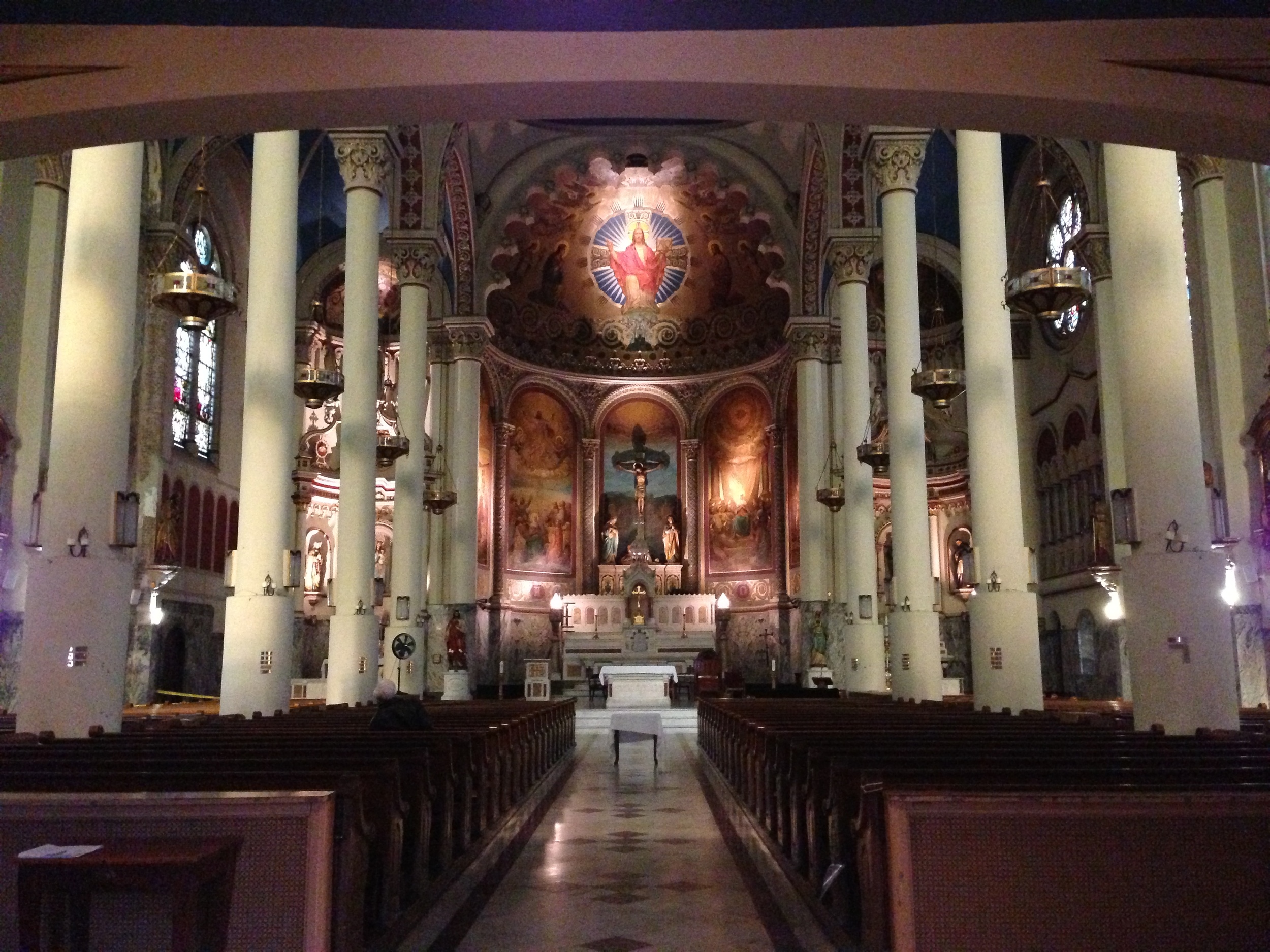
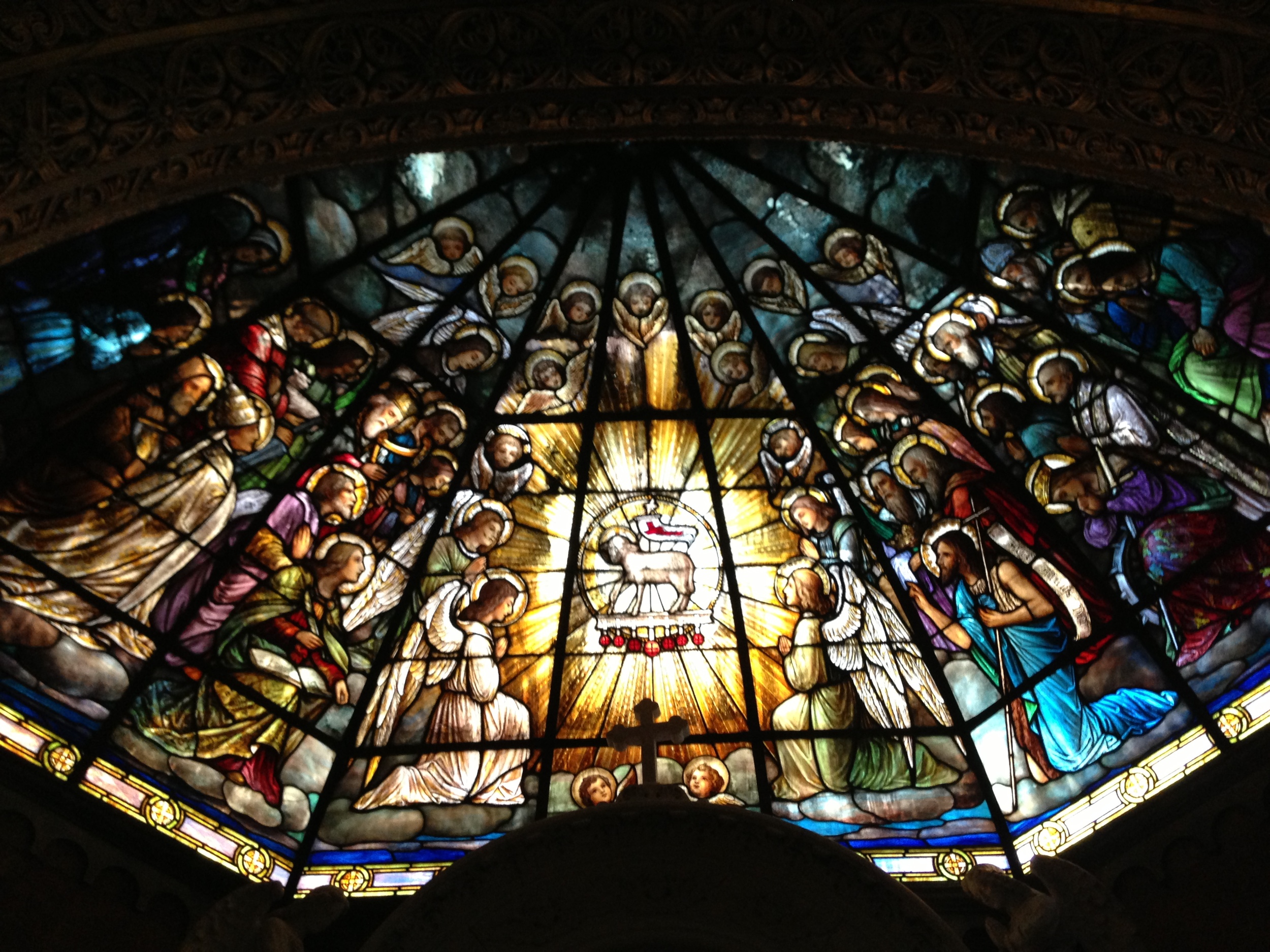
The Mesmerizing Skeletons of Rome: As Seen in Swide Magazine
Originally published on Swide by Ben Taylor.
Photographer and urban explorer Elizabeth Harper has found herself charmed by the last thing one would expect to be charmed by… the skeletons of Rome. Now, I’m not talking those that lay beneath our feet or those of the saints stored in intricate glass tombs, no, I am talking about the grand marble skeletons that creep, play and oversee the chapels and churches of Rome. There are those that are celebrating the macabre, skeletons that appear to be mocking the dead (or is that the living?) and there are those that revel in the gloom that they perpetuate.
This juxtaposition of life within the dead is a style that was made popular by Italian artist and architect Gian Lorenzo Bernini (1598 – 1680) who worked principally in Rome. You’ll recognise his name as the master of Rome’s baroque fountains, namely the Fountain of the Triton and the Barberini Fountain of the Bees.
Armed with a camera and a creative eye, Elizabeth Harper has hunted down the skeletons of Rome and created a collection of photographs that tell stories of those passed and of those to come.
It’s no surprise that these skeletons often come bearing solemn messages; one in particular can be found on an engraved skeleton on the façade of Santa Maria dell’Orazione e Morte and has written ‘Hodie mihi. Cras tibi.’ ‘Today me. Tomorrow you’. But, as Elizabeth Harper explains, ‘though the skeleton may only say, “You are going to die," for some that implies, “You haven’t lived yet.’
One thing you’ll notice about many of these striking statues and pieces, is that the skeletons have wings, prompting a belief that death is simply the first step towards something much greater and, perhaps, eternal life.

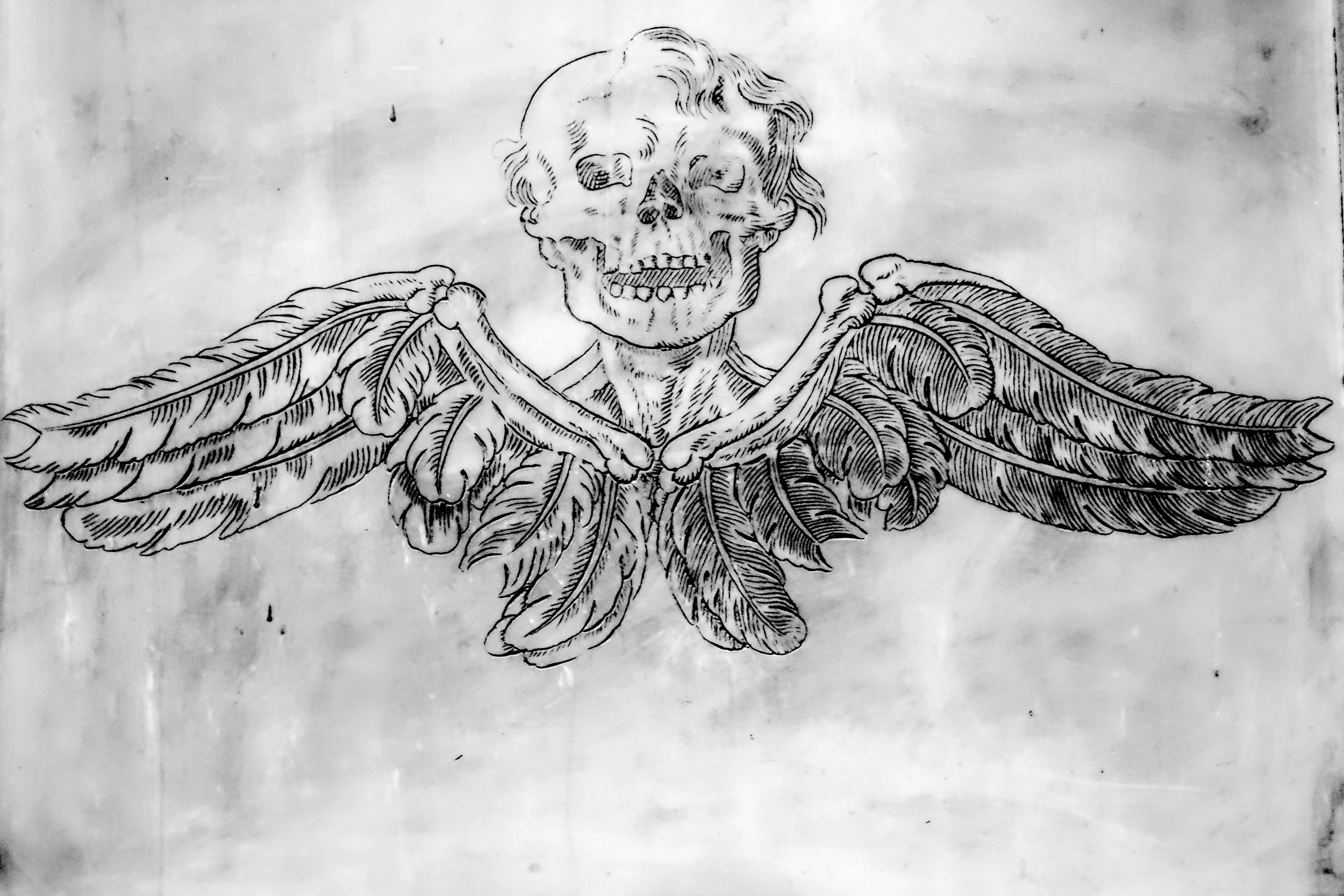


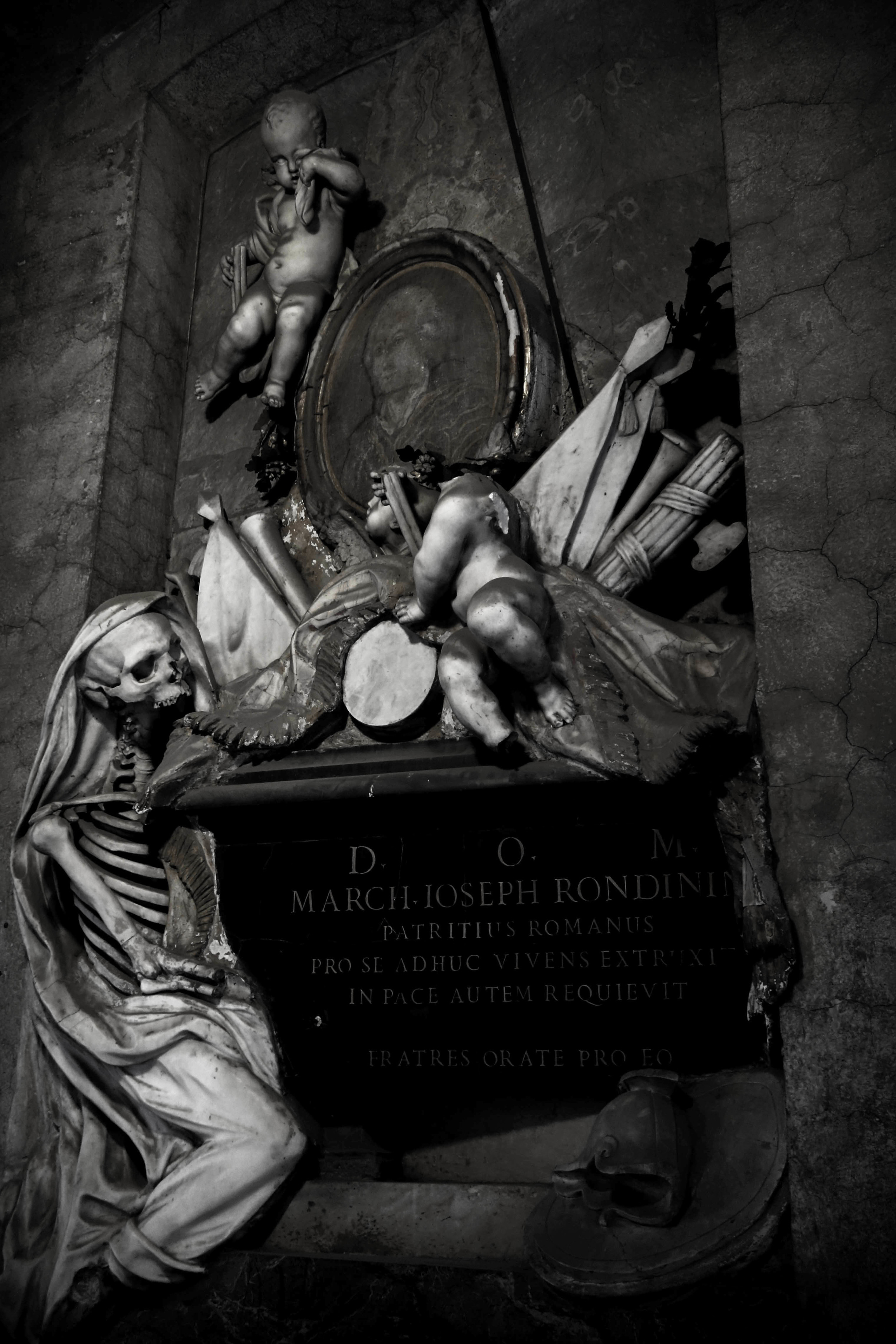

All Saints' Way
While I was in Boston, I stumbled upon this incredible little folk-shrine in an alley. It’s built and maintained by Peter Baldassari, who occasionally offers tours if he’s around and swaps out the seasonal decorations. You can see a lot of it from the street, but if it’s open there’s a special shrine to a featured saint. I’m just glad I got to see it with its light-up skulls for Halloween. If you’re in Boston, you can find the alley on Battery St. just off Hannover.

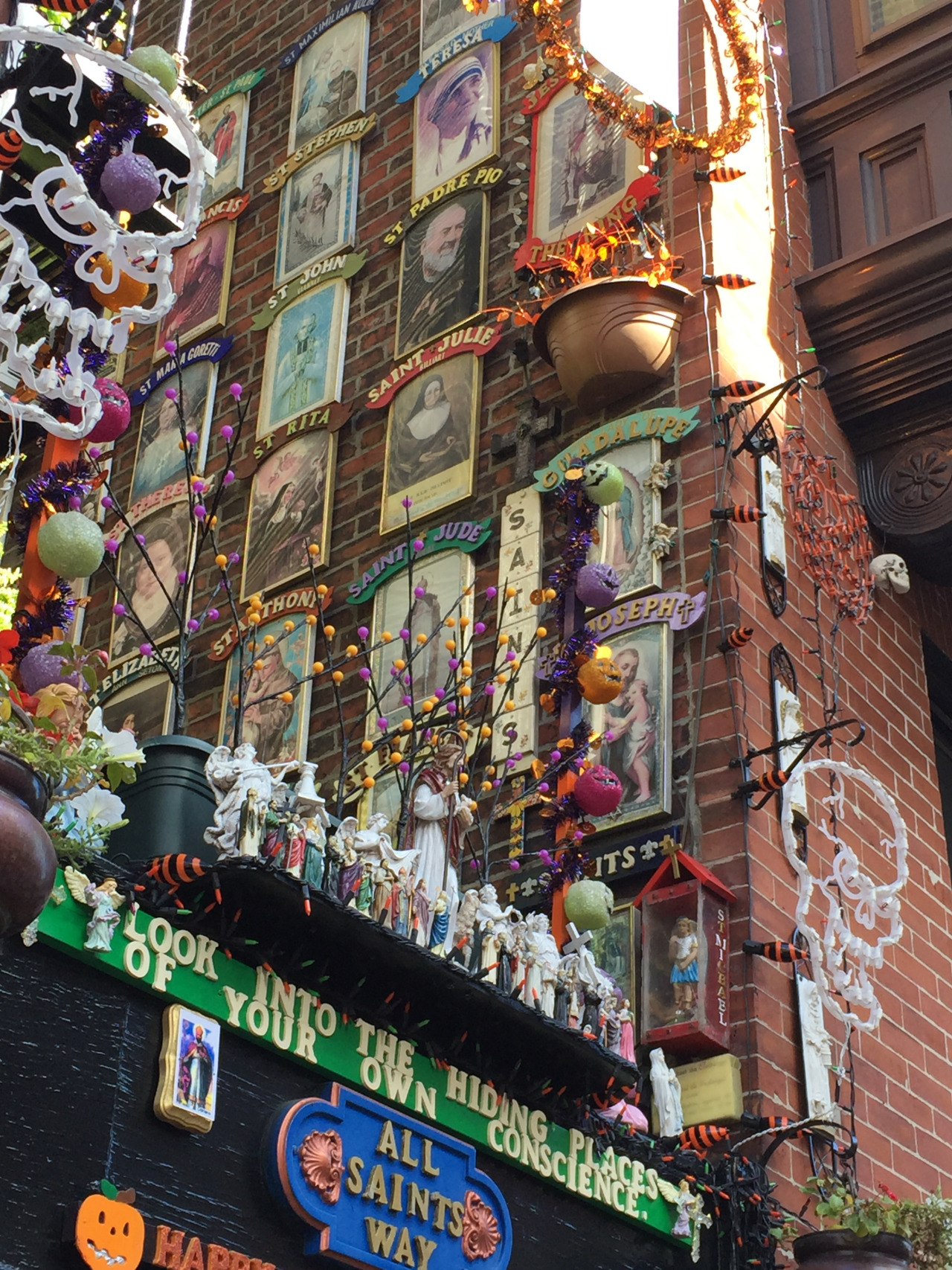

The Rapist of Santa Maria in Trastevere
Today at Santa Maria in Trastevere, I saw this bust of a young man above a funeral monument. He’s wearing a tabard, like a knight. Below him was a carved panel with the armor and shield of a Roman soldier. Above him angels sighed on a cornice. The monument is in a prime location just to the left of the high altar in one of Rome’s most beautiful basilicas.
Not bad for the bastard son of a cardinal who was executed for kidnapping and rape.
His name was Roberto Altemps. He was twenty when he died and frankly it’s astonishing that he was punished at all. He died in 1586- a time when the harshest punishment for nobleman-rapist was usually marriage. But Pope Sixtus V decided to make an example of him (though not for the reason one might hope). Sixtus was a member of the Peretti family and Roberto was married to a member of the rival Orsini family. So even though he was caught in the act of raping Ms. Lulla Frangipane, he was tried and convicted of adultery instead.
The Latin epitaph below his bust puts it all rather mildly, noting that he was “extinguished too soon”. The reason he was still allowed such a dignified burial is probably best explained by a photo of his family’s private chapel, located on the other side of his monument.
Today when the sunlight was coming through the window, grazing Roberto Altemp’s monument in the most attractive way, I found that I wasn’t the only tourist taking photographs of him. It struck me how the art in so many churches plasters over history with a new, decorative facade. It all seems beautiful and spiritual because of the context (and much of it is) but in reality the temporal seeps in and good sometimes shares artistic media with evil.
Sources:
A Surprising Pair: The Tombstones of Cardinal Hosius and Cardinal Altemps' Son, Roberto, in the Basilica of Santa Maria in Trastevere in Rome by Grazyna Jurkowlaniec
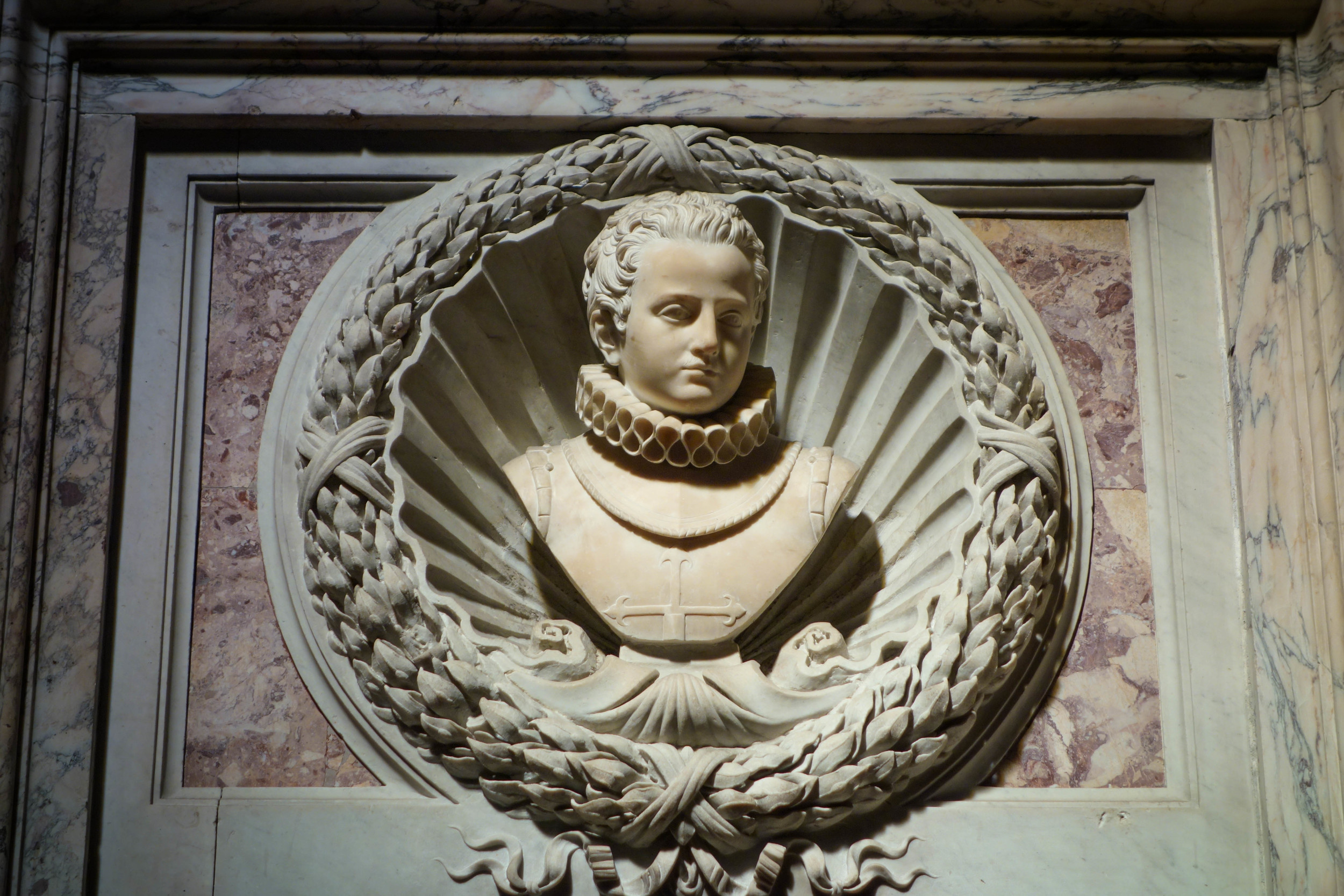
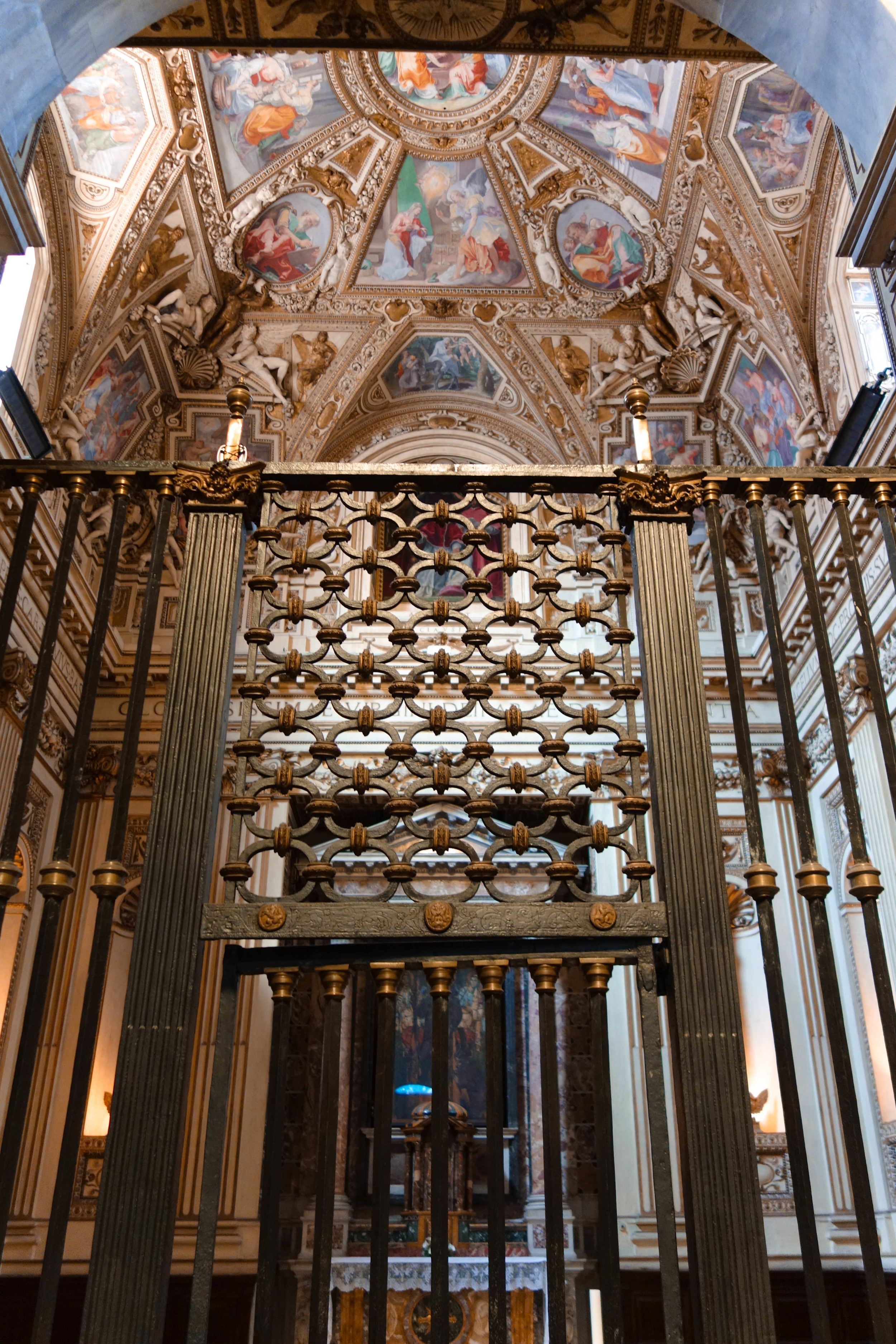
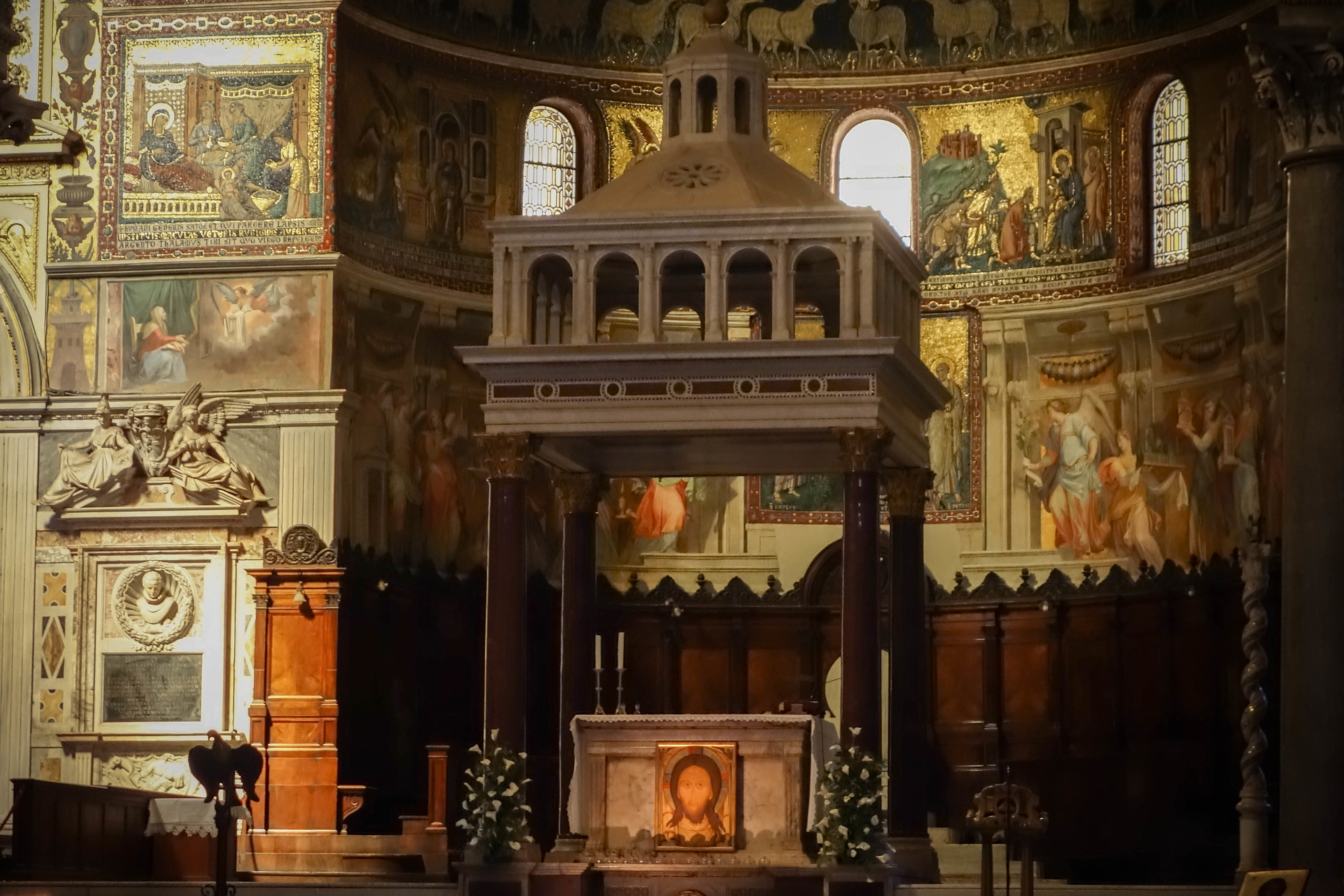


The Oracles of Rome: Two Architectural Oddities Predict the Apocalypse
Originally published on Atlas Obscura.
The Basilica of St. Paul Outside the Walls in Rome has seen its share of destruction. Since 340, it’s been struck by lightning, damaged in an earthquake, accidentally burnt to the ground, and sacked by pirates. It seems nothing shy of the apocalypse will keep this church down. But according to local legend, the four horsemen might be riding in sooner rather than later. The collection of papal portraits here are linked to the end of the world.The Basilica of St. Paul Outside the Walls in Rome has seen its share of destruction. Since 340, it’s been struck by lightning, damaged in an earthquake, accidentally burnt to the ground, and sacked by pirates. It seems nothing shy of the apocalypse will keep this church down. But according to local legend, the four horsemen might be riding in sooner rather than later. The collection of papal portraits here are linked to the end of the world.
Every pope is depicted in a large mosaic installed in a niche around the perimeter of the church. They're all exactly the same size and neatly laid out in a single-file line under the windows. The only problem is, there’s a finite number of niches. A second row would certainly throw the aesthetic off so the legend says that when the niches run out, the world ends.
Even though the tradition of the portraits was started by Pope St. Leo the Great in the 5th century, the niches and the legend are newer than you might expect. At first, the portraits were frescos. They were only added sporadically, frequently falling behind the times, until 1823 when a fire ravaged the building. During the rebuilding of the basilica, Pope Pius IX ordered the portraits to be reinstated and brought up to date, this time using mosaics. If a pope’s likeness wasn’t well-documented, artist Filippo Agricola arbitrarily assigned him a face (so even the most devout Catholics won't recognize a few). The project was completed in 1875, and since then the mosaics have been added pope-by-pope.
Since popes typically die in office, a sign indicating the death of a pope might help you gauge your concern about the end of the world. At the Lanteran, a cenotaph to Pope Sylvester II is said to sweat when the death of a pope is imminent. There were plenty of people keeping an eye on it near the end of Pope St. John Paul II’s life, but no word on how it will react with one current pope and one retired.
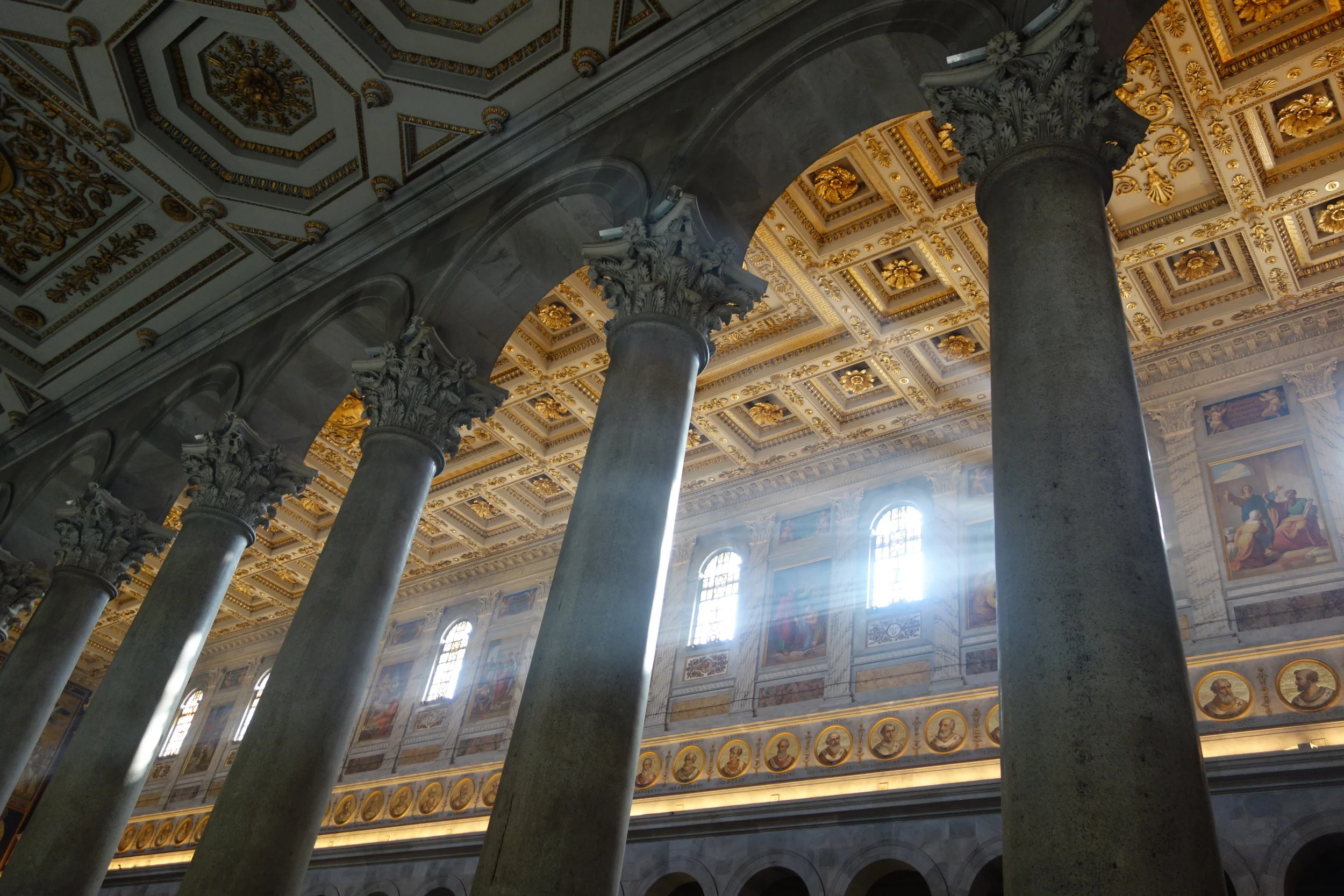
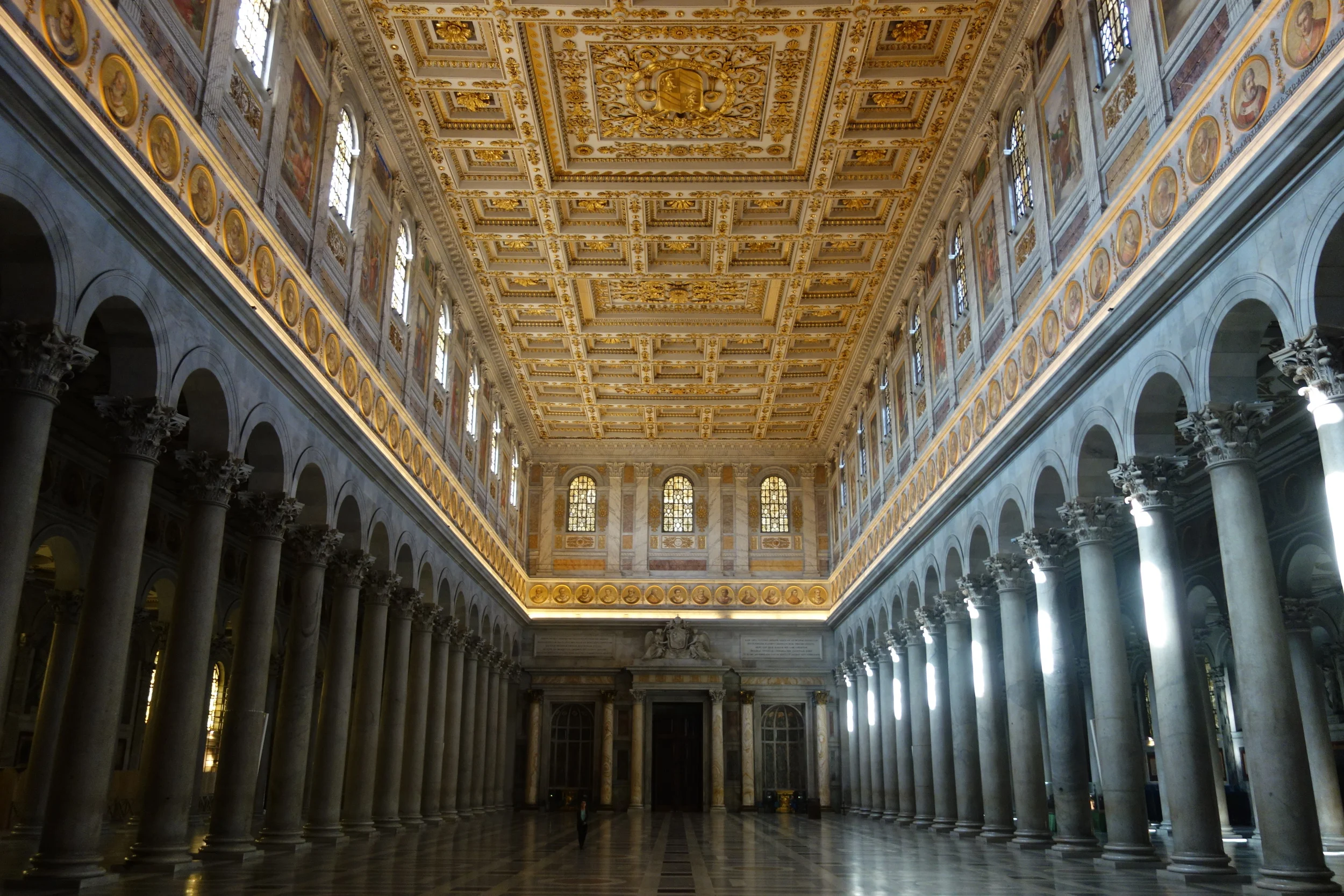
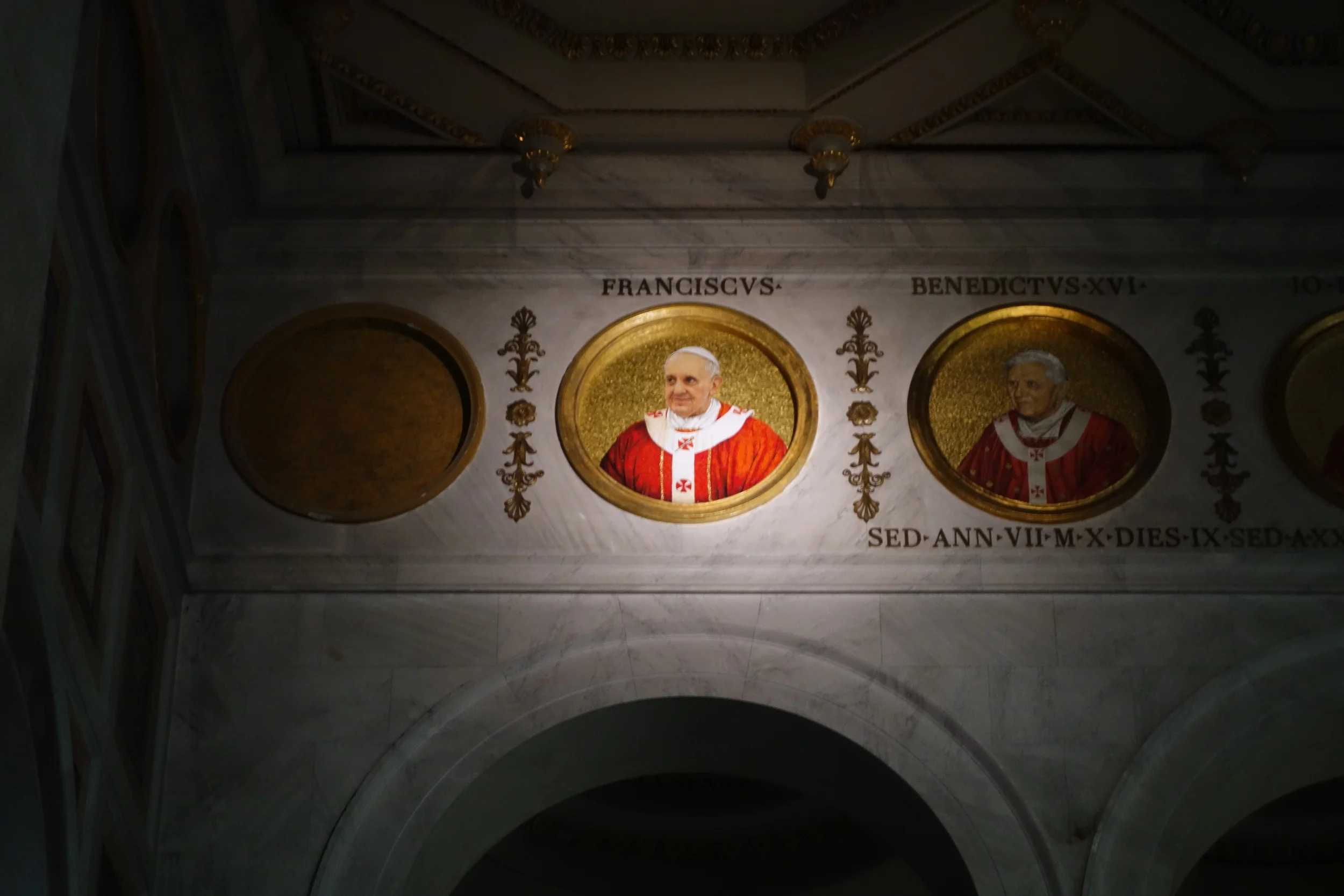
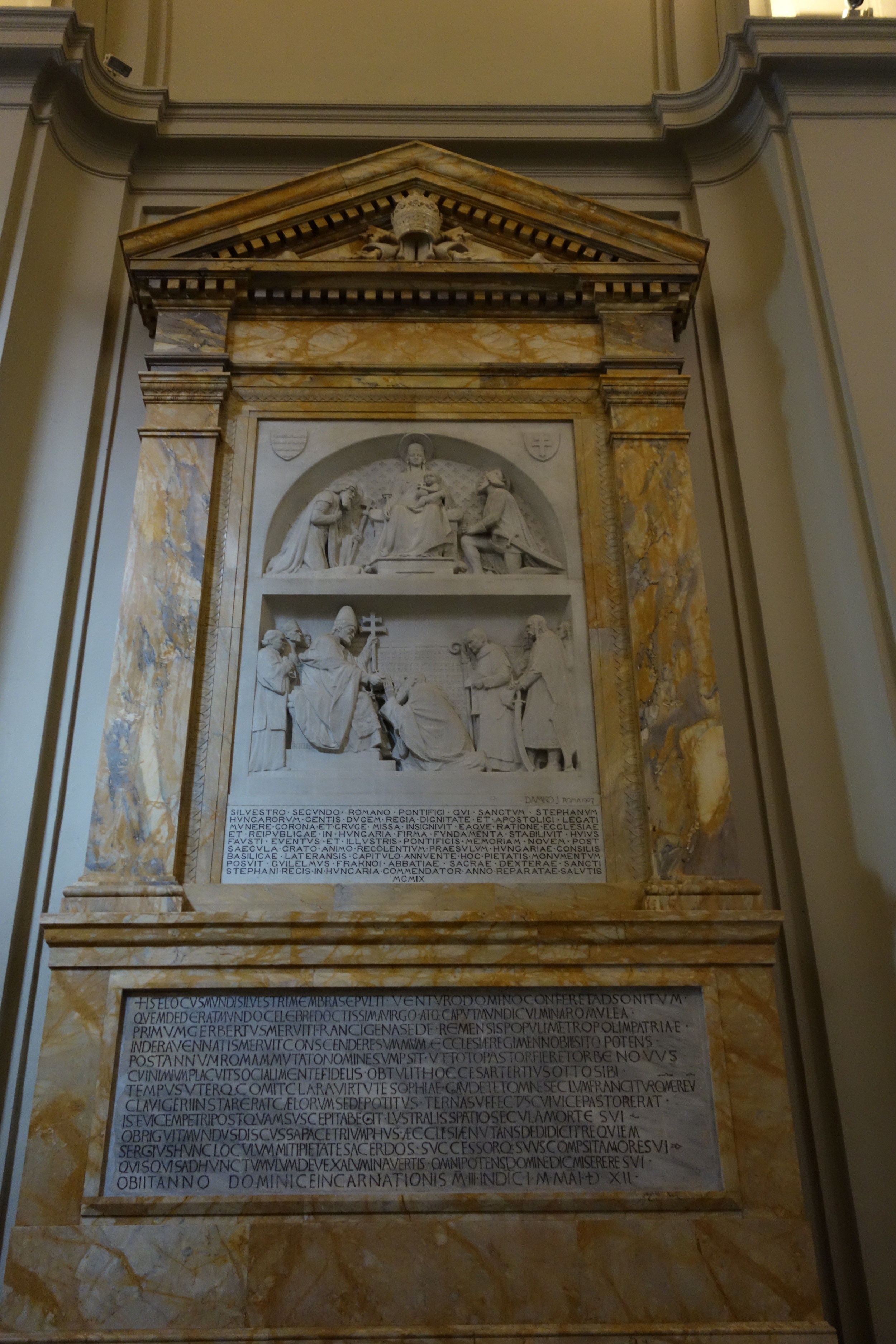
Hilda's Tower

"When we have once known Rome, and left her where she lies, like a long-decaying corpse, retaining a trace of the noble shape it was, but with accumulated dust and a fungous growth overspreading all its more admirable features, left her in utter weariness, no doubt, of her narrow, crooked, intricate streets, so uncomfortably paved with little squares of lava that to tread over them is a penitential pilgrimage, so indescribably ugly, moreover, so cold, so alley-like, into which the sun never falls, and where a chill wind forces its deadly breath into our lungs,—left her, tired of the sight of those immense seven-storied, yellow-washed hovels, or call them palaces, where all that is dreary in domestic life seems magnified and multiplied, and weary of climbing those staircases, which ascend from a ground-floor of cook shops, cobblers’ stalls, stables, and regiments of cavalry, to a middle region of princes, cardinals, and ambassadors, and an upper tier of artists, just beneath the unattainable sky,—left her, worn out with shivering at the cheerless and smoky fireside by day, and feasting with our own substance the ravenous little populace of a Roman bed at night,—left her, sick at heart of Italian trickery, which has uprooted whatever faith in man’s integrity had endured till now, and sick at stomach of sour bread, sour wine, rancid butter, and bad cookery, needlessly bestowed on evil meats,—left her, disgusted with the pretense of holiness and the reality of nastiness, each equally omnipresent,—left her, half lifeless from the languid atmosphere, the vital principle of which has been used up long ago, or corrupted by myriads of slaughters,—left her, crushed down in spirit with the desolation of her ruin, and the hopelessness of her future,—left her, in short, hating her with all our might, and adding our individual curse to the infinite anathema which her old crimes have unmistakably brought down,—when we have left Rome in such mood as this, we are astonished by the discovery, by and by, that our heart-strings have mysteriously attached themselves to the Eternal City, and are drawing us thitherward again, as if it were more familiar, more intimately our home, than even the spot where we were born."
— From The Marble Faun by Nathaniel Hawthorne, Chapter XXXVI: Hilda’s Tower
The photo on the right is the actual tower that Hawthorne saw in Rome. It's where he imagined Hilda "trimmed the lamp before the Virgin's shrine". It's also home to a very strange legend about monkey.
The Mysteries of Saint Cristina
This is a translation I did of a fantastic Italian piece written by my friend Ivan Cenzi of Bizzarro Bazar. Click here to see lots more of his photos of the sacred representation that's still performed today in Bolsena, Italy. The performance is part parade, part tableau, part mass and part dance piece. It depicts the martyrdom of St. Cristina over two days.
You may recall the concept of sacred representations from my posts on the unusual ones that used to incorporate real corpses. All of these actors are alive and well, but the death of the martyr is no less graphic.
(And while you’re over at Bizzarro Bazar, do yourself a favor and order a copy of Ivan’s books on the Fontanelle Cemetery in Naples and the Catacombs in Palermo. They have gorgeous photos and they’re written in Italian and English.)
_____________________________________
Two days ago, one of the most unusual solemnities in Italy was held as usual: the “Mysteries” of Saint Cristina of Bolsena, a martyr who lived in the early fourth century.
Every year on the night of July 23rd, the statue of St. Cristina is carried in a procession from the basilica to the church of St. Salvatore in the highest and oldest part of the village. The next morning, the statue follows the path in reverse. The procession stops in five town squares where wooden stages are set up. Here, the people of Bolsena perform ten tableaux vivants that retrace the life and martyrdom of the saint.
These sacred representations have intrigued anthropologists and scholars of theater history and religion for more than a century. Their origins lie in the fog of time.
In our article Ecstatic Bodies, which is devoted to the relationship between the lives of the saints and eroticism, we mentioned the martyrdom of St. Cristina. In fact, her hagiography is (in our opinion) a masterful little narrative, full of plot twists and underlying symbolism.
According to tradition, Cristina was a 12-year old virgin who secretly converted to Christianity against the wishes of her father, Urbano. Urbano held the position of Prefect of Volsinii (the ancient name for Bolsena). Urbano tried every way of removing the girl from the Christian faith and bringing her back to worship pagan gods, but he was unsuccessful. His “rebellious” daughter, in her battle against her religious father, even destroyed the golden idols and distributed the pieces to the poor. After she stepped out of line again, Urban decided to bend her will through force.
It is at this point the legend of St. Cristina becomes unique. It becomes one of the most imaginative, brutal, and surprising martyrologies that has been handed down.
Initially, Cristina was slapped and beaten with rods by twelve men. They became exhausted little by little, but the strength of Cristina’s faith was unaffected. So Urbano commanded her to be brought to the wheel, and she was tied to it. When the wheel turned, it broke the body and disarticulated the bones, but that wasn’t enough. Urban lit an oil-fueled fire under the wheel to make his daughter burn faster. But as soon as Cristina prayed to God and Jesus, the flames turned against her captors and devoured them (“instantly the fire turned away from her and killed fifteen hundred persecutors and idolaters, while St. Cristina lay on the wheel as if she were on a bed and the angels served her”).
So Urbano locked her up in prison where Cristina was visited by her mother - but not even maternal tears could make it stop. Desperate, her father sent five slaves out at night. They picked up the girl, tied a huge millstone around her neck and threw her in the dark waters of the lake.
The next morning at dawn, Urbano left the palace and sadly went down to the shore of the lake. But suddenly he saw something floating on the water, a kind of mirage that was getting closer. It was his daughter, as a sort of Venus or nymph rising from the waves. She was standing on the stone that was supposed to drag her to the bottom; instead it floated like a small boat. Seeing this, Urban could not withstand such a miraculous defeat. He died on the spot and demons took possession of his soul.
But Cristina’s torments were not finished: Urbano was succeeded by Dione, a new persecutor. He administered his cruelty by immersing the virgin in a cauldron of boiling oil and pitch, which the saint entered singing the praises of God as if it were a refreshing bath. Dione then ordered her hair to be cut and for her to be carried naked through the streets of the city to the temple of Apollo. There, the statue of the god shattered in front of Cristina and a splinter killed Dione.
The third perpetrator was a judge named Giuliano: he walled her in a furnace alive for five days. When he reopened the oven, Cristina was found in the company of a group of angels, who by flapping their wings held the fire back the whole time.
Giuliano then commanded a snake charmer to put two vipers and two snakes on her body. The snakes twisted at her feet, licking the sweat from her torments and the vipers attached to her breasts like infants. The snake charmer agitated the vipers, but they turned against him and killed him. Then the fury and frustration of Giuliano came to a head. He ripped the breasts off the girl, but they gushed milk instead of blood. Later he ordered her tongue cut out. The saint collected a piece of her own tongue and threw it in his face, blinding him in one eye. Finally, the imperial archers tied her to a pole and God graciously allowed the pains of the virgin to end: Cristina was killed with two arrows, one in the chest and one to the side and her soul flew away to contemplate the face of Christ.
In the previous article we addressed the undeniable sexual tension present in the character of Cristina. She is the untouchable female, a virgin whom it’s not possible to deflower by virtue of her mysterious and miraculous body. The torturers, all men, were eager to torture and punish her flesh, but their attacks inevitably backfired against them: in each episode, the men are tricked and impotent when they’re not metaphorically castrated (see the tongue that blinds Giuliano). Cristina is a contemptuous saint, beautiful, unearthly, and feminine while bitter and menacing. The symbols of her sacrifice (breasts cut off and spewing milk, snakes licking her sweat) could recall darker characters, like the female demons of Mesopotamian mythology, or even suggest the imagery linked to witches (the power to float on water), if they were not taken in the Christian context. Here, these supernatural characteristics are reinterpreted to strengthen the stoicism and the heroism of the martyr. The miracles are attributed to the angels and God; Cristina is favored because she accepts untold suffering to prove His omnipotence. She is therefore an example of unwavering faith, of divine excellence.
Without a doubt, the tortures of St. Cristina, with their relentless climax, lend themselves to the sacred representation. Because of this, the “mysteries”, as they are called, have always magnetically attracted crowds: citizens, tourists, the curious, and groups arrive for the event, crowding the narrow streets of the town and sharing this singular euphoria. The mysteries selected may vary. This year on the night of 23rd, the wheel, the furnace, the prisons, the lake, and the demons were staged, and the next morning the baptism, the snakes, the cutting of the tongue, the arrows and the glorification were staged.
The people are immobile in the spirit of the tableaux vivant and silent. The sets are in some cases bare, but this ostentatious poverty of materials is balanced by the baroque choreography. Dozens of players are arranged in Caravaggio-esque poses and the absolute stillness gives a particular sense of suspense.
In the prison, Cristina is shown chained, while behind her a few jailers cut the hair and amputate the hands of other unfortunate prisoners. You might be surprised by the presence of children in these cruel representations, but their eyes can barely hide the excitement of the moment. Of course, there is torture, but here the saint dominates the scene with a determined look, ready for the punishment. The players are so focused on their role, they seem almost enraptured and inevitably there is someone in the audience trying to make them laugh or move. It is the classic spirit of the Italians, capable of feeling the sacred and profane at the same time; without participation failing because of it. As soon as they close the curtain, everyone walks back behind the statue, chanting prayers.
The scene with the demons that possess the soul of Urbano (one of the few scenes with movement) ends the nighttime procession and is undoubtedly one of the most impressive moments. The pit of hell is unleashed around the corpse of Urbano while the half-naked devils writhe and throw themselves on each other in a confusion of bodies; Satan, lit in bright colors, encourages the uproar with his pitchfork. When the saint finally appears on the ramparts of the castle, a pyrotechnic waterfall frames the evocative and glorious figure.
The next morning, on the feast of St. Cristina, the icon traces the same route back and returns to her basilica, this time accompanied by the band.
Even the martyrdom of snakes is animated. The reptiles, which were once collected near the lake, are now rented from nurseries, carefully handled and protected from the heat. The torturer agitates the snakes in front of the impassive face of the saint before falling victim to the poison. The crowd erupts into enthusiastic applause.
The cutting of the tongue is another one of those moments that would not be out of place in a Grand Guignol performance. A child holds out a knife to the executioner, who brings the blade to the lips of the martyr. Once the tongue is severed, she tilts her head as blood gushes from her mouth. The crowd is, if anything, even more euphoric.
Here Cristina meets her death with two arrows planted in her chest. The last act of her passion happens in front of a multitude of hard-eyed and indifferent women, while the ranks of archers watch for her breathing to stop.
The final scene is the glorification of the saint. A group of boys displays the lifeless body covered with a cloth, while chorus members and children rise to give Cristina offerings and praise.
One striking aspect of the Mysteries of Bolsena is their undeniable sensuality. It’s not just that young, beautiful girls traditionally play the saint, even the half-naked male bodies are a constant presence. They wear quivers or angel wings; they’re surrounded by snakes or they raise up Cristina, sweetly abandoned to death, and their muscles sparkle under lights or in the sun, the perfect counterpoint to the physical nature of the passion of the saint. It should be emphasized that this sensuality does not detract from the veneration. As with many other folk expressions common in our peninsula, the spiritual relationship with the divine becomes intensely carnal as well.
The legend of St. Cristina effectively hides an underlying sexual tension and it is remarkable that such symbolism remains, even in these sacred representations (heavily veiled, of course). While we admire the reconstructions of torture and the resounding victories of the child martyr and patron saint of Bolsena, we realize that getting onstage is not only the sincere and spontaneous expression in the city. Along with the miracles they’re meant to remember, the tableaux seem to allude to another, larger “mystery”. These scenes appear fixed and immovable, but beneath the surface there is bubbling passion, metaphysical impulses and life.
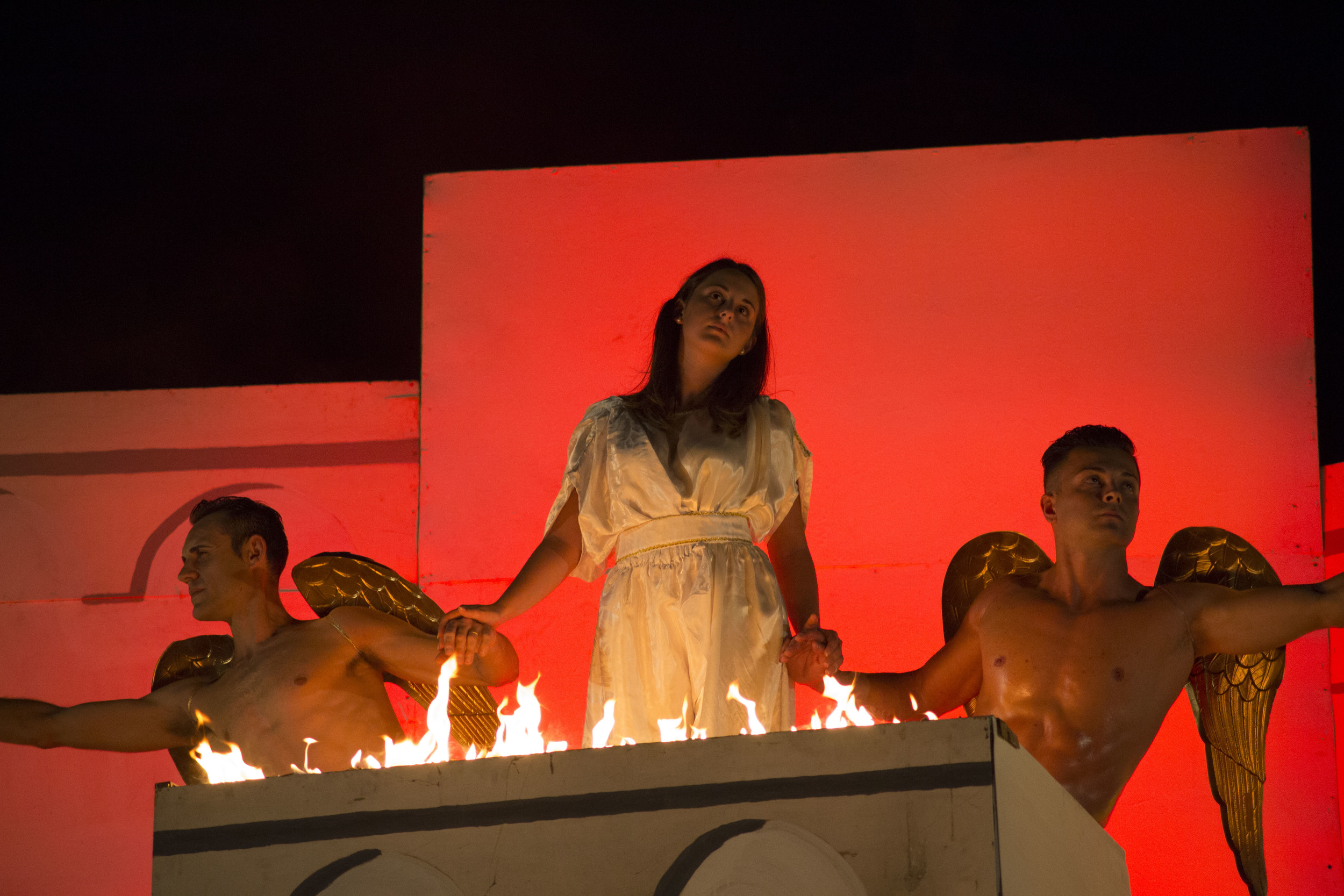
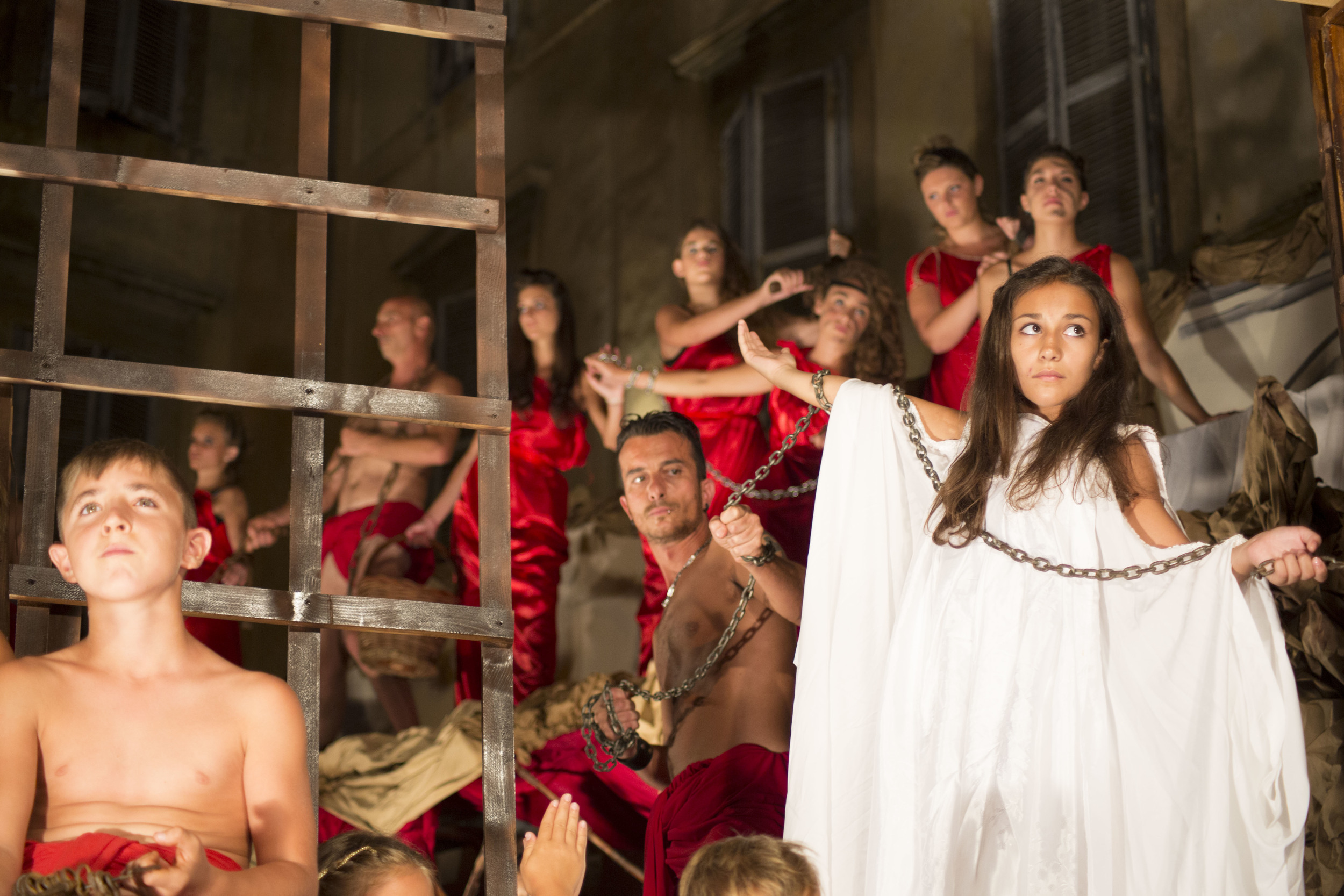
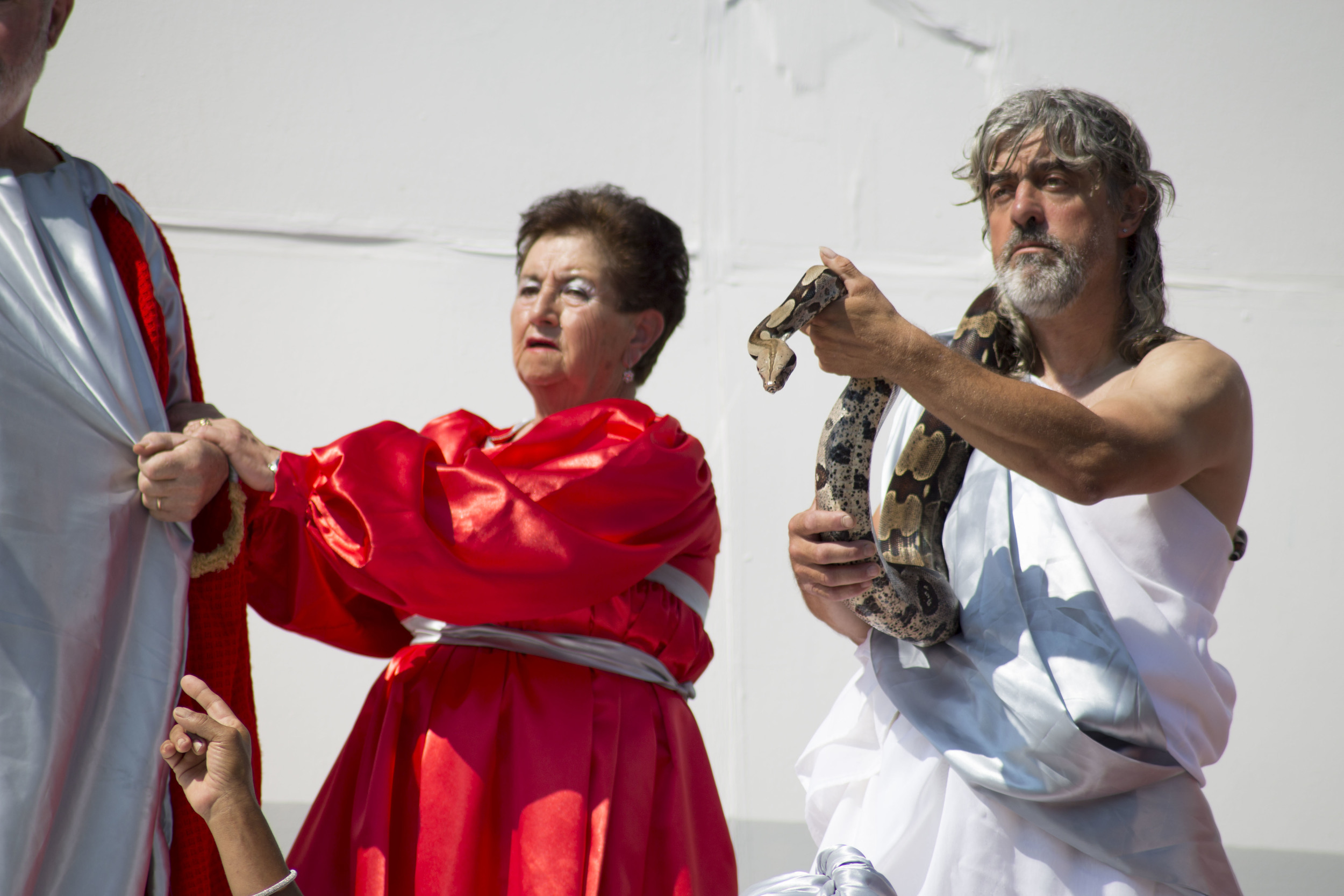
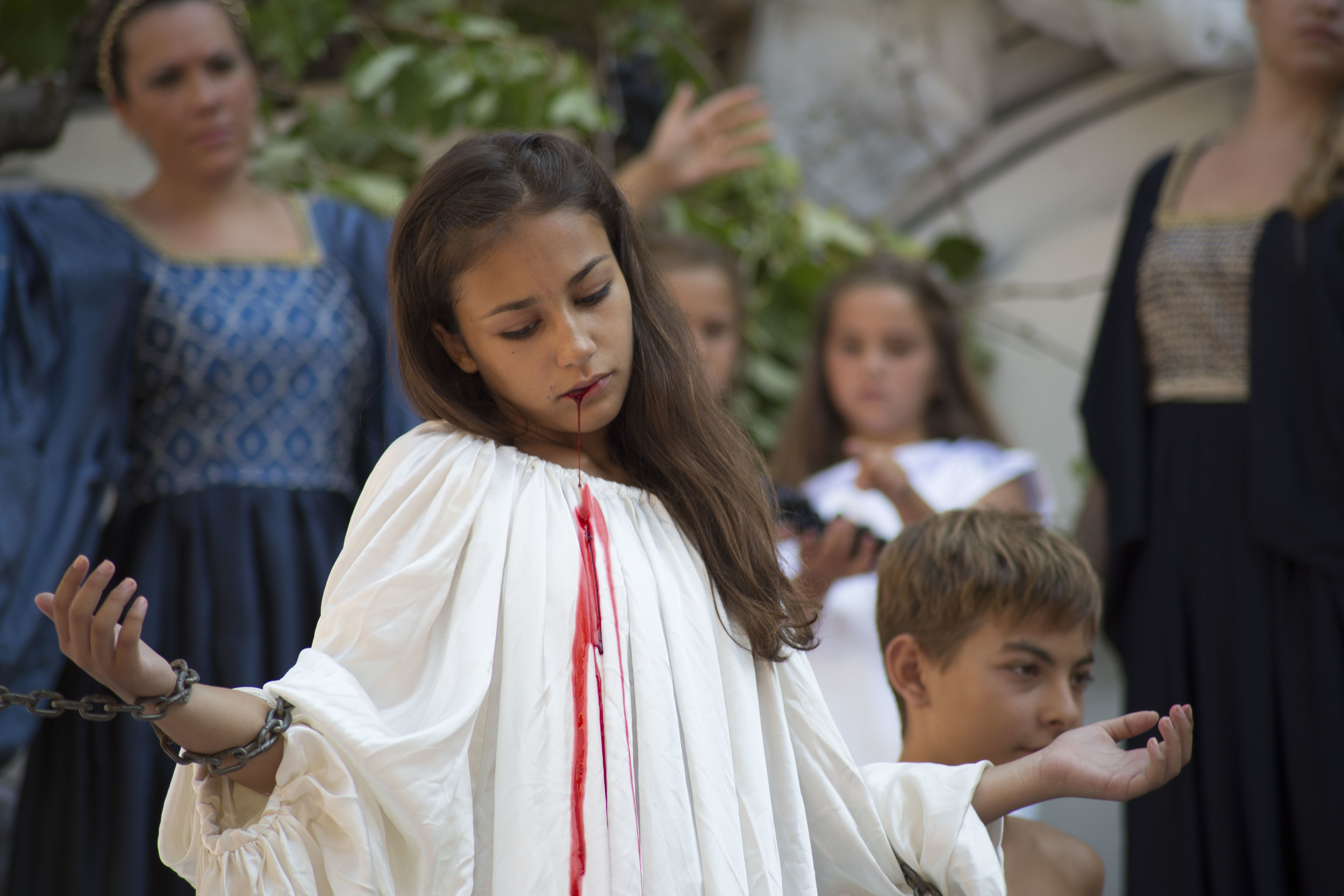
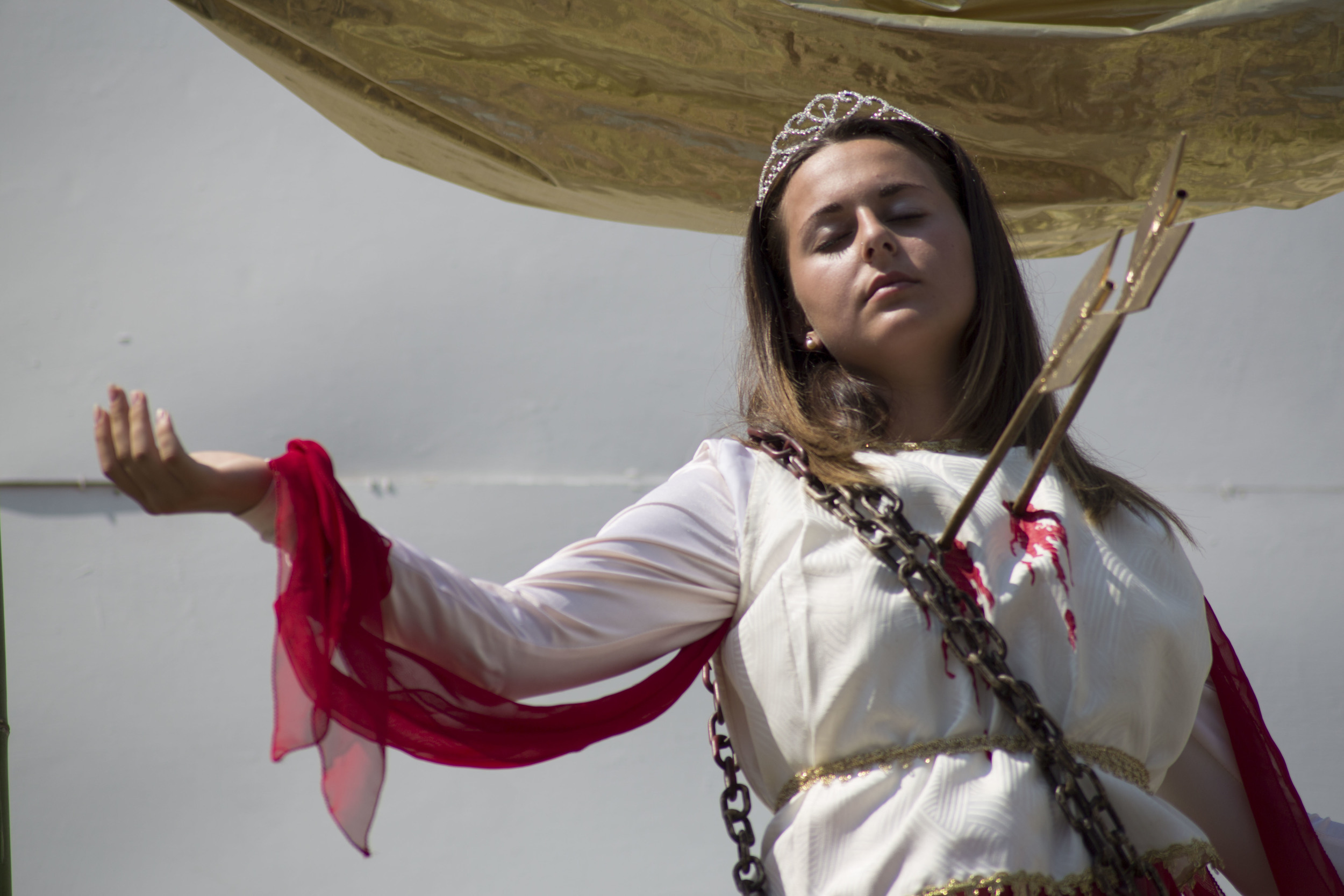

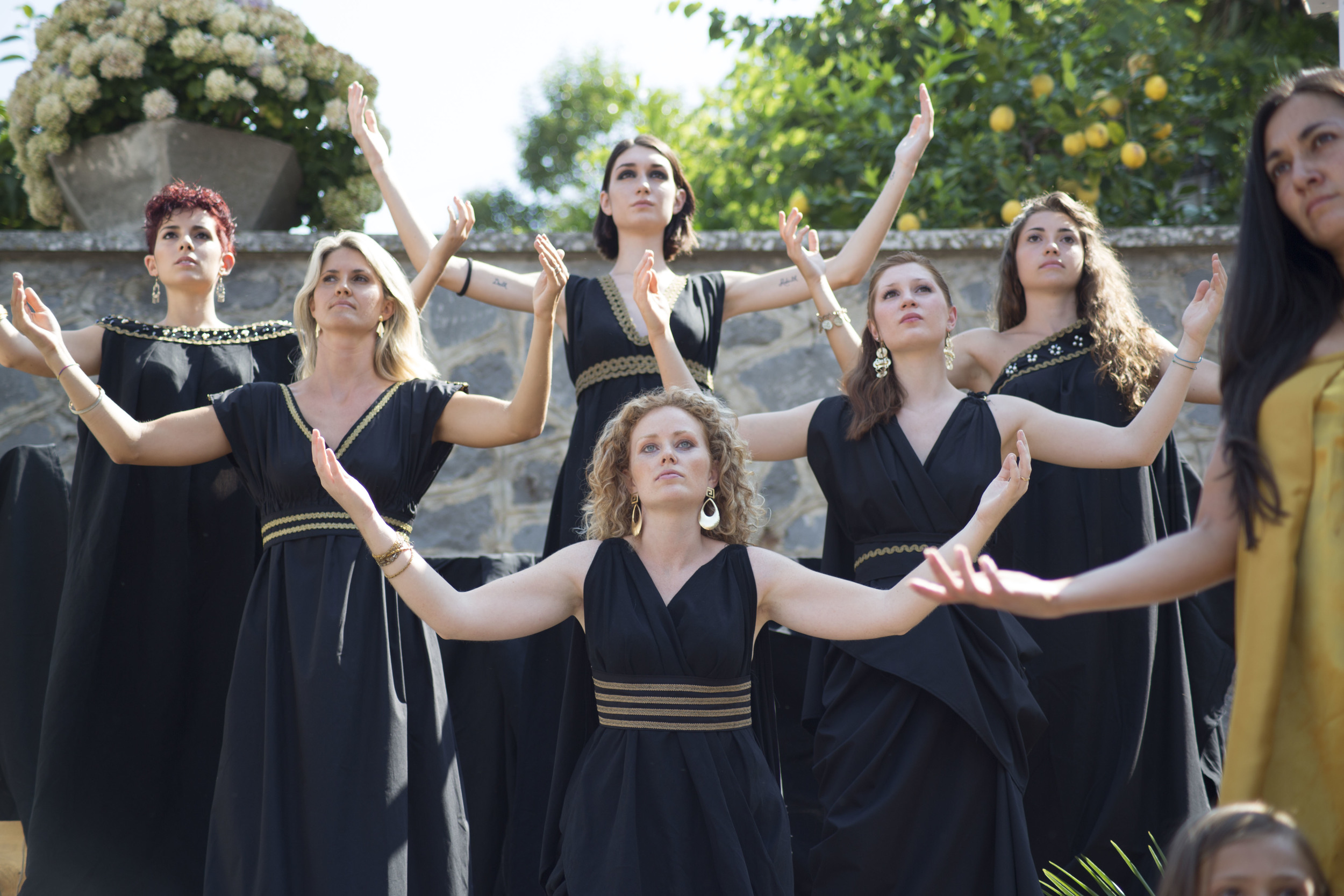
Voodoo Lady: A Culture Clash in New York
During my last trip to New York, I decided to go photograph the beautiful Our Lady of Mt. Carmel Church in East Harlem. This church and the famously elusive Rao’s restaurant are just about all that’s left of the Italian immigrant community in upper Manhattan.
During the major wave of Italian immigration at the turn of the twentieth century, Italians found themselves near the bottom of the immigrant barrel in New York. The Irish had already established themselves as the face of the Catholic Church here and unlike the Irish, the Italians didn’t have the benefit of already speaking the language of their new country. They were outsiders and even the religion they technically shared with the Irish was seen as foreign and less refined. The Irish style of Catholicism had in some ways been reformed by Protestantism so the Italian's love of images, which included their icons, saints’ processions and wax ex voto offerings, seemed tainted by paganism in comparison. So the Italians set up their own community uptown and brought over an icon of Our Lady of Mt. Carmel from Polla, Italy in 1882. Shortly after her arrival, the icon became known for facilitating miracles.
Today there are hardly any Italians in East Harlem. Their days of being the misunderstood immigrant population are over. In fact, the ones who stayed in the neighborhood are now the establishment and suspicious of the more recent immigrants.
Getting in to see the church was difficult. When I called to ask what time it was open, the woman who answered wanted my name and the reason I was interested in the church. She warned me that it was only open for mass and then immediately locked up. For a church with so much history, this was unusual; most parishes stay open for at least a few hours every day to welcome cultural and religious visitors. But when I showed up, I talked to the sacristan a bit and found out why. Recently, Haitian immigrants had been worshiping at the church thanks to the Italian icon. Some were Catholic but others worshiped another woman in blue and white depicted holding a child: Ezili Danto, a Vodou loa.
There were also concerns within the parish that new Latin American parishioners might be coming to practice Santeria, substituting the icon for Oya, ruler of the dead. The sacristan asked if I was Italian-American. I am, so I was welcomed and given permission to photograph as long as I liked. The former underclass now holds a privileged position here.
Inside there is a palpable tension between cultures. The miracle-working Italian icon in the main altar has been replaced with a painting. The real icon is safely tucked away from the diverse crowd and taken out only during her feast, which is still planned exclusively by a dwindling group of Italians. A second icon of Our Lady is in a side chapel, surrounded by vases full of flowers people bring her. “Do NOT write on the statues” signs warn, wary of foreign practices sneaking in. Instead people leave petitions on slips of paper near the statue, some in English, others in French Creole. They’re all looking for help. Everybody wants a leg up, and sometimes that just means having someone newer and more foreign, who’s beneath you. Welcome to New York.
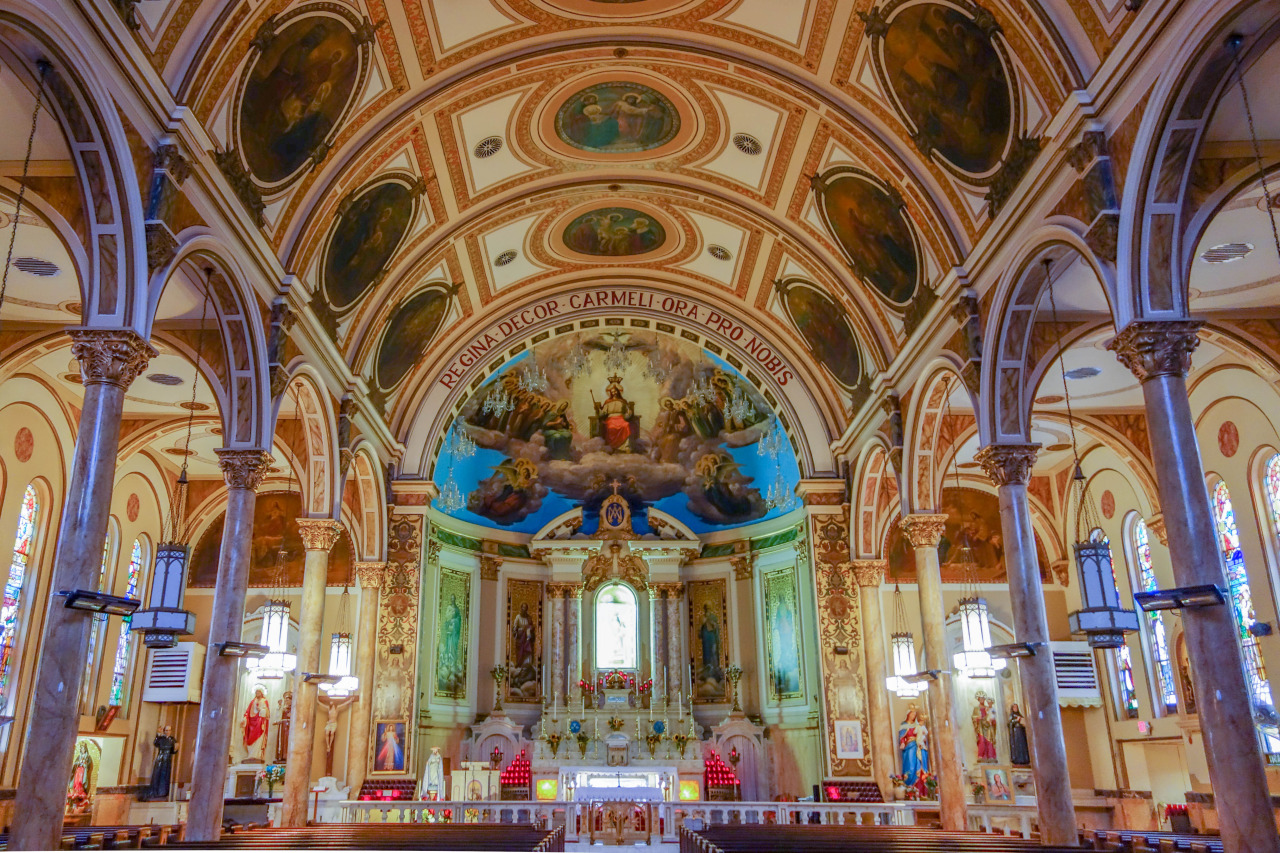

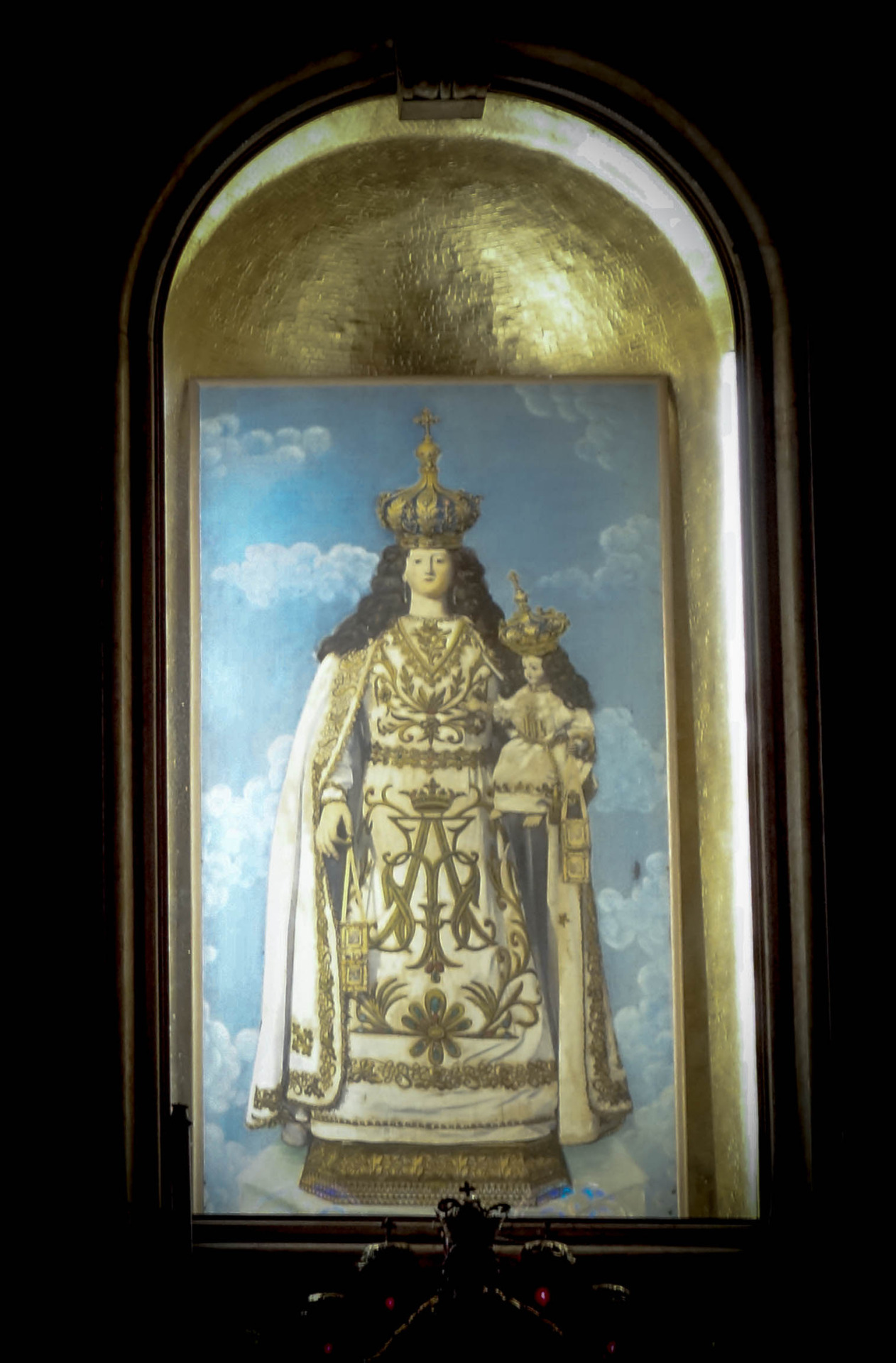
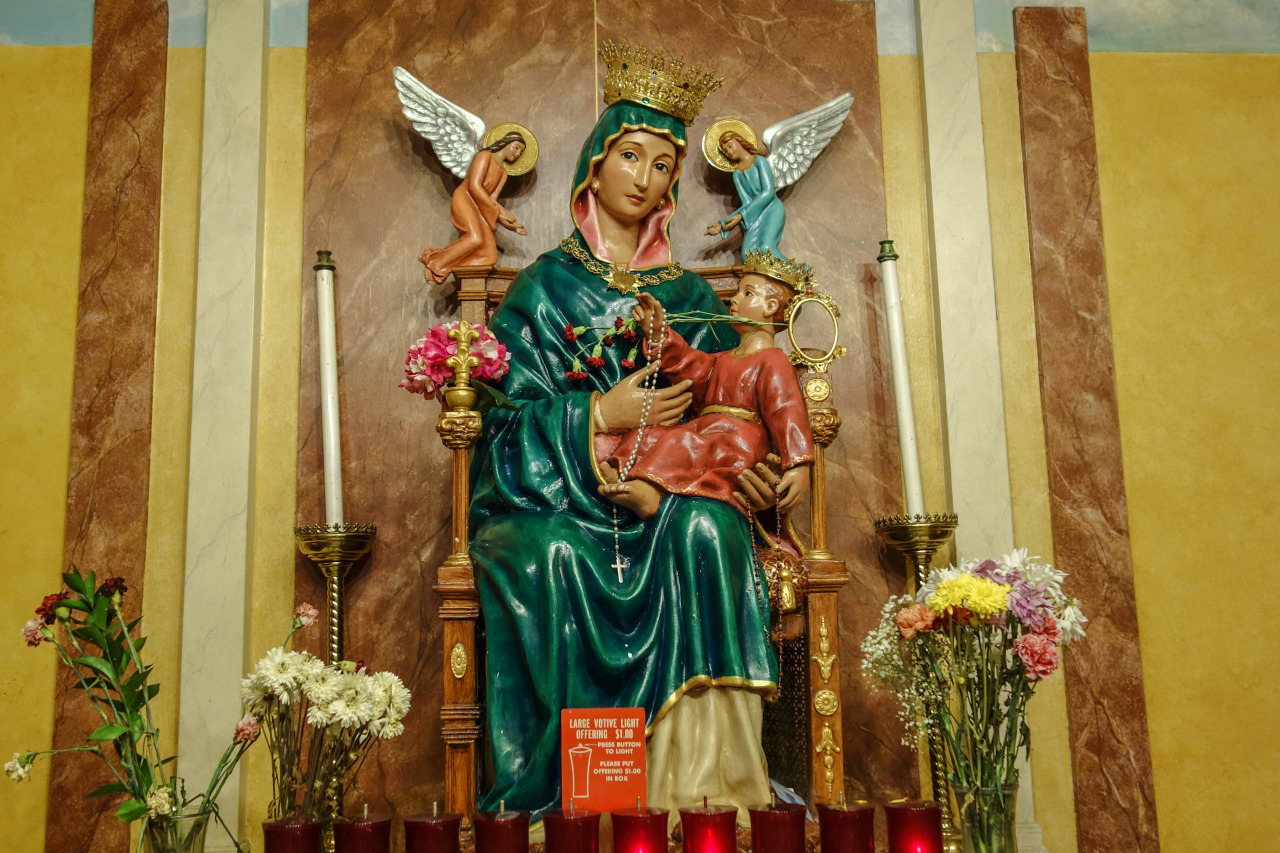
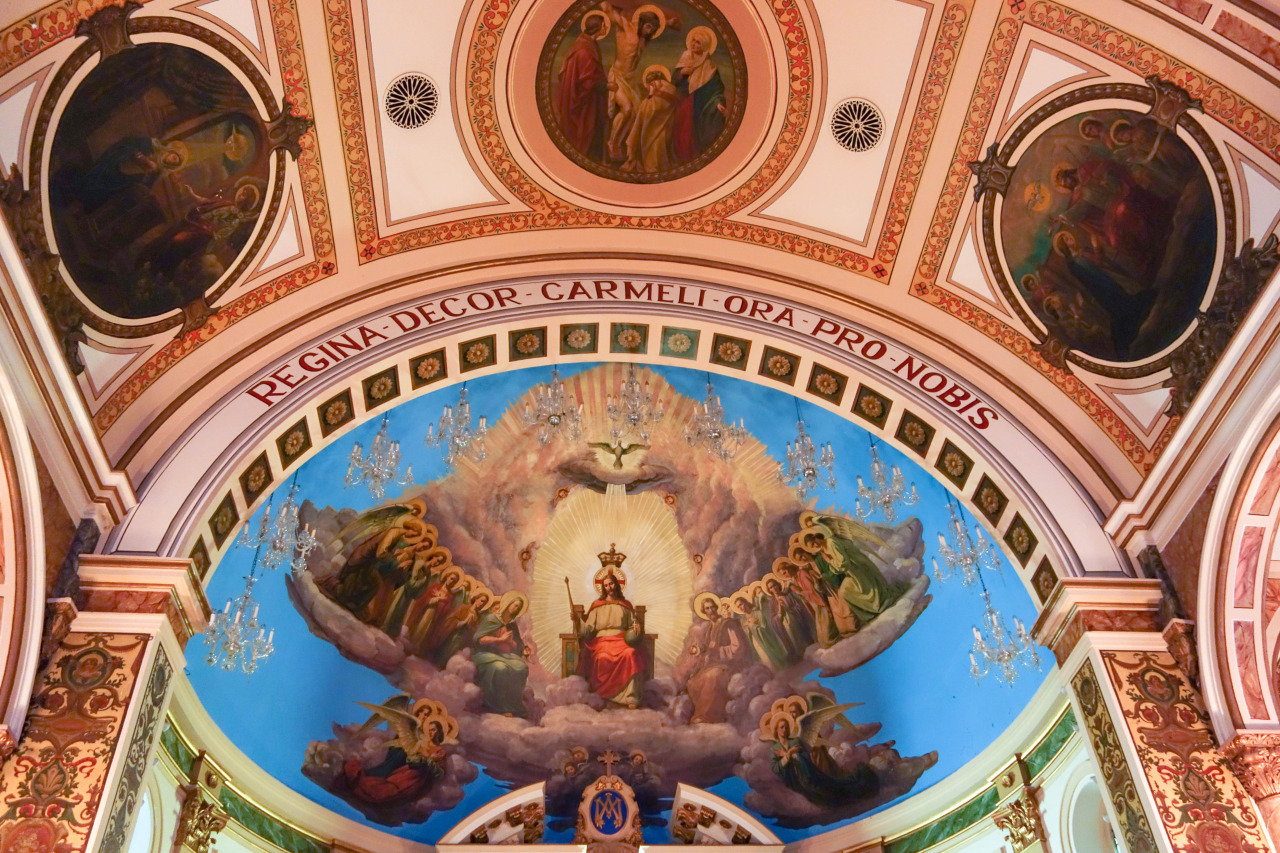
50 Ways to Make Your Martyr
"To single out details from the great dream of Roman Churches, would be the wildest occupation in the world. But St. Stefano Rotondo, a damp, mildewed vault of an old church in the outskirts of Rome, will always struggle uppermost in my mind, by reason of the hideous paintings with which its walls are covered. These represent the martyrdoms of saints and early Christians; and such a panorama of horror and butchery no man could imagine in his sleep, though he were to eat a whole pig raw, for supper. Grey-bearded men being boiled, fried, grilled, crimped, singed, eaten by wild beasts, worried by dogs, buried alive, torn asunder by horses, chopped up small with hatchets: women having their breasts torn with iron pinchers, their tongues cut out, their ears screwed off, their jaws broken…. So insisted on, and laboured at, besides, that every sufferer gives you the same occasion for wonder as poor old Duncan awoke, in Lady Macbeth, when she marveled at his having so much blood in him."
— Charles Dickens, Pictures from Italy (1846) on the Chiesa di Santo Stefano Rotondo
The biggest draw at Santo Stefano Rotondo is undoubtably the church's infamous martyr murals. The very same ones that horrified Charles Dickens.
Each mural is accompanied by a Latin subtitle. It lists the Emperor who ordered the torture (hi Diocletian), a short description of the torture, and sometimes the name of the martyr who died that way. There are helpful letters in each fresco so you can easily match the figures to the description. If you sit there and translate all the legible subtitles, it starts to read a little bit like the lyrics to People Who Died by The Jim Carroll Band.
The murals themselves are overwhelming when taken as a group. They cover every single wall and are about 6’ wide by 8’ tall. The figures seem to wander from frame to frame, all part of the same nightmarish landscape. A method of torture in the background of one fresco becomes the foreground elsewhere as if it’s just another scene in a horror movie’s tracking shot. Some scenes are chaotic bloodbaths. Others are calm acts of carefully allotted violence. It’s hard to say which is more disturbing.
The colors have faded over the years and some pieces of plaster have chipped away but a massive restoration project is underway. Last time I was there they were just setting up scaffolding. This time there was a team of preservationists at work with several frescos finished. I can only imagine the impact the church will have when every image is clear, complete with fresh strokes of vibrant red blood.
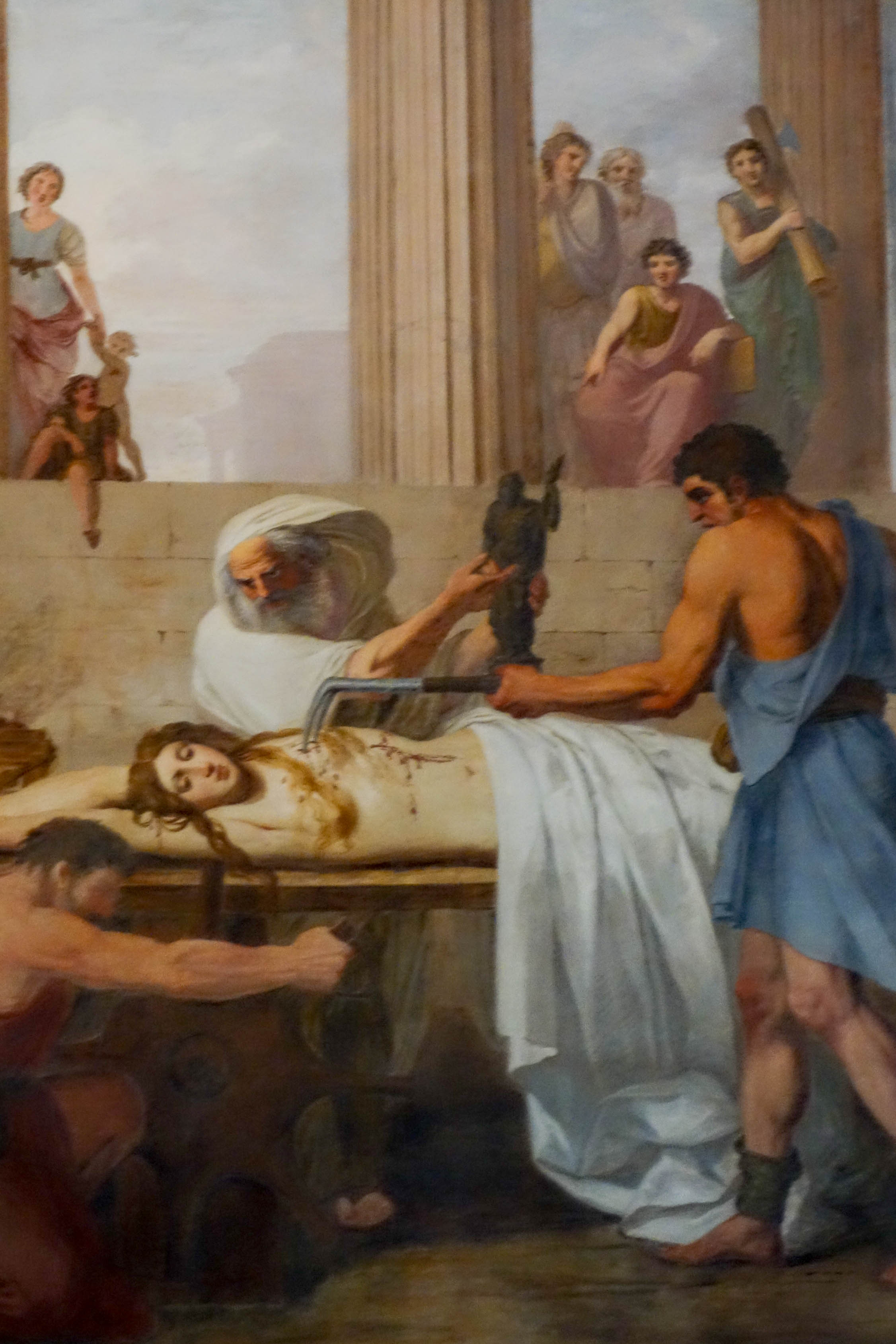
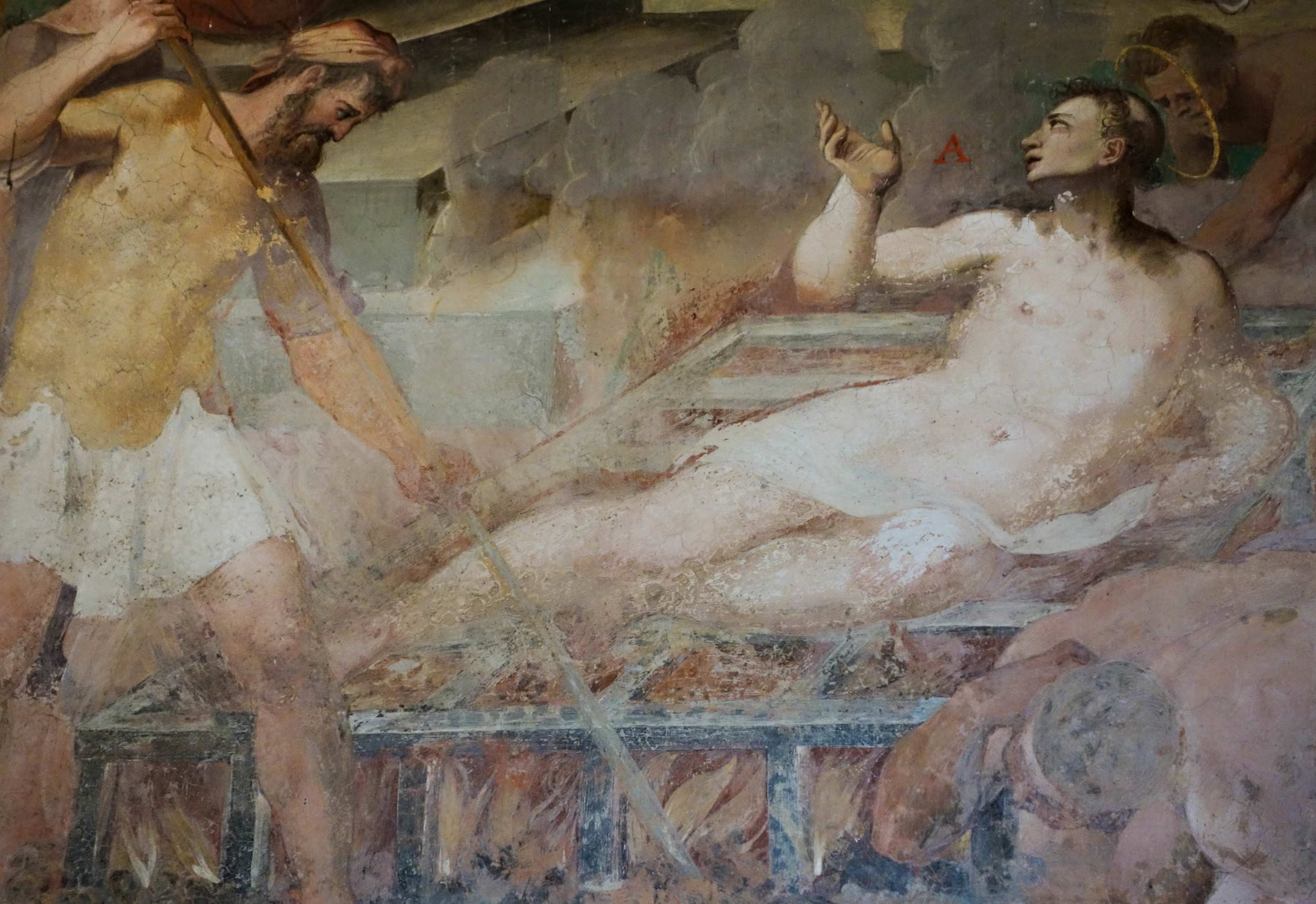
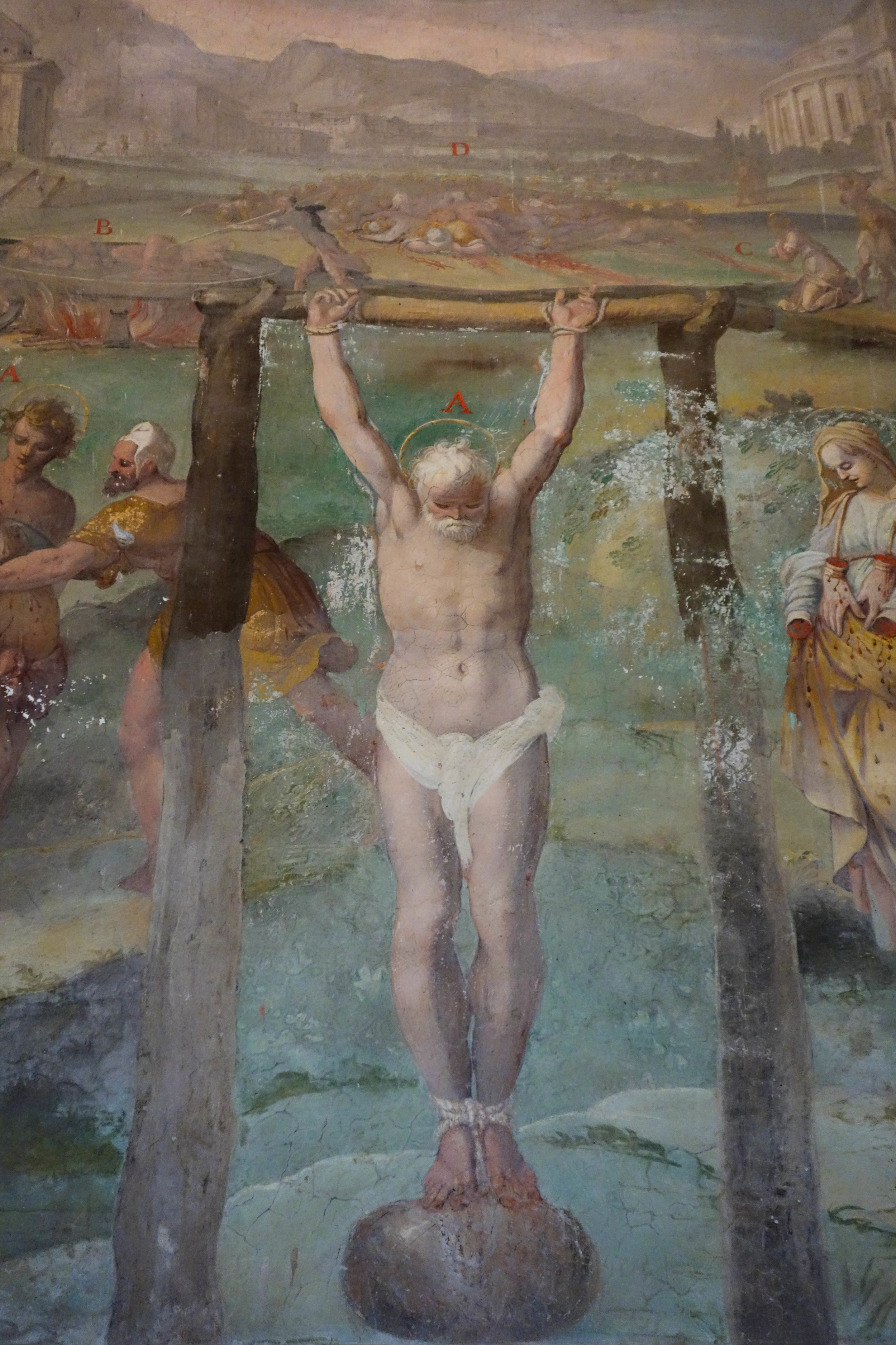
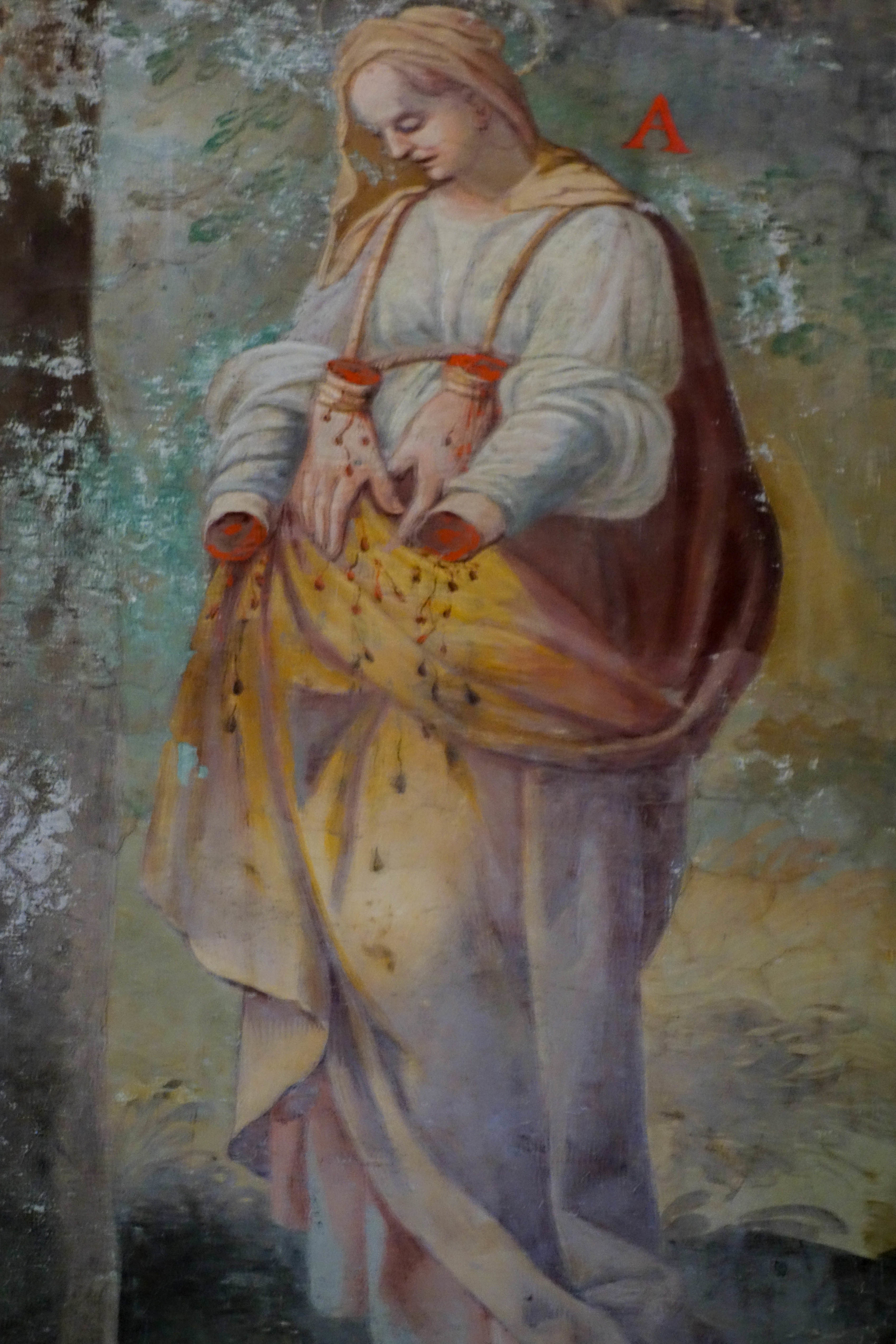
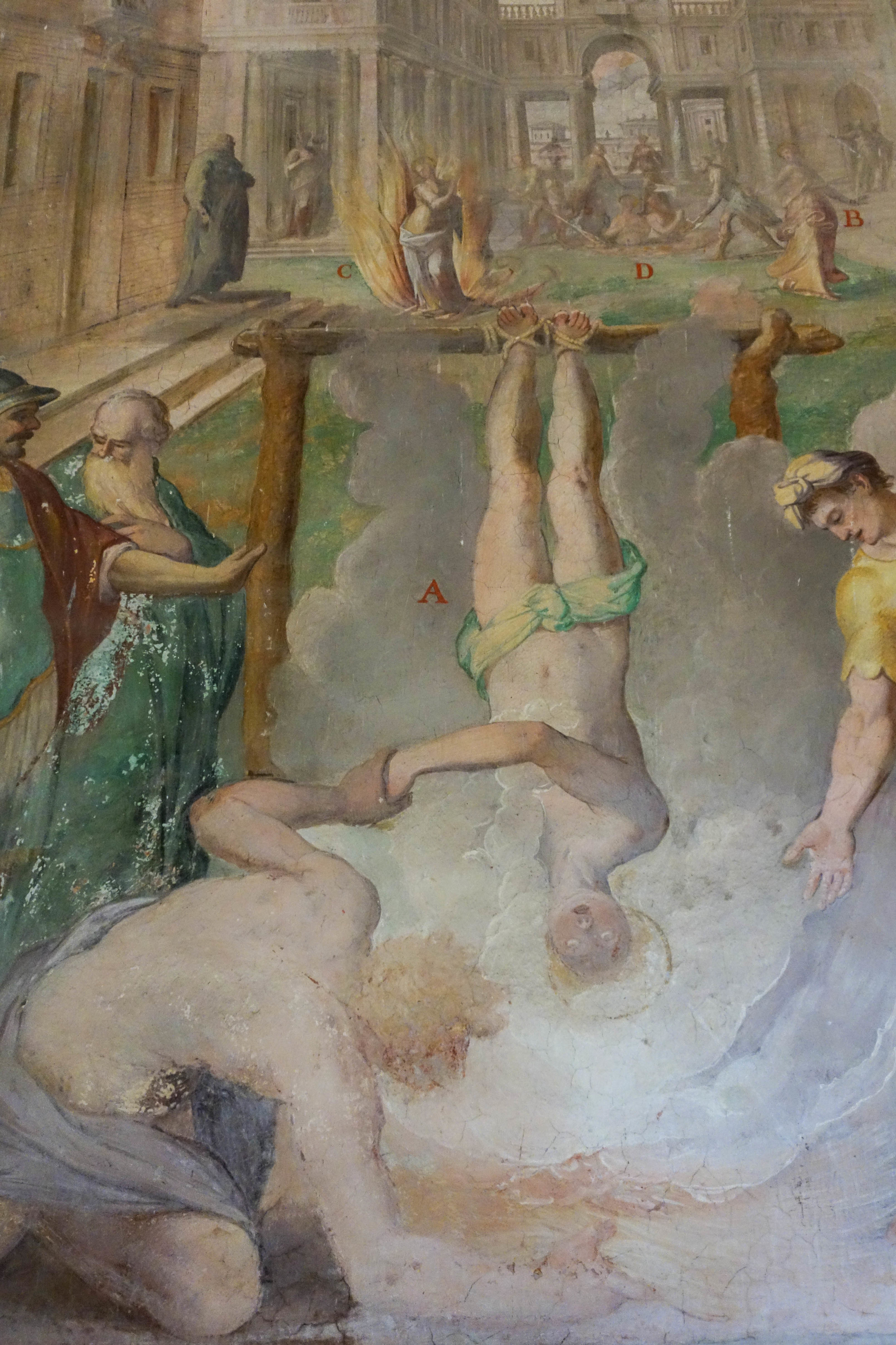
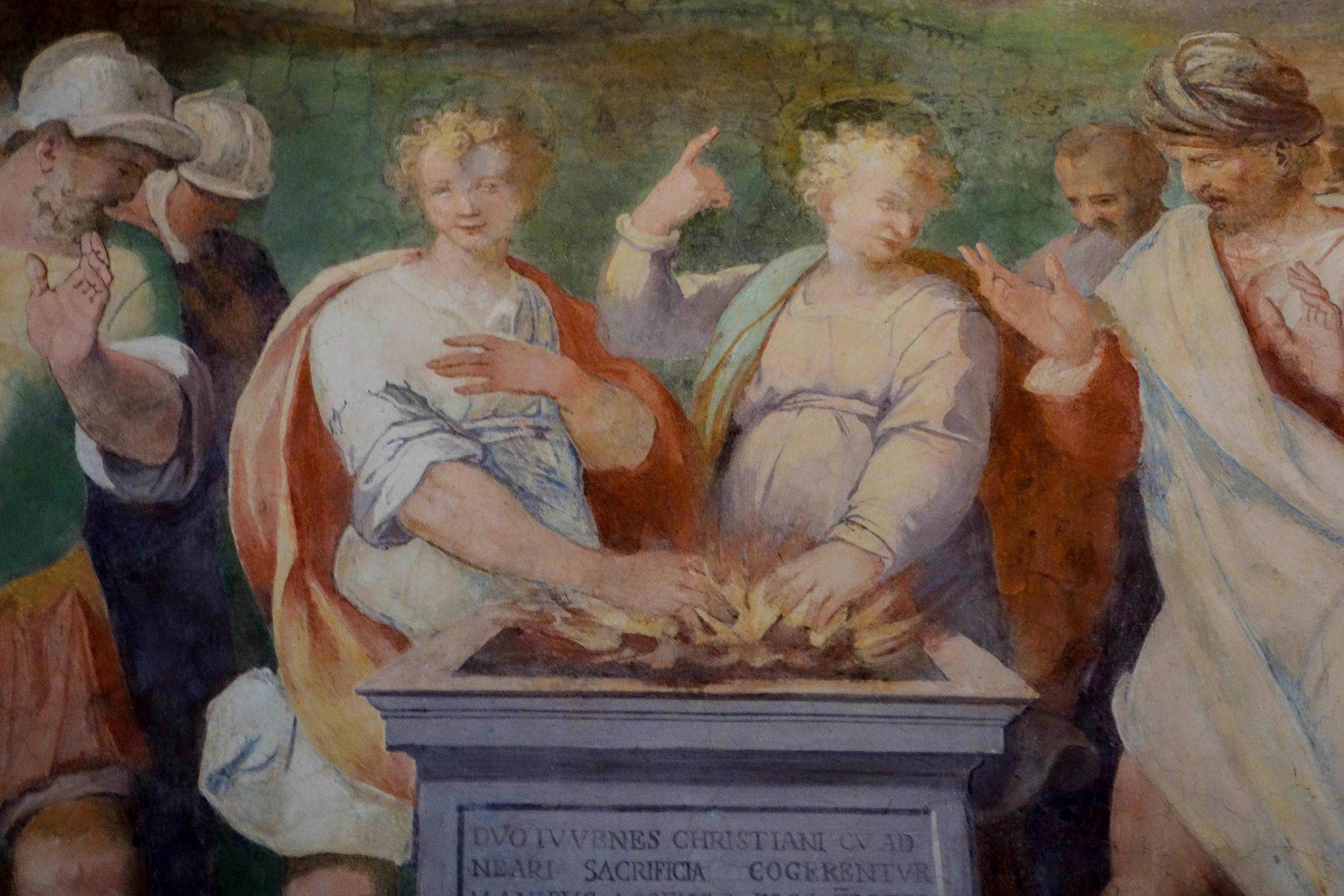

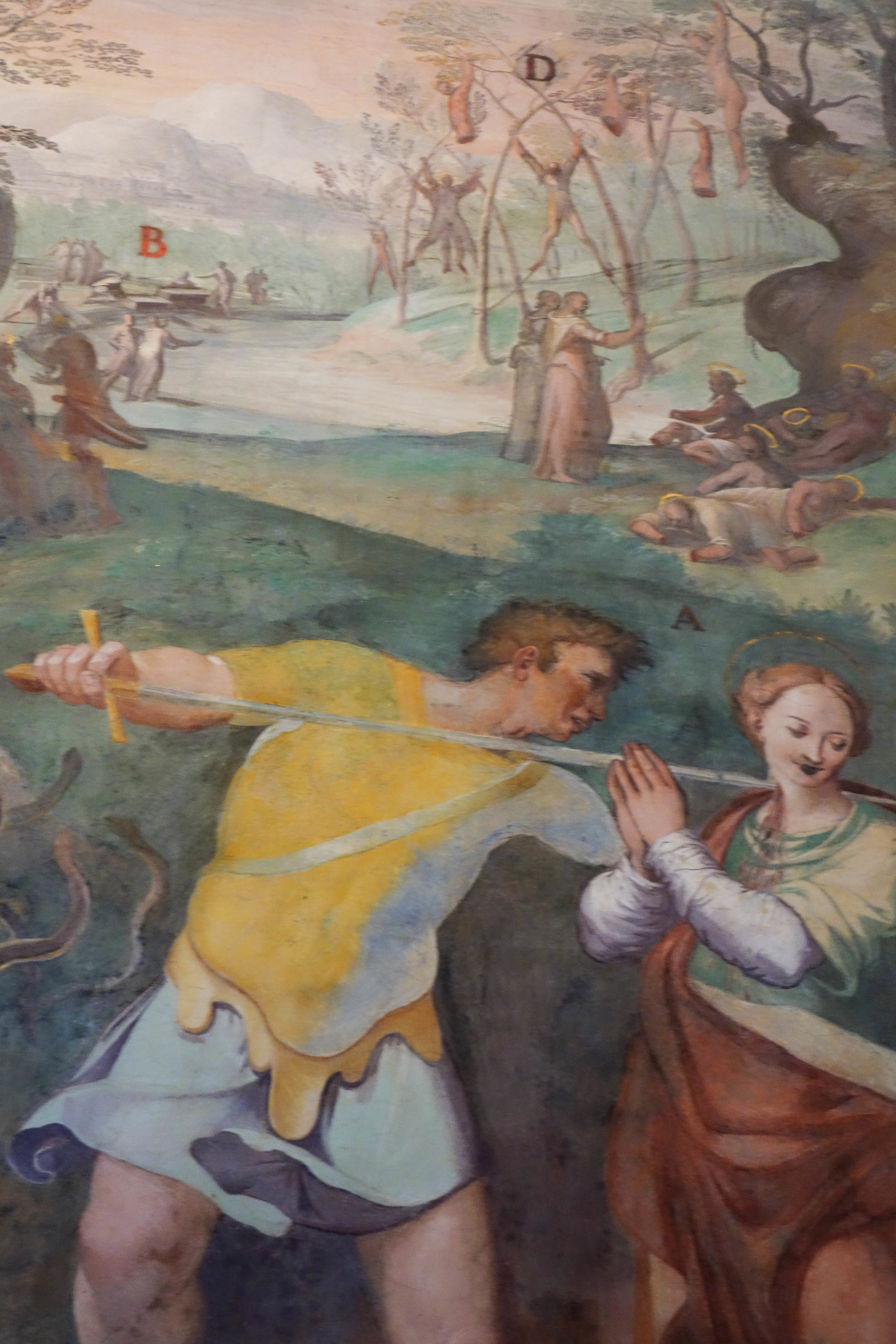
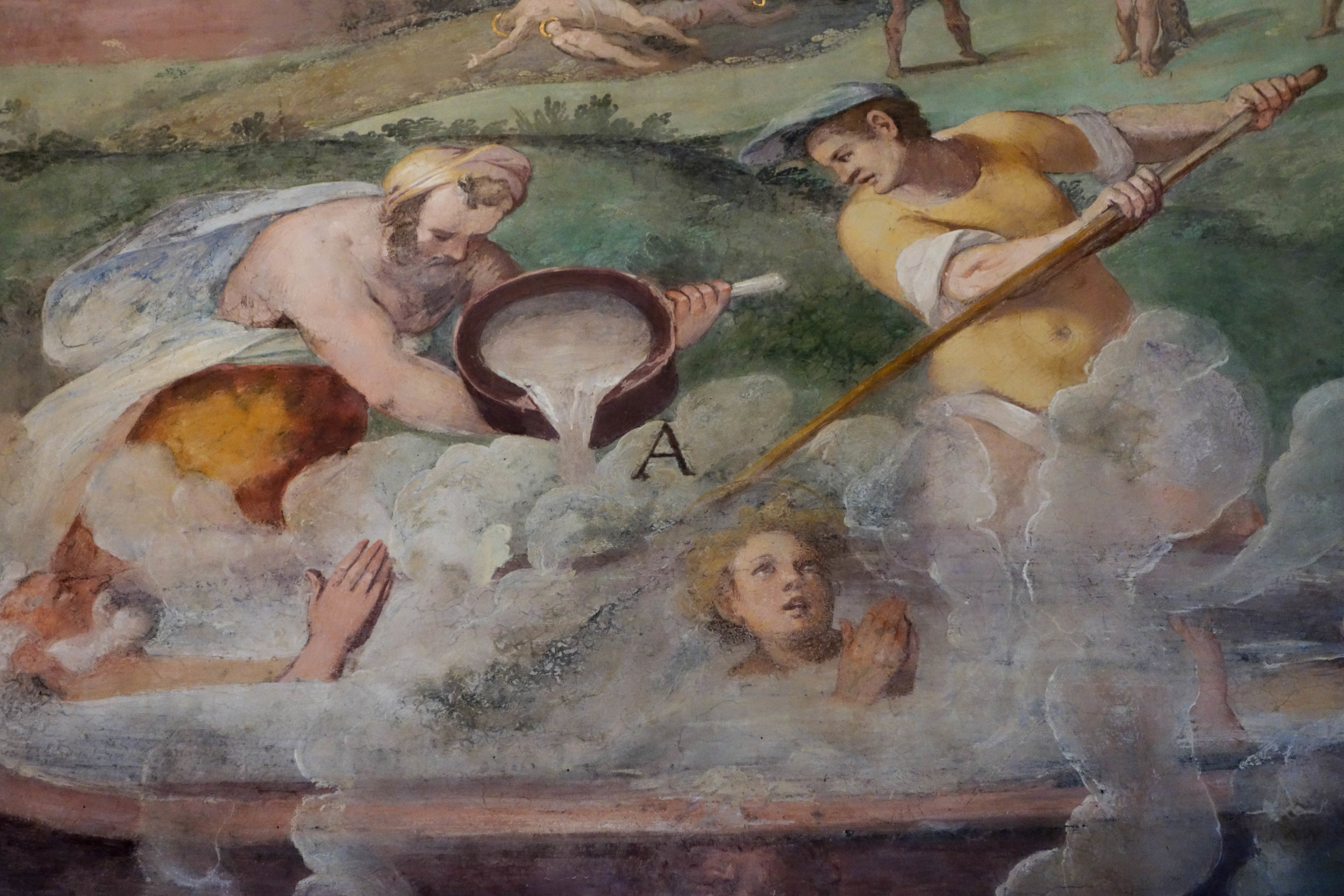
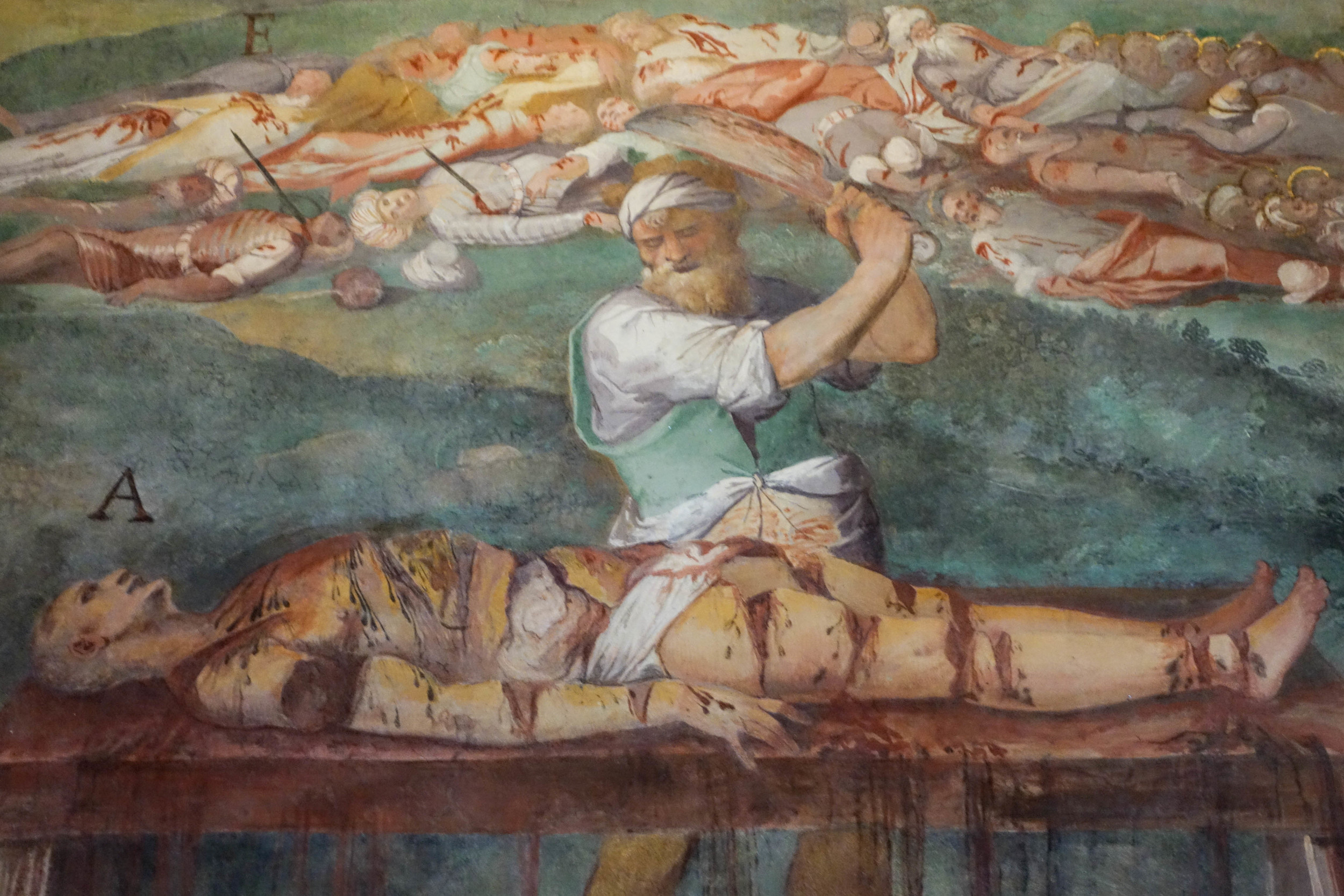
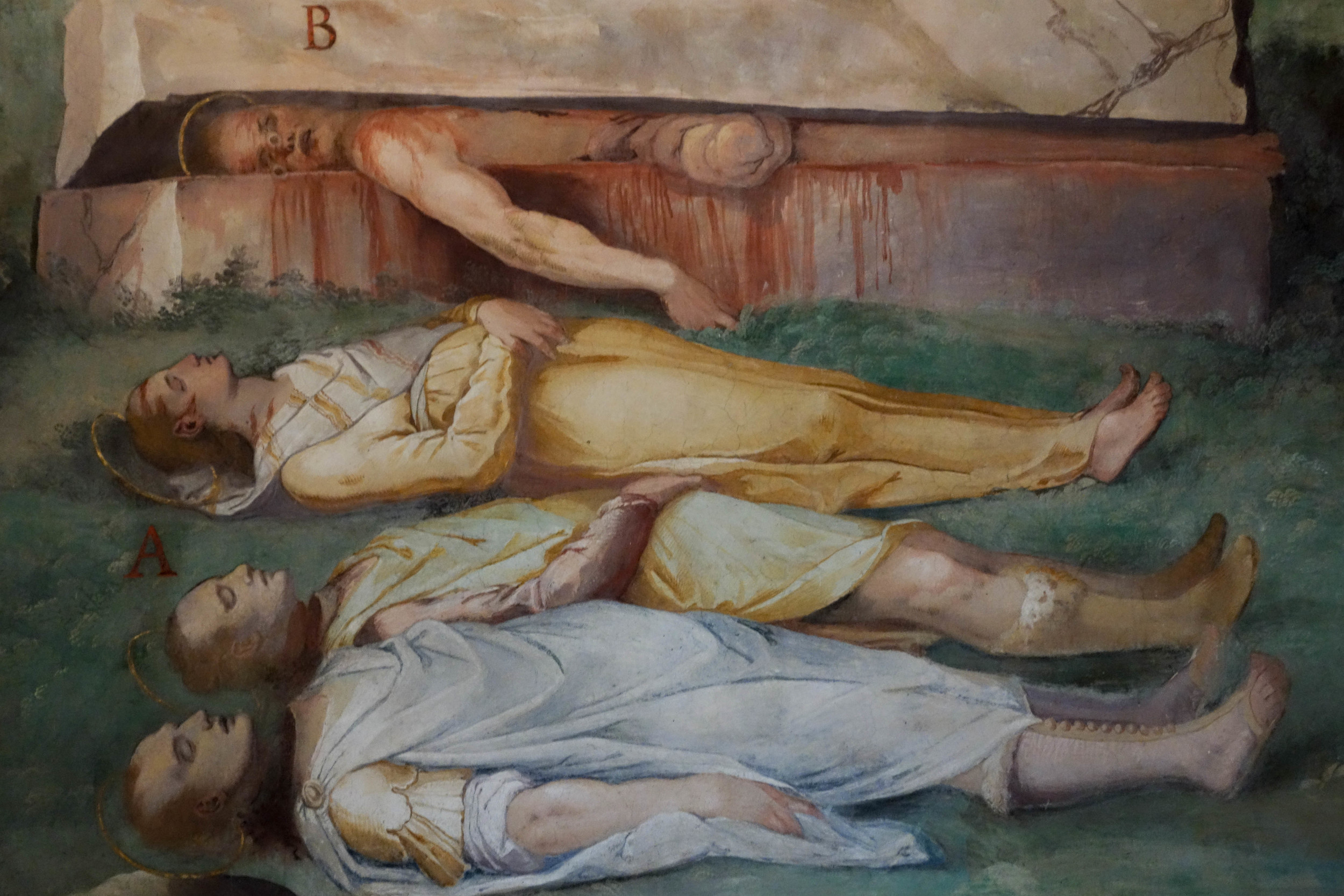
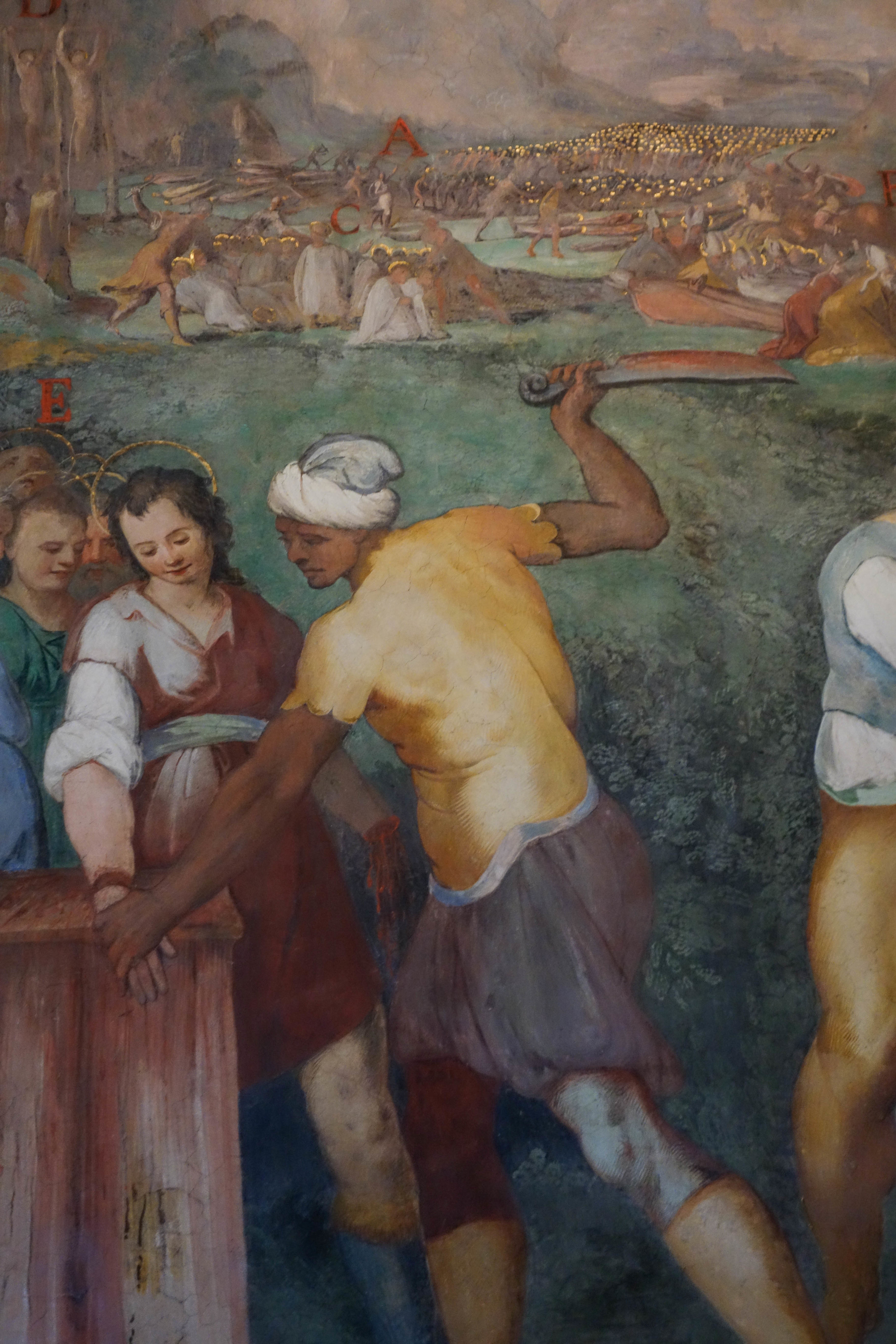
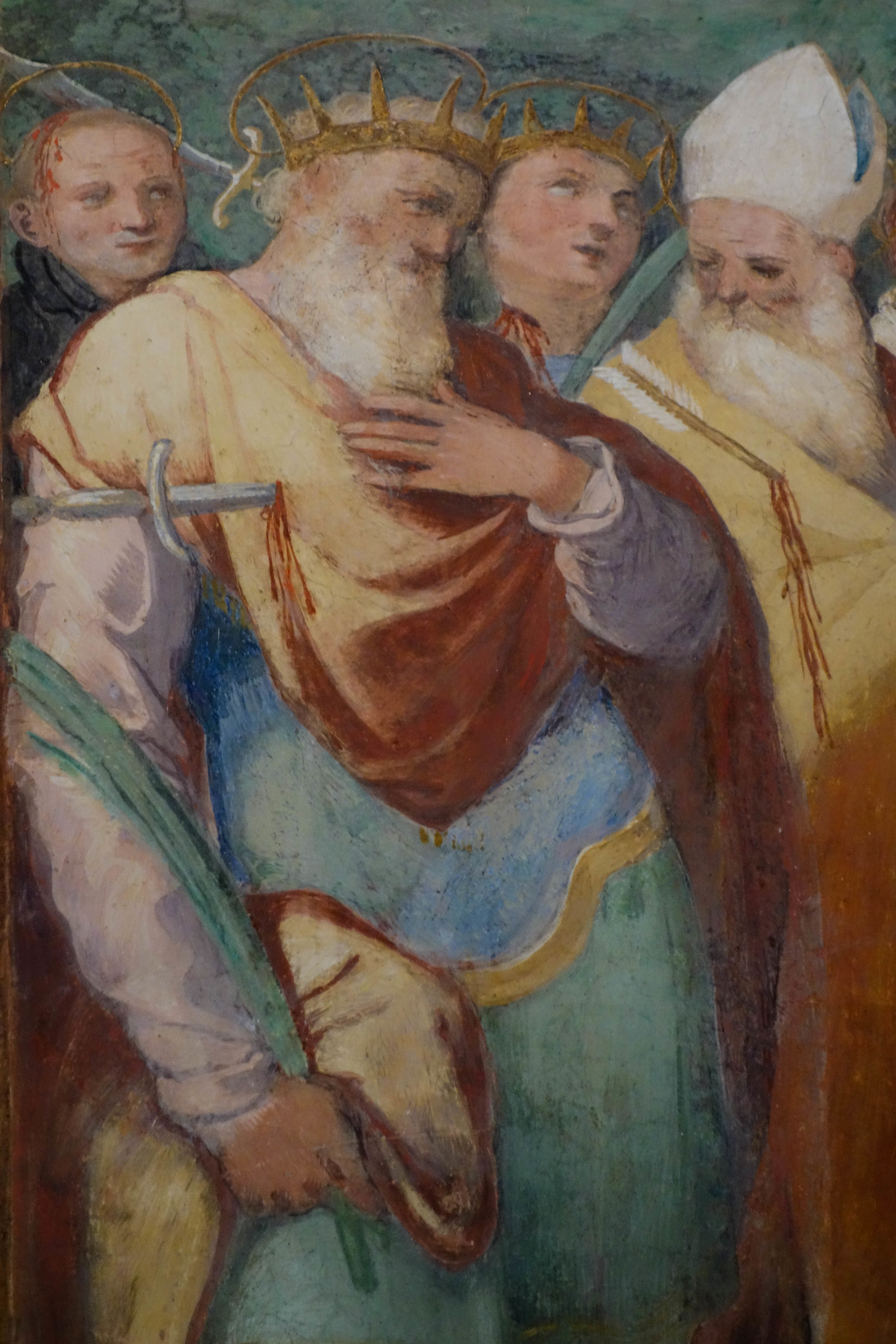
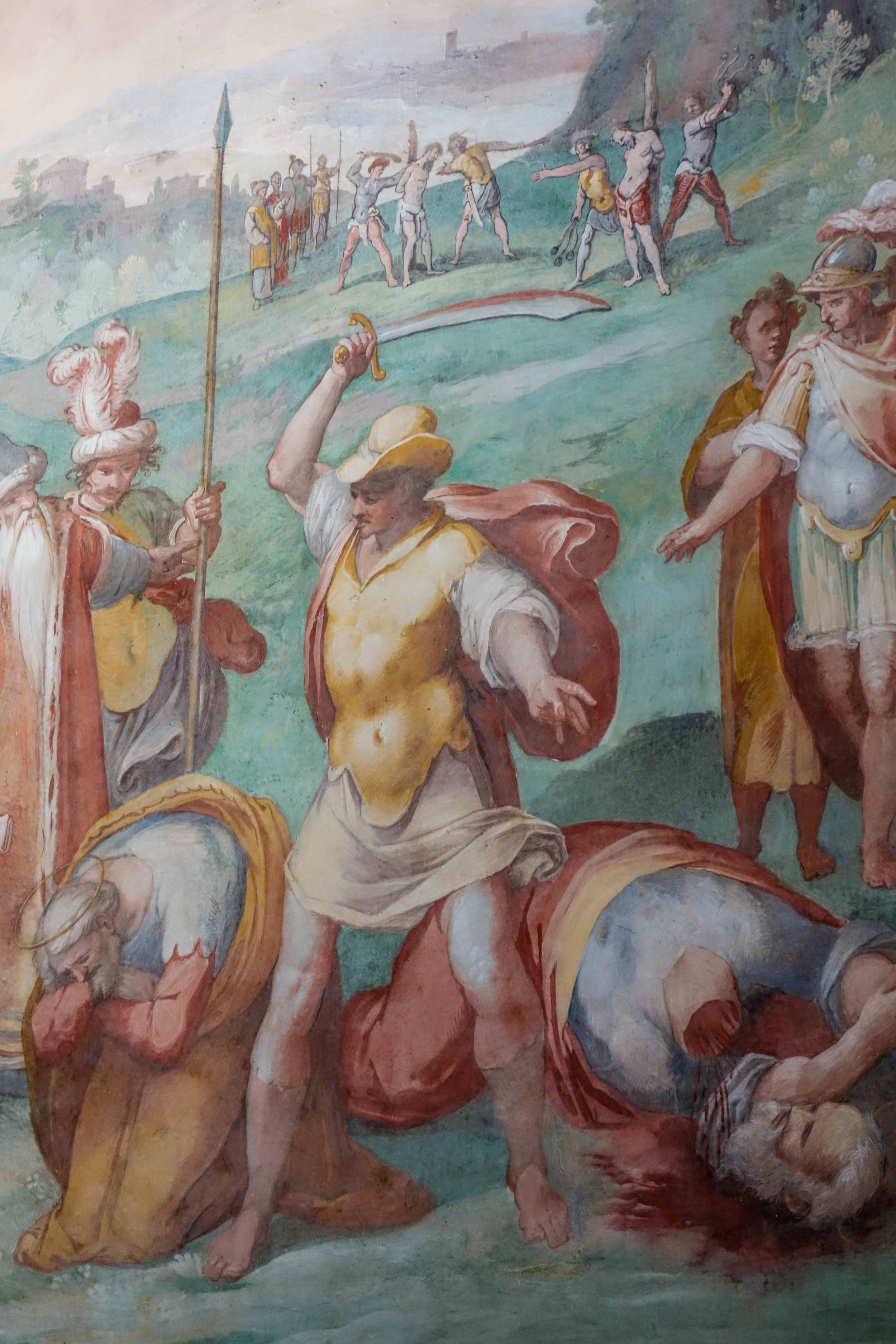
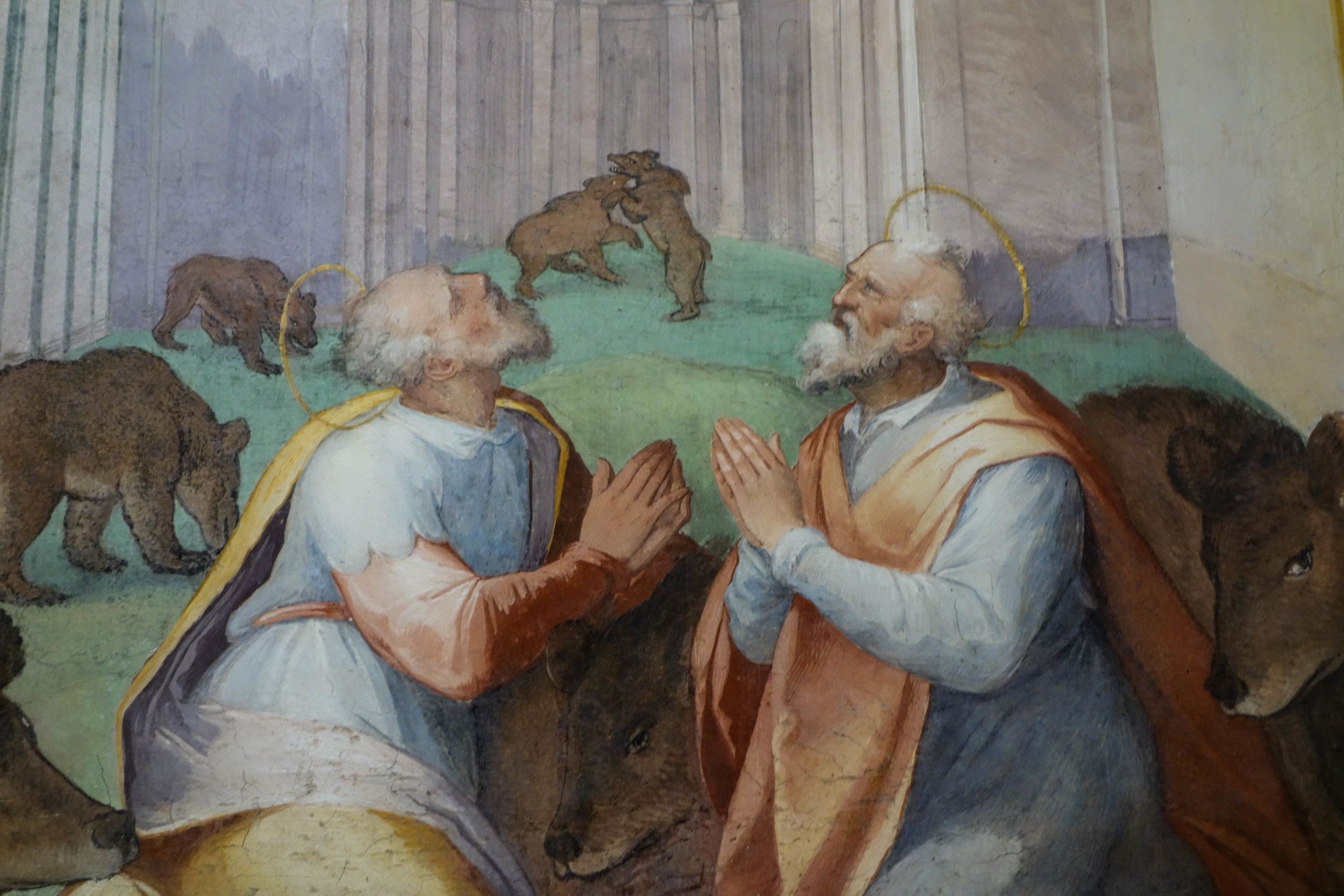
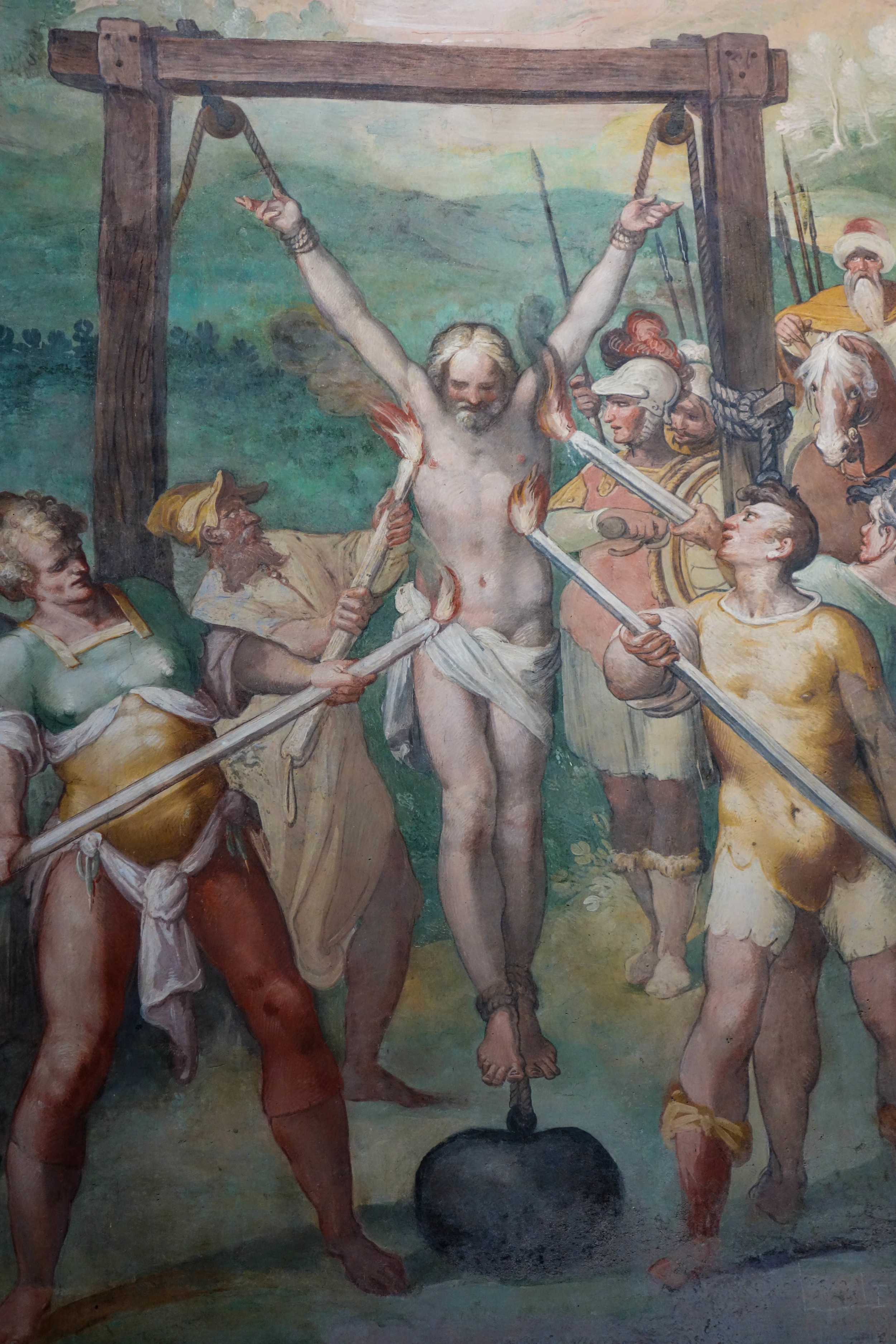
Hang on St. Christopher
St. Christopher’s Chapel
Barcelona, Spain
I recently had one of those travel days. The kind where, thanks to storms and broken planes, it somehow took me 28 hours to get from Los Angles to Richmond. I was giving a lecture on the Italian Cult of the Dead at Virginia Commonwealth University and, little did I know, I could’ve held the lecture in Italy and still enjoyed a shorter travel time.
In the midst of it all, I remembered this small shrine to St. Christopher in Barcelona. It was one of those curious little places that I photographed and meant to write about but somehow hadn’t gotten around to it. So now, with nothing but time in the airport again, I’m getting around to it.
St. Christopher is the patron saint of travelers and this tiny chapel is near the old city walls in the Gothic District in Barcelona, by the gate that used to lead to the old port. (And it is tiny. Those doors are maybe 5 feet tall and the room, which was gated off, could only hold a few people comfortably.) People have been (literally) ducking into this chapel to pray for safe travels since 1503 and probably even before that, when this little jewel box was just a road-side shrine.
There are lots of colorful legends about St. Christopher. People say he was incredibly ugly, or even dog-faced, or that he might have been a giant. Here, he’s the big galoot in the center of the center picture. Other legends say he offered to carry a child across a river and the child became heavier and heavier. He began to fear he might drown, until he saw that the child was Christ and the heaviness was from carrying the world on his shoulders. Interestingly, Christopher means “Christ-bearer”, so like Veronica (Vera-icon) his name, which is so common today, was originally indicative of his legend.
In Barcelona, there’s a local twist on this legend that says St. Christopher arrived by boat one day, carrying Christ as a child on his back. He walked up the Rambla and disappeared, but everyone that saw him had good luck all year. This event, which was said to occur on July 10th, is still celebrated in Barcelona, with a blessing of vehicles and a special fruit pastry.
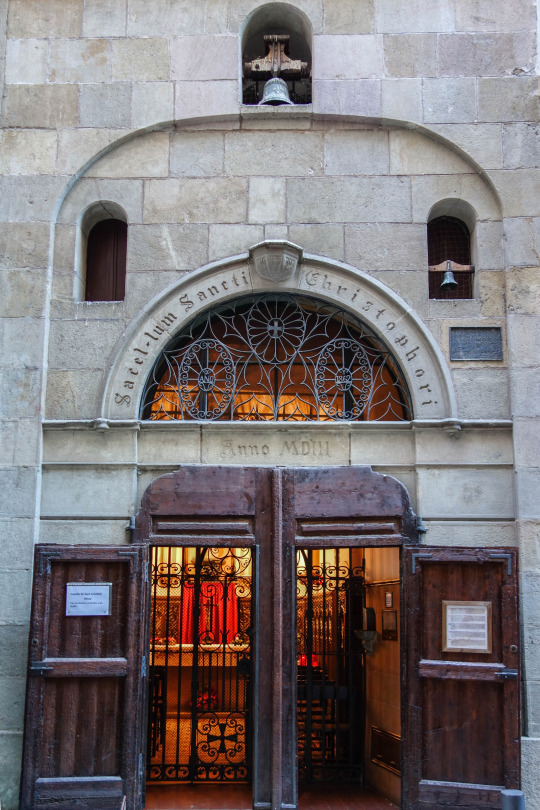
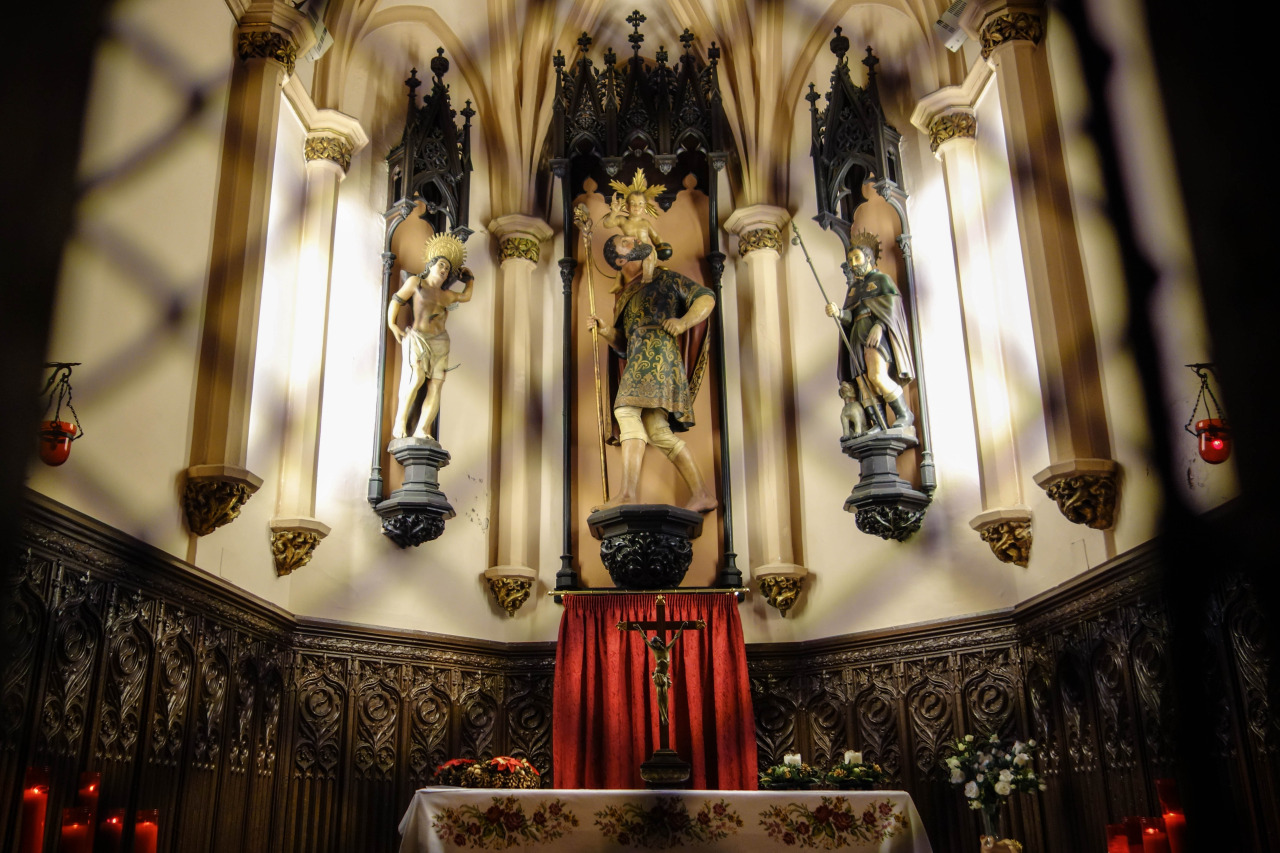
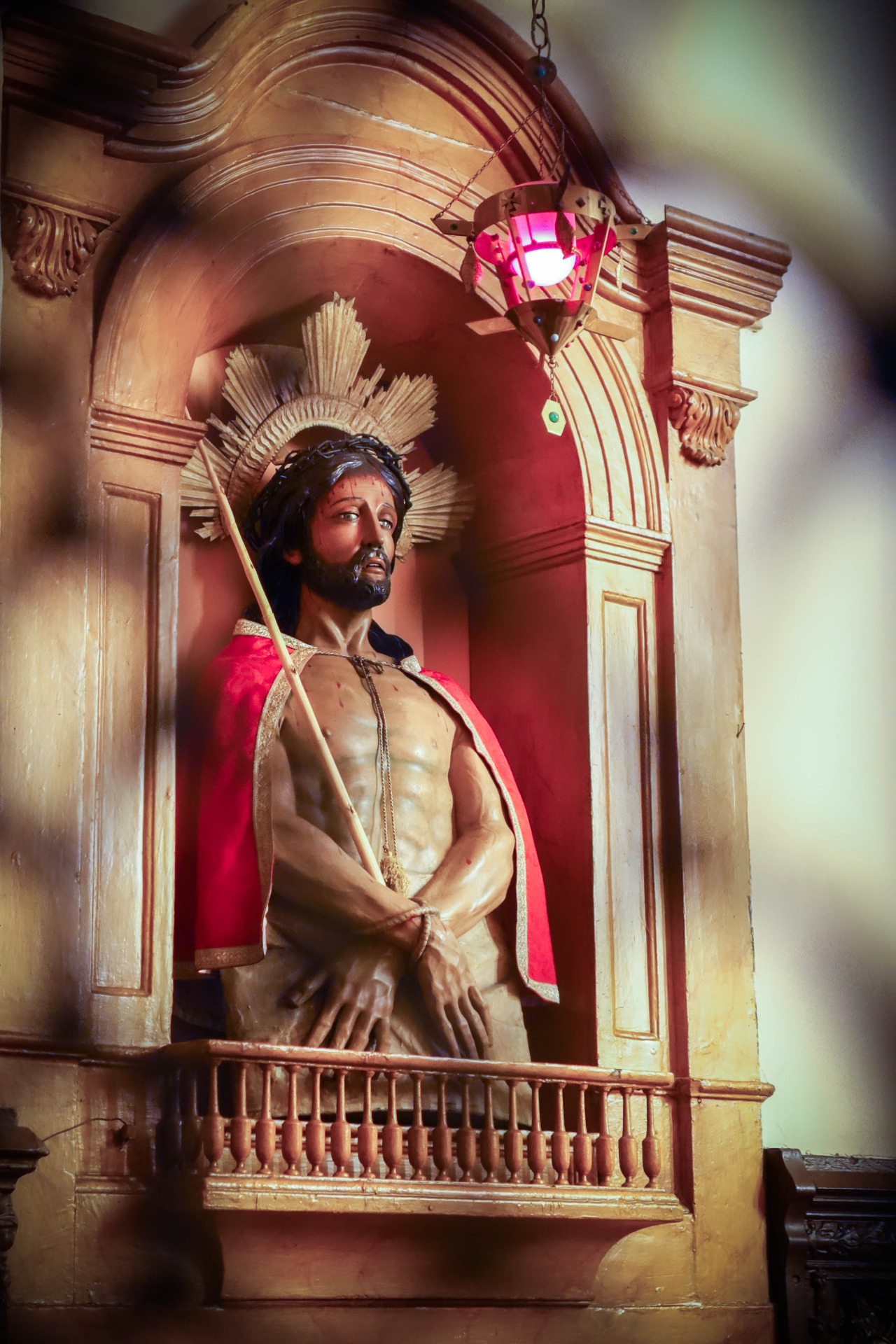
Beatrice Cenci: Martyr, Muse, Murderer
Originally published on Atlas Obscura.
Beatrice Cenci haunts Rome. Though plenty of tour guides are eager to rehash stories of her headless body wandering the Sant’Angelo Bridge at night, she hardly needs that kind of carnival barking to get inside your head. Instead, you might see her name once, noting her unusual story. Then you notice her name again and again in every corner of the city. As her story unfolds, so does she, at every turn embodying a paradoxical feminine trope. She’s a damsel in distress, a brave heroine, a virgin sacrifice, and even a femme fatale all at once.
Beatrice was born in 1577. She lived in a large palazzo at the edge of the Jewish ghetto just off Via Arenula. Her father Francesco was a wealthy heir and full-time scoundrel who mostly used his huge fortune to buy his way out of prison. Everyone in Rome knew his reputation. He starved his servants until he was ordered by the papal courts to feed them. He took a mistress while married to his second wife, Lucrezia, then beat her until she performed sexual acts against her will (leading to a conviction for “unnatural vice”). Most appallingly, he confessed to molesting young boys in three separate court cases. But while others were burnt alive for less, he always escaped with more fines and a few months in jail.
While Francesco was paying off the justice system (such as it was), his children were doing their best to get away from him since he always seemed to have enough money for fines, but never enough to feed and clothe them. His son Giacomo disowned him and left. Cristoforo and Rocco, heirs to their father’s temper, were killed in duels. Antonina, Beatrice’s older sister, successfully petitioned the pope and asked him for permission to either marry without Francesco’s consent or join a convent to escape him. The pope consented to her marriage and stuck her father with a hefty dowry.
Francesco was (as usual) enraged. His fines had already begun to outstrip his inheritance and now he had Antonina’s dowry to deal with. His creditors’ harassment (as well as his newly acquired case of scabies) put him in a foul mood. There was no way he could let Beatrice pull the same trick as Antonina, so he moved his wife, Beatrice, and his youngest son Bernardo to one of his remote country estates in the mountains.
There he imprisoned Beatrice and her stepmother Lucrezia in a sealed-up suite. Far removed from their nosey neighbors in Rome, Francesco’s depravity intensified. He insisted Beatrice and Lucrezia both sleep in the same bed with him. He began forcing Beatrice to scrape the scabies on his body from head to toe. Beatrice wrote desperate letters to her bother Giacomo, but Francesco only whipped her when he found them. Beatrice began plotting his death.
The estate had two servants who served as her hitmen, one whom Beatrice bribed and the other whom she seduced. On the night of the murder she gave Francesco opiate-laced wine then instructed the two servants to smash his head in, throw him off the balcony and make it look like the railing gave way. Francesco died that night but the murder was hurried and the cover-up amateurish. Investigators were quick to notice that a man who dies on his balcony usually doesn’t bleed out in bed first.
The Cenci family — Giacomo, Lucrezia, Beatrice, and even young Bernardo — were immediately implicated and imprisoned. The servant Beatrice bribed tried to skip town but was hunted down and killed by a cousin of the Cencis. The servant she seduced was imprisoned with the family. Given his low rank, he was the first to be tortured to death though he never confessed that Beatrice was the mastermind behind the murder.
When the Cencis all pled innocent despite evidence to the contrary, Pope Clement VIII authorized the torture of the entire family. Each confessed on the rack. They were all sentenced to die, with the exception of 13-year-old Bernardo, who was sentenced to watch their deaths then live as a galley slave.
The gallows were raised in front of the Castel Sant'Angelo, and a massive crowd gathered on September 11, 1599 to watch what most considered a terrible miscarriage of justice. How could the papal courts allow Francesco’s crimes to slide, only to punish Beatrice when she tried to protect herself from further abuse? Some thought it was because Pope Clement was eager to snap up the remains of the Cenci fortune, though Pope Clement maintained that he simply couldn’t set a precedent for pardoning patricide.
The morning of their executions, the Cencis were driven in carts down Via di Montserrato accompanied by members of the Brotherhood of St. John the Decapitated, a confraternity dedicated to caring for the condemned. Today you can still see a plaque dedicated to Beatrice at 42 Via di Montserrato.
Lucrezia was the first to die. She fainted on the chopping block before the sword severed her neck. Beatrice was the second, praised for her dignity and composure on the block. Finally, Giacomo suffered the worst fate due to his sex. His head was smashed with a mace then his body was drawn and quartered, a punishment too immodest even for a condemned woman.
There are still relics of that day on display at the Museo Criminologico in Rome: the “sword of justice” that killed Lucrezia and Beatrice, the clothes and insignia of the confraternity that accompanied them (featuring the severed head of St. John the Baptist), and a little diorama depicting a stripped man being drawn and quartered like Giacomo.
According to tradition, Beatrice’s body was buried in the church of San Pietro in Montorio, though her grave marker was allegedly destroyed by French troops in 1789. She experienced something of a resurrection in the 19th century. Mary and Percy Bysshe Shelley heard her story while on holiday in Italy, and Percy was moved to write a play based on her life. Subsequently, Beatrice appeared in works by Alexandre Dumas, Nathaniel Hawthorne, and Stendhal. She then trickled down to Antonin Artaud (who fittingly reserved the part of her father for himself), and even David Lynch (who inserted her portrait into Mulholland Drive).
If you want to see the image of her that continues to haunt artistic imaginations, head to the Galleria Borghese. There you’ll find a portrait by Guido Reni. Painted about a year after her death, it’s portrays Beatrice the day before her execution dressed as a Sibyl, her eyes still damp from crying.
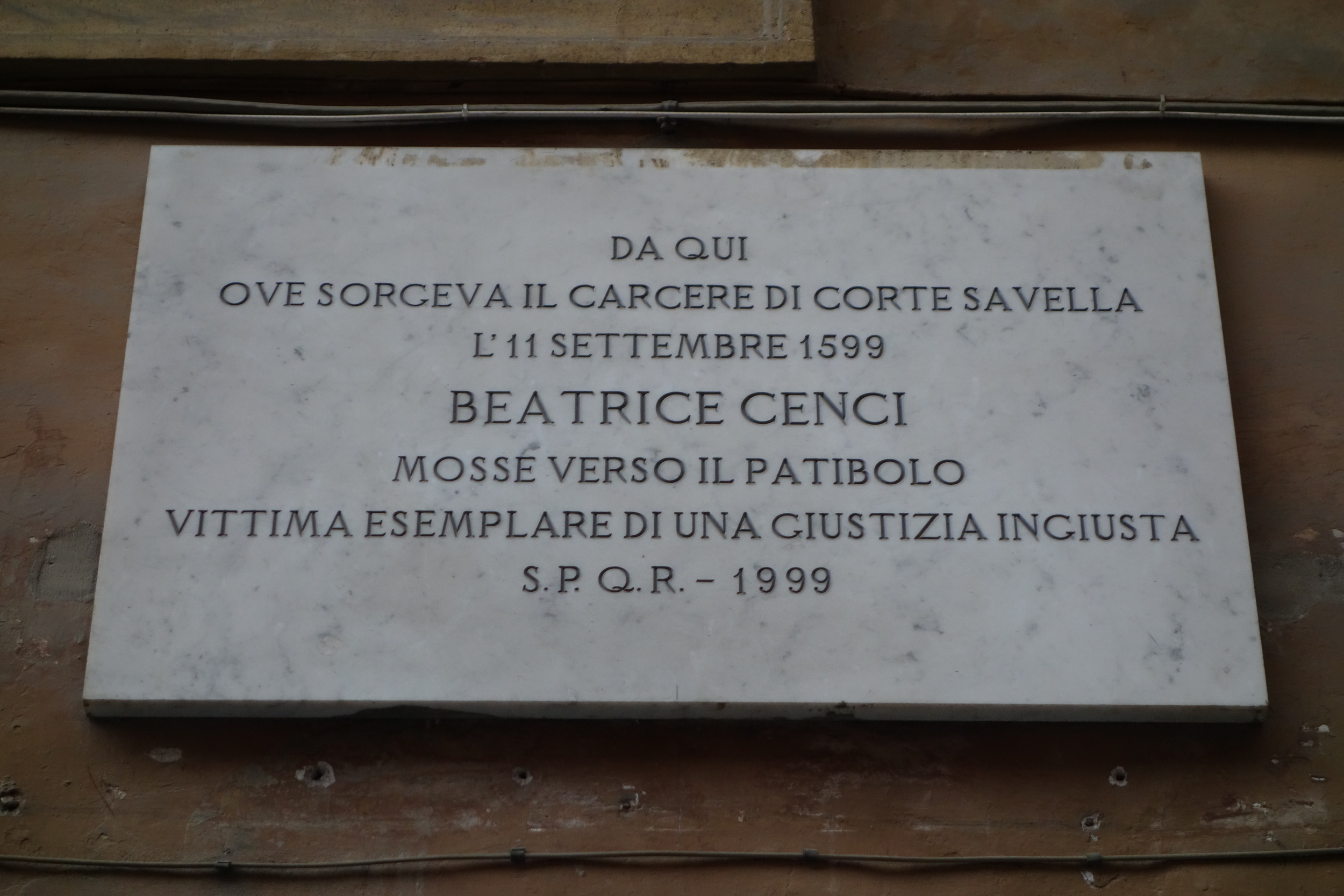
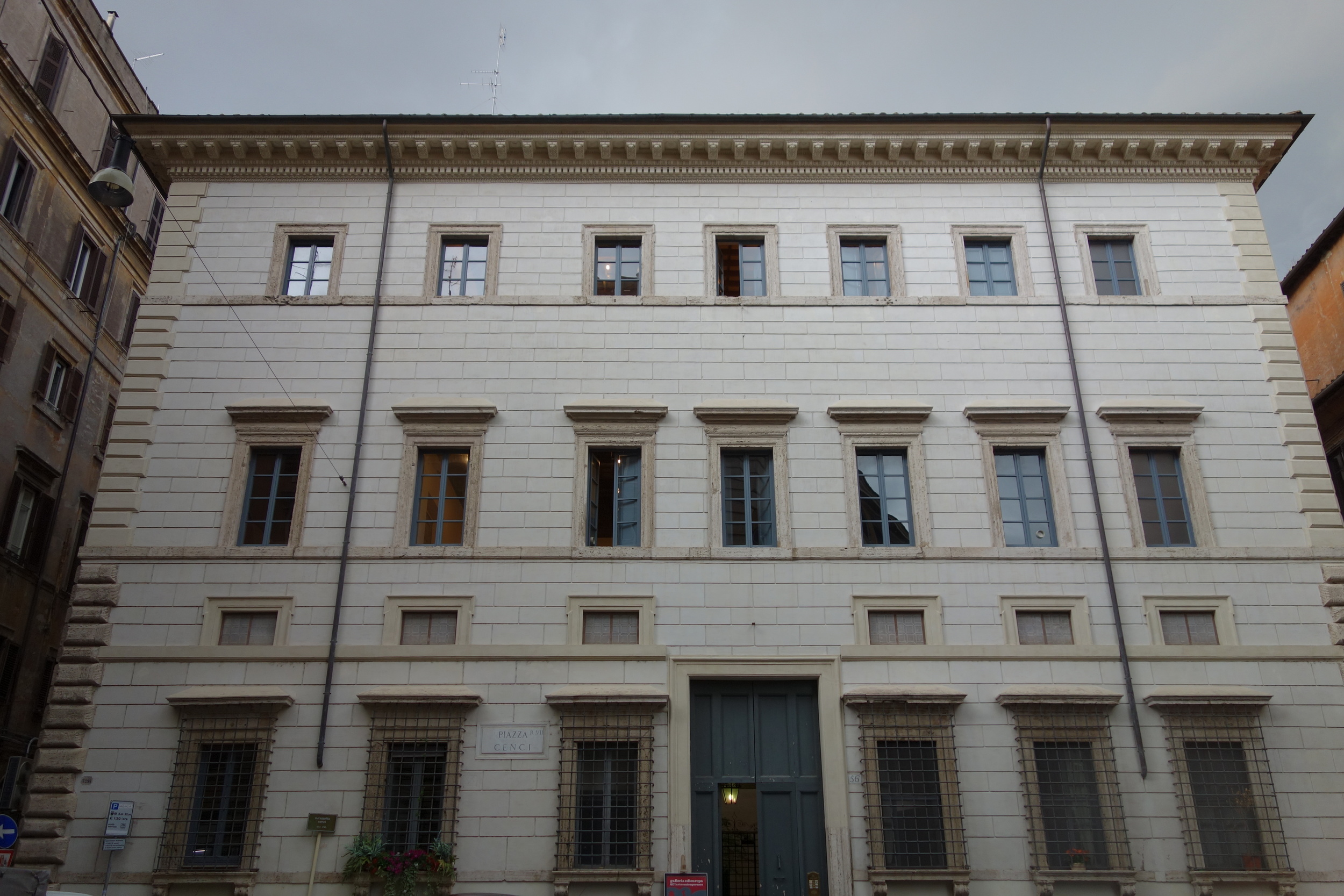
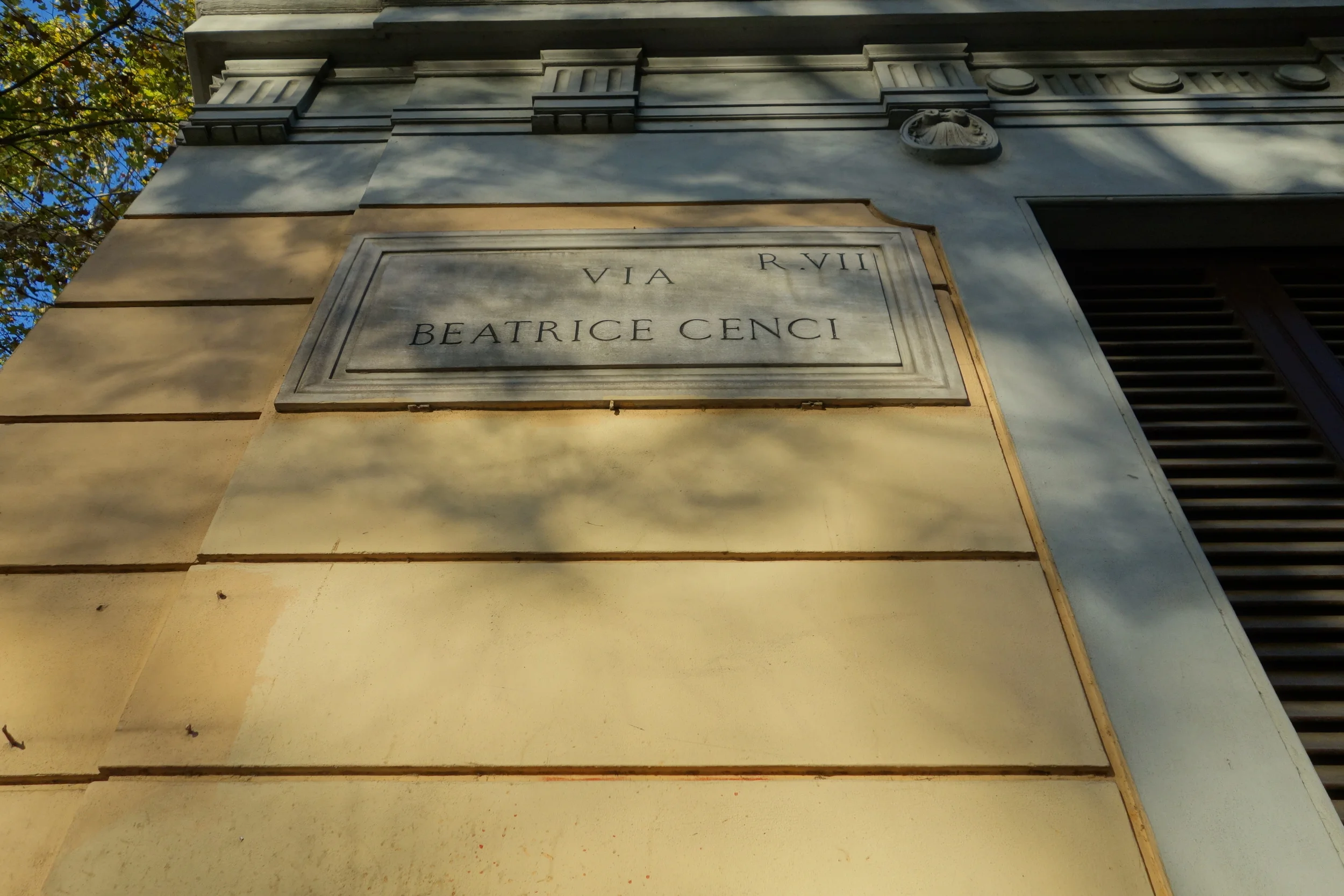
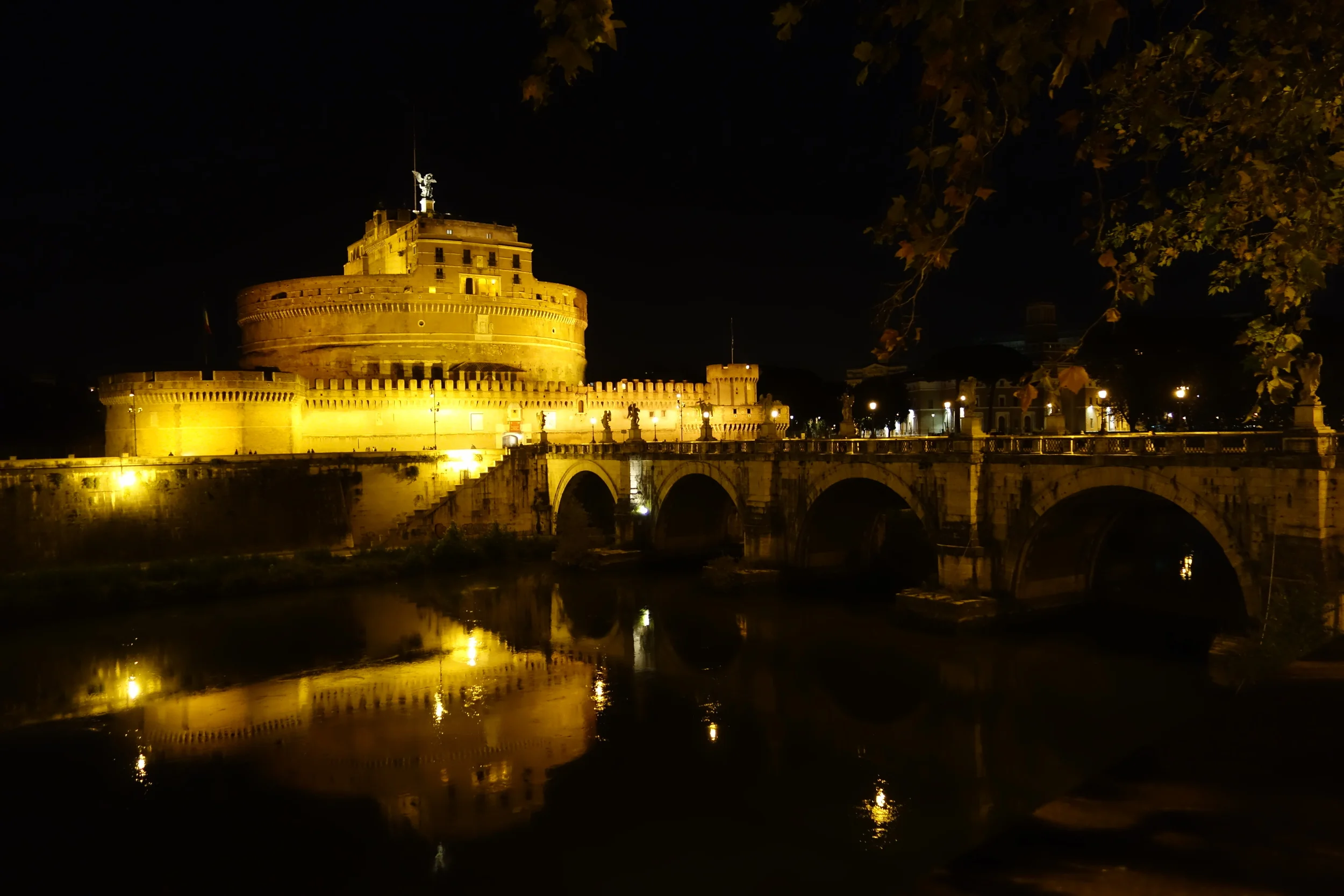
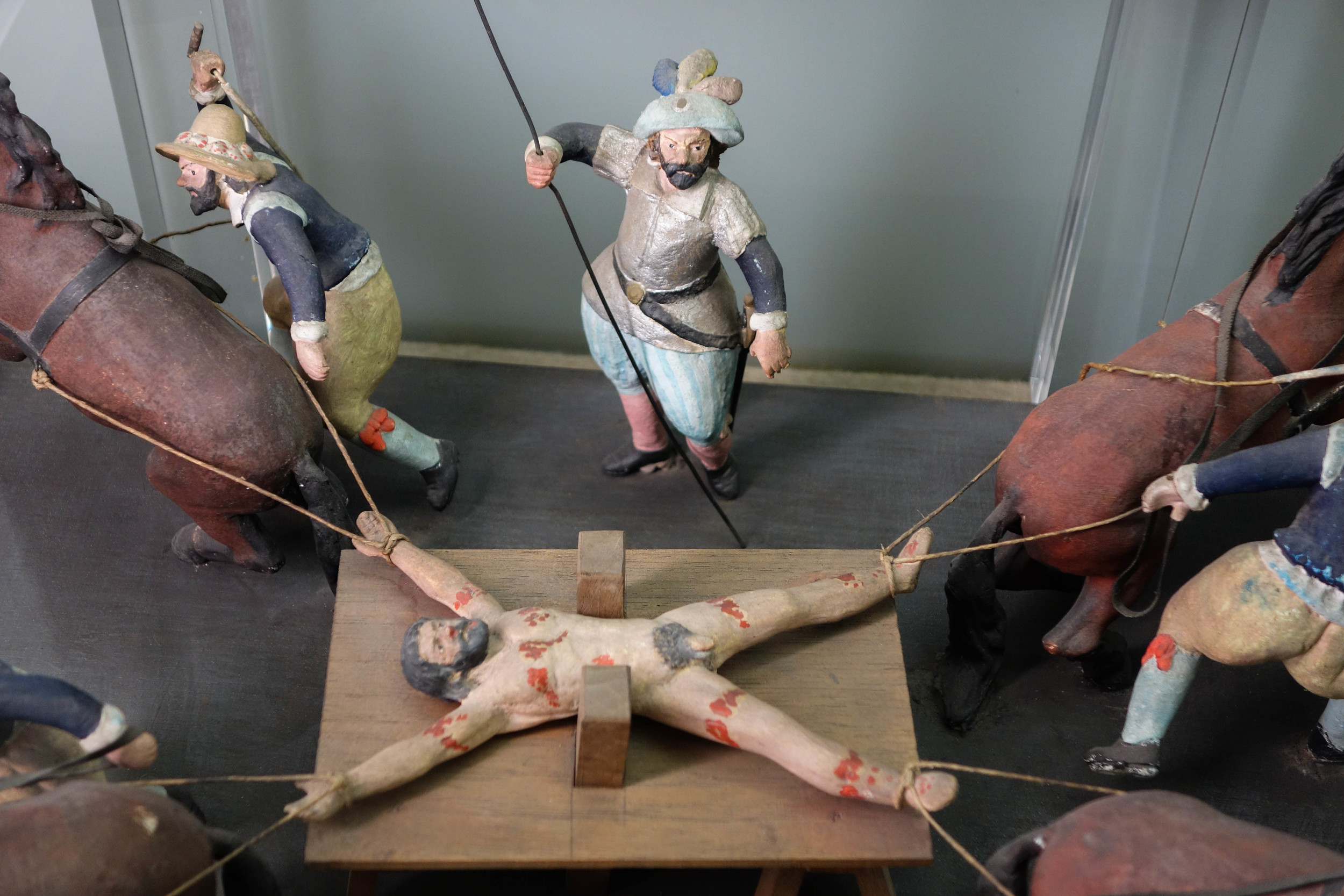


A Palm Sunday Legend
The obelisk in St. Peter’s Square was originally erected in Heliopolis, Egypt sometime between 2494 and 2345 BC. After 63 BC it was moved to Alexandria, then Caligula moved it to Rome in 37 AD. It moved to its current location in 1586. It’s the only obelisk in Rome that hasn’t fallen since antiquity. It used to be topped with a globe that was rumored to contain Caesar’s ashes. That turned out to be wrong and today it’s topped with a reliquary that contains a piece of the True Cross.
That much is true… this a legend I heard in Rome about what allegedly happened when the architect/engineer Domenico Fontana was re-erecting the obelisk for the last time in 1586. Fontana gathered 900 men and 140 horses (as shown in the engraving above). Pope Sixtus V forbid anyone to speak while the obelisk was raised, so no one would break their concentration. In silence, the massive team began to lift it. But one sailor noticed that the ropes were smoking from the friction. Against the pope’s orders he yelled, “Water on the ropes!”
Fortunately, they heeded his advice. The water cooled down the ropes and the obelisk went up successfully. However the sailor was still hauled in front of the pope for breaking his decree. But instead of punishing him, the pope thanked him and offered him a reward. The sailor asked that his family’s farm in Bordighera supply the palms for Palm Sunday every year, as long as they owned the land.
To this day, the Vatican sources their Palm Sunday fronds from Bordighera. That much is true too.
(Engraving from Wikimedia, photos from freeallpictures.com.)
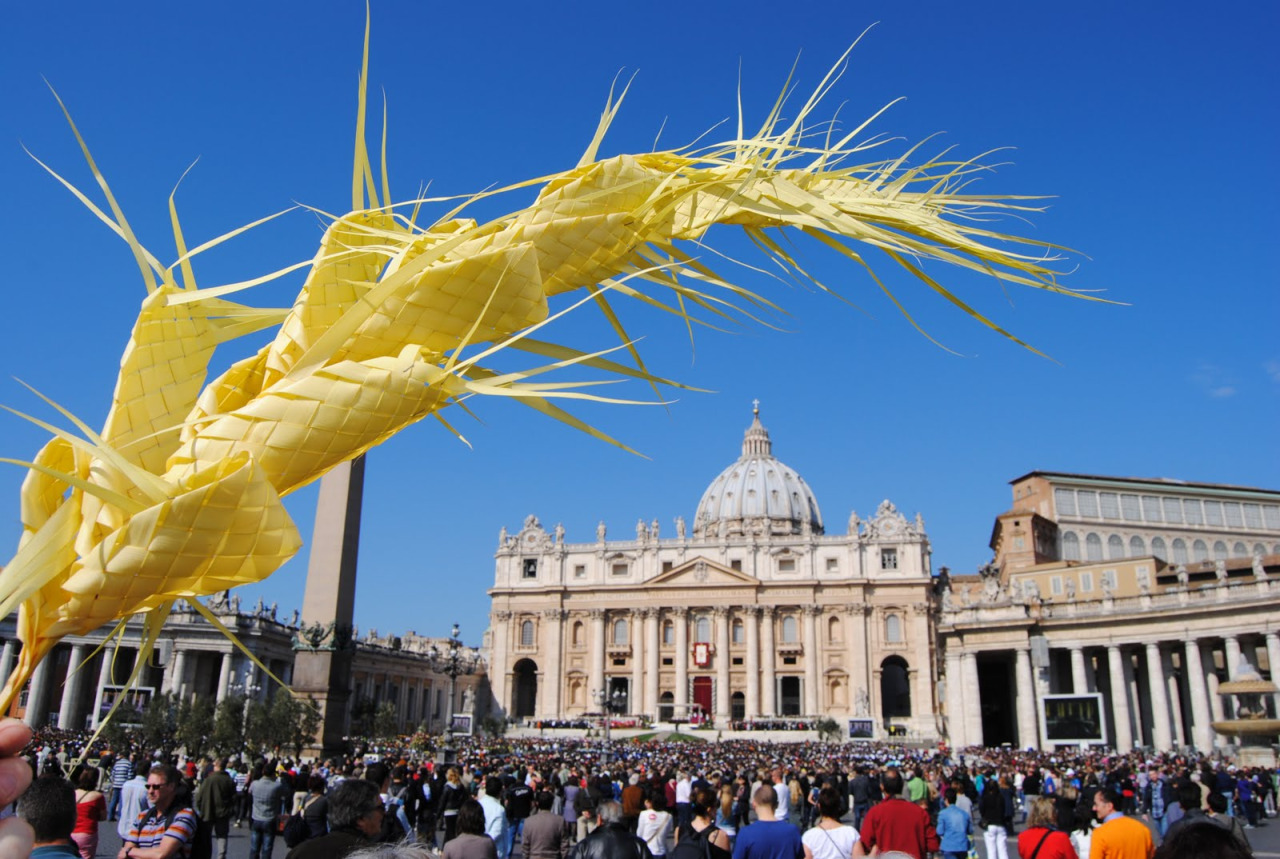
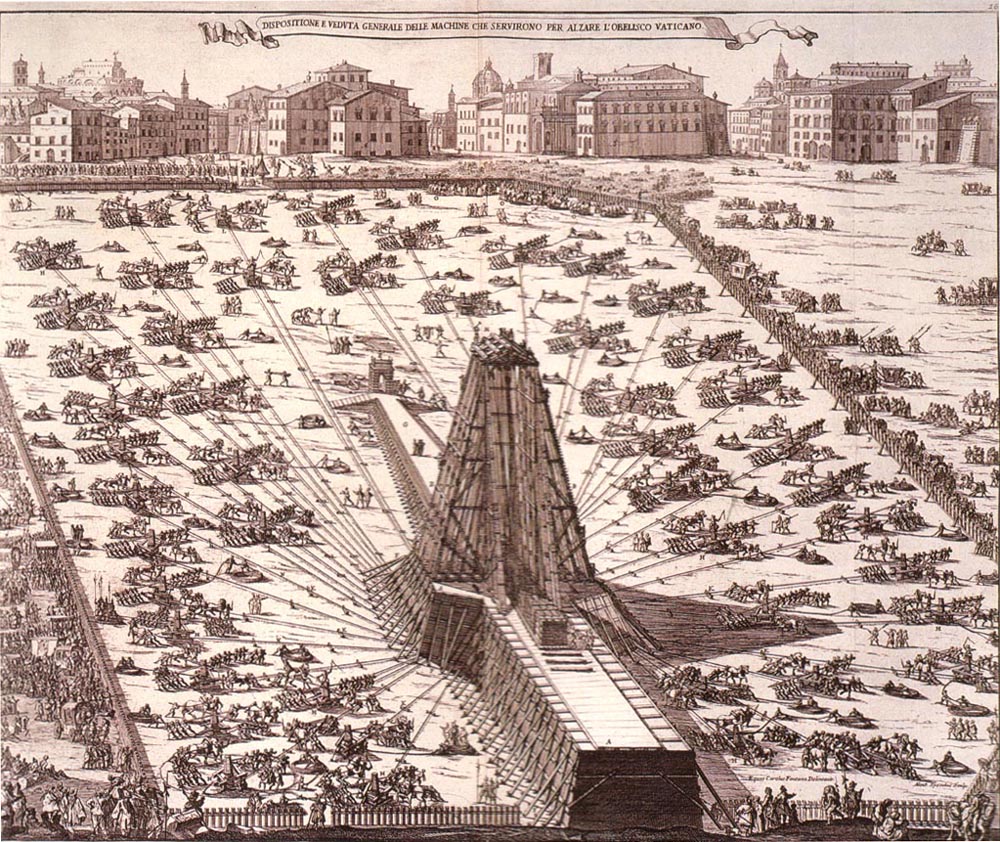
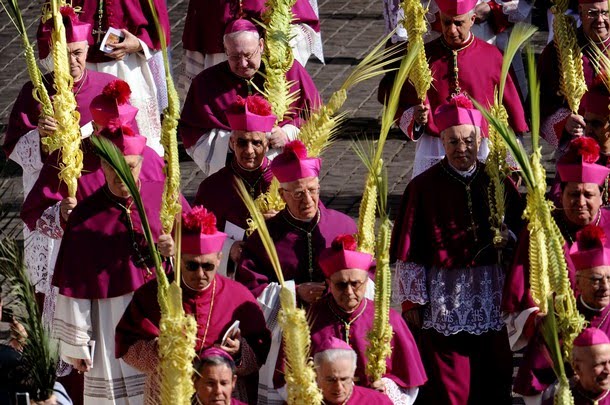
The Cadaver Synod or That Time We Put a Corpse on Trial
Originally published on Atlas Obscura.
Roman churches usually aren’t shy about their macabre histories. At Santa Maria dell’Orazione e Morte a nun will be happy to let you photograph their crypt of abandoned bodies in exchange for a small donation. At Santa Prassede a sacristan will give you a pamphlet and helpfully point out the well where St. Praxedis and St. Pudentiana poured the blood that seeped out of the three thousand bodies of martyrs they were hiding. At the famous Capuchin crypt you can even buy postcards of the mummified monks to send to dear friends or enemies.
But if you go to the Basilica San Giovanni Laterano looking for such morbid attractions, you’ll find you’re on your own. What happened there over one thousand years ago is still too horrible to speak of. This is the church where Pope Stephen VI put the rotting corpse of Pope Formosus on trial in January of 897.
The trial was called the Cadaver Synod or Synodus Horrenda (since everything is more colorful in Latin). It ushered in one of the most corrupt eras in the history of the papacy, a time that’s now referred to in all seriousness as the pornocracy.
To understand what happened to Pope Formosus’s unfortunate corpse, you have to understand that the world around him was falling apart. The western empire Charlemagne had united had since crumbled away into smaller and smaller factions. Little fiefdoms were eyeing Rome’s treasures and demanding protection money while the city was still smarting from the Saracen sack of 846. Rifts formed within the church as the men who aspired to be pope found they needed the additional strength of one of the many secular leaders to achieve it.
The story of the corpse trial actually starts during the reign of Pope John VIII. At this time, Formosus was bishop of Porto (the Roman suburb, not the city in Portugal). He was also a successful missionary, known for spreading Catholicism throughout the Bulgar kingdom. But he might have been a little too good at his job. Pope John VIII turned on Formosus and accused him of violating a law that prevented bishops from ruling over more than one place at a time — a law that was supposed to prevent bishops from building up their own little fiefdoms. And perhaps more tellingly, John accused Formosus of violating a recently passed law that forbid openly aspiring to the papacy. Formosus was getting a little too close for comfort, so John had him excommunicated.
As it turned out, John’s paranoia was justified. He was the first pope to be murdered by his own people. At first he was poisoned, but the poisoner lost patience waiting for the potion to take effect and bashed John’s head in with a hammer. After John’s death the papacy had such a high turnover rate, it’s a wonder anyone wanted the job at all. Marinus I succeed John and re-instated Formosus as bishop. The following year Pope St. Adrian III succeeded Marinus, but barely lasted a year before being assassinated himself. Pope Stephen V followed shortly thereafter.
Finally in 891, it was Formosus’ turn. He managed to hold on to the papacy for five turbulent years before dying of a stroke. His successor, Boniface VI, was elected quickly to squelch riots, but he was an odd choice — he had been defrocked twice for “immoral conduct.” He only ruled for 15 days before he died of either gout or poisoning (again).
Next up was Pope Stephen VI. Less than a year into his papacy, he gave the order to dig up Formosus and force his corpse to stand trial for crimes Pope John VIII had excommunicated him for: seeking the papacy and ruling over more than one place a time as bishop.
Now Stephen VI’s reason for desecrating this poor corpse could have been to shore up some political alliances with a faction that hated Formosus, but more than likely it was to cover for the fact that Stephen was guilty of the exact same things he was accusing Formosus of. Formosus had made Stephen bishop, and Stephen had become bishop of Rome (a title that comes with the papacy) while he still held that post. But if Formosus could be found guilty of that same crime (being a simultaneous bishop of two places), his actions would be null and Stephen wouldn’t have been a bishop when he was elected pope. Stephen also might have been completely insane.
So the corpse of Formosus was dragged out, dressed in papal robes, and propped up in a chair at San Giovanni Laterano. Ironically, poor Formosus’s name means “good looking” though by then he was a horrific sight. A deacon was appointed to speak for him, but predictably didn’t say much while Stephen screamed at the corpse. At one point in the trial an earthquake shook the basilica, damaging part of it. But even in the face of this ominous sign, Formosus was found guilty on all counts, stripped of his vestments, and had the three fingers he used for blessing on his right hand chopped off.
Stephen had him buried on an obscure plot of land, but then, thinking better of it, had him dug up one more time and tossed in the Tiber. At this point the people of Rome had just about enough of Stephen and his corpse trial. A mob threw him in prison where he was strangled in his cell. Later that year, San Giovanni Laterano was nearly destroyed by a fire as if to rid itself of the whole nasty business.
The next pope, Pope Romanus, annulled all the actions of Stephen VI, but was overthrown in less than a year. His successor, Pope Theodore II, was only pope for 20 days, yet managed to recover the body of Formosus. His successor, John IX oversaw Formosus’s reburial in St. Peter’s Cathedral. Today, there is still a monument that lists the names of popes buried there. There, you can see Formosus’ name carved in stone- one of the last vestiges of the Cadaver Synod.
Painting: Jean-Paul Laurens, "Pope Formosus and Stephen VI - The Cadaver Synod" (1870) (via Musée des Beaux-Arts de Nantes)
Sources:
The Bad Popes, E.R. Chamberlin
Keepers of the Keys of Heaven: A History of the Papacy, Roger Collin
The Ring and the Book, Robert Browning

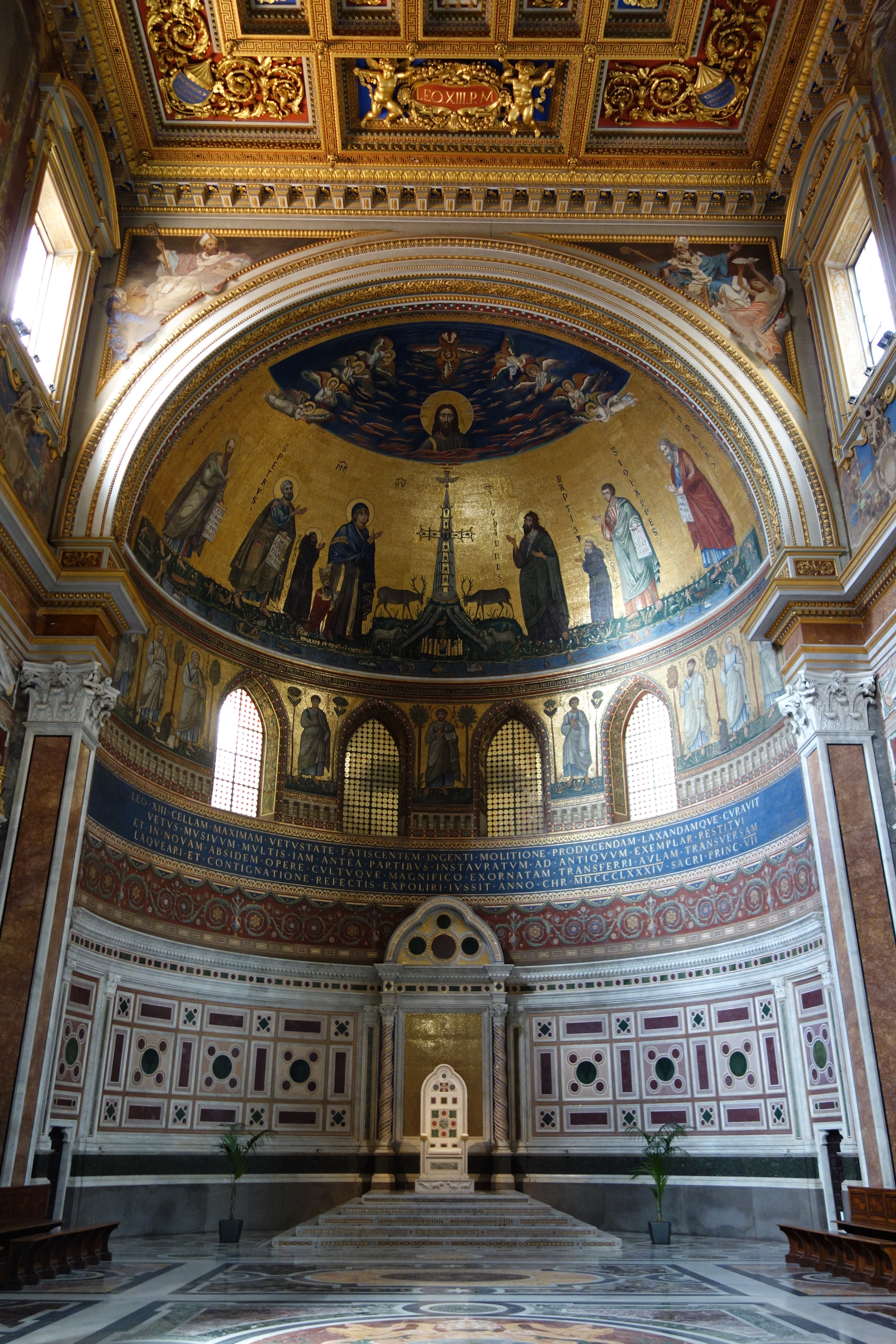
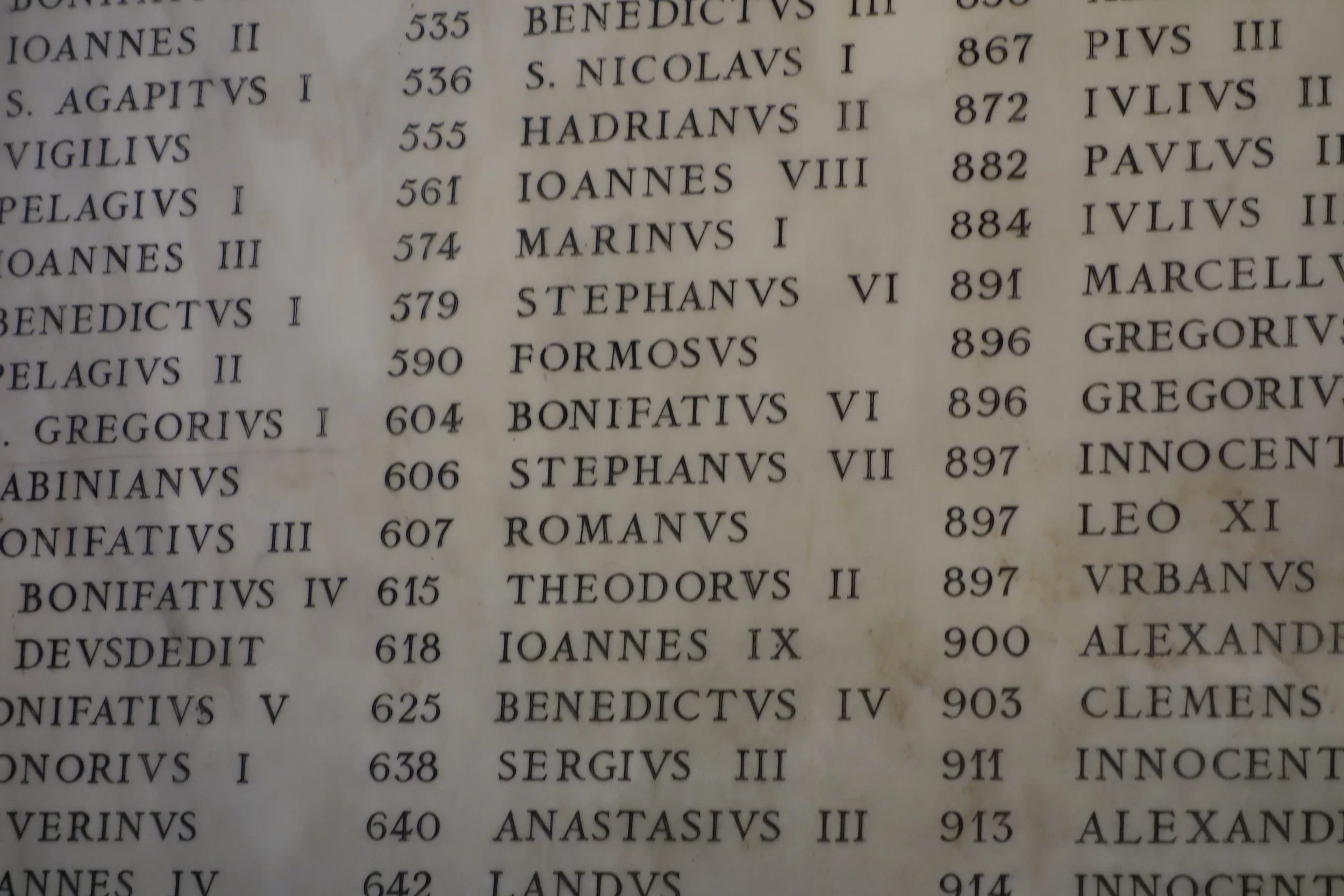
A Makeover for LA's Patron Saint
Originally published on Atlas Obscura.
St. Vibiana is always on trend. No wonder she’s the patron saint of Los Angeles. She’s currently located in the crypt at Our Lady of the Angels Cathedral in downtown LA, a postmodern marvel of a church all decked out in alabaster. Her remains are concealed in a white marble casket tastefully engraved in gold, not too far from the resting place of movie star Gregory Peck. The shrine coordinates perfectly with the church's clean lines and minimalist aesthetic.
But she wasn’t always memorialized this way. Her time in the public eye began in 1853 when her tomb was excavated from the catacombs of San Sisto in Rome. Unlike many of the so-called “catacomb saints” who didn’t even have names, the inscription on Vibiana’s tomb gave her name, the day of her death (August 31), the symbolic laurel wreath of martyrdom, and indicated she was “innocent and pure.” Inside the tomb, her body and what was presumed to be a vessel of blood were found inside. Since early Christians collected as much of a martyr’s blood as possible, this was considered additional evidence that this young woman was a virgin-martyr from the third century and should be venerated as a saint.
The following year Bl. Pope Pius IX gave her relics — blood, tomb inscription, and body — to Thaddeus Amat, the newly appointed Bishop of Monterrey, California. So St. Vibiana set sail for America.
After a stop in Santa Barbara, she moved into the cathedral built for her in Los Angeles in 1880, where her relics were placed inside a wax effigy in a glass casket above the altar. If the church looks familiar, it was closely based on the Chapelle Saint Vincent de Paul that houses St. Vincent's relics in Paris.
In the 1970s she updated her look. The cathedral underwent a renovation and the wax effigy was abandoned for a more understated stone coffin. (For those who prefer the retro look, you can still see a contemporary catacomb saint in a wax effigy from 1892 at the Church of the Most Holy Redeemer in New York.) After the Northridge Earthquake in 1994 irreparably damaged the cathedral named and built for her, she was moved one last time to her current location downtown.
(First photo from USC Libraries at the old St. Vibiana Cathedral, second photo by me, third and fourth photos from Find A Grave, fifth photo from St. Vincent images.)
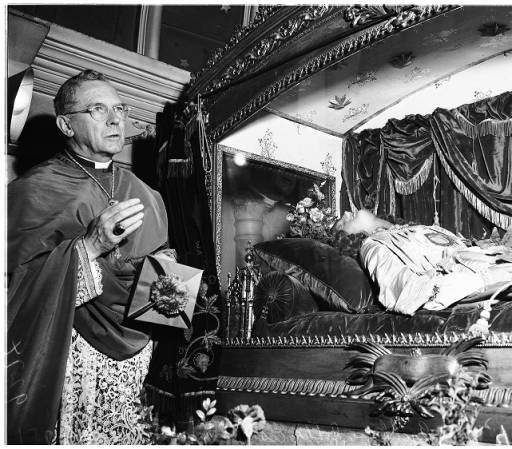
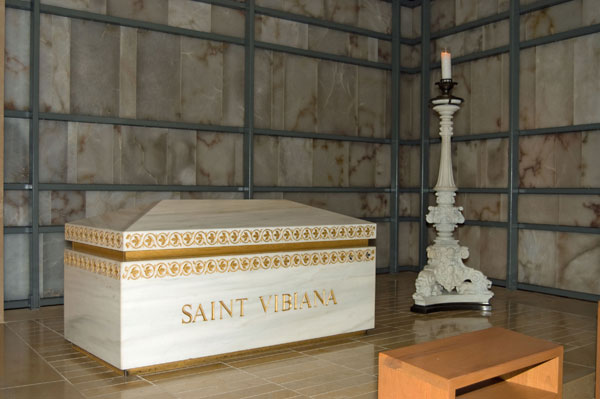
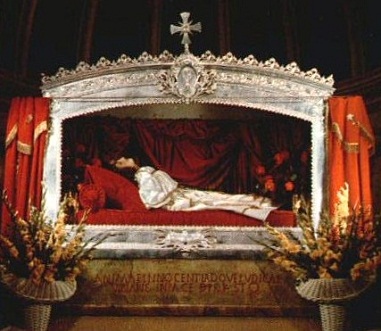
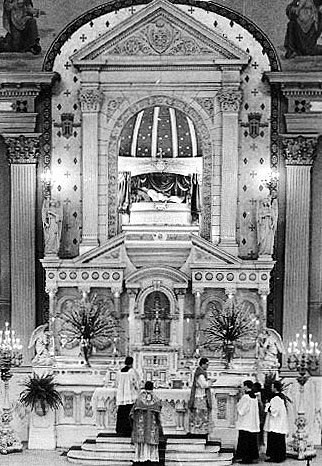

Transi Tombs: Living Up Front, Dead Man's Party Out Back
Originally published on The Order of the Good Death blog.
Elizabeth Harper, relic hunter and mistress of All the Saints You Should Know, and Caitlin Doughty, boring ol’ medievalist mortician of The Order of the Good Death, bring you their correspondence on transi tombs. We hope to one day turn it into a cable access chat show. Geek out with us!
Elizabeth
I loved that cadaver tomb you posted on Facebook the other day. (Cadaver tomb always sounds redundant to me but whatevs.) It reminds me of this bad boy who’s been lurking in my “things to write about” folder. Thought you might like him.
Caitlin
I guess “cadaver tomb” is kind of redundant, as tomb implies that a dead body is found within. But I’m going to make the bold declaration that cadaver tombs get a pass on the extra emphasis because they are tombs with actual cadavers on them. Best of both worlds! Did you find this beauty on your travels?
Elizabeth
It’s at St. Gervais et Protais in Gisor, France. It’s set into the wall, lurking in the shadows under a window. Kids have scratched their names right below it as if a little lively mischief could take away the pall the sculpture casts over this corner.
What’s crazy about this particular piece is there is no dead body. When I saw it thought it must be a cadaver tomb (which I learned is also called a transi tomb sometimes- as intransitioning from death to eternal life) but after a little research, I found out it’s not. I guess you would classify it more as a memento mori? It’s so similar to the one you posted though and they’re both French. Do you have any more information on yours?
Caitlin
Today is your lucky day. Mallory, who sent in the tomb (like you and I, Mallory is a fan of deathstinations) had a ton of info. It’s the tomb of Cardinal Jean de la Grange, c.1325 – 1402. This is considered an early example of a transi, or cadaver tomb, because his body is really in there. +1 for body. Body or it didn’t happen.
Our Cardinal de la Grange was a Benedictine monk who lived through the Black Death in France, at a time where 50% of people in his town of Avignon died. This is how the inscription on the tomb translates: “We are a spectacle to the world. Let the great and humble, by our example, see to what state they shall be inexorably reduced, whatever their condition, age or sex. Why then, miserable person, are you puffed with pride? Dust you are, and unto dust you shall return, rotten corpse, morsel and meal for worms.”
I like that he calls us “rotten corpse” at the end there. It’s good strong death acceptance rhetoric. Transi tombs are great, but you know what my favorite are? DOUBLE DECKER TRANSI TOMBS.
Elizabeth
Well now it’s YOUR lucky day! Because Cardinal de la Grange’s tomb USED TO BE A DOUBLE DECKER! I just found that little nugget out while I was searching for more info on my memento mori. According to a conservationist at the Louvre, the tomb used to show the Cardinal in life above the corpse part of the tomb but it was knocked down during the Revolution. The salvageable pieces were split up and the corpse stayed in Avignon. So we’re only seeing half of it. The double decker transi tombs are so awesome—business up top, naked decomposition down below. Truly the mullet of tombs (and I mean that lovingly).
I’ve also got to hand it to the Cardinal’s tomb for having a badass epigraph. My tomb at St. Gervais is a little more tempered. It translates to “Whoever you are, you will be overcome by death. Stay here, take care, and weep. I am what you will be, a heap of ashes. I implore you, pray for me.”
The sculpture is probably from around 1526.The conservationist points out that people weren’t dissecting corpses yet, so the anatomy is always a little impressionistic. Our dead friend in the wall here has too many ribs, for example.
Here’s some of the reading material I dug up on our transi tombs, if you want to peruse. The first link is choice.
Représentation du corpse- le transi by Geneviève Bresc Bauthier (link)
Caitlin
The mullet of tombs! Truer words were never spoken. And yes I will absolutely peruse any and all cadaver tomb information.
I’ll leave you with one of my fave double decker transi tombs, John FitzAlan, 14th Earl of Arundel (much better than the 13th Earl). I use this picture in talks all the time, to silence any naysayers on the point that late medieval tombs were the realest and best of all tombs.
So I am, so you shall be! Look upon me, one in the bloom of life, now a rotten corpse, ravaged by death. I just made that one up, but it’s pretty to form. We could use more of these now, instead of flat grave markers that try to hide that people are buried and make cemeteries look like parks. I’ll take my corpses and the reality of death, please.
Can I post this to the Order? I feel like people will love a good transi tomb. How can they help but capture a deathling’s black heart?
Elizabeth
Yes, definitely post this to the blog!
I’m having so much fun over here learning about transi tombs. No really. The More You Know rainbow-star is shooting out of my house right now. And I’m right there with you. Let’s bring back the transi tomb. They’re beautiful, they’re unflinching, they’re personal and still universal. What more could you ask for in a memorial? Maybe transi tombs were like Medieval art therapy– a way to come to grips with the fact that you’ll become ashes and dirt without believing you are ashes and dirt.
(P.S. After reading more about these two fascinating examples I found out that the guy who was buried beneath Caitlin’s tomb, Cardinal Lagrange, was quite a character. He picked a fight with the pope after he ignored a Papal Bull against dismembering corpses. Who’s corpse did he dismember, you ask? HIS OWN. He specified in his will that he wanted his bones boiled and buried in Amiens and a separate flesh burial in Avignon. --EH)
(First photo: Tomb of Cardinal Jean de la Grange, c.1325 – 1402, Second photo: Tomb at St. Gervais et Protais in Gisor, France, Illustration: Transi Tomb, c. 1435-40)
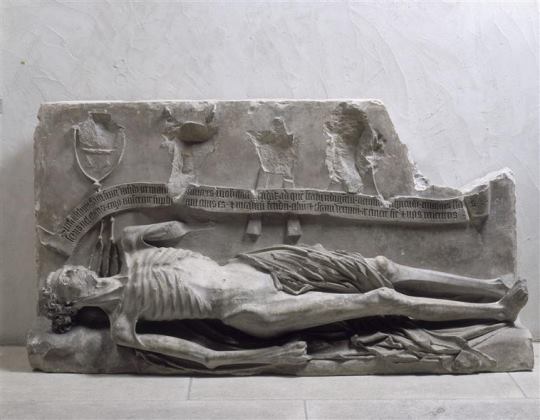
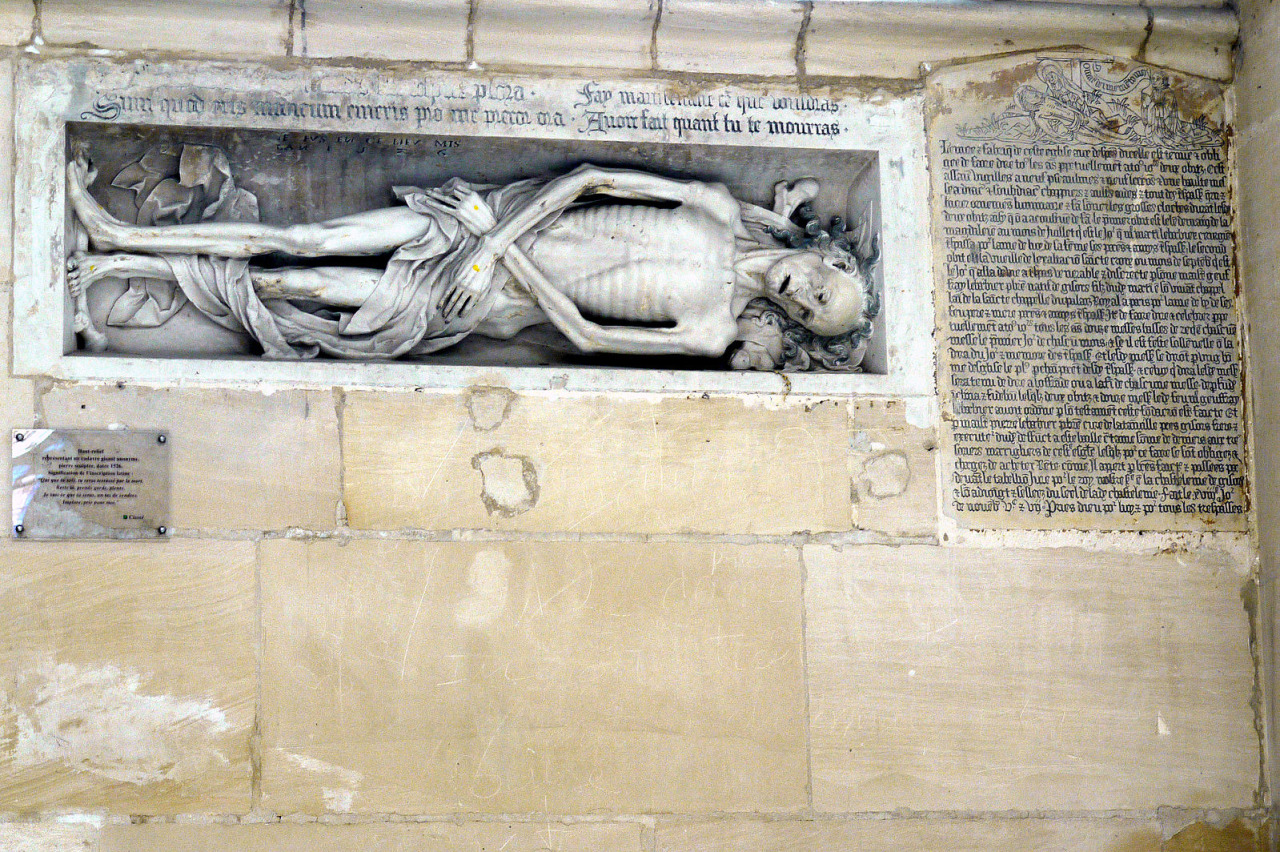
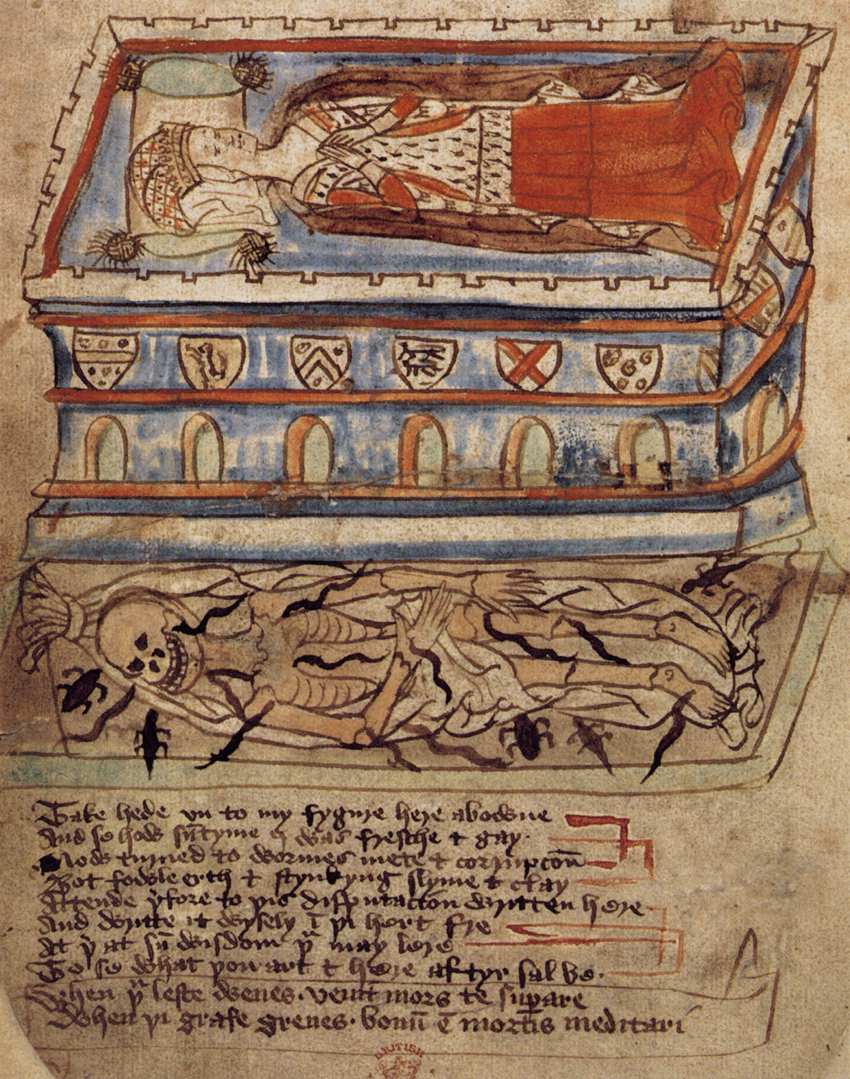
Miss World
There’s a figure of an unusual woman on the cathedral in Worms, Germany. She’s just above the south portal on the right hand side.
She’s beautiful and there’s something about the luxurious folds in her dress and the crown sitting on top of her perfectly coifed hair that instantly tell you she’s rich, too. She smiles serenely into distance while a tiny knight clings to the hem of her dress. He gazes at her adoringly. She doesn’t seem to notice. He’s hierarchically scaled so his small stature lets you know this piece isn’t about him. It’s all about her. She doesn’t have any religious attributes, the symbols shown with saints that clue you in to their identity. So who is she?
She’s Ms. World, Frau Welt.
Take a look at her back and you’ll find her identifying feature — she’s covered in toads, an allusion to Revelation 16:13.
And I saw three unclean spirits like frogs come out of the mouth of the dragon, and out of the mouth of the beast, and out of the mouth of the false prophet.
Her body is being eaten alive by snakes and worms. She’s an allegory for vanity, a symbol for all that’s evil and sinful in the world hidden behind a seductive façade. She was a favorite character in German morality tales and sermons around 1300, just after the cathedral was constructed.
Naturally she was often used to browbeat women into dressing modestly. So if you find that she plays too much to the misogynistic tendencies of the Middle Ages for your tastes, consider her male counterpart, Fürst der Welt. The Prince of the World or Prince of Darkness’s self-satisfied smirk belies the toads, maggots, and rotting flesh waiting for the viewer on the other side. You can a famous example of his image outside the cathedral in Straßburg.
(All photos from Wikimedia. First two of Worms by Jivee Blau, last of Straßburg by Rama.)

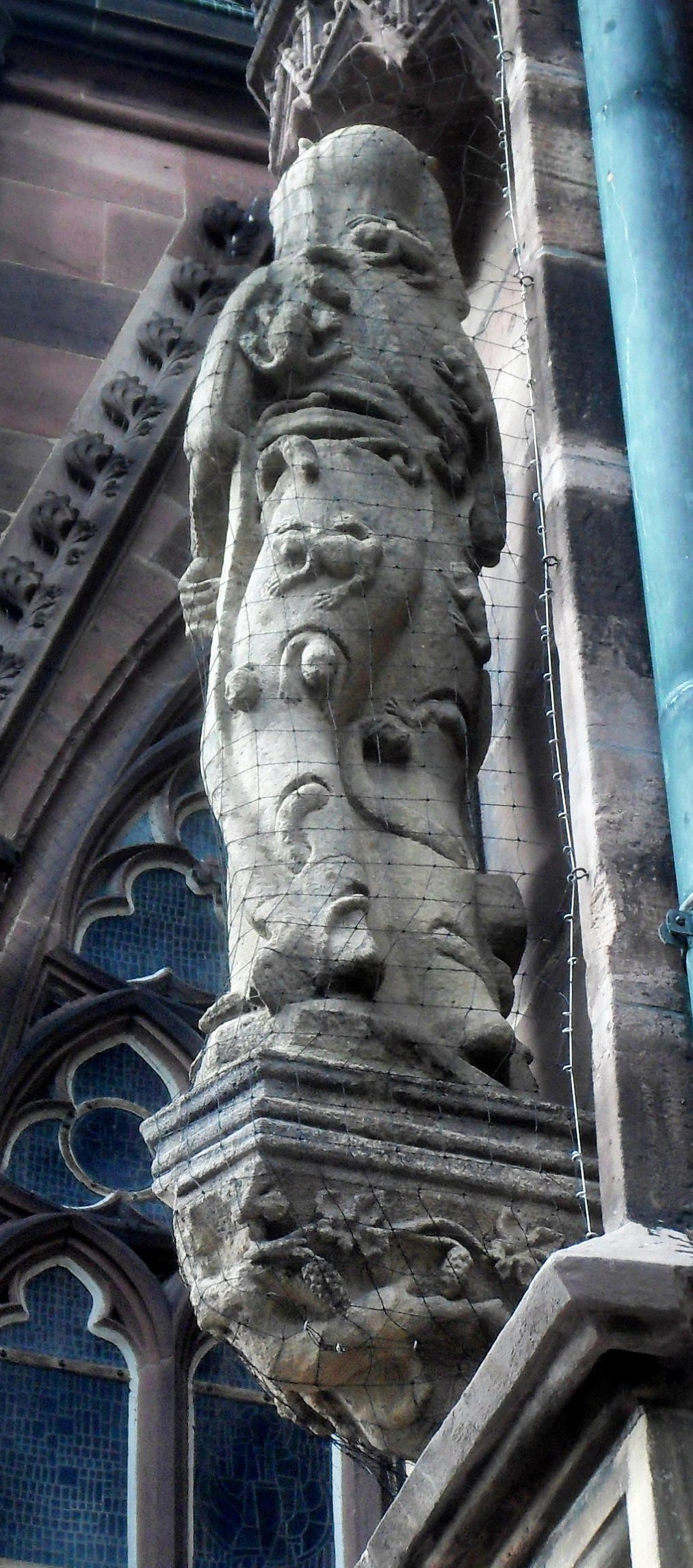

Terror-Stricken in Paris: A Crypt for Bloodstains and Bones
Originally published on Atlas Obscura.
The motto liberté, égalité, fraternité is all over Paris, from the walls of the Panthéon to the Hôtel de Ville. Yet that famous phrase of "liberty, equality, fraternity" omits a few words that were often included during the French Revolution: “ou la morte” — "or death."
Put that way, it might remind you of the Reign of Terror that swept through the ideals of the Revolution. But without it, the city’s violent history hides in plain sight. Despite reminders of the Revolution nearly everywhere you look, from mass graves from the guillotine at the Cimetière de Picpus to the stones of the Bastille reconstructed as the Pont de la Concorde, the one thing that can be hard to fathom in modern-day Paris, is the sheer terror of The Terror.
It’s perhaps most noticeably absent in Marie Antoinette’s cell at the Conciergerie. To Americans like me, the name alone suggests the Four Seasons instead of death row. In her cell, a mannequin serves as a stand-in for the queen, but she’s frozen in time, sitting in front of a tiny altar with her head eternally attached to her neck. It’s difficult to imagine the panic and dread she must of felt beneath her dignified façade on the way to the scaffold, but then again, being sympathetic and well-understood was never Marie Antoinette’s strong suit. Even the original site of the guillotine that decapitated her doesn’t inspire much fear today, transformed into the Place de la Concorde with its enchanting, illuminated obelisk.
But there’s at least one place where the violence of the French Revolution is still palpable. Every Saturday at 3 pm, you can take a guided tour of the crypt beneath St. Joseph des Carmes. There you can see the battered remains and bloodstains of some lesser-known victims of The Terror — a group collectively known as the martyrs of September.
The martyrs were a group of priests, seminarians, bishops, and, most famously, the Archbishop of Arles. They were rounded up by a mob of sans-culottes and imprisoned in the convent near St. Joseph's after refusing to take an oath that undermined papal authority. The mob’s punishment for this transgression was quick and especially brutal. They began killing their prisoners on September 2, 1792, when they bashed in the Archbishop’s head, stabbed him, and trampled the body.
The following day the mob set up a kangaroo court to try the remaining prisoners. Martyrologist John Foxe described them as soaked in blood up to the elbows with executioners and judges freely subbing in for one another without bothering to wipe the gore off their hands.
Unsurprisingly, nearly all the clergy members were found guilty. But instead of condemning them from the bench, the judges simply told them they were free to leave. Each defendant left down the same stairway and at the bottom there were plenty of people waiting to hack their bodies apart. British ambassador, Earl Gower,described the wake the mob left behind:
“After [the killings] their dead bodies were dragged by the arms or legs to the Abbaye… here they were laid up in heaps till carts could carry them away. The kennel was swimming with blood, and a bloody track was traced from the prison to the Abbaye door where they had dragged these unfortunate people.”
When it was over, 190 people were killed at the convent in just two days. Their bodies were thrown in a pit and covered in quicklime.
Today, some of the recovered bones of the martyrs are on display in the church crypt. Many still have the obvious marks of swords and pikes. Some skulls sit in niches, while others are stacked in a cabinet above the epitaph, "Having preferred death to violating the holy law of God, they were massacred." In a separate room, bloodstained paving stones are displayed. The spilled blood, coupled with the list of names of the martyrs and the portraits of the executed bishops, allows us an unusually visceral, yet empathetic look at these casualties of the Terror.
Of course there are other, less shocking monuments to the Martyrs of September. Every day at nearby Saint-Sulpice, visitors pass a memorial featuring two black angels without knowing the story behind it. There, The Terror continues to hide in plain sight.
(Special thanks to Marie-Christine Pénin for her photos of the crypt. See more at www.tombes-sepultures.com. Engraving: "The Massacre Of The Priests In September 1792" by Hippolyte de la Charlerie, photo of the memorial to the Martyrs of September by Allison C. Meier)
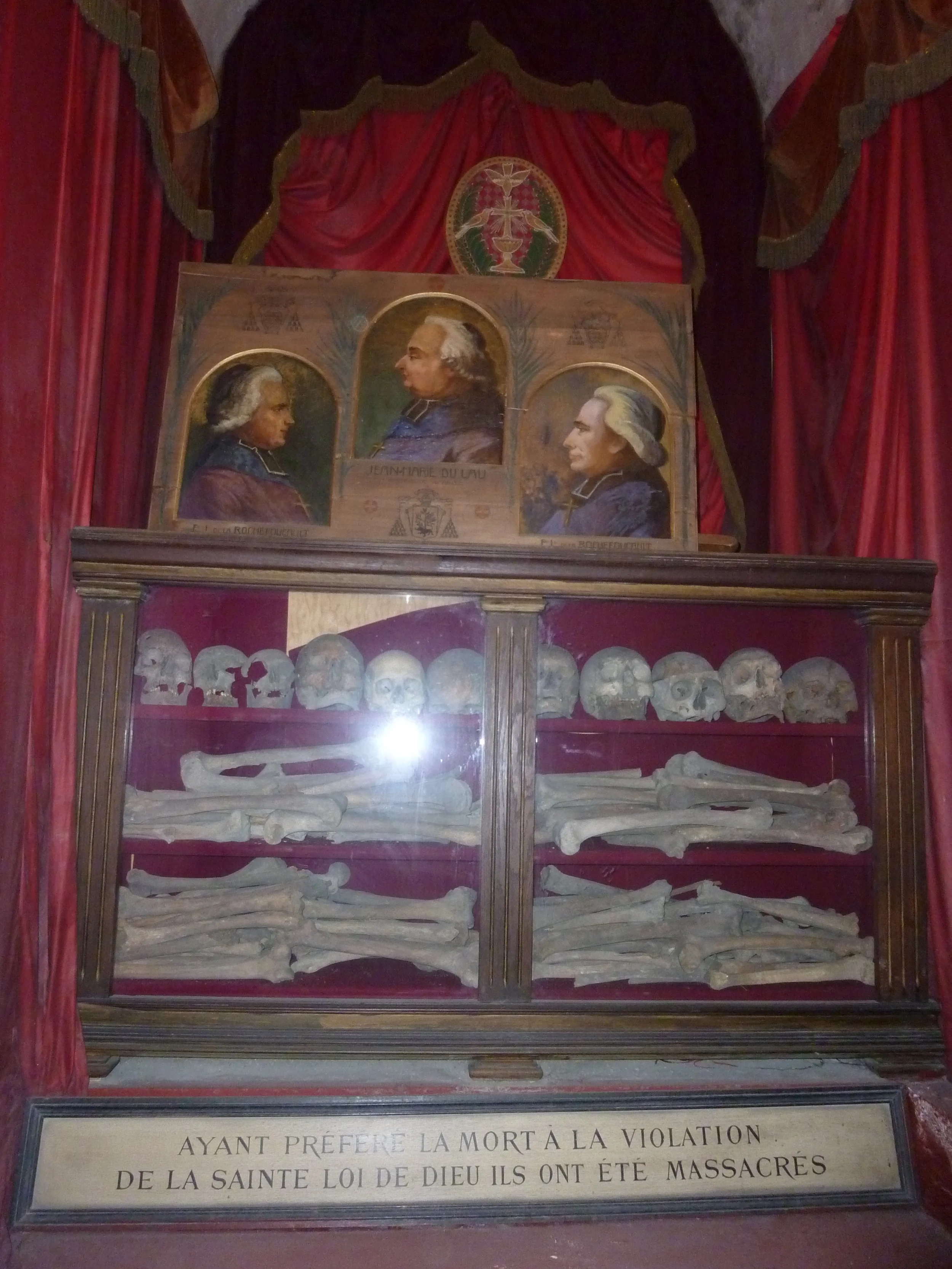
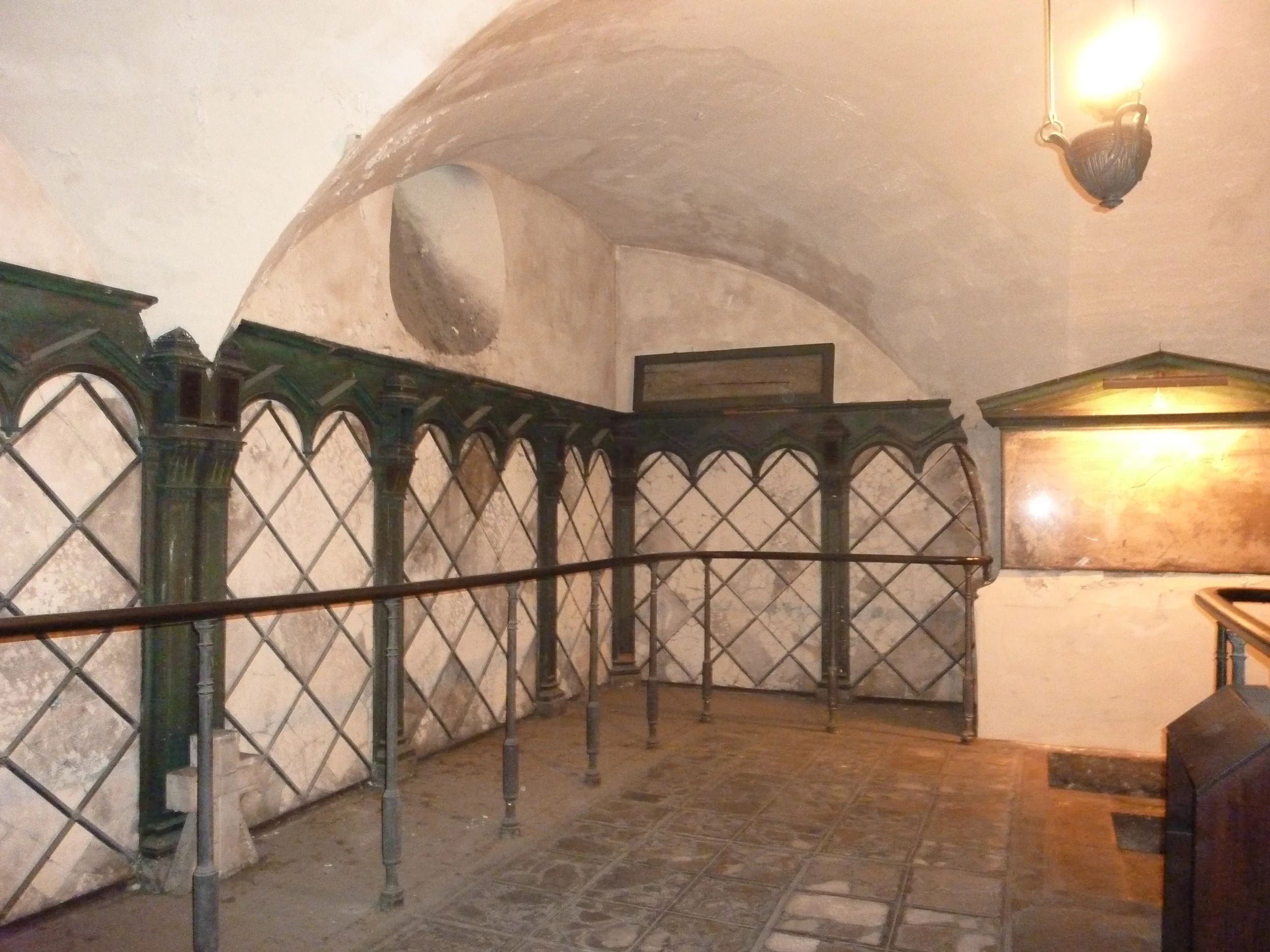

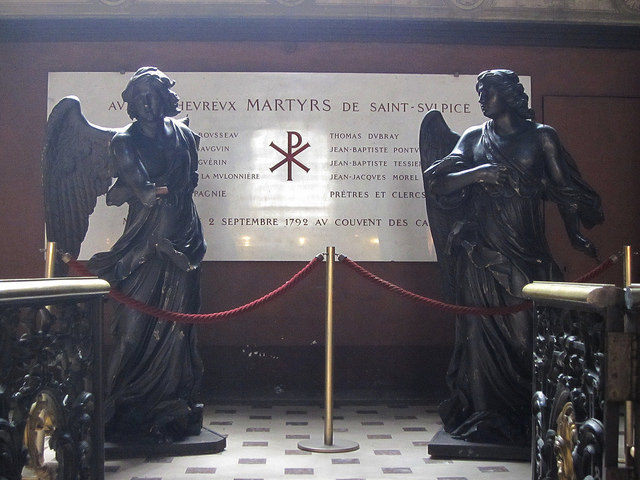
The (Really) Great Gig in the Sky
Originally published on Atlas Obscura.
When someone told me I had to see the light show at Il Gesu, I thought they were out of their mind. A light show is something you see after hours at a planetarium with a bunch of stoned teenagers, not at the mother church of the Jesuit order in Rome. And yet every day at 5:30 a small crowd gathers to have their minds blown, albeit in a way that has nothing to do with Pink Floyd.
I recommend going on a rainy, overcast day like I did. When I walked in, I found the church barely lit. A pale yellow gloom dulled the gilded columns and hung like a cloud over the massive nave. In the right transept, the mummified arm of St. Francis Xavier went practically unnoticed. Everyone was focused on the altar in the left transept dedicated to the founder of the Jesuit order, St. Ignatius Loyola.
At exactly 5:30, spotlights hit the gold altar and a recorded version of Kyrie blared through the speakers. The light reflected off all of the gold was nearly blinding after I had adjusted to the late afternoon gloom.
This was the Counter-Reformation at its finest. When Protestant reformers stripped away what they saw as excess and idolatry, the Catholic Church doubled down on art and ritual. They employed the great artists, architects, and theatrical designers of Rome to translate religious concepts into stunning Baroque visuals like this one.
Over the course of the show, an Italian narrator took us through the life of St. Ignatius, although Andrea Pozzo, the designer of the transept (along with one hundred or so assistants) had already done the real work back in 1695. Thanks to him, you didn’t have to understand a word to comprehend the importance and piety of St. Ignatius. In the painting above the altar, Ignatius was shown kneeling before Jesus in heaven. Below the altar, his large bronze casket glowed in an amber light.
As the music segued from Kyrie to Gloria, the narrator explained that the Jesuits were missionaries who specialized in converting people in particularly dangerous and far-away places. This is how they earned the nickname “God’s marines.” However, the visuals revealed a more complete truth, at least to modern viewers. In the bottom part of the painting over the altar, an angel tended to four allegorical figures representing the four corners of the Earth: Asia, the Americas, Africa, and Europe. I bet you can guess which of those allegorical figures looked most like the angel.
Then an allegorical figure of Religion lit up. She brandished a cross like a vampire hunter and appeared to be shoving two poor guys named Heresy off the marble podium with her foot (Heresy happened to look an awful lot like Protestant reformers Martin Luther and Jan Huss).
It was then I realized sculptures of Jesuits always seem to be stepping on (allegorical) people. Just look at the façade of Il Gesu over the side doors, and you can see St. Ignatius stepping on Heresy and St. Francis Xavier stepping on Paganism. Or look at this statue of St. Ignatius from Sant’Ignazio down the street (picture below). Perhaps it's fitting: though Jesuits were known for learning the language and customs of the people they converted, they also did their share of trampling anything in their way—including indigenous culture.
These uncomfortable truths were completely upstaged by the final act in the show. As the music swelled and the lights dimmed, a Baroque piece of stage machinery designed by Pozzo lowered the painting into a hidden slot beneath the altar. When the spotlights turned back on, they revealed a gleaming, larger-than-life silver statue of St. Ignatius where the painting used to be. (Unfortunately the statue currently on display is a silver-leaf replica, since the solid-silver original was melted down to pay off Napoleon.) The gold-and-lapis niche combined with the statue’s bejeweled chasuble to complete the altar in a way the painting didn’t quite achieve.
I only had a moment to take the statue in when the ceiling overhead lit up and showed us St. Ignatius ascending into heaven in forced perspective. The fresco was painted on stucco and wood applied over the ceiling coffers, which gave the impression of St. Ignatius busting straight through. Then the entire ceiling illuminated, filling the space with light and letting the gold leaf on every surface shine. The effect was overwhelmingly beautiful and about as subtle as the Kool-Aid Man entering though the wall.
But that’s the Counter-Reformation for you. Although Andrea Pozzo could have never imagined the addition of LED lighting to his masterful trick transept, I think he’d be pleased with the effect. It beats the planetarium anyway.


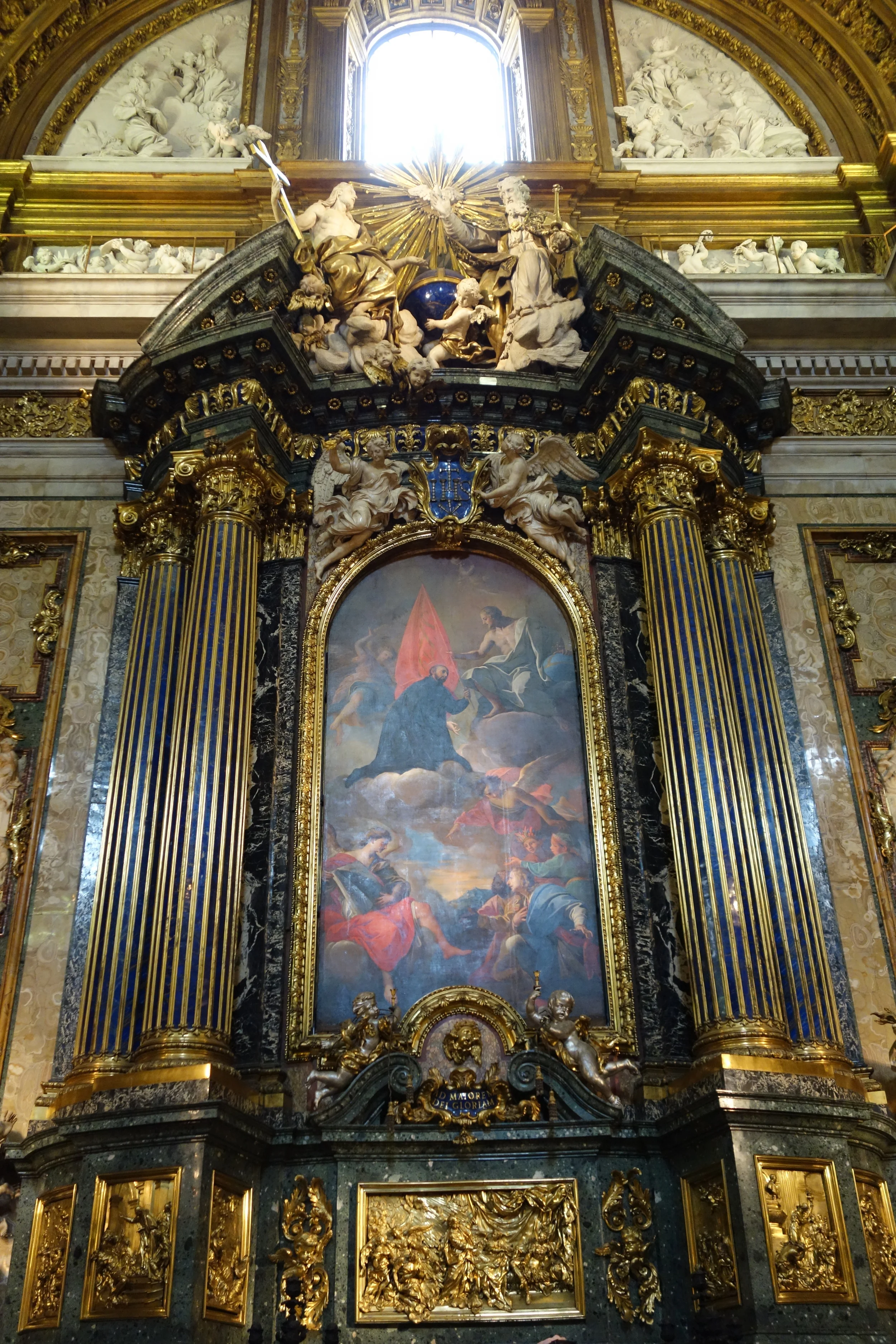
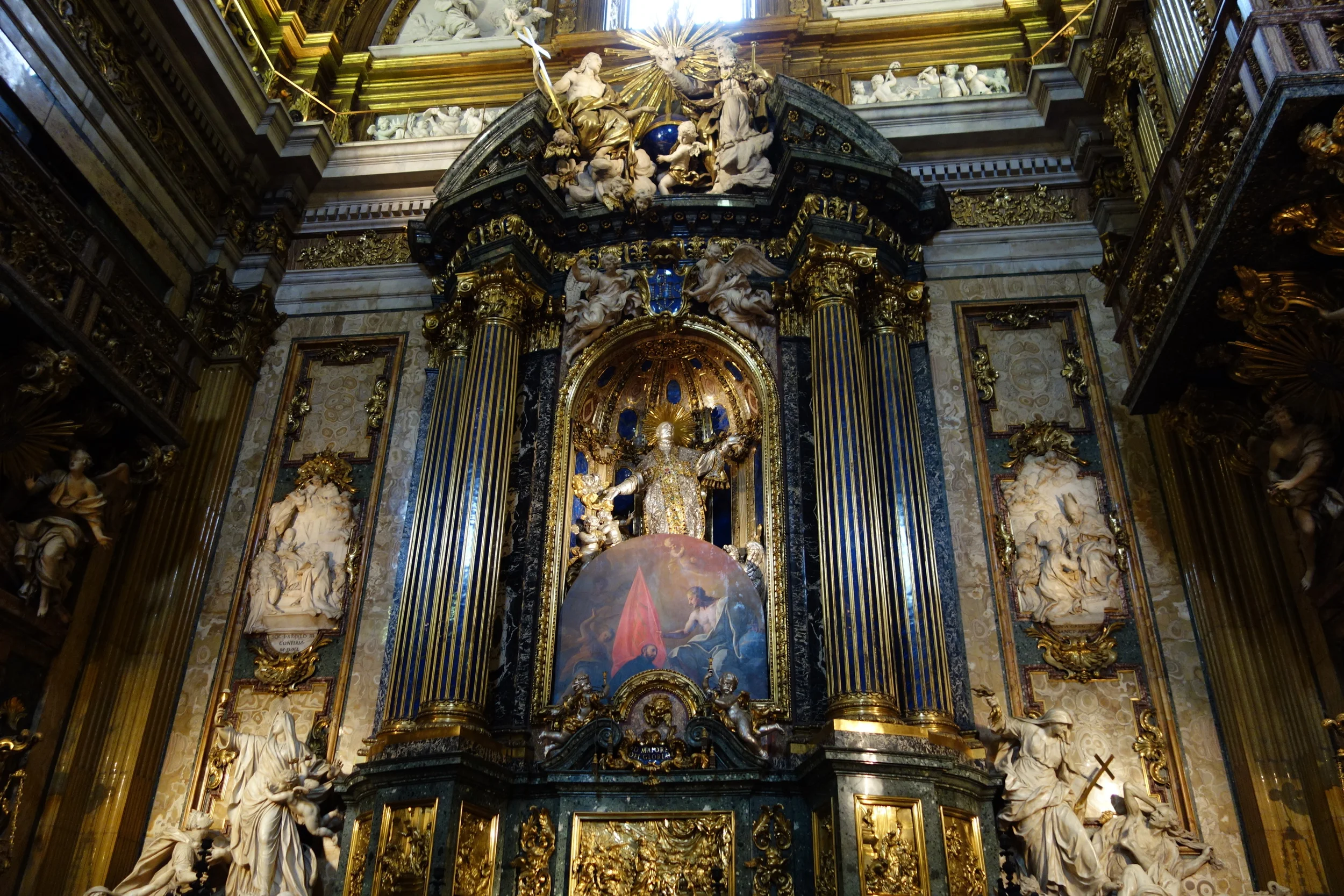
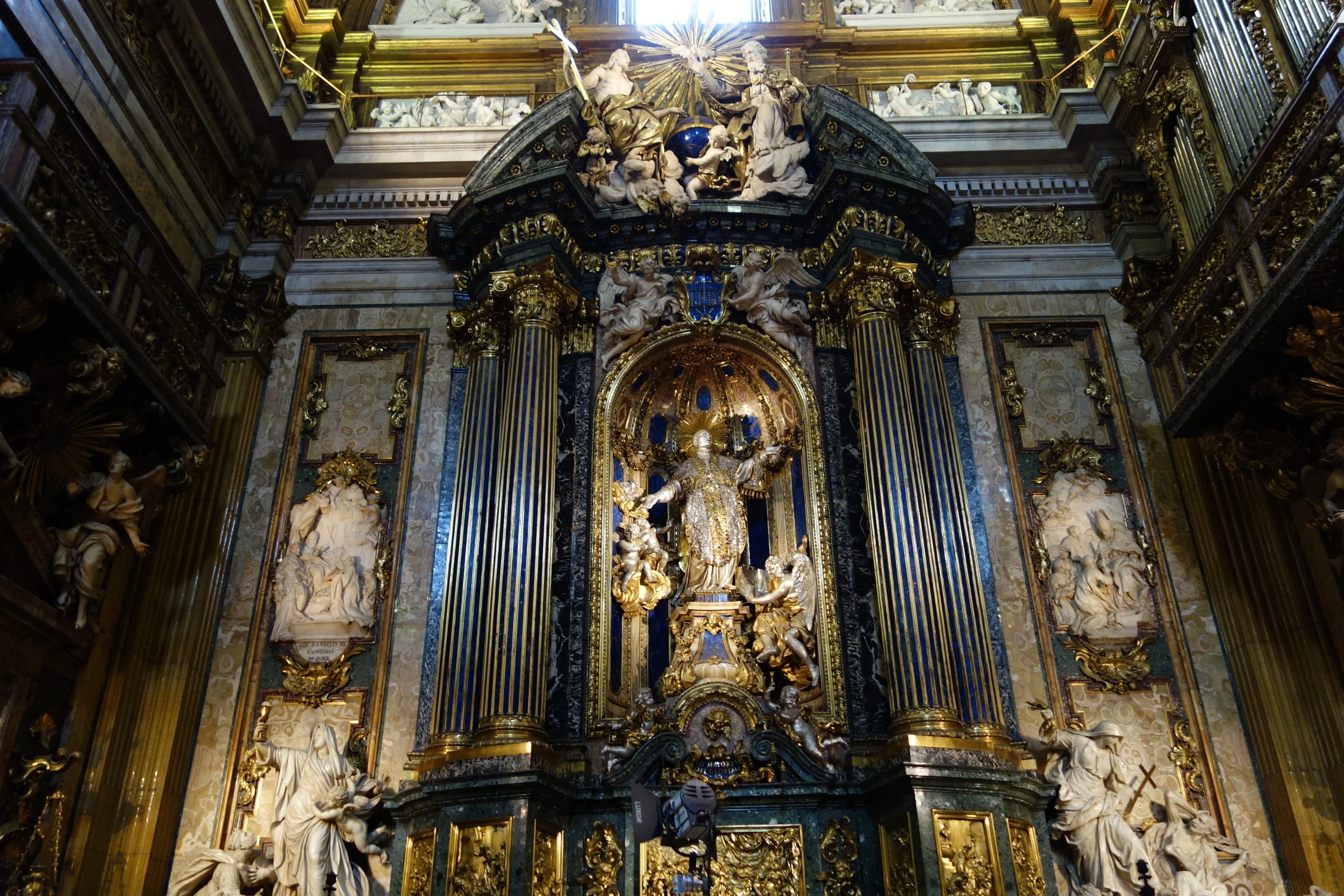
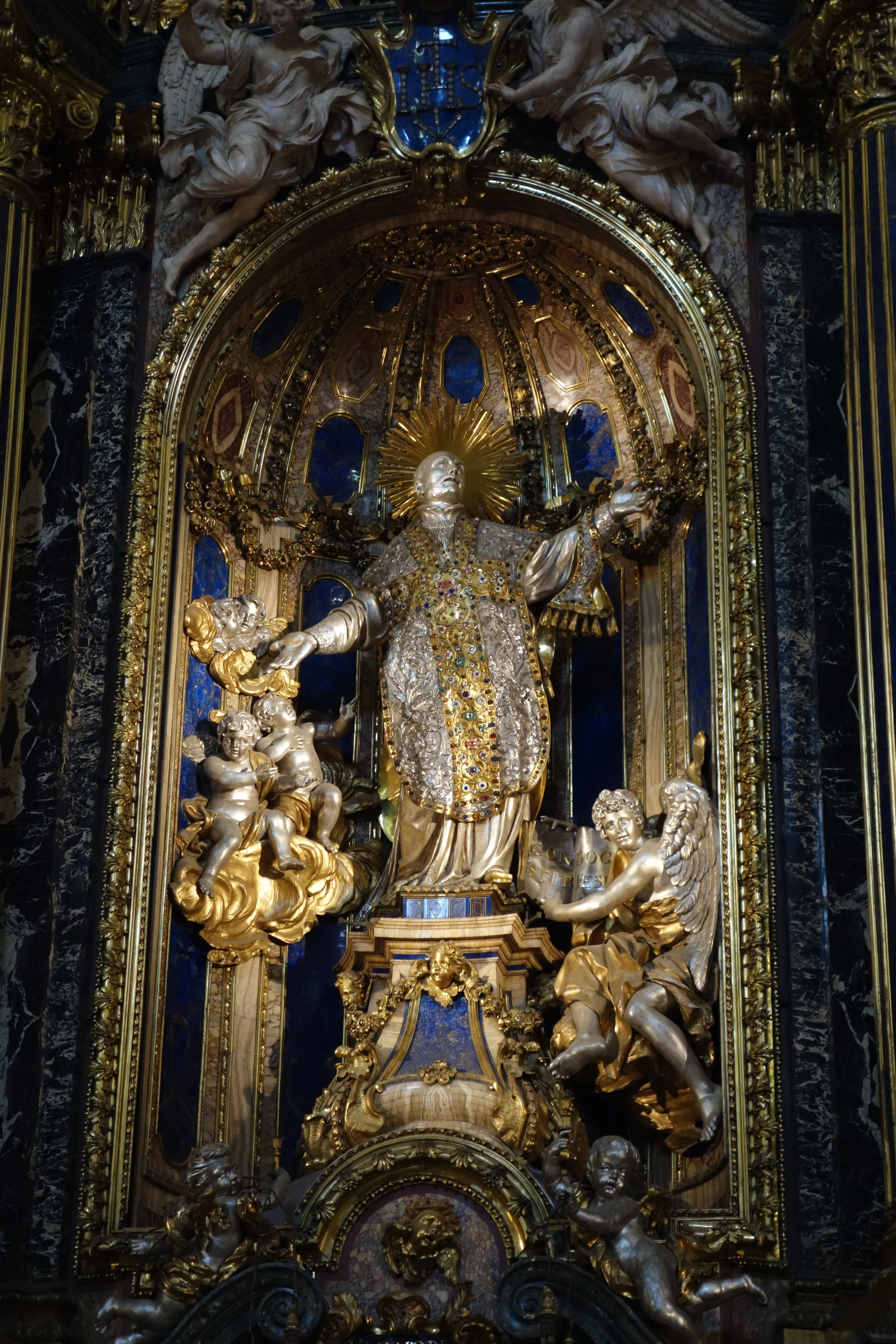
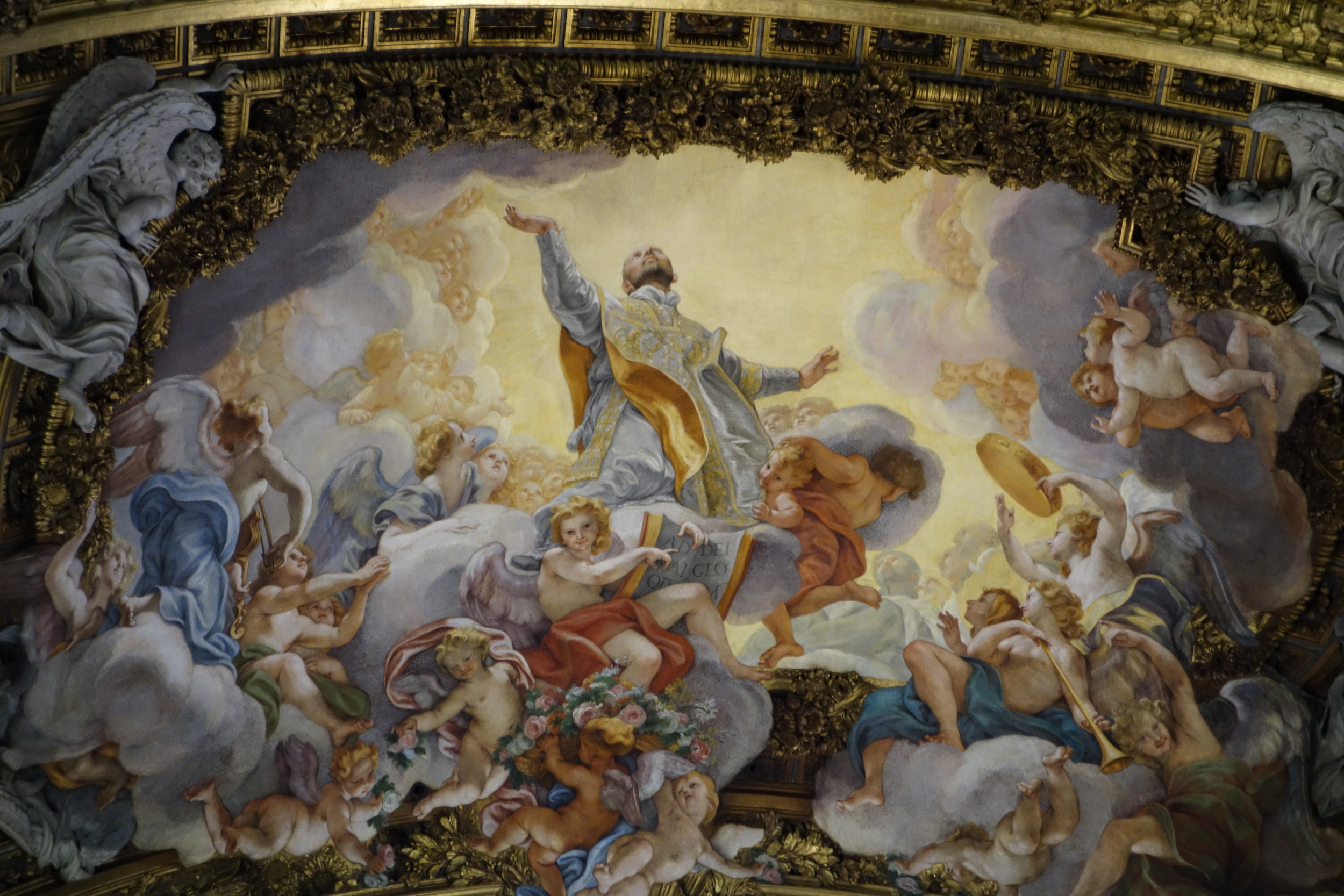
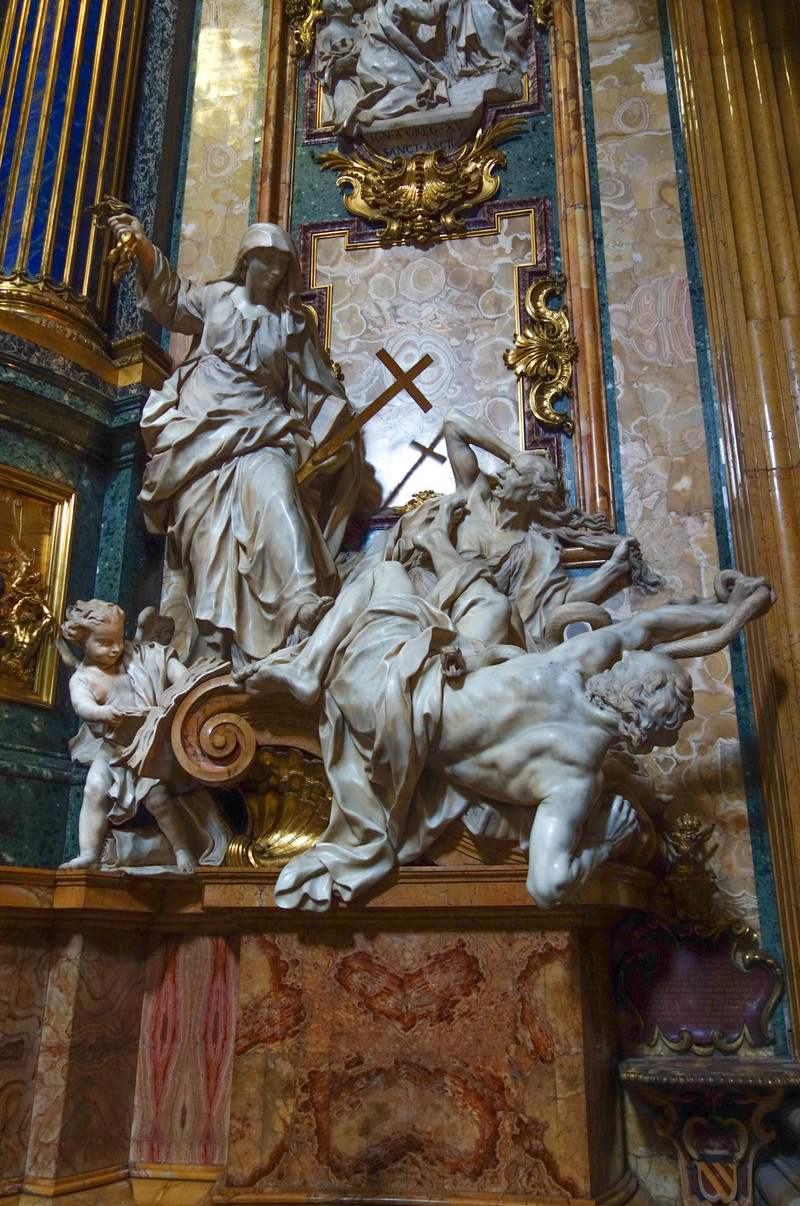


Buried Alive
Ok. Not literally. And certainly not those Capuchin monks pictured here. They were 100% dead when they were added to the crypt at Santa Maria della Concezione dell Cappuccine in Rome. The Buried Alive I’m talking about is the Sepolte Vive, the nickname for the Capuchins’ former sister convent which used to be just off Via Cavour.
Francesca Farnese founded the order in 1641. She was an unfortunate member of the powerful Farnese family, disfigured by smallpox and dumped in a convent when she was nine. Under her rule, the Sepolte Vive got their nickname by severing communications with the outside world once they took their vows. While their Capuchin brothers expressed their mortality and humility externally by building their famous crypt of bones, the sisters expressed it internally by living in silence and in a constant state of penance (as is so often the case with pious Catholic women).
There is one famously lurid account of a Sepolte Vive convent that came out of Vienna in 1869. It was later adapted into an American anti-Catholic pamphlet called The Convent Horror and described nuns slowly starving themselves into half-crazed skeletons who forgot how to speak. Though there maybe real mistreatment and madness at the root of the story, neither the Protestant publishers, nor the Catholic apologists who refute the entire account are to be trusted.
A more reliable account of their practices comes from Convent Life and Work, published in 1876. Though less salacious it still recounts some shockingly austere practices. For example:
“The death of a nun’s nearest relation, be it father, mother, brother or sister, is made known to the superior alone, and she in her turn announces it, not to the bereaved one, but to the whole sisterhood, in this manner: They are all assembled in the community-room, and admonished to ‘pray for the soul of the father or mother’ (as the case may be) ‘of one among their number.’ To the day of her death the nun never knows how near and dear by the ties of Nature may have been the soul for which she has prayed every day since the announcement was made.”
Today there’s nothing left of the convent. It was demolished when Via Cavour was built. The Capuchins still have a sister convent at Corpus Christi alla Garbatella, though the name Buried Alive no longer applies.
(Photo of the Capuchin crypt from a postcard.)
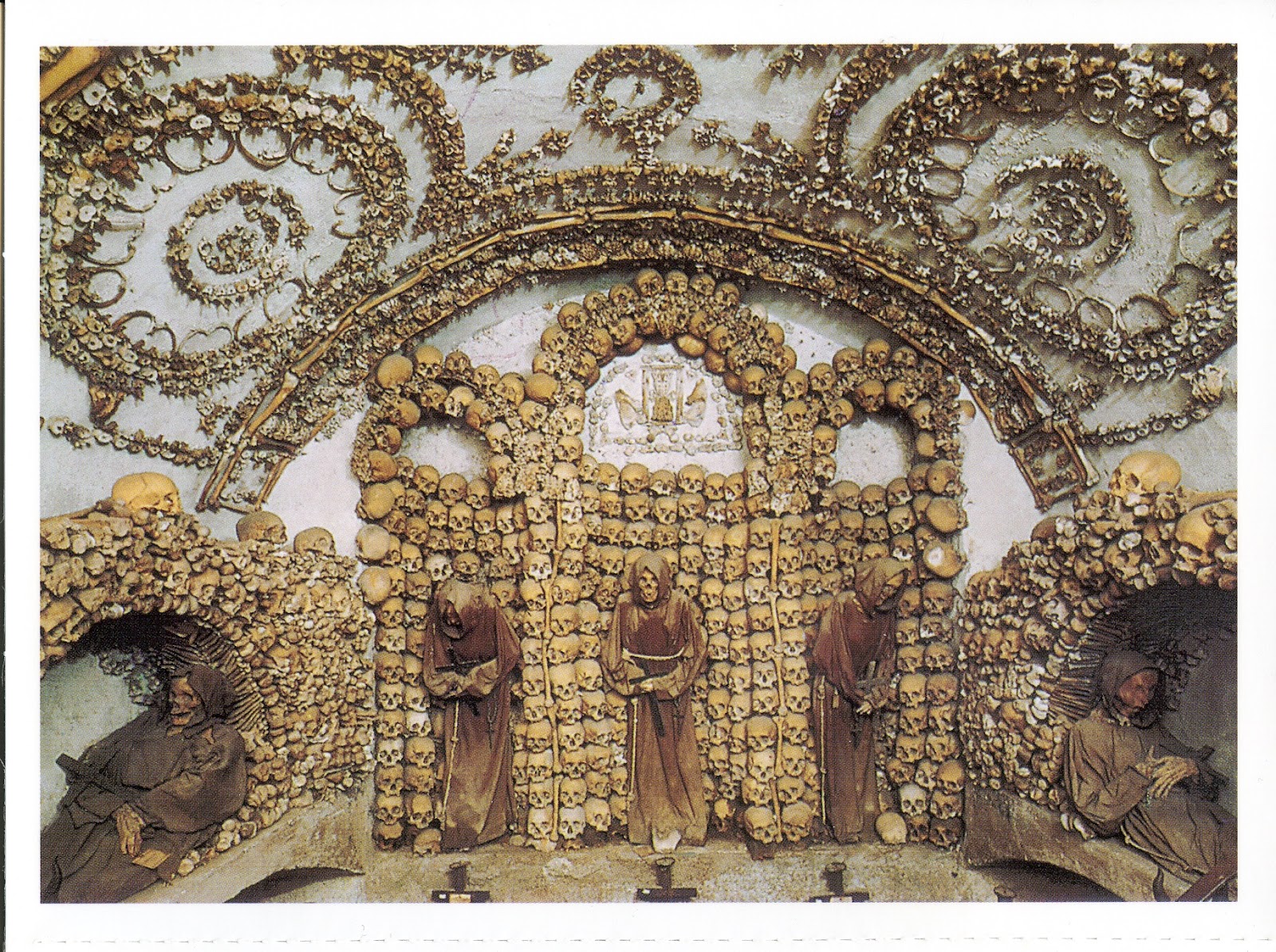
The Thief's Severed Arm
Originally published on Atlas Obscura.
When you step into the nave of St. James the Greater in Prague (or Kostel Sv. Jakuba Vetsiho), look up to your right. There’s a withered black arm hanging on a hook on the ceiling. Unlike the bones of saints one frequently finds in Catholic churches, there’s no reverence in its placement there. Quite the opposite, it’s hacked apart — tendons and skin dangling in the air where the shoulder should be. No one knows exactly when the arm was hung there, but the story of how it got there is legendary.
A long time ago, the story goes, probably around the 16th or 17th century, a man entered the church at night. He crossed the same threshold that groups of tourists still cross today, and just like them, he marveled at the beauty of the church. Precious stones and gold glinted in the candlelight, but the jewels adorning an icon of the Virgin Mary caught his eye. Certainly those would be more useful to him than to a statue. He climbed up and pried one loose.
The icon broke her pose and wrapped her cold stone hand around his arm. She kept him there until morning when a group of monks discovered him. They tried to free him. Perhaps they even forgave him. But it was no use. The icon remained unmoved. With all other options exhausted, they were forced to ask the parishioners for help. The church was, after all, near the butchers’ guild.
Amputation in those days was a crude and unanesthetized procedure even when performed by a doctor, let alone a group of butchers. The screams of the thief were probably heard for blocks given the excellent acoustics that make the church a popular concert venue. But when it was all over and the arm was removed, amid all the blood and carnage, the icon dropped the limb and returned to her serene pose.
The butchers hung the arm in the nave as a warning. It probably would have been there for a century, give or take, when Count Jan Václav Vratislav of Mitrovice died of dropsy in Vienna. A massive baroque monument was commissioned for the church and carried out by Viennese architect Johann Bernhard Fischer von Erlach. The only problem was, when Count Vratislav arrived back in Prague, he wasn’t quite dead.
After his funeral, horrible noises came from the tomb for days. The parishioners, thinking that the count’s soul couldn’t find rest, blessed the tomb and prayed for him until the noises suddenly stopped.
Today when we hear buried alive legends we usually comfort ourselves with thoughts like “perhaps it was just the corpse decomposing and releasing gas.” But that doesn’t explain what workers found in a subsequent renovation of the church. Somehow, the count had gotten out of his coffin but was trapped by the massive stone monument.
The last strange occurrence at St. James happened about 50 years later. The painter Vaclav Vavrinec Reiner was hard at work on what is still the main altar piece. Every morning he walked under the withered arm of the thief in the nave and began his workday with the count’s skeleton unknowingly lying just beneath the stone nearby. The Black Death was still ravaging Prague. Many of the parishioners and clergy of St. James died, including Reiner’s family and friends. So many people around him died that people started wondering if the altar piece was protecting him. Their suspicions were only confirmed on the day he finally finished the piece and discovered the telltale welts of the plague. He was dead by the following day.
Photo credits: 1. Mo Costandi, 2. Me, 3. Christian Bredfeldt, 4. Charles Hoffman.
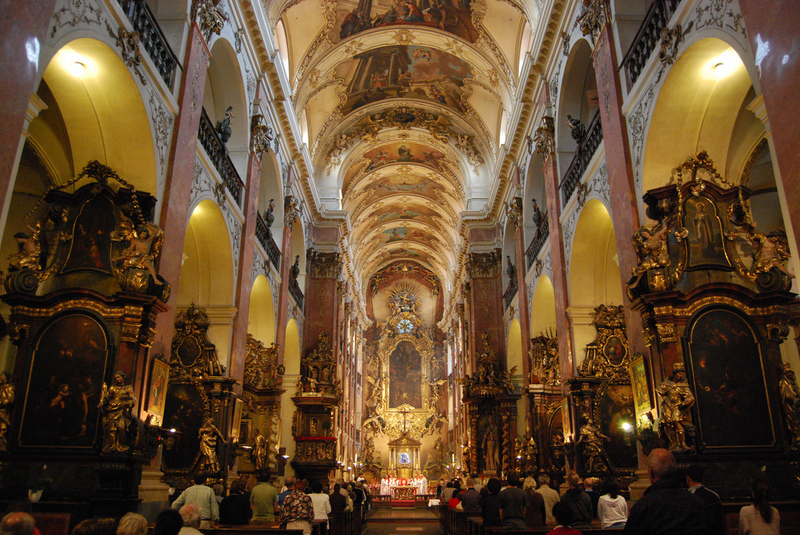
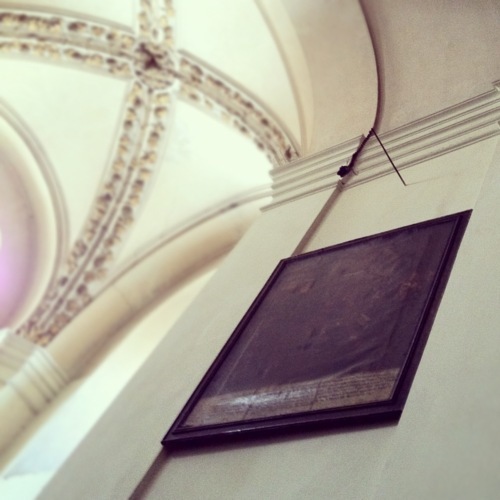
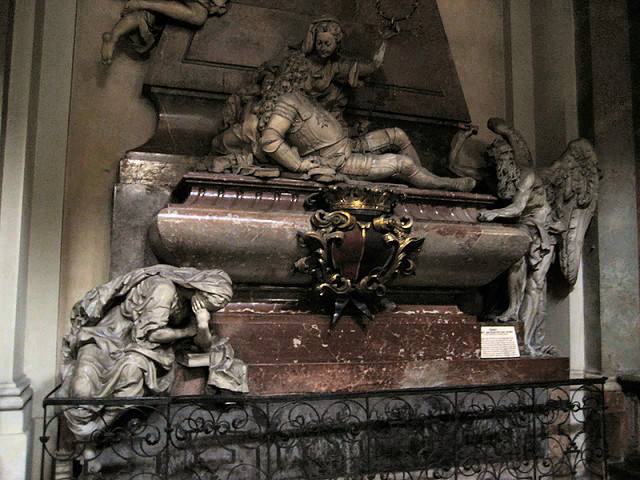
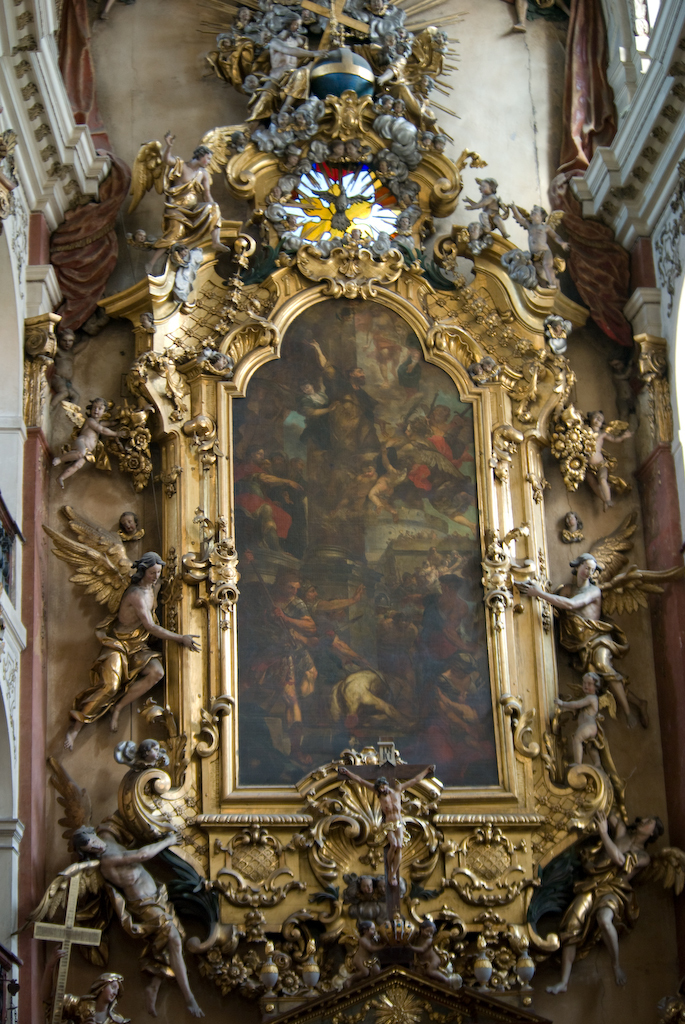
Bless Thou! Thou Art Translated!
Saint-Leu-Saint-Gilles is just a small parish church. It sits on a grimy street in Les Halles, uncomfortably sandwiched between dozens of porno shops and places to buy knock-offs. It’s not particularly grand but it is old. The little shield sign that designates historic places in Paris only confirms that the church is, in fact, as old as it looks. You won’t find it listed in Frommers, or Lonely Planet, or the Blue Guide or even Secret Paris.
I showed up by chance one weekday morning after visiting St. Eustace. During my visit the morning clouds turned into a full-on downpour and of course my umbrella was back at the apartment. I saw the towers of Saint-Leu-Saint-Gilles and thought I’d give it a shot.
It was dark and locked. I considered running down the street to a cafe and waiting out the rain with bad coffee but before I could turn away, a man stopped me. I thought he was going to ask for money but instead he said, “You’re here to see the relics?”
I was shocked, my research hadn’t turned up any mention of relics here. But being “here to see the relics” pretty much describes most vacations for me. Of course I said yes.
He pulled out a ring of keys, unlocked the front door and led me to a little side door under the altar.
“Here is the crypt.”
And just like that he left. I found myself alone with the relics of not just any old martyr from antiquity, but of St. Helena. How did a Roman Empress wind up here?
If you’re interested in relics, you’re probably well aware of St. Helena, the woman credited with spreading Christianity throughout the Roman Empire. Though she raised her only child, Constantine the Great, at the court of the notorious martyr-maker, Diocletian, she converted to Christianity at the age of 60. In her 70s she traveled to the Holy Land. With unfettered access to the imperial treasury, she set about restoring old churches, building new ones, founding monasteries and ripping down pagan temples.
During one of these temple-removals she came across her most famous discovery: the True Cross, which is still venerated today in reliquaries all over the world (notably in Santa Croce in Rome which was built around her imperial palace). She gathered nails from the crucifixion, the rope Jesus was tied with, Jesus’ tunic, and pieces of his tomb. She took her treasures back to Rome.
Helena died in Rome in 330. She was originally buried in a mausoleum you can still visit today. It’s right off the Berardi train stop. Of course now it’s empty. As is her elaborate sarcophagus in the Vatican Museum. So where are the relics of the first relic hunter?
To answer that, let’s start back at the Carolingian period again. As I mentioned in the last blog post on St. Genevieve, this was a time of consolidation and greater conformity within religious orders. Practically speaking, this translated into more monks traveling to Rome. Some of those monks noticed that Rome had an awful lot of priceless saint’s relics lying around and no one was overly particular about documenting exactly what was where or even locking them down (as is sometimes still the case). During this time, a relic could still bring prestige to a monastery and support a pilgrimage industry in a small town, not to mention the miracles it could work. Thus, stories of furta sacra, or holy theft, began springing up all over Europe.
What makes holy theft different from plain old theft is in part the belief that the relics have some say in where they rest. The relics of St. John Chrysostom, for example, could not be moved by any man or animal until the ancestor of the saint’s persecutor wrote St. John a letter apologizing for his persecution. St. Johns relics then allowed the translation, which is what the formal process of moving a relic is called.
The body of St. Helena must have wanted to come to France. A monk named Theogisus returned to his monastery in Hautvillers on February 7th, 840 carrying a portion of her body he stole from her tomb in Rome. Upon finding out about the theft, the Pope didn’t order the return since St. Helena had clearly consented. (The rest of her body was later enshrined in Santa Maria in Aracoeli in Rome in 1140 where you can still find it in an urn.)
From 840 to 1789 this piece of St. Helena stayed in the monastery at Hautvillers. While somewhat remote, it wasn’t a bad place for an empress since it was here Dom Perignon perfected champagne. When the French Revolution broke out the monastery was destroyed but the cellarer, Dom Grossard was able to hide the relics so they wouldn’t be desecrated like those of St. Genevieve.
By the mid 1800s it was safe to venerate relics in France again but Dom Grossard was now quite old. He wanted to ensure that after his death the relics of St. Helena would continue to be venerated and draw pilgrims. Fortunately, the last abbot of the monastery at Hautvillers was now Bishop of Paris. The two men arranged for the relics to be translated to a church were the Knights of the Holy Sepulchre were reconvening after being suppressed during the Revolution. The Knights took St. Helena as their patron, so it was fitting she would rest in their church, Saint-Leu-Saint-Gilles, in the middle of Paris.
These days, the church and the Knights are separate entities, but the relics remain in the church, largely unknown to Parisians, let alone tourists. While the relics seem to trace directly back to Helena’s death in Rome, the complete story is never so simple. Scammers, opportunists, and wishful thinkers have plagued the history of relics. This was particularly true in the days of furta sacra. Plenty of unscrupulous Roman merchants were eager to offer deals on the holy dead to traveling monks hesitant to raid the churches and catacombs themselves.
This, combined with the difficulty of communicating over long distances and the fact that bodies were divided into infinitely smaller pieces helps explain why so many saints have duplicate body parts. Helena has a whole second body, which turned up in Constantinople. Those relics were partially translated to Venice in 1204 despite the fact that she was apparently already resting in Rome and Hautvillers by then. To this day Trier and Rome both still claim to possess her head.
In the past, it was hard to prove the absolute legitimacy of a relic. St. Helena initially discovered three crosses so she had a dying woman brought in to touch each one. After one cured her, Helena pronounced it the True Cross. According to some reports, Theogisus stepped into boiling water without being burned to prove the body he brought back was really St. Helena’s. Today we have carbon dating, DNA analysis and a host of other verification tools at our disposal yet there’s little interest in using these to trace the bodies of the holy dead, even among their most ardent defenders. But it isn’t simply a case of the faithful ignoring evidence that the objects in their shines might be fakes. Many Catholic theologians are aware of the diaspora of relics but use a test similar to the one that’s been used since Helena’s time: If it looks like a relic and performs like a relic (by drawing in the faithful and working miracles) then for all intents and purposes, it’s relic.
Sources
“A City Of Saints: The Forgotten Reliquaries Of Paris.” Road to Emmaus, Vol. VII No. 2 (25). N.p., n.d. Web. <http://www.roadtoemmaus.net/back_issue_articles/RTE_25/A_CITY_OF_SAINTS.pdf>.
Geary, Patrick J. Furta Sacra: Thefts of Relics in the Central Middle Ages. Princeton, NJ: Princeton UP, 1990. Print.
Harbus, A. Helena of Britain in Medieval Legend. Suffolk, UK: D.S. Brewer, 2002. Print.
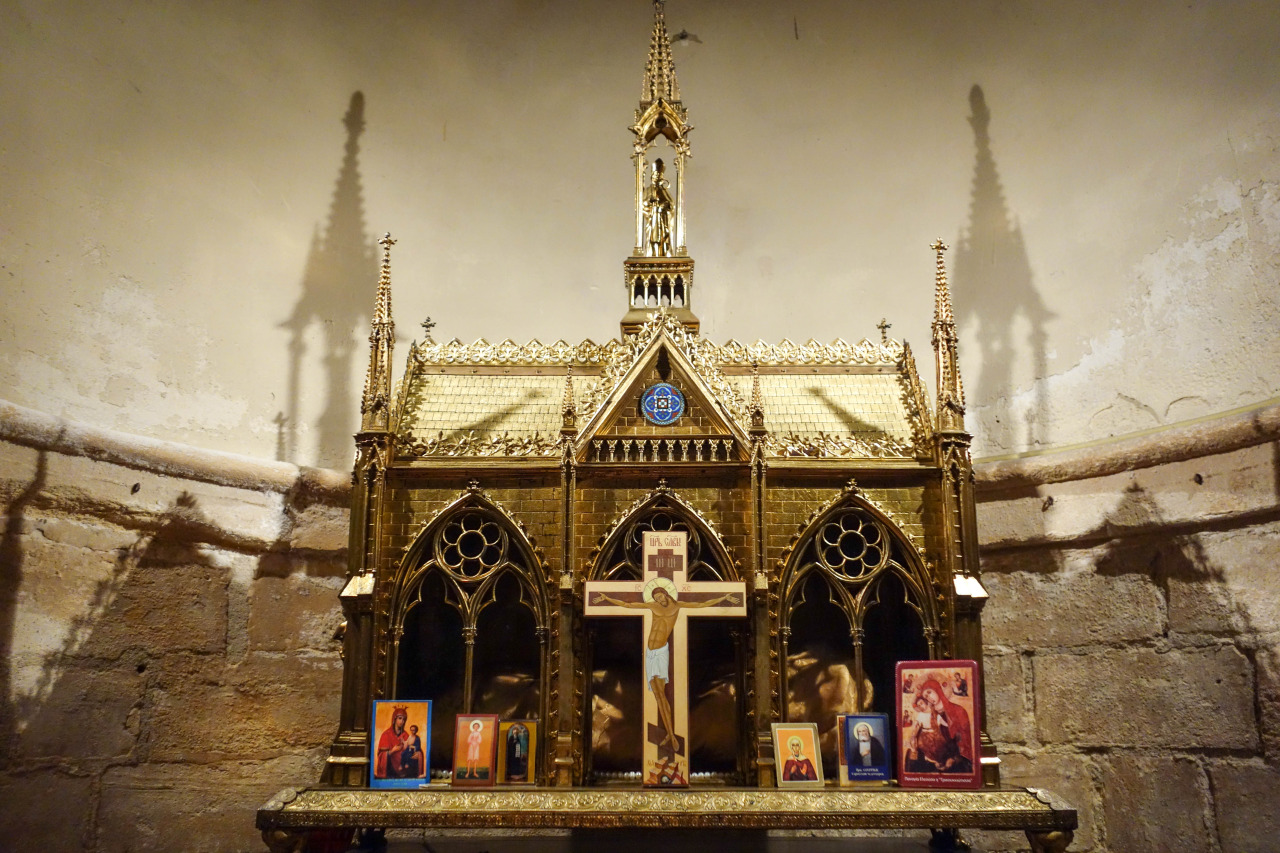
They Don't Make 'Em Like They Used To: The Flying, Stigmatic Saint from the 1960s
I went out to look at holy relics and I found myself staring at a dirty white gym sock. The sock is housed in a church across the street from Macy’s Herald Square in New York City. It’s in a reliquary instead of a hamper because it’s been stained with the blood of St. Pio of Pietrelcina, aka Padre Pio- Italian priest, stigmatic, and alleged psychopath. He died in 1968 and in some parts of Italy he is more popular than Christ Himself.
To the rational mind, saints from the middle ages are fairly comprehensible. They’re the relics from the bad old days when people lived miserable, superstitious, and probably stinky lives. We picture them worshiping a God of the gaps. A God who seemed to enjoy giving humans the ability to live on a pillar or plow a field really fast as much as He enjoyed healing the sick and feeding the hungry.
We have little need for the supernatural anymore. Modern saints like Elizabeth Ann Seton and Mother Cabrini ran schools and hospitals. They certainly did not fly. Supernatural feats are best left to saints whose relics are collecting dust in obscure Sicilian towns (or so I thought). But here was a shrine dedicated to a man who seemed inextricably tied to this older idea of sainthood while living in a post-Vatican II world.
Padre Pio claimed enough supernatural powers and miracles to canonize 20 medieval saints. He could read minds in the confessional and identify those possessed by Satan. He cured the incurable. He could be in two places at once, levitate, communicate with the dead and tell the future, sometimes while battling a 118-degree fever. He had the odor of sanctity, a supernatural smell of roses that emanated from his body. He could send that smell to far-away followers. He bore the stigmata, the wounds of Christ, yet was tortured by Satan in the form of a black cat or nude girls. Sometimes Satan would tear his clothes off and beat him until he could hardly move but other times he would disguise himself as his spiritual director or the Virgin Mary. His visions were so intense and so numerous, it became difficult for him to discern which were good and which were evil.
The Vatican was incredulous. They denied the supernatural claims as accusations of sexual impropriety swirled around the charismatic priest. Brother Agostino Gemelli, a trained physician and neuropsychiatric scientist was sent from Rome to San Giovanni Rotondo to investigate the stigmata. He infamously called Pio “an ignorant and self-mutilating psychopath who exploited people’s credulity”. Between 1923 and 1933 Pio was censured by degrees until he was finally forbidden to say public mass or interact with anyone seeking spiritual guidance.
As power in Rome shifted, so did Pio’s standing within the church. Pope Pius XI called him “a noxious Socrates, capable of perverting the fragile lives and souls of boys” but then reversed his opinion and lifted his censures on him. Pio found a powerful ally in his successor Pope Pius XII. But by the 1940s new accusations of fraud and corruption tarnished his reputation again and Pope John XXIII had the legendary “Maccari dossier” compiled. It was a 200-page report compiled by Monsignor Carlo Maccari detailing the allegations against Padre Pio, particularly those charges of licentiousness brought against him by the local women. At the time it was thought to be a permanent roadblock to sainthood but it was never published in full.
Through all of the controversy, his popularity never waned and in 1947 he heard the confession of a young Karol Wojtyla. When Wojtyla became an archbishop, he asked Pio to intervene on behalf of a friend with throat cancer. The friend recovered 11 days later and Wojtyla went on to become Pope John Paul II.
The rest is (recent) history. Pope John Paul II canonized him in 2002 in front of a crowd of 300,000. In 2008 his incorrupt body was exhumed and placed on display in a gold-plated Renzo Piano-designed crypt- another startling juxtaposition of modern and medieval. 7 million pilgrims visit every year despite the continued intrusion of the modern world. They seem unfazed by the reluctant admittance that his odor of sanctity was found to be eau-de-cologne or the new evidence found in the Vatican library that seems to indicate he kept his stigmata fresh with carbolic acid. In some ways, it’s too late. Though the Church seems reticent to use the title of saint in his name, his sainthood is backed by papal infallibility. And as journalist Vittorio Messori said, “If we decide to send Padre Pio back to the Middle Ages, truckloads of people will have to go with him.”
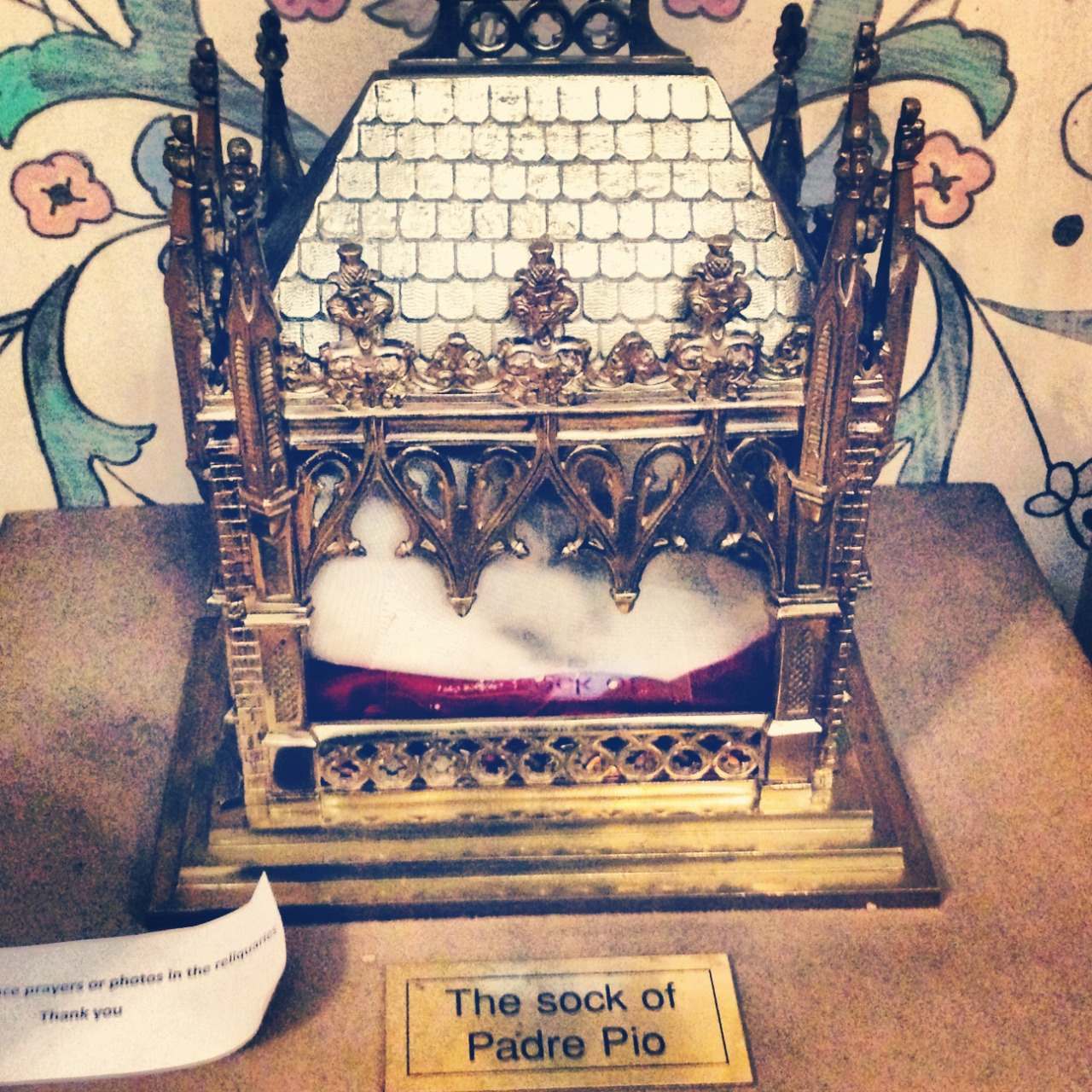
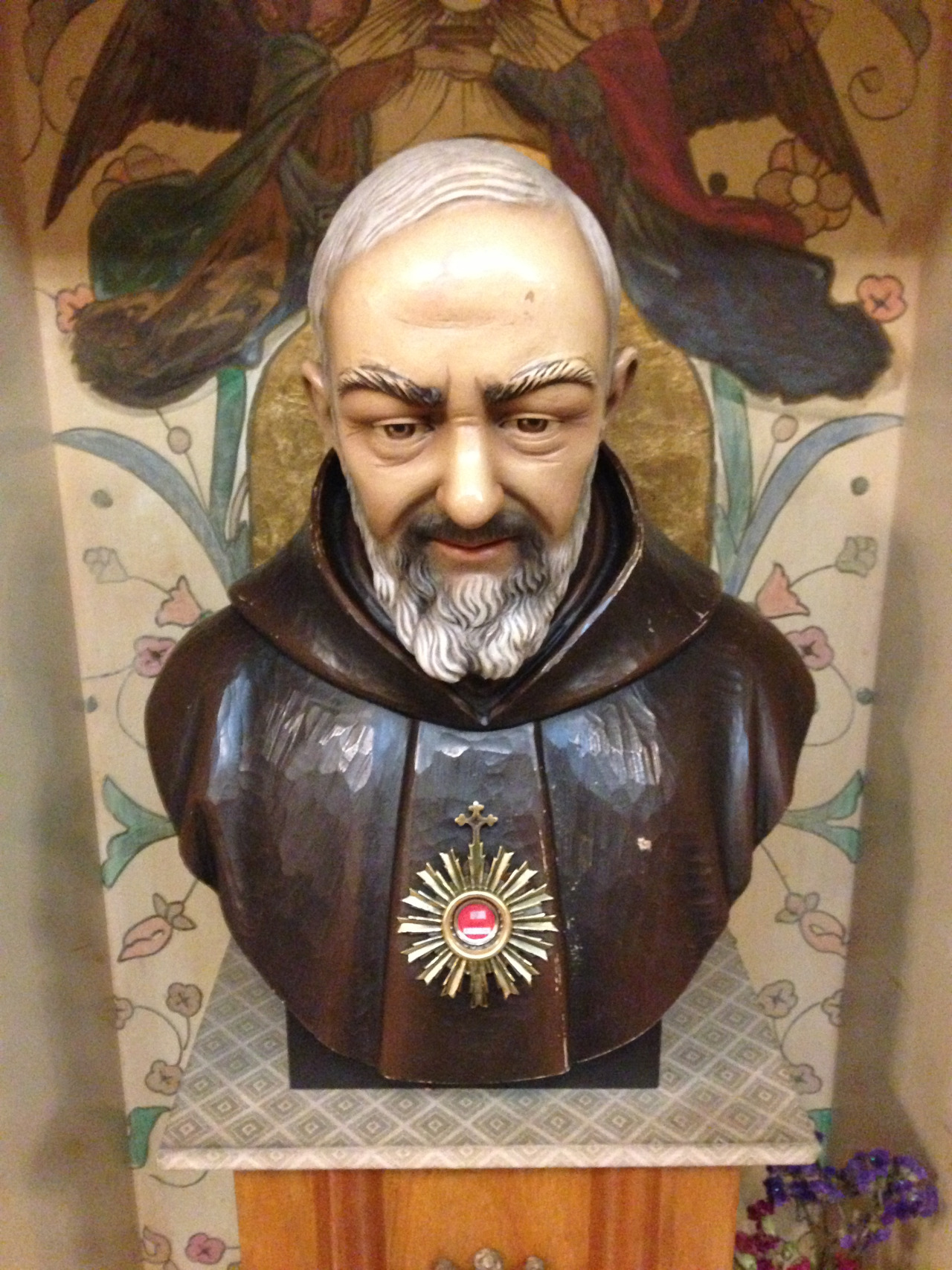

The Other Kind of Mortification
I never thought I would retell this particular story but I stumbled on an interesting tale. So in the interest of documenting Catholic lore, let me tell you about the time my skirt blew up over my head in the Piazza del Gesù, right outside of the church.
Just to be clear, it was nothing like Marilyn.
Instead, despite my frantic grasping, one of my highly un-sexy church skirts blew up in front of commuters, policemen, tour groups and children. I was not wearing what I would call my best underwear. It was week three in Rome so it was more like 19th in the line of underwear succession. The only silver lining to this story is that at least my skirt blew up high enough to cover my face.
As it turns out, that particular piazza is notoriously windy. It’s so windy that the French writer, Stendhal, recorded an anecdote he heard about it. Here it is in English, as mentioned in Lippincott’s Magazine of Popular Literature and Science, Volume VIII, 1871.
The same church of the Jesuits has a bad name of long standing: nearly fifty years ago a witty French writer tells a story which he heard at Rome in orthodox days. The devil and the wind were taking a walk, and came to the Jesuit’s church. “Oh,” quoth the former, “Ive a little business to look after in here: do wait for me a moment;” and stepped into the church. The devil never came out, and the wind is waiting for him still on the breezy site near the Capitol.
Now after being raised by a Jesuit and given a good Jesuit education, Stendhal never missed an opportunity to to make a jab at their expense. Of course he thought the devil would be eternally busy at their mother church, Il Gesù.
But the wind does seem to wait there, taking advantage of women in skirts and people with umbrellas as if to impress the devil should he walk out of the church at any moment.
So stick it to the wind. When you visit Il Gesù, wear pants.
(Image from Wikimedia by Alessio Damato.)
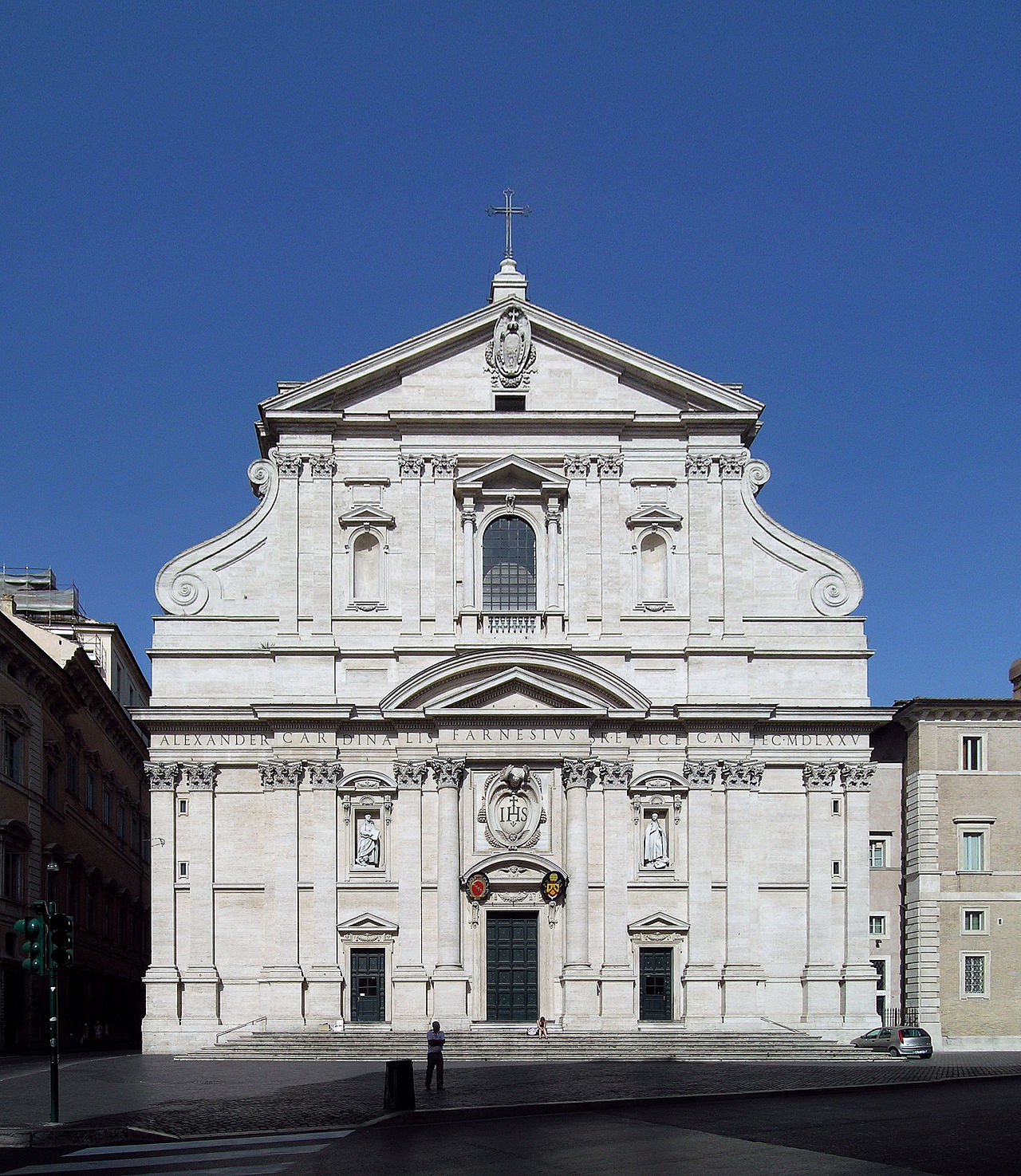
St. Ursula and Her 11,000 BFFs
The story I’m about to tell you is highly suspect. It is so suspect that even the Church admits it’s suspect and removed St. Ursula’s feast day from the calendar in 1969. That being said, I don’t believe in letting the truth stop a great story.
For me, the story starts in a dim chapel in the church of Saint-Severin in Paris where you can find a glass box containing a number of bones wrapped in red ribbon. They’re labeled “ex sociis santa ursulae”, meaning “from the allies of Saint Ursula”.
Saint Ursula as we know her probably originated from a 9th century sermon, which documented and expanded unsupported local lore about a Romano-British princess who died around 383. She was betrothed to a pagan prince but before she would marry she stipulated that she must take a 3-year tour of European holy sites, including a pilgrimage to Rome with 5 or 8 or 11 virginal ladies-in-waiting. At the end of this tour, she landed in Cologne where the Huns martyred her and her entourage.
There are dozens of variants on this basic story that alter where she was from, where she went, and whom she was with. Sometimes they include miraculous details like crossing seas in one day, visions of martyrdom, and angel-sherpas in the Alps. However, no record of Ursula, nor the pope they say she visited in Rome can be supported by historians- even those of the time like St. Gregory of Tours, who certainly had no objections to including some credulous accounts of miracles in his histories.
The most noticeable variation in the story dates back to 922 when the 11 virgins became 11,000. The Bishop of Cologne mistranslated (or perhaps zealously embellished) the Latin abbreviation “XI. M.V.” into “undecim millia virgines” (11,000 virgins) instead of “undecim martyres virgines” (11 virgin-martyrs). But it improved the story and it stuck.
So they accidentally invented more martyrs than there were in the original story (which was probably invented anyway)… that’s interesting, if a little dry. Here’s the big twist: there are, according to church records, over 30 tons of human bones on display all over Europe that purport to be the remains of these virgins- like the ones in this box. In Cologne you can even visit the Golden Room in the Basilica of St. Ursula where bones line every wall and skulls are kept in golden reliquaries. Local lore has even adapted over the years to explain why the bones of men and children have turned up here (though in 1835 a surgeon had to leave town after suggesting there might be a few mastiff bones too). Clearly they don’t believe in letting the truth stop a great story either.
But while we’re on the topic of huge bone collections and surgeons, step outside of Saint-Severin into the courtyard and see a little bit of obscure Parisian history. The arcaded gallery is what remains of a charnier, and the courtyard is a former mass grave. It’s no longer in use. Due to wars and epidemics (sometimes caused by cemetery over-crowding itself), Paris has an odd history of relocating the dead. But here, in the 15th through 18th centuries the wealthy were buried in the private niches and as the mass grave overflowed, bones were moved into the hollow spaces inside the walls of the charnier. That’s actually the primary difference between a charnier and a charnel house. A charnel house is intended to accommodate a large number of bones while a charnier includes space for private tombs and epitaphs, as well as some additional bone storage. As for its relevance to surgery, in 1474 the first gallstone operation took place in the charnier on a prisoner condemned to death. King Louis XI offered him his freedom if he lived though the experimental procedure, and he did, but I bet he doubted the odds when they told him they were going to operate right in the graveyard.
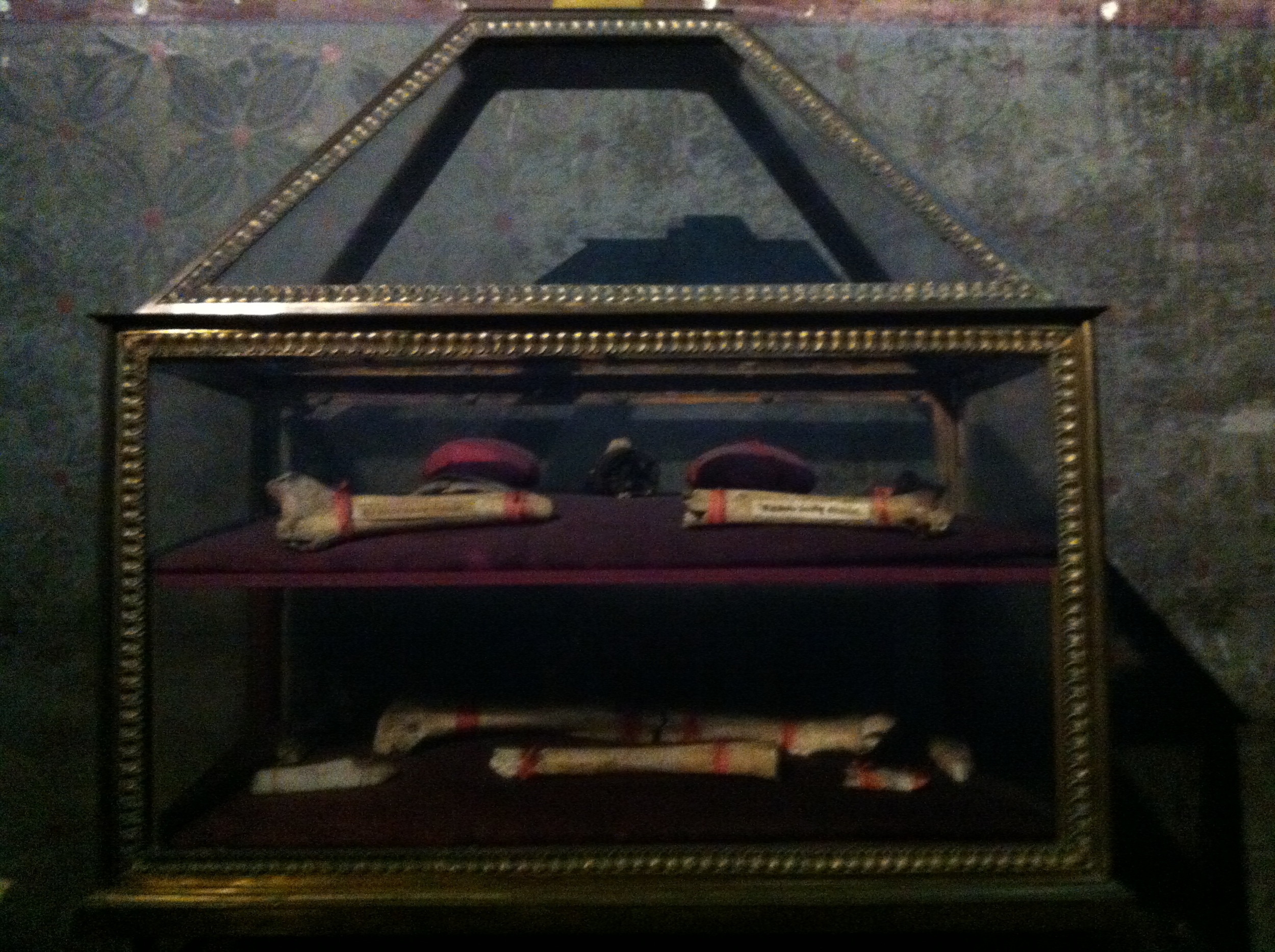

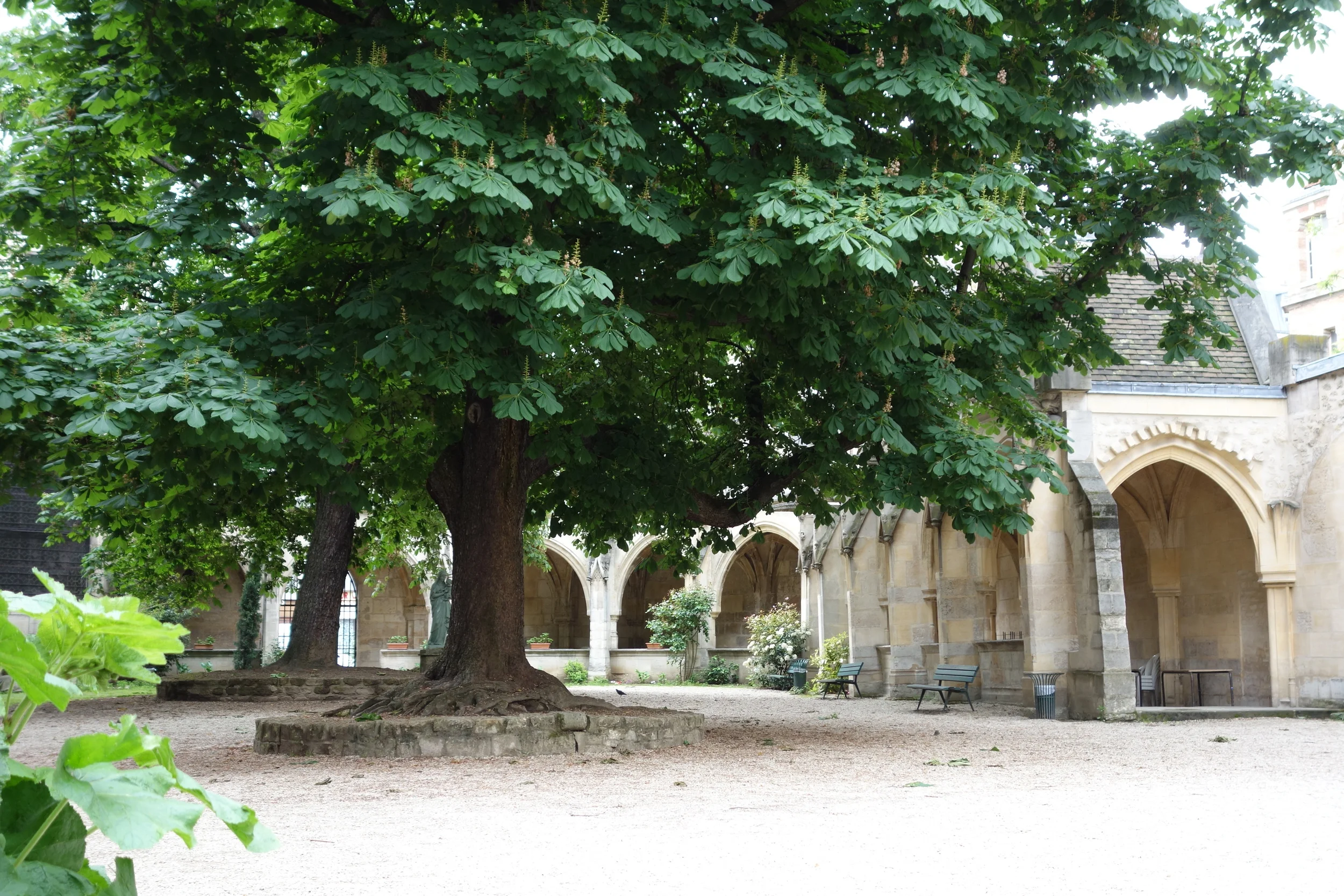
Decoding Our Lady of Sorrows in Mexico City
Our Lady of Sorrows (Virgen Dolorosa) is a common representation of Mary in Mexican churches. Devotion to her came from Spain during the colonial period and this is still reflected in her clothes- she’s usually dressed as a wealthy Castilian widow.
During Holy Week these icons take on a much more significant role- after Good Friday Virgen Dolorosa is frequently known as Virgen de la Soledad since she was alone after Jesus’ death. She’s often the only uncovered icon in churches after all other artwork has been veiled in purple. Sometimes she’s moved outside the church to a special altar.
This altar was set up in the Museo de El Carmen and included information on the meanings behind the special Holy Week decorations you see around town. This was the only altar I saw that was this elaborate. Most had a few of these symbols around the icon with women selling juice, water or flowers.
Lilies (pictured): The virginal purity of Mary.
Fresh Camomile (variation): Represents humility (in the green stalks) and beauty of body and soul (the yellow flowers). Bunches of chamomile were more common around the city and were delivered in bushels to the cathedral.
Bitter Oranges: Mary’s sorrow. Sometimes these are also painted gold to symbolize joy in Jesus’ resurrection.
Gold Balls: Joy in the resurrection (see oranges above).
Red Hearts: The physical sacred heart of Jesus, a symbol of divine love and suffering.
Urns of Liquid: The sweet tears of Mary. This is also why juice and sometimes ice cream or popsicles are served.
Sprouted wheat: Represent Jesus as the eucharist (bread). At a few churches I saw Chia Pets.
Purple paper flowers and purple drapes: Mourning, pain and penance. The color of Lent.
One sword through the heart of the icon (pictured): The pain of Mary watching her child die on the cross.
Seven swords through the heart of the icon (variation): The seven sorrows of Mary.
On Good Friday there are funeral processions that include the Santo Entierro, or holy burial in effigy. (The one pictured here is from the baptistry at the Metro Cathedral.) The icon of the Virgen de la Soledad is often included in the procession.
After Good Friday, some people burn effigies of Judas or explode them with fireworks. I saw a few of these at the Mercado Sonora (famous for its witchcraft and Sanataria supply stalls) but didn’t recognize their purpose because they were in the form of little red devils.
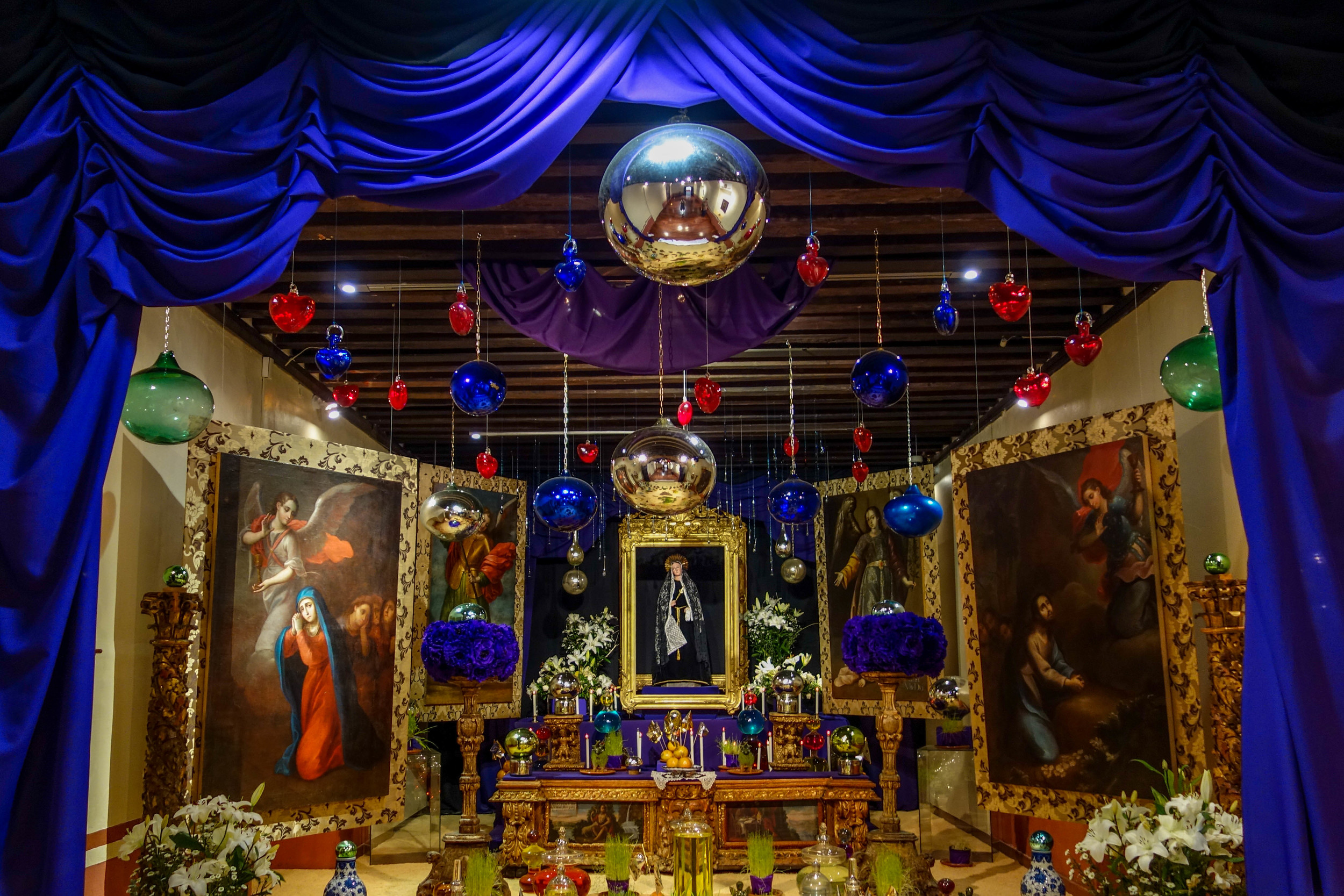
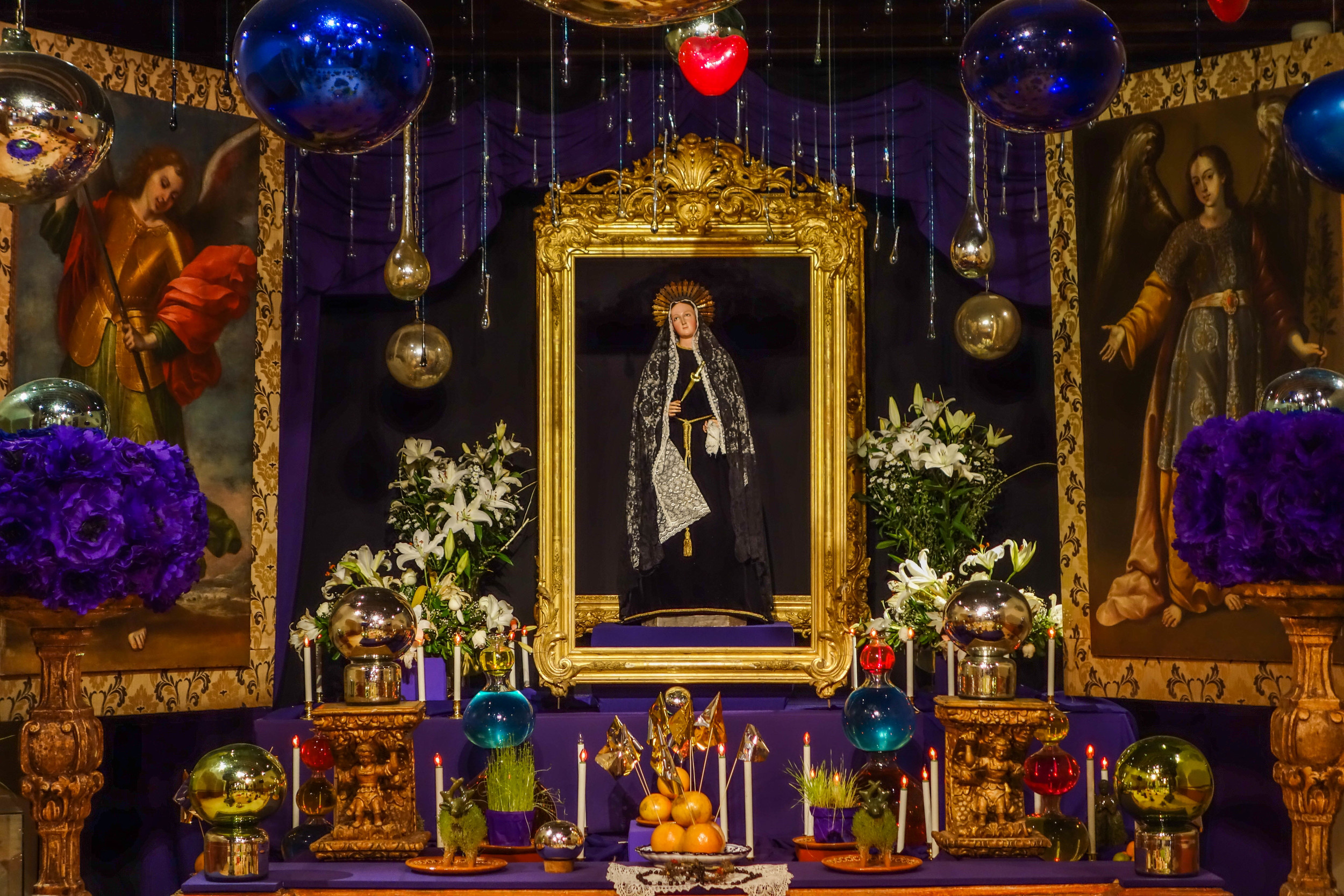
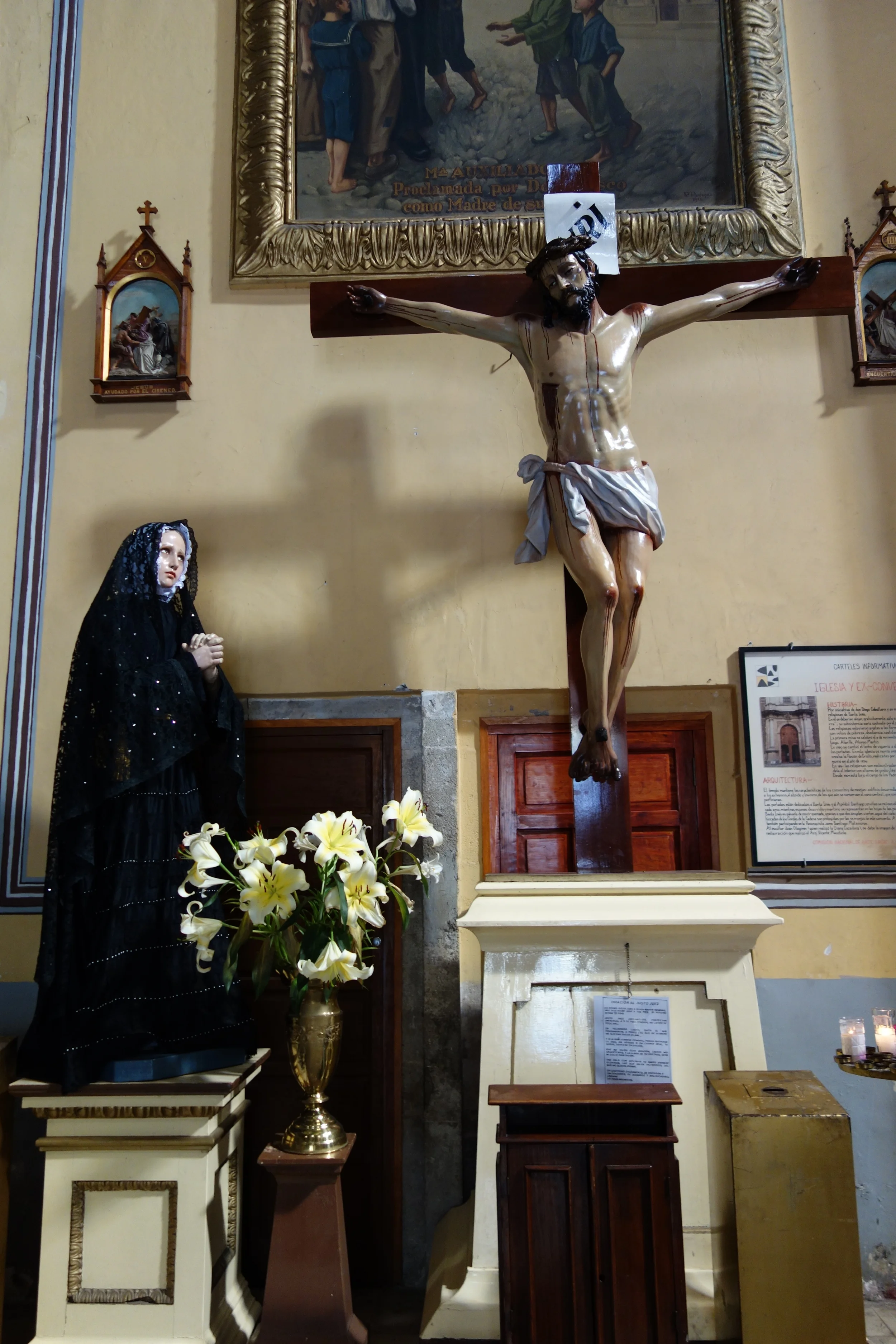

The (Not Really So Very) Incorrupt Corpses
Originally published on the Order of the Good Death blog.
People ask me about incorrupt corpses at parties. I think that’s probably why I’m an Order member now. After a drink or two, some nice, normal person will pull me aside and ask me about an incorrupt saint they saw on vacation. Usually they were touring some gorgeous old church in Europe when they noticed a musty old corpse on display in between the Caravaggios and gilded putti. The guidebook said it was an incorrupt saint whose body never decomposed, but it sure looked a little… off.
By the time they start describing the saint’s waxy skin or shriveled hands, I see them start to study me. They hesitate. They look for confirmation that I’m a skeptic before they go on. When they saw the body, they knew it was a holy thing but right now the only words coming to mind would also describe a sideshow freak. Fortunately they don’t need to worry about me. I’m not going to hit anyone’s knuckles with a ruler for a little irreverence. I’m excited people are interested in this stuff. But I do think that the impulse to judge incorruptibles as simply real or fake is a fear-based response. If there’s a sucker born every minute, no one really wants to think it might be them so people approach the glass casket automatically looking for a con job.
What I can tell you from my own experience is that it helps to leave that fear of being a sucker behind for a minute. I’m not saying that you have to be a true believer to understand incorruptibility, but it helps to approach these bodies knowing that the people who care for them and interact with them aren’t carnival barkers trying to put one over on you or chumps worshiping fakes straight out of Madame Tussaud’s.
One of the problems is that most people judge these bodies based on photos or one quick viewing. Not many people get a chance to talk to the people who know the bodies best. The picture at the top is St. Paula Frassinetti and I. My tour guide that day was a nun at the convent St. Paula founded. She was also the one who insisted we take this picture. (I’m normally anti-corpse-selfie.) She was very open about the history of the body so there wasn’t any denial about its current condition or past treatments. Yep, incorruptibles get treatments (like a corpse spa) and it’s no big secret.
Now obviously St. Paula doesn’t look incorrupt anymore. The period when she truly didn’t show any signs of decay ended shortly after she was moved to a new tomb in the convent’s chapel, about twenty-four years after her death. After that, her body began to deteriorate so acid was applied to help preserve her. That wound up marring her skin, but at least left St. Paula intact so the nuns could continue to display her.
As you’ll see, this is a pretty typical case of incorruptibility. My guide went on to tell me that one time the convent’s handyman moved the saint’s body and she was able to see that it was still flexible. Interestingly, “flexible” is probably the most common word associated with incorrupt corpses, not “lifelike”. At its core, incorruptibility only means that the body was left in a state that should have lead to putrification, or the liquefaction of guts, but didn’t. It happens without a scientific explanation so embalmed bodies, mummies, cases of human saponification, and bog bodies are out. There’s also partial incorruptibility, where some organs putrefy and others, usually the obviously symbolic ones, don’t- like St. Vincent de Paul’s heart.
The fact that incorruptibility hinges on putrification is particularly significant if you remember the putridarium. If rotting in the parish crypt was a big metaphor for punishment in purgatory, incorrupt saints seem to say, “Thanks but we don’t need any time in purgatory. We’re literally all good.” That’s why St. Paula’s order is so eager to preserve and display her body. Just like public ossuaries, incorrupt saints are seen as physical manifestations of souls in heaven. But like icons and relics, the bodies are only miraculous in the sense that miracles are attributed to their veneration. According to Church doctrine, incorruptibility alone can’t be counted as a miracle anymore. More sophisticated scientific explanations as well as mistakes found in hundreds of years of preservation records have forced the Church to reconsider which saints deserved the title in the first place. But even if it’s not miraculous, incorruptibility won’t seem to, well, rot away.
When a body is exhumed like St. Paula’s was, it’s usually because sainthood seems likely and the church wants to move the body to a more prominent place. During the move, clergy members inspect the remains to make sure they have the right person and maybe cut off a few piece to use as portable relics. This is how most incorruptibles are found. At the time of inspection, an incorrupt corpse is expected to be pliable and whole and look more or less like the day it was buried despite any damage to its shroud, burial clothes or coffin. A lot of times you’ll hear reports of a sweet floral smell coming from the corpse called the odor of sanctity. In some cases, the condition of the body is actually said to improve. The massive axe wound that killed St. Josaphat allegedly healed after his death. But what’s confusing is that even if the body is deemed incorrupt, the pristine state it’s in during the inspection usually isn’t permanent.
In the past, deterioration of incorrupt corpses could be attributed to exposing the body to bad air. According to a team of modern paleopathologists from the University of Pisa, that’s actually not too far from the truth. With the Vatican’s support, the team studied microenviornments in the former tombs of incorrupt corpses. They discovered that small differences in temperature, moisture, and construction techniques lead to some tombs producing naturally preserved bodies while others in the same church didn’t. Now you can debate God’s role in choosing which bodies went into which tombs before these differences were known, but I’m going to stick with the corpses. Once the incorrupt bodies were removed from these climates or if the climates changed, they deteriorated. This may have been what happened to St. Francesca Romana who was deemed incorrupt four months after her death in 1440 only to be found fully skeletonized in 1698 (though you still hear people refer to her as incorrupt).
Human interference factors into the decay of incorruptibles as well. St. Catherine of Bologna’s skin turned black from all the candles and oil lamps burning in her shrine. It’s also pretty common to hear about people trying to preserve a corpse’s incorrupt state, only to have it backfire. While St. Paula survived her acid bath in one piece, St. Julian Eymard’s body was accidentally destroyed by a similar treatment using carbolic acid. What’s left of him is now encased in a completely terrifying wax effigy that shows him wide-awake inside a casket.
The use of wax as an artist’s medium invites even more confusion and misunderstanding when it comes to the incorrupt. There are thousands of wax effigies in Catholic churches. Some have relics inside them, others don’t, and maybe a few hundred are fully incorrupt corpses wearing wax masks. (The Vatican doesn’t take roll call so no one knows how many incorrupt saints there are in the world.) The style of waxwork ranges from detailed portraits like the one on Blessed Anna Maria Taigi to more minimalist, monochromatic coverings. Unless you know who’s who, it can be impossible to tell effigies from bodies.
In other cases, the coverings are more obvious. You’ll see masks made of metal, like this one worn by Pope St. Pius V or saints entombed and represented by a sculpture showing how they were found, like this famous one of St. Cecelia. Conceptually, these covers are the same as wax masks. It’s just that wax mimics flesh so well that portraiture gets conflated with trickery particularly in churches that don’t have much information available.
But seriously, no one is trying to trick you or pretend that these bodies look like they just laid down for a nap. So go ahead, describe that incorrupt corpse as wax-covered or mummified. It’s cool. In fact, you might be surprised by how much skeptics would agree with the little old nuns who live with them, at least when it comes to the physical corpses.
Sources:
Christian Mummification: An Interpretative History of the Preservation of Saints, Martyrs and Others by Ken Jeremiah
The Mummy Congress: Science, Obsession, and the Everlasting Dead by Heather Pringle
The Incorruptibles by Joan Carroll Cruz


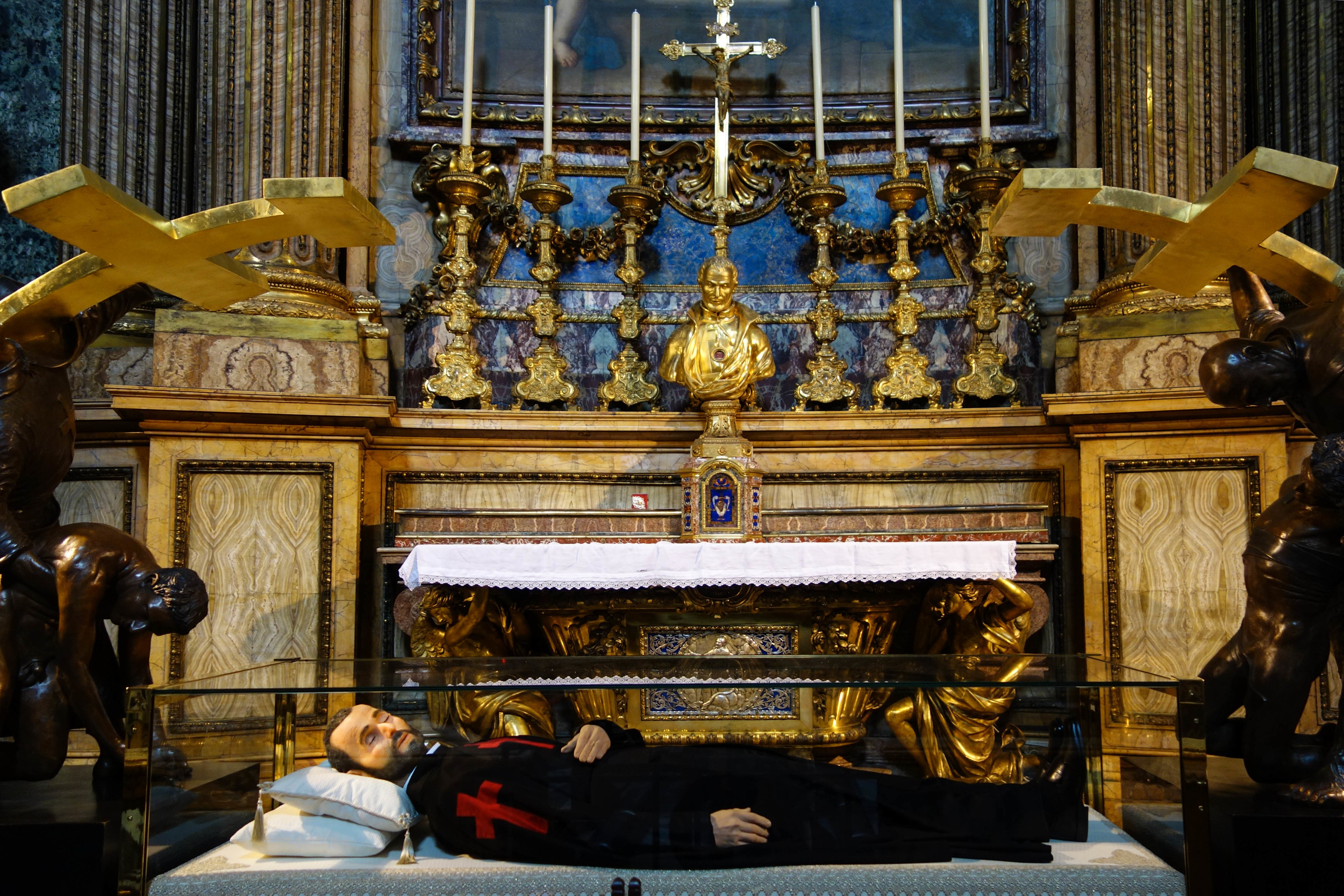





The Measure of Things
I’ve written a lot of different types of nonfiction but this is a new one. Recently my friends asked me to write a reading for their wedding. It might be one of my favorite things I’ve written and I wanted to share it (albeit with their names changed for privacy). Naturally it incorporates history, a photograph, and church architecture…
The Measure of Things
Last Christmas, I was walking around Barcelona, using up all of my data because Jack was walking around Paris with a ring in his pocket. I was waiting to hear the news. Refresh. Refresh. Refresh.
It was during one of these waiting-days that I stumbled on the chapel of St. Lucy in the Gothic District. For what it’s worth, St. Lucy is the patron saint of light and clear thinking. The chapel was built in 1257 and it is one of the oldest surviving churches in the city. Its façade is pockmarked from civil-war shrapnel and its corners are soft from millions of hands touching history. It was dignified in its sturdy, Romanesque construction and had a perfectly symmetrical design, except for a strange carving– a beveled edge on the western corner carved 14 and ½ bricks high. This bevel was a medieval unit of measurement in the old marketplace. It had no name but it represented one.
Measurements aren’t rational things. We pretend they are but at the end of mathematics and reason, measurements are simply a value that two people agree on. This much is permanent. This will be enough. This equals one.
I photographed the bevel, because on that day I saw in stone what I had heard Jack describe in Tabitha: a new unit he had chosen to measure all things of value. What is intellect: one (Tabitha). What is beauty: one (Tabitha). What is love… It was clear to me that he had carved this measurement in stone.
This measurement (which is being ratified today) is like all units. It is irrational and untranslatable. But there is no more-perfect inch nor any improvement that could be made to the meter. There is only our private measure of things; perfect units to build with together from now on.
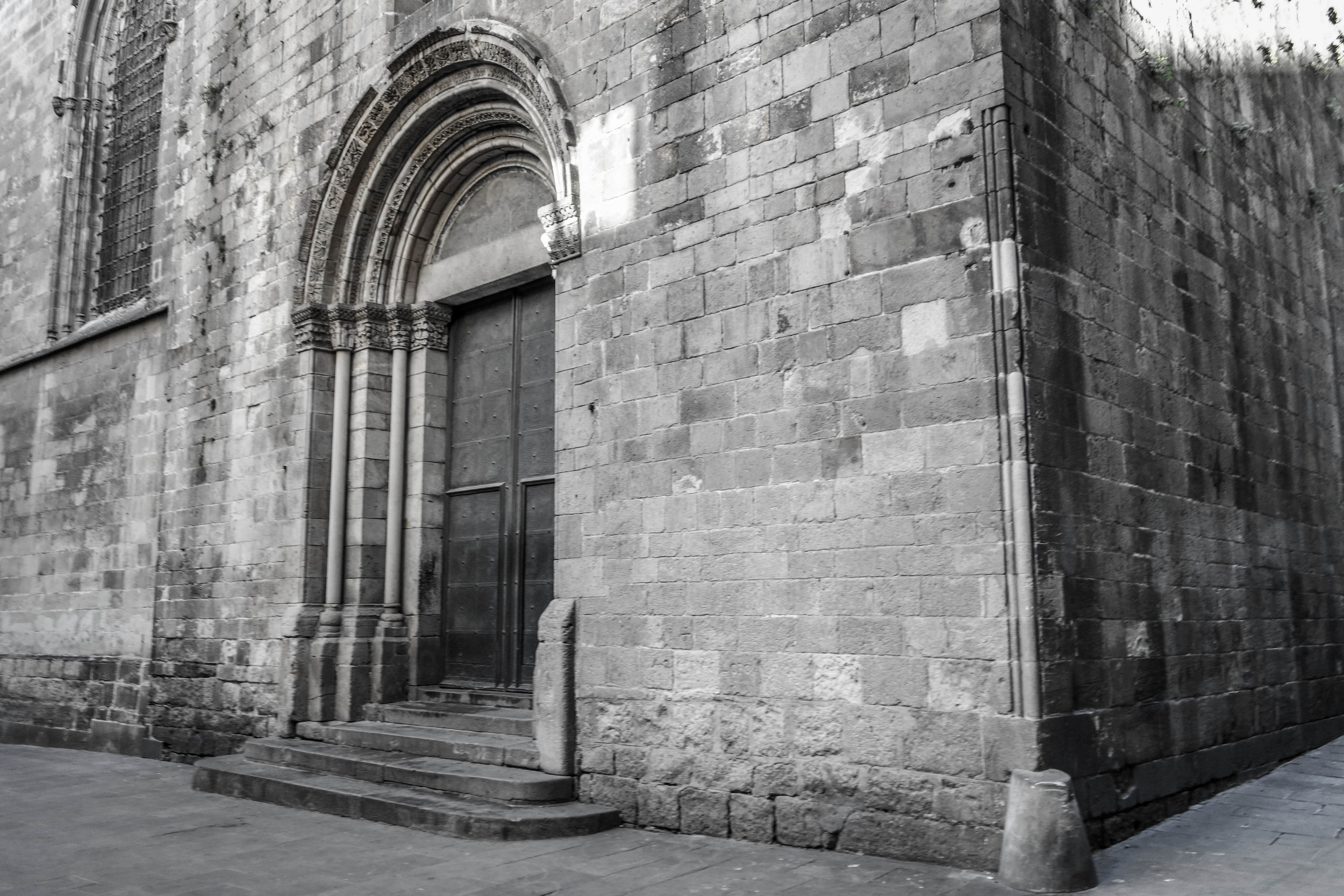
The Saint and The Satanist
Lately I’ve been particularly interested in female saints from the Middle Ages. These women were looking for a way to be both holy and female during a time when the female body was assumed to be an inherent source of evil. So to express their religiosity, they brought their (presumably sinful) bodies to the brink of death, without stepping over the line and committing suicide. They talked directly to God through mystical experiences because they were cloistered away from the majority of church functions. Without a way to participate in their religion, they devised a path to holiness that was completely contained within themselves.
But it wasn’t always like that. One of the radical tenets of the early Christian church was the inclusion of women and that sentiment carried through early Catholicism. Before the Carolingian rulers imposed stricter regulations on religious orders, holy women were expected to have a public role. They could take on high-profile leadership positions in their communities and even operate as international diplomats, petitioning kings for peace. This is the world of St. Genevieve, who was born some time around 420.
St. Genevieve is the patroness of Paris. Her image is a bit less striking than the decapitated patron St. Denis, but if you look for her, you’ll find her in the architecture and stained glass of the city as well. And who better to represent Paris? You can learn an incredible amount about the history of the city just by following her life and relics.
Genevieve spent most of her life as a nun in Paris. She took at active role around the city to decidedly mixed results at first. Some thought she was a saint, others a bit of a nut (or even wanted her killed, which is what you did with nutty women back in the day). All this changed when Attila and his Huns began marching straight for Paris. People panicked and threatened to flee but Genevieve convinced them to stay and pray. Miraculously, Attila took a turn for Orléans. (To their credit, the people of Orléans don’t seem to hold this against Genevieve.) Later, she took an even more active role- passing through enemy lines during a siege to deliver food and successfully bargaining with kings to show mercy and release prisoners of war.
After her death she was buried in the abbey Clovis built for her in Paris. From there, like the bodies of most saints, she certainly stayed active. In 847 the Vikings sacked her abbey, which was rebuilt in 1177 after her relics stopped a plague of ergot poisoning in 1129. In 1222, the pope decided that the abbey was too small to accommodate all the pilgrims and the site required a full church. Work began on St. Ètienne-du-Mont, the future home of St. Genevieve’s relics, though originally named for and dedicated to St. Stephen. With the establishment of the Sorbonne nearby in 1257, the population in the Latin Quarter grew rapidly, so they just kept adding on to the church. It was finally completed in 1537.
Skip to 1744 when Louis XV becomes seriously ill during the War of Austrian Succession. He vows that if he recovers, he’ll build a church worthy of the patroness of Paris to replace her original abbey (which by now is falling apart). He recovers and makes good on his promise. Work begins on a building just across the street from St. Ètienne-du-Mont- the building that’s now known as the Pantheon. The grand church is completed in 1790, just in time for the French Revolution. The following year it secularizes, as does St. Ètienne-du-Mont, which becomes the Temple of Filial Piety. In 1793 St. Genevieve’s relics are publically burnt at the Place de Grève. By 1801 St. Ètienne-du-Mont is restored to the Catholic Church. What’s left of St. Genevieve’s relics, some dust and the stone her coffin rested on, are enshrined in their current location there. The Pantheon flips back and forth between the church and state a few more times before finally settling as a secular crypt for French luminaries in 1885.
Both buildings are worth visiting today. Over at the Pantheon you can see the tombs of Voltaire, Rousseau, Zola, Hugo, Monnet, Dumas and the Curies (just to name a few) as well as an exact replica of Foucault’s pendulum. Across the street at St. Ètienne-du-Mont, you can visit the remaining relics of St. Genevieve as well as the tombs of Pascal and Racine. When you walk in, the fist thing you’ll notice is the magnificent double spiral staircase carved in stone. This architectural feature is called a jubé and it’s the very last of its kind in Paris.
There’s one additional bit of lore about St. Ètienne-du-Mont that you won’t find in the guidebooks but it’s too good to overlook. On January 3rd, 1857, the Archbishop of Paris, Marie Dominique Auguste Sibour, was assassinated here.
Three years earlier, Pope Pius IX issued a papal bull that formally defined the Church’s views on the Immaculate Conception. Archbishop Sibour upheld the bull and promoted it in Paris. A ne’er-do-well priest named Jean-Louis Verger saw this as the Archbishop promoting idolatry and stabbed him to death as he lead a novena to St. Genevieve. Verger shouted, “Down with the Goddess!” as he killed the Archbishop, a possible reference to both the saint and his stance on the Immaculate Conception.
A former seminarian at St. Sulpice known as Eliphas Lévi supposedly witnessed the bloody incident; though it’s anyone’s guess what brought him to the church that day (or if he was telling the truth about being there in the first place). He had become a well-known Occultist after leaving the seminary. He later reported that Verger approached him before the assassination and asked for a book of spells called Honorius. There, Verger believed he would find a spell powerful enough to conjure the devil. Lévi said he refused.
Verger, for his part, freely admitted to murdering the archbishop and believed he would not be found guilty. He was, in fact, found guilty the very day of his trial. Ever confident, he was certain the Emperor Napoleon III would pardon him. He didn’t and Verger was dead by the end of the month.

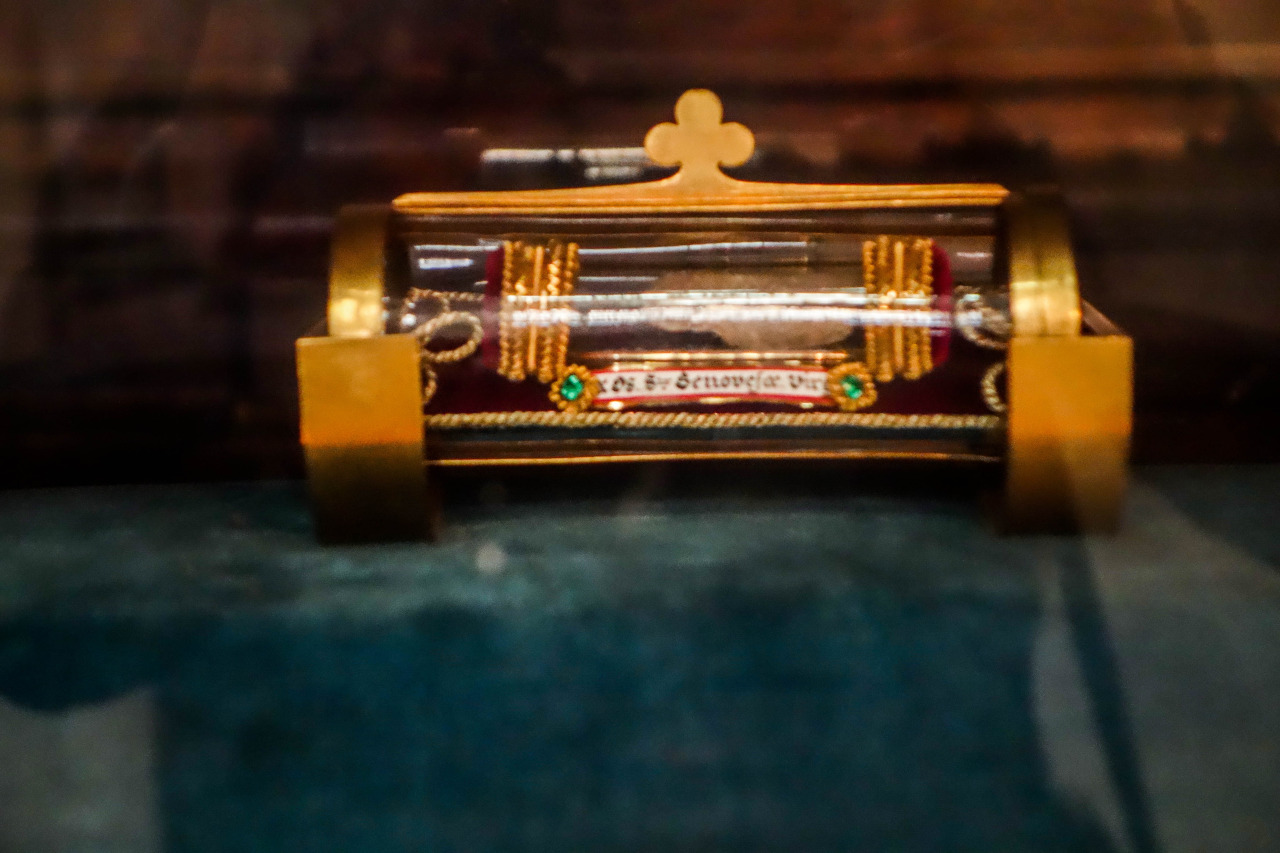
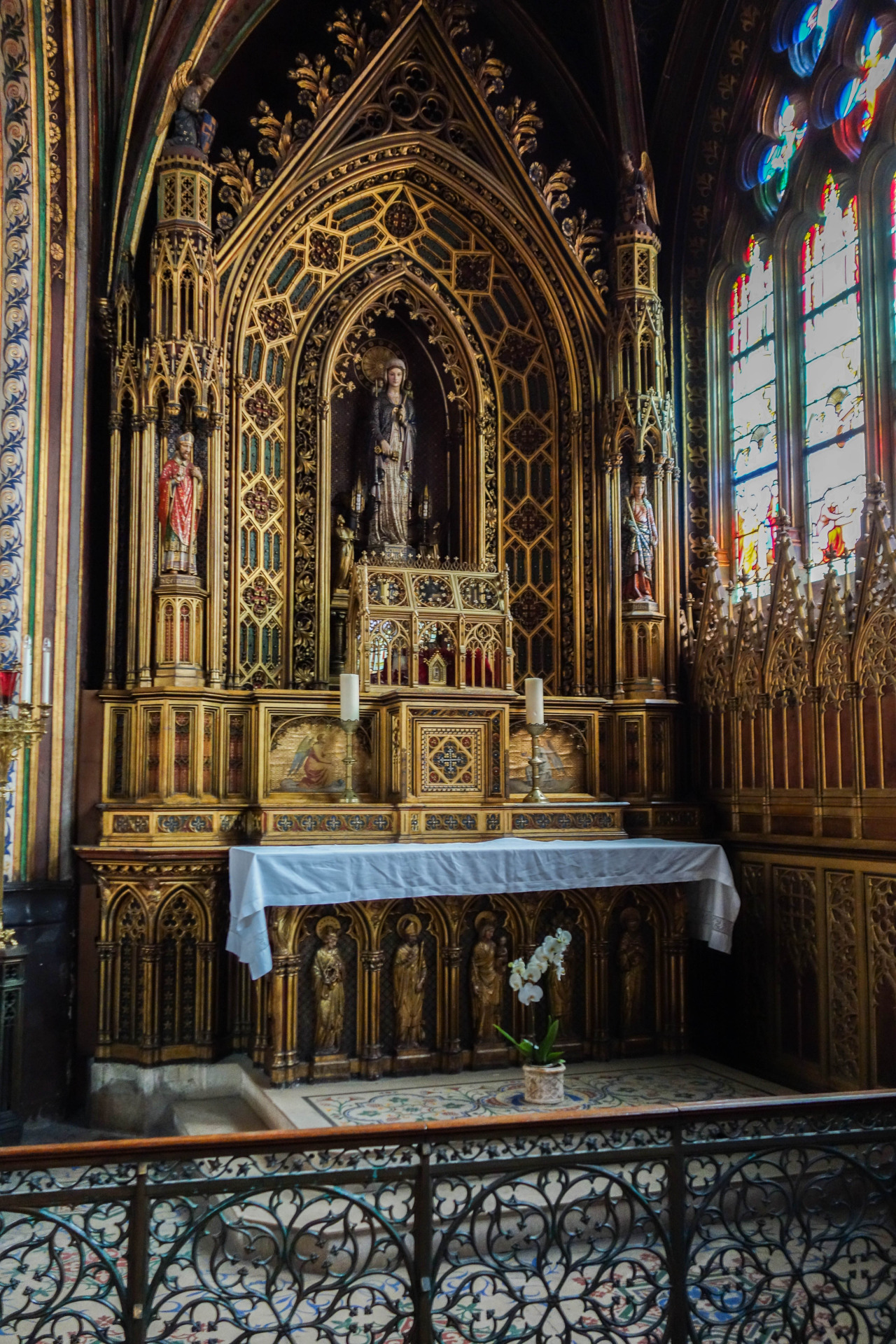
Hurricane Sandy Edition: A Look at Some Saints on Candles Bought at a Bed-Stuy Bodega
This post is a little different. There’s no reliquary, crypt or cathedral to speak of, just an odd-looking votive I bought in a Brooklyn bodega while hastily preparing for Hurricane Sandy.
Usually I write about the physical relics of saints legitimized by the Catholic Church. Their bones are the ones kept in far-away cities, in beautiful churches, in beautiful boxes made of gold and wrapped in velvet for safekeeping. But there’s another side of the Church, particularly in developing nations where, despite her best efforts to appear immutable, the Church is developing as well. This is the realm of folk-saints.
The Catholic Church, as most everyone knows, is no stranger to co-opting the rituals and symbols of other religions in the service of conversion. Some of the early saints are nearly perfect replicas of the Roman gods and goddesses they were meant to replace. In the modern developing world, the Church will also morph and legitimize aspects of indigenous gods in an attempt to win potential converts or squelch cults around the gods if they’re too far outside the norms of the Church.
In this context, Our Lady of Guadalupe was legitimized and folded in to the existing image of the Virgin Mary. Saint Simon of Guatemala however is one that the Church has attempted to squelch.
His original Mayan name was Ma’am, meaning “Great-Grandfather”. Legend has it he came to life after the people from a village plagued by witchcraft carved him out of sacred wood and prayed for relief. They quickly realized Ma’am was a shape-shifter and capable of both good and evil, so they tried to restrain him with string but lost control. He successfully killed all the witches in the village but also occasionally killed young men and women after changing into an attractive member of the opposite sex. So the locals had his legs broken and his head put on backwards. This rendered him unable to do evil but still able to do good.
When Spanish missionaries saw Ma’am’s icons depicting a man tied with string to the heavenly crossroads, they conflated it with a crucifixion other than the crucifixion of Christ and tried to fold him into church doctrine. The priests sympathetic to the Mayans likened Ma’am to Simon-Peter, the crucified apostle, while less sympathetic priests likened him to Judas Iscariot, who hung himself from a tree. Thus spawning the names St. Simon, St. Simon-Judas, and the portmanteau Maximon.
There are still shrines to St. Simon in Guatemala, despite being discouraged by the Church. He’s venerated for good luck, wealth, and male fertility. Gifts to him include cash, cigars, liquor, Coca-Cola, and sausages. Believers drape him with handkerchiefs and ties they wear
While the particulars of his cult may seem odd within the arena of modern Catholicism, Joanna Ebenstein offered more context and insight in a talk about the similarly shunned and maligned Santa Muerte. On the subject of the Mexican folk-saint’s venerators she said:
“[She’s] worshipped by disenfranchised members of society such as criminals, prostitutes, transvestites, the very poor, and other people for whom conventional Catholicism has not provided a better or safer life.”
And this can be said of many fringe folk-saints. Saint Simon included. Right now though, he’s sitting on the mantle with his mainstream brethren (and biblical sister and brother), Sts. Lazarus and Martha, waiting to be called upon while I ride the storm out.
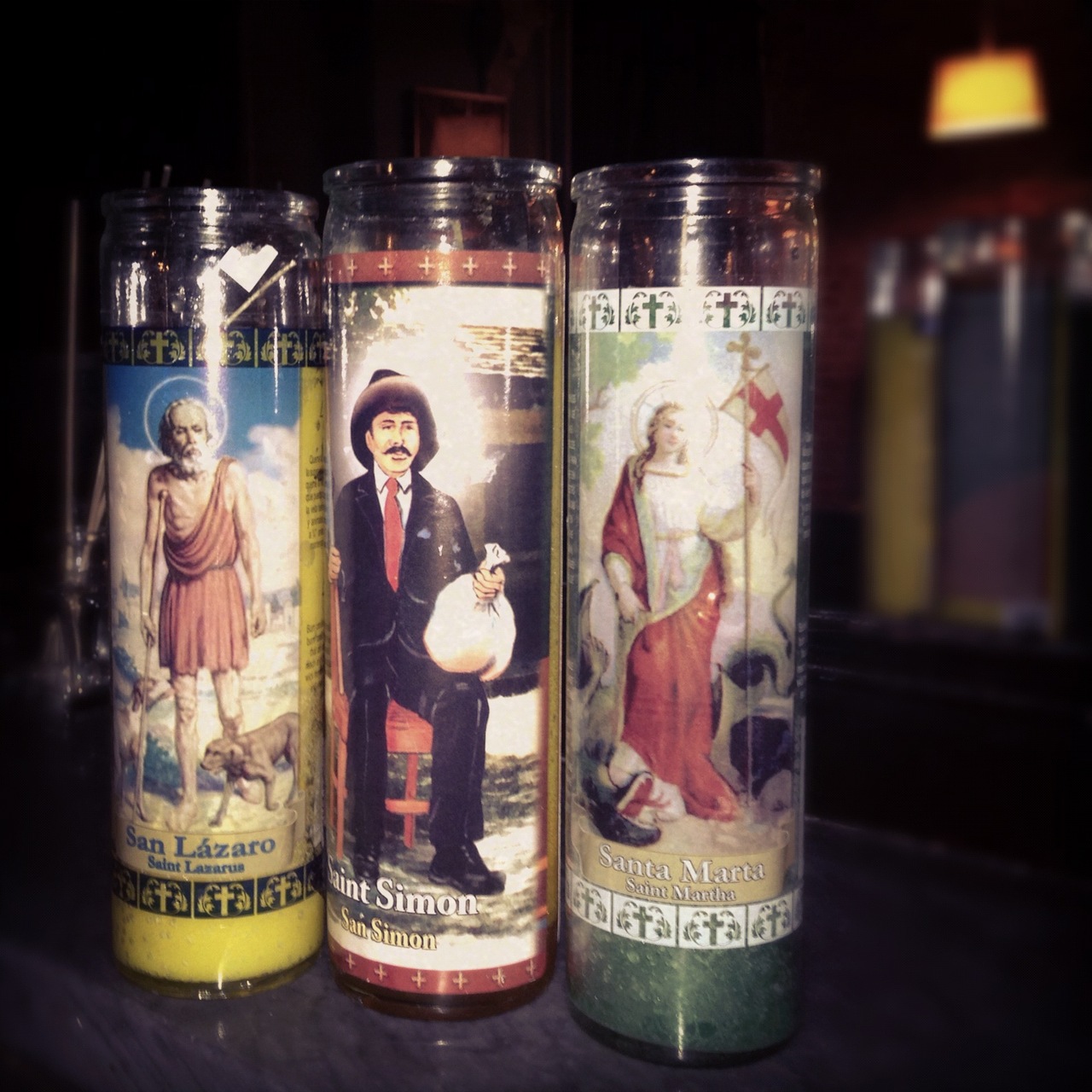
Let's Go to Brno!
Originally published on Atlas Obscura.
The Sedlec ossuary, located just a few hours outside Prague, has been the obvious choice for morbidly curious tourists for a while now. It’s made the viral internet rounds and though the headlines insist “You’ll Never Guess What’s Inside this Church.” I bet if you’re reading this you probably can.
It’s bones.
Tons. And tons. Of human bones.
The fact that it’s all over the internet doesn’t diminish its eerie beauty. But maybe you macabre hipsters want to find a more obscure destination. (No judgment, I get it.) Or maybe you’re concerned that the recently announced restoration of the ossuary will diminish its impact. (It will remain open but parts may be in disarray since the massive bone pyramids will have to be dismantled and re-built.) Either way, let me suggest an alternate Czech day-trip "deathstination": Brno.
Though no one has fashioned the skeletons of Brno into chandeliers, coats-of-arms, or chalices, there are 50,000 of them, all in the ossuary under the Church of St. James. Though 50,000 people puts it well behind the Paris catacombs, which houses about six million bony folks, it’s still enough to make it the second largestossuary in Europe. Its inhabitants succumbed to cholera, the plague, and injuries sustained in the Thirty Years War and Swedish Siege.
Though the bodies may be old, it’s a relatively new tourist destination. The ossuary was forgotten for hundreds of years, then rediscovered during church renovation work in 2001. It was only able to open its doors to the public in June of 2012 after an extensive restoration.
A few skeletons in the ossuary remain intact in glass caskets, but the majority are disassembled and arranged in architectural features according to bone type — a staircase of skulls or a column of femurs. While this is initially disconcerting, the vastness and anonymity of these building-block bones eventually numbs the sense of individual loss. For a more personal experience with the dead, you can take a 10-minute walk across the Cabbage Market to the Capuchin crypt.
The Capuchin order is known for creating two of the most spectacular crypts in Italy: the crypt in Rome where decomposing monks lean out of niches built in bone, and the catacombs full of dapper mummies in Palermo. Though the crypt in Brno is smaller than both, it doesn’t disappoint. The cool, dry air and particular ventilation accidentally preserved bodies that were intended to rot naturally. The friars clutch rosaries or crosses in their mummified hands. Their bodies are humbly stored on the bare ground while their heads rest on bricks. Dignitaries are entombed in proper coffins, but somehow seem less at peace than the monks despite their fancier digs.
It’s said that the contorted features of Isabela Zinsendorf indicate she was accidentally buried alive and woke up sealed inside her coffin. Meanwhile Baron Trenck sports a replacement head inside his casket. Tourists, or one of the many enemies of the Baron, stole the original.
Getting to Brno is simple. You can either take the Student Agency tour bus (which isn’t just for students) or an express train from Prague. It’s roughly a three-hour trip or a two-hour trip from Vienna.
All photos from Wikimedia by Kirk.

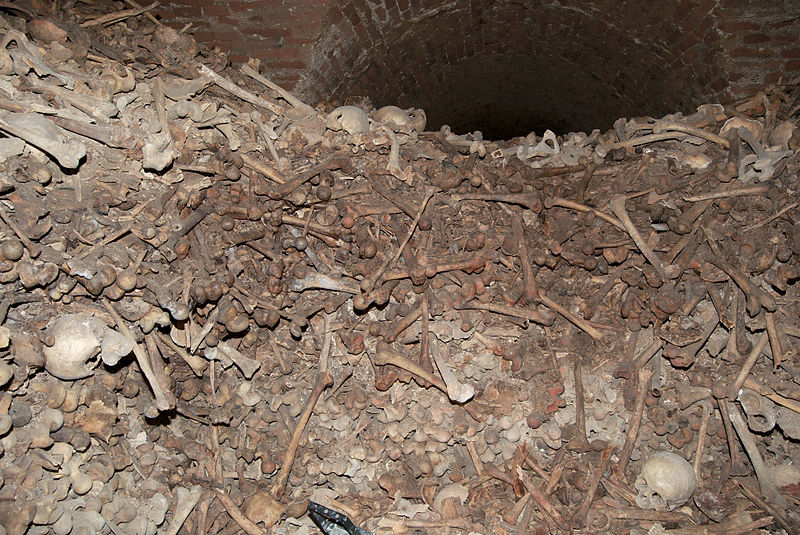
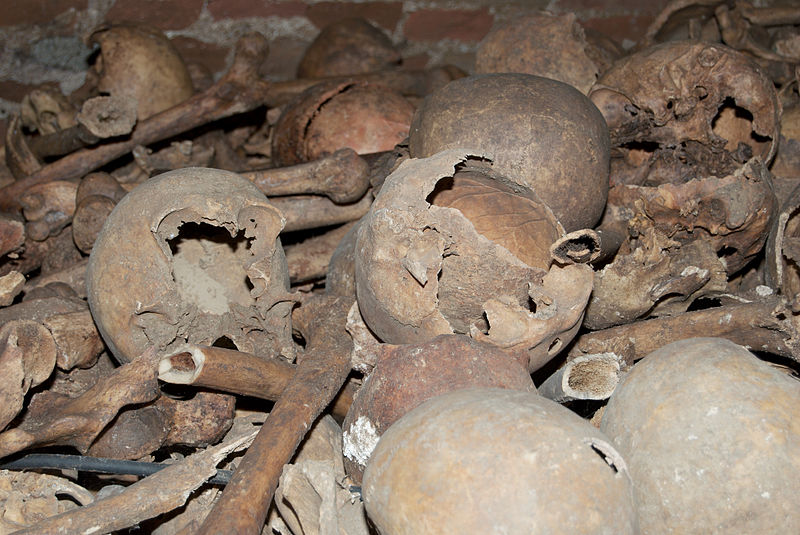

The Saint at Death's Door
Plenty of tourists visit Sant'Andrea al Quinnale. They go to see what I like to think of as the great Baroque dance-off: two rival architects, two masterful jewel-like churches, and two wildly different styles just a few blocks apart. Bernini pops and locks here at Sant’Andrea while Borromini vogues at San Carlo alle Quattro Fontane. Taken together, they make an amazing architectural and artistic experience.
But a lot of people who visit Sant'Andrea for the architecture miss the best part. Sure they all get to see the gilded dome and the marble putti poking their little heads out, but they miss the rooms of St. Stanislaus Kostka, accessible up a staircase to the right if there’s a sacristan on duty.
The life-sized marble effigy of St. Stanislaus can catch you off guard when you walk in. The rooms, while still Baroque, are softer and more personal, especially if you compare them to the church downstairs. This makes the sculpture even more shocking. Stanislaus is depicted as a young Jesuit novice of 18, moments away from death. He died after coming down with a fever and you can almost see the sweat beading up on the stone. The bilious colors of marble are typical of polychrome funerary work in Rome- they’re purposefully sickly and unsettling. Sometimes this particular pose is called trepasso, literally the Italian word for transition. It shows a moment of ecstasy between life and death. It was a favorite of Bernini’s so it’s fitting that this example by Le Gros wound up in his best church.
Since there’s no barrier around the piece, you really get the sense that you’re in the room with the saint and you can examine the sculpture closely. In one hand he holds a small, framed image of the Virgin Mary, in the other a real rosary. Above his head you can see where the painting’s frame has been curiously notched out to accommodate the sculpture which was installed first. Some of his relics and belongings are displayed in a case to the left. It’s one of those rooms that’s so intimate, you feel the need to tiptoe even if there’s no one else there.
Downstairs you can see his relics in a lapis urn, similar to the ones used by fellow Jesuits at Il Gesu.
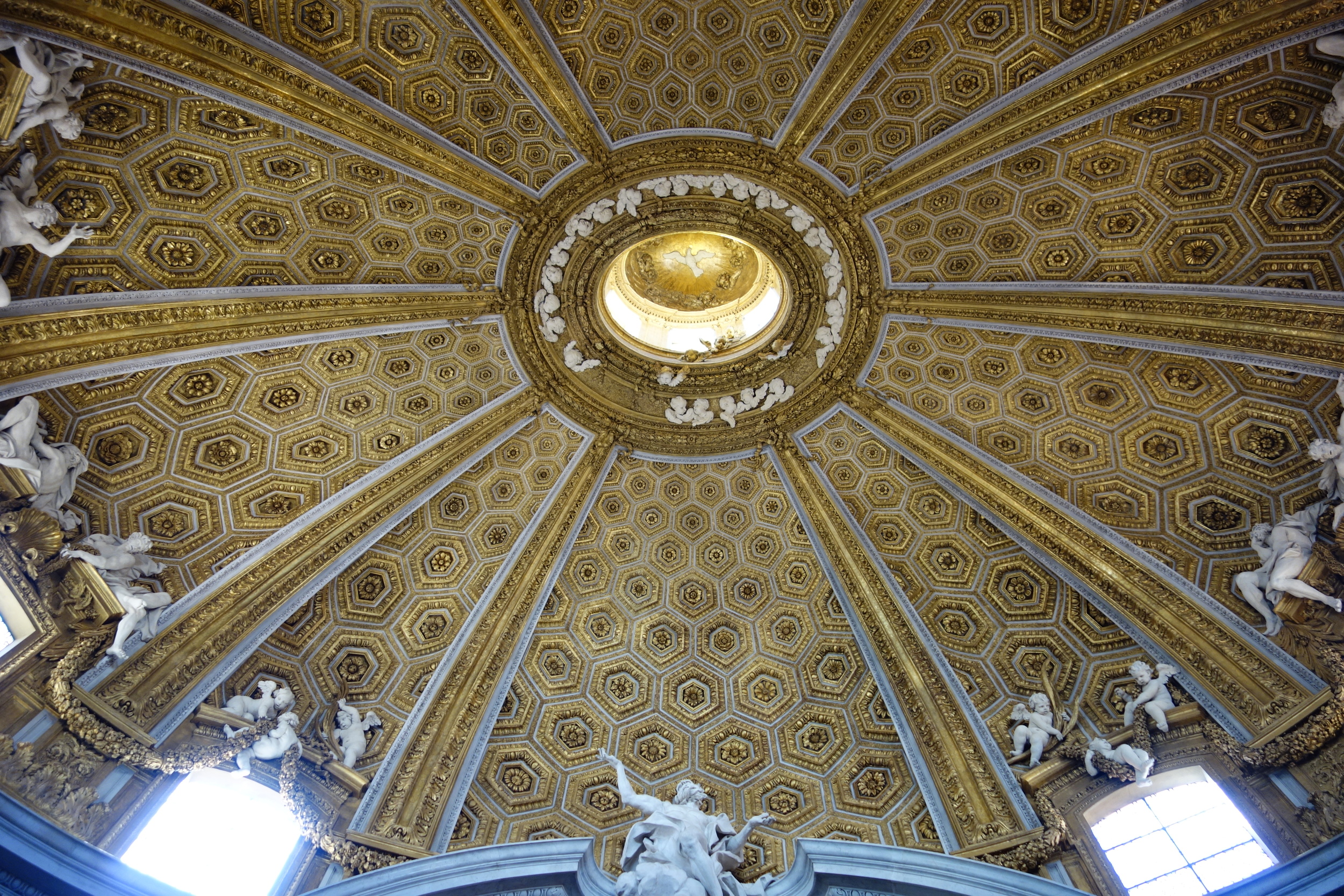
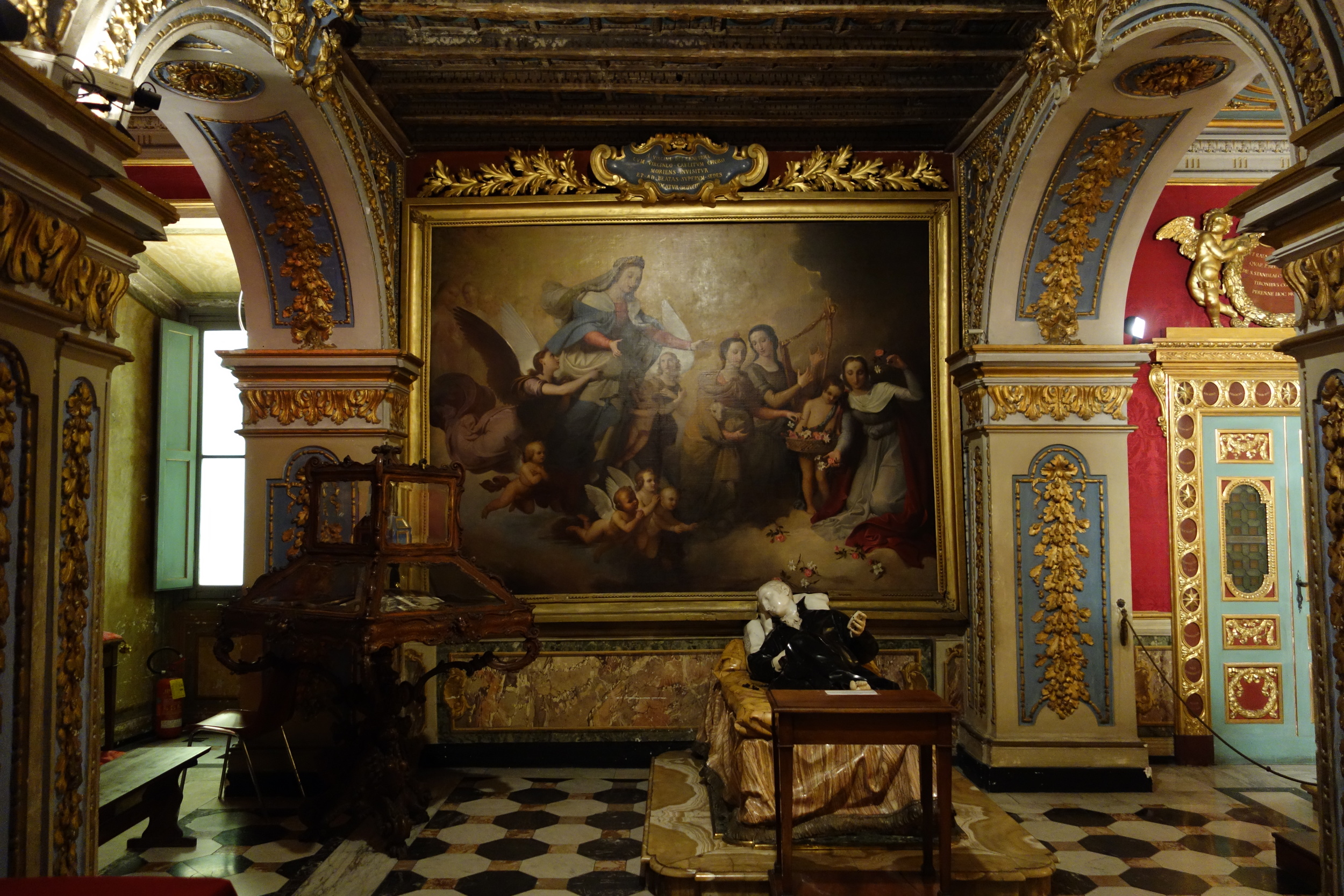
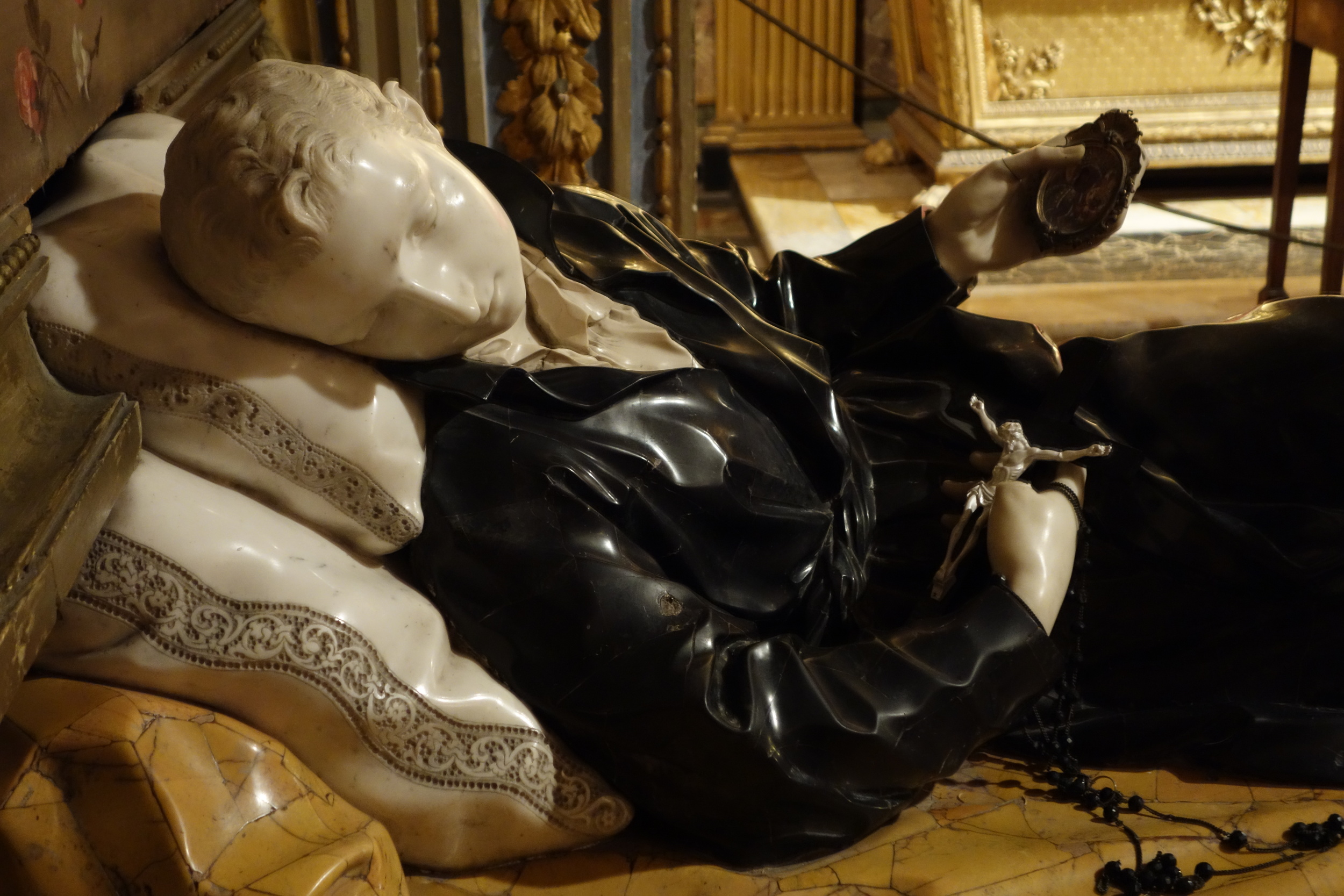
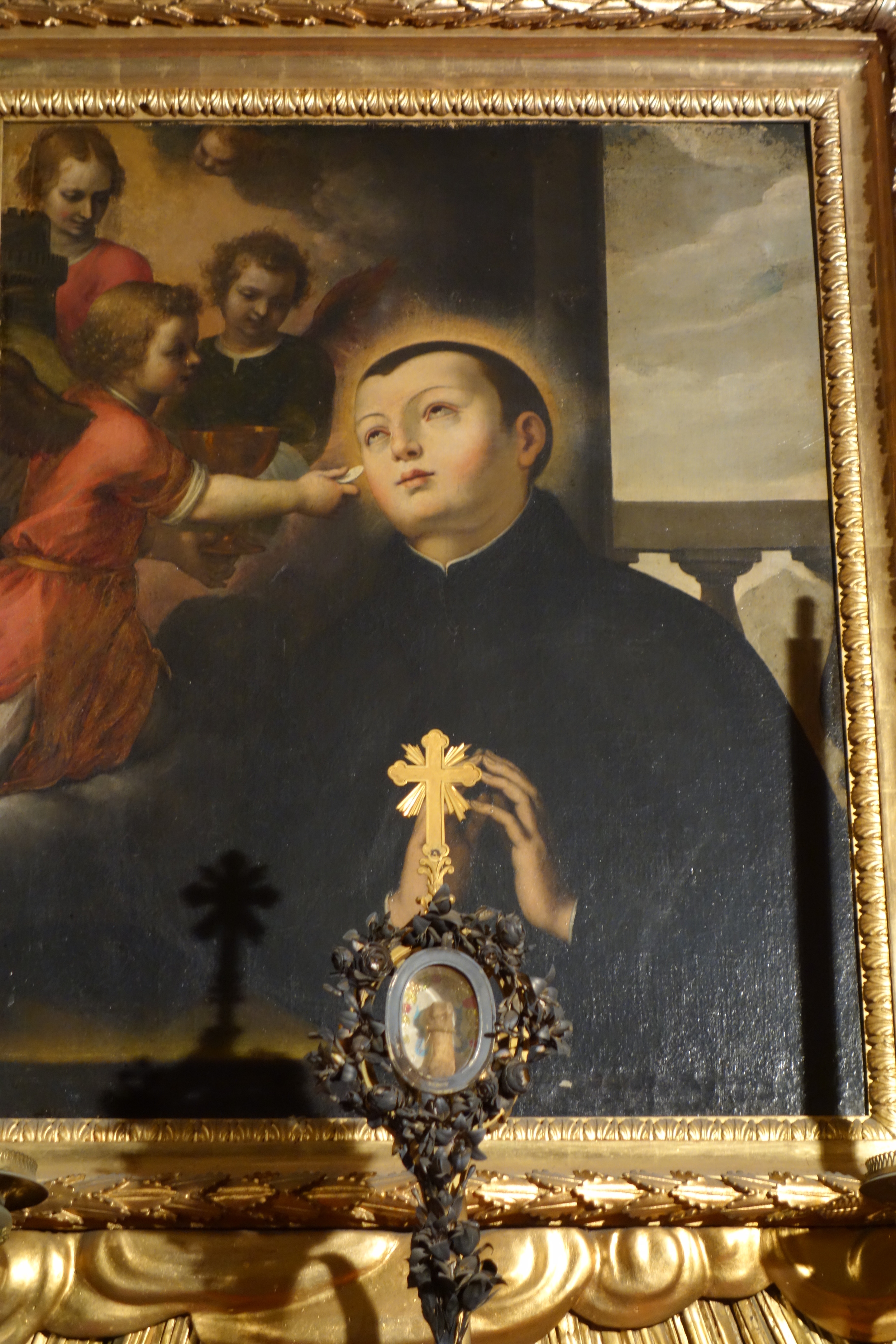

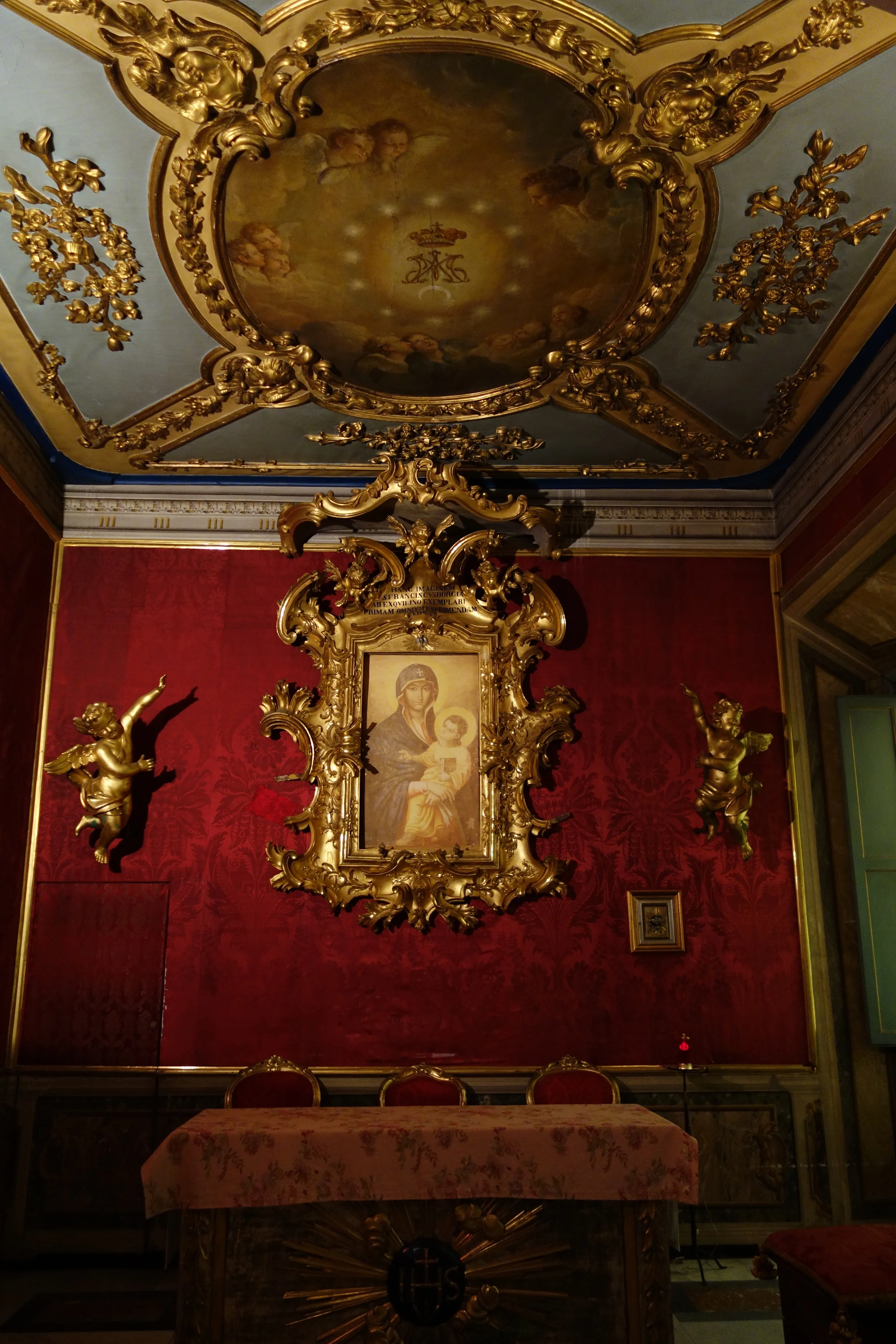
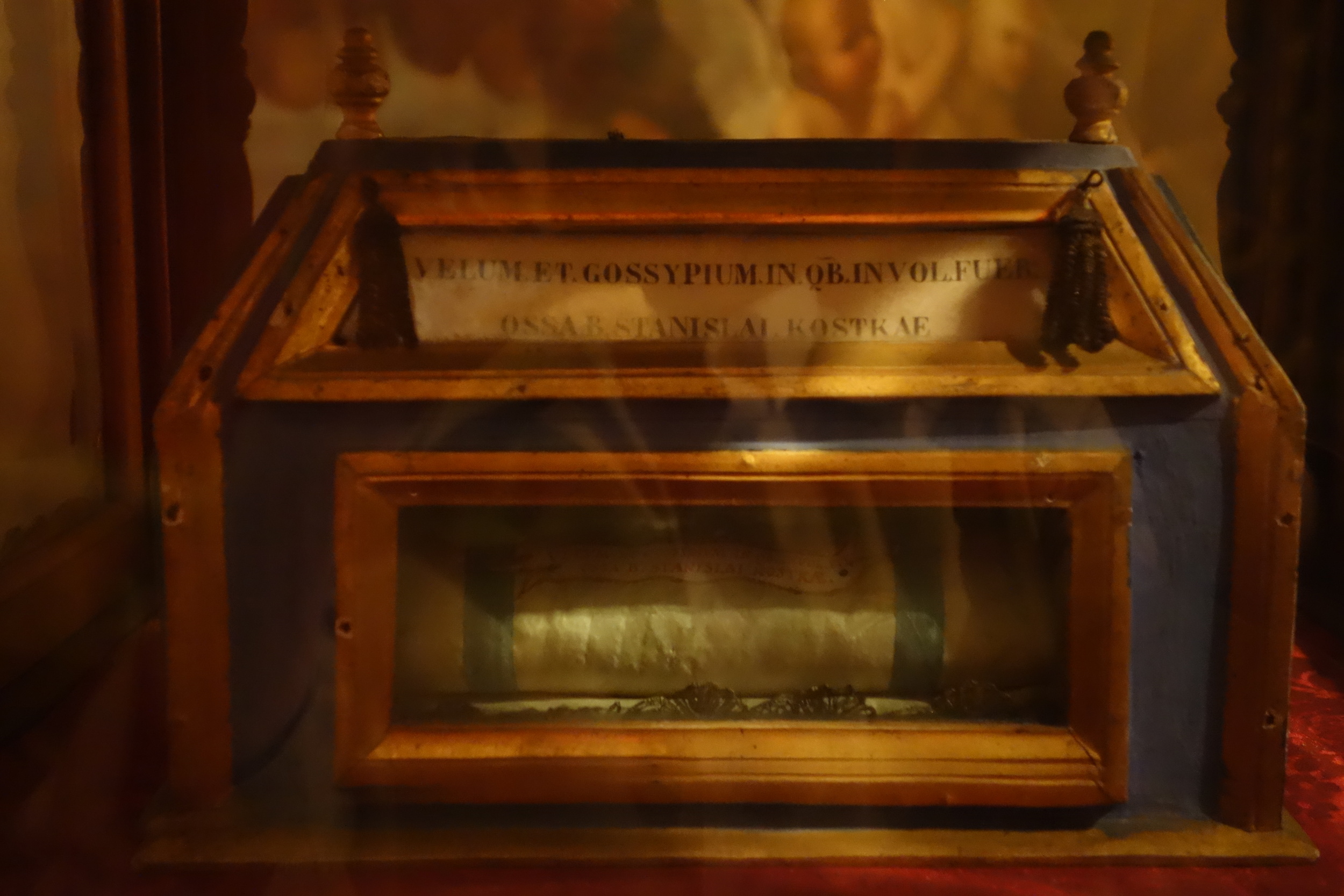
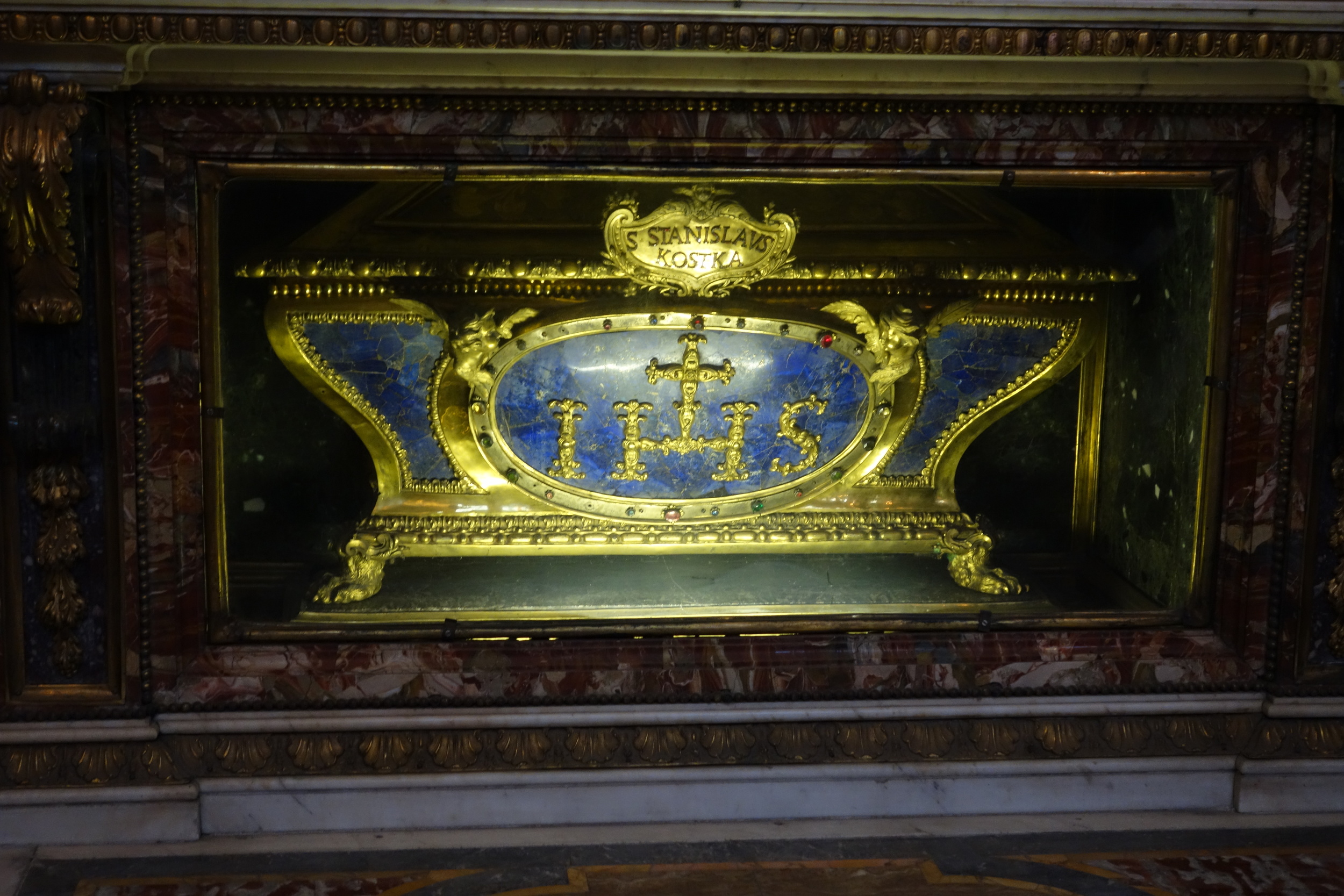
Ruining Christmas







